Tag #effectiveness
1291 papers:
 POPL-2020-Pavlogiannis #performance #predict
POPL-2020-Pavlogiannis #performance #predict- Fast, sound, and effectively complete dynamic race prediction (AP), p. 29.
 ASPLOS-2020-MinBLNK #architecture #named #performance #scalability
ASPLOS-2020-MinBLNK #architecture #named #performance #scalability- CryoCache: A Fast, Large, and Cost-Effective Cache Architecture for Cryogenic Computing (DM, IB, GhL, SN, JK), pp. 449–464.
 ASPLOS-2020-YuanY #concurrent #distributed #testing
ASPLOS-2020-YuanY #concurrent #distributed #testing- Effective Concurrency Testing for Distributed Systems (XY, JY), pp. 1141–1156.
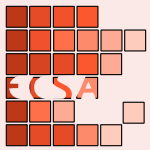 ECSA-2019-Sozer #architecture #clustering #composition #multi
ECSA-2019-Sozer #architecture #clustering #composition #multi- Evaluating the Effectiveness of Multi-level Greedy Modularity Clustering for Software Architecture Recovery (HS), pp. 71–87.
 EDM-2019-JoYKL #analysis #comparative #education #learning #online #word
EDM-2019-JoYKL #analysis #comparative #education #learning #online #word- A Comparative Analysis of Emotional Words for Learning Effectiveness in Online Education (JJ, YY, GK, HL).
 EDM-2019-OwenRTBJKB #detection #education #game studies #persistent
EDM-2019-OwenRTBJKB #detection #education #game studies #persistent- Detecting Wheel Spinning and Productive Persistence in Educational Games (VEO, MHR, KPT, VB, DJ, EK, RSB).
 EDM-2019-YahyaMO #data mining #education #mining #novel #source code #using
EDM-2019-YahyaMO #data mining #education #mining #novel #source code #using- A Novel Use of Educational Data Mining to Inform Effective Management of Academic Programs (AAY, FAM, AO).
 MSR-2019-SerraGPFGB #automation #generative #on the #testing #years after
MSR-2019-SerraGPFGB #automation #generative #on the #testing #years after- On the effectiveness of manual and automatic unit test generation: ten years later (DS, GG, FP, FF, HCG, AB), pp. 121–125.
 SANER-2019-WangWSZ #contract #generative #testing #towards
SANER-2019-WangWSZ #contract #generative #testing #towards- Towards Generating Cost-Effective Test-Suite for Ethereum Smart Contract (XW, HW, WS, YZ), pp. 549–553.
 SANER-2019-ZhangLML #approach #fault #named #network #using
SANER-2019-ZhangLML #approach #fault #named #network #using- CNN-FL: An Effective Approach for Localizing Faults using Convolutional Neural Networks (ZZ0, YL, XM, PL), pp. 445–455.
 SEFM-2019-AraujoCMS #cyber-physical #multi #testing
SEFM-2019-AraujoCMS #cyber-physical #multi #testing- Multi-objective Search for Effective Testing of Cyber-Physical Systems (HLSA, GC, MRM, AS), pp. 183–202.
 FDG-2019-SalterSS #game studies
FDG-2019-SalterSS #game studies- But does pikachu love you?: reproductive labor in casual and hardcore games (AS, MS, AS), p. 10.
 CIKM-2019-ChenLCHT #resource management
CIKM-2019-ChenLCHT #resource management- Cost-effective Resource Provisioning for Spark Workloads (YC, JL, CC, MH, ST), pp. 2477–2480.
 CIKM-2019-GaoLL0 #performance #retrieval
CIKM-2019-GaoLL0 #performance #retrieval- A Lossy Compression Method on Positional Index for Efficient and Effective Retrieval (SG, JL, XL, GW0), pp. 2317–2320.
 CIKM-2019-GershteinMN #e-commerce #named #reduction
CIKM-2019-GershteinMN #e-commerce #named #reduction- ReducE-Comm: Effective Inventory Reduction System for E-Commerce (SG, TM, SN), pp. 2957–2960.
 CIKM-2019-LeHSZ00 #towards
CIKM-2019-LeHSZ00 #towards- Towards Effective and Interpretable Person-Job Fitting (RL, WH, YS, TZ, DZ0, RY0), pp. 1883–1892.
 CIKM-2019-MohantyR #graph #named #towards
CIKM-2019-MohantyR #graph #named #towards- Insta-Search: Towards Effective Exploration of Knowledge Graphs (MM, MR), pp. 2909–2912.
 CIKM-2019-WuWZJ #learning #performance #recommendation
CIKM-2019-WuWZJ #learning #performance #recommendation- Learning to Effectively Estimate the Travel Time for Fastest Route Recommendation (NW, JW, WXZ, YJ), pp. 1923–1932.
 ECIR-p2-2019-Zlabinger #performance
ECIR-p2-2019-Zlabinger #performance- Improving the Annotation Efficiency and Effectiveness in the Text Domain (MZ), pp. 343–347.
 ICML-2019-FrerixB #approximate #matrix #orthogonal
ICML-2019-FrerixB #approximate #matrix #orthogonal- Approximating Orthogonal Matrices with Effective Givens Factorization (TF, JB), pp. 1993–2001.
 ICML-2019-YangZXK #estimation #matrix #named #robust #towards
ICML-2019-YangZXK #estimation #matrix #named #robust #towards- ME-Net: Towards Effective Adversarial Robustness with Matrix Estimation (YY, GZ, ZX, DK), pp. 7025–7034.
 KDD-2019-ChenSJ0Z0 #behaviour #performance #recommendation #reuse #using
KDD-2019-ChenSJ0Z0 #behaviour #performance #recommendation #reuse #using- Effective and Efficient Reuse of Past Travel Behavior for Route Recommendation (LC, SS, CSJ, BY0, ZZ, LS0), pp. 488–498.
 KDD-2019-DeyZSN #named #personalisation #predict
KDD-2019-DeyZSN #named #personalisation #predict- PerDREP: Personalized Drug Effectiveness Prediction from Longitudinal Observational Data (SD, PZ, DS, KN), pp. 1258–1268.
 KDD-2019-KitadaIS #multi #network #predict #using
KDD-2019-KitadaIS #multi #network #predict #using- Conversion Prediction Using Multi-task Conditional Attention Networks to Support the Creation of Effective Ad Creatives (SK, HI, YS), pp. 2069–2077.
 KDD-2019-Lee
KDD-2019-Lee - The Unreasonable Effectiveness, and Difficulty, of Data in Healthcare (PL), pp. 3–4.
 KDD-2019-LiZY #learning #performance
KDD-2019-LiZY #learning #performance- Efficient and Effective Express via Contextual Cooperative Reinforcement Learning (YL, YZ, QY), pp. 510–519.
 KDD-2019-WangLCJ #game studies #learning #performance #representation #retrieval
KDD-2019-WangLCJ #game studies #learning #performance #representation #retrieval- Effective and Efficient Sports Play Retrieval with Deep Representation Learning (ZW, CL, GC, CJ), pp. 499–509.
 MoDELS-2019-GuerraCL #atl #mutation testing #testing #towards
MoDELS-2019-GuerraCL #atl #mutation testing #testing #towards- Towards Effective Mutation Testing for ATL (EG, JSC, JdL), pp. 78–88.
 OOPSLA-2019-Kokologiannakis #model checking
OOPSLA-2019-Kokologiannakis #model checking- Effective lock handling in stateless model checking (MK, AR, VV), p. 26.
 PLDI-2019-FuS #analysis #float
PLDI-2019-FuS #analysis #float- Effective floating-point analysis via weak-distance minimization (ZF, ZS), pp. 439–452.
 ASE-2019-LiW0ZCM #clustering #detection #fault #named #spreadsheet
ASE-2019-LiW0ZCM #clustering #detection #fault #named #spreadsheet- SGUARD: A Feature-Based Clustering Tool for Effective Spreadsheet Defect Detection (DL, HW, CX0, RZ, SCC, XM), pp. 1142–1145.
 ASE-2019-MengZYL0Y #concurrent #detection #named
ASE-2019-MengZYL0Y #concurrent #detection #named- CONVUL: An Effective Tool for Detecting Concurrency Vulnerabilities (RM, BZ, HY, HL, YC0, ZY), pp. 1154–1157.
 ESEC-FSE-2019-ChenHSZHZ #compilation #debugging #generative
ESEC-FSE-2019-ChenHSZHZ #compilation #debugging #generative- Compiler bug isolation via effective witness test program generation (JC, JH, PS, LZ, DH, LZ0), pp. 223–234.
 ESEC-FSE-2019-DeFreezBRT
ESEC-FSE-2019-DeFreezBRT - Effective error-specification inference via domain-knowledge expansion (DD, HMB, CRG, AVT), pp. 466–476.
 ESEC-FSE-2019-GambiHF #generative #self #testing
ESEC-FSE-2019-GambiHF #generative #self #testing- Generating effective test cases for self-driving cars from police reports (AG, TH, GF), pp. 257–267.
 ESEC-FSE-2019-KimHK #composition #debugging #detection #refinement #summary #testing
ESEC-FSE-2019-KimHK #composition #debugging #detection #refinement #summary #testing- Target-driven compositional concolic testing with function summary refinement for effective bug detection (YK, SH, MK), pp. 16–26.
 ESEC-FSE-2019-LiXCWZXWL #adaptation #detection #fuzzing #named
ESEC-FSE-2019-LiXCWZXWL #adaptation #detection #fuzzing #named- Cerebro: context-aware adaptive fuzzing for effective vulnerability detection (YL, YX, HC, XW, CZ, XX, HW, YL0), pp. 533–544.
 ESEC-FSE-2019-SuiZZZX #analysis #android #debugging #difference #reduction #user interface
ESEC-FSE-2019-SuiZZZX #analysis #android #debugging #difference #reduction #user interface- Event trace reduction for effective bug replay of Android apps via differential GUI state analysis (YS, YZ0, WZ, MZ, JX), pp. 1095–1099.
 CASE-2019-DaiYM #multi
CASE-2019-DaiYM #multi- Multi-Robot Work Assignment Methods for Effectiveness Improvement of Deploying Service Robots (JD, HY, TM), pp. 1224–1229.
 FASE-2019-PengR #gpu #kernel #named
FASE-2019-PengR #gpu #kernel #named- CLTestCheck: Measuring Test Effectiveness for GPU Kernels (CP, AR), pp. 315–331.
 ICST-2019-ZhangZHWZ #correlation #pseudo #question #testing
ICST-2019-ZhangZHWZ #correlation #pseudo #question #testing- Do Pseudo Test Suites Lead to Inflated Correlation in Measuring Test Effectiveness? (JMZ, LZ, DH, MW, LZ), pp. 252–263.
 VMCAI-2019-FedyukovichGG #functional #lazy evaluation #synthesis
VMCAI-2019-FedyukovichGG #functional #lazy evaluation #synthesis- Lazy but Effective Functional Synthesis (GF, AG, AG), pp. 92–113.
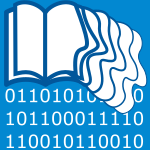 JCDL-2018-Backes #ambiguity
JCDL-2018-Backes #ambiguity- Effective Unsupervised Author Disambiguation with Relative Frequencies (TB), pp. 203–212.
 ICPC-2018-MoranBLP #comprehension #development #mobile #towards
ICPC-2018-MoranBLP #comprehension #development #mobile #towards- Overcoming language dichotomies: toward effective program comprehension for mobile app development (KM, CBC, MLV, DP), pp. 7–18.
 ICSME-2018-RahmanR #code search #crowdsourcing #data analysis #query #using
ICSME-2018-RahmanR #code search #crowdsourcing #data analysis #query #using- Effective Reformulation of Query for Code Search Using Crowdsourced Knowledge and Extra-Large Data Analytics (MMR0, CKR), pp. 473–484.
- ICFP-2018-TabareauTS #for free #parametricity
- Equivalences for free: univalent parametricity for effective transport (NT, ÉT, MS), p. 29.
 VS-Games-2018-OberdorferL18b #game studies #using
VS-Games-2018-OberdorferL18b #game studies #using- Effective Orbital Mechanics Knowledge Training Using Game Mechanics (SO, MEL), pp. 1–8.
 CIKM-2018-FangOMHXY #approach #modelling #topic #twitter
CIKM-2018-FangOMHXY #approach #modelling #topic #twitter- An Effective Approach for Modelling Time Features for Classifying Bursty Topics on Twitter (AF, IO, CM, PH, XX, HTY), pp. 1547–1550.
 CIKM-2018-HanGSA #towards
CIKM-2018-HanGSA #towards- Towards Effective Extraction and Linking of Software Mentions from User-Generated Support Tickets (JH, KHG, AS, MA), pp. 2263–2271.
 CIKM-2018-LuccheseN0TV #performance #query #web
CIKM-2018-LuccheseN0TV #performance #query #web- Efficient and Effective Query Expansion for Web Search (CL, FMN, RP0, RT, RV), pp. 1551–1554.
 CIKM-2018-WicaksonoM #empirical #modelling
CIKM-2018-WicaksonoM #empirical #modelling- Empirical Evidence for Search Effectiveness Models (AFW, AM), pp. 1571–1574.
 CIKM-2018-ZhangAGSCG #interactive #less is more #retrieval
CIKM-2018-ZhangAGSCG #interactive #less is more #retrieval- Effective User Interaction for High-Recall Retrieval: Less is More (HZ0, MA, NG, MDS, GVC, MRG), pp. 187–196.
 ICML-2018-MaBB #comprehension #learning #power of
ICML-2018-MaBB #comprehension #learning #power of- The Power of Interpolation: Understanding the Effectiveness of SGD in Modern Over-parametrized Learning (SM, RB, MB), pp. 3331–3340.
 ICPR-2018-ZhangWGWXL #detection #learning #network
ICPR-2018-ZhangWGWXL #detection #learning #network- An Effective Deep Learning Based Scheme for Network Intrusion Detection (HZ, CQW, SG, ZW, YX, YL), pp. 682–687.
 KDD-2018-0022PYT #algorithm #network #optimisation
KDD-2018-0022PYT #algorithm #network #optimisation- Network Connectivity Optimization: Fundamental Limits and Effective Algorithms (CC0, RP, LY, HT), pp. 1167–1176.
 KDD-2018-HuangZL #adaptation
KDD-2018-HuangZL #adaptation- Cost-Effective Training of Deep CNNs with Active Model Adaptation (SJH, JWZ, ZYL), pp. 1580–1588.
 KDD-2018-HulotAJ #predict #towards
KDD-2018-HulotAJ #predict #towards- Towards Station-Level Demand Prediction for Effective Rebalancing in Bike-Sharing Systems (PH, DA, SDJ), pp. 378–386.
 KDD-2018-NaKY #data type #detection #memory management #named #performance
KDD-2018-NaKY #data type #detection #memory management #named #performance- DILOF: Effective and Memory Efficient Local Outlier Detection in Data Streams (GSN, DHK, HY), pp. 1993–2002.
 KDD-2018-Park0 #graph #named #performance #scalability
KDD-2018-Park0 #graph #named #performance #scalability- EvoGraph: An Effective and Efficient Graph Upscaling Method for Preserving Graph Properties (HP, MSK0), pp. 2051–2059.
 ECOOP-2018-SmaragdakisK #analysis #lazy evaluation #points-to
ECOOP-2018-SmaragdakisK #analysis #lazy evaluation #points-to- Defensive Points-To Analysis: Effective Soundness via Laziness (YS, GK), p. 28.
 PLDI-2018-DuckY #c #c++ #detection #fault #memory management #named #using
PLDI-2018-DuckY #c #c++ #detection #fault #memory management #named #using- EffectiveSan: type and memory error detection using dynamically typed C/C++ (GJD, RHCY), pp. 181–195.
 POPL-2018-GrossmanAGMRSZ #contract #detection #online
POPL-2018-GrossmanAGMRSZ #contract #detection #online- Online detection of effectively callback free objects with applications to smart contracts (SG, IA, GGG, YM, NR, MS, YZ), p. 28.
 POPL-2018-Kokologiannakis #c #c++ #concurrent #model checking
POPL-2018-Kokologiannakis #c #c++ #concurrent #model checking- Effective stateless model checking for C/C++ concurrency (MK, OL, KS, VV), p. 32.
 POPL-2018-MajumdarN #debugging #question #random testing #testing #why
POPL-2018-MajumdarN #debugging #question #random testing #testing #why- Why is random testing effective for partition tolerance bugs? (RM, FN), p. 24.
 ASE-2018-LiuHN #api #recommendation #repository
ASE-2018-LiuHN #api #recommendation #repository- Effective API recommendation without historical software repositories (XL, LH, VN), pp. 282–292.
 ASE-2018-TerragniP #challenge #concurrent #generative #testing #thread
ASE-2018-TerragniP #challenge #concurrent #generative #testing #thread- Effectiveness and challenges in generating concurrent tests for thread-safe classes (VT, MP), pp. 64–75.
 ASE-2018-Traini #distributed #fault #framework #injection #multi #performance
ASE-2018-Traini #distributed #fault #framework #injection #multi #performance- A multi-objective framework for effective performance fault injection in distributed systems (LT), pp. 936–939.
 ESEC-FSE-2018-Tomassi #debugging
ESEC-FSE-2018-Tomassi #debugging- Bugs in the wild: examining the effectiveness of static analyzers at finding real-world bugs (DAT), pp. 980–982.
 GPCE-2018-RulandLBLTLR #product line #testing
GPCE-2018-RulandLBLTLR #product line #testing- Measuring effectiveness of sample-based product-line testing (SR, LL, JB, SL, TT, ML, MR), pp. 119–133.
 CASE-2018-ZubaranR #parallel #scheduling
CASE-2018-ZubaranR #parallel #scheduling- An effective tabu search for job shop scheduling with parallel machines (TKZ, MRPR), pp. 913–919.
 FASE-2018-0012SRYHBRS #analysis #approach #modelling
FASE-2018-0012SRYHBRS #analysis #approach #modelling- Effective Analysis of Attack Trees: A Model-Driven Approach (RK0, SS, ER, BMY, DH, JB, AR, MS), pp. 56–73.
 ICST-2018-AlsharifKM #database #generative #named #performance #relational #testing
ICST-2018-AlsharifKM #database #generative #named #performance #relational #testing- DOMINO: Fast and Effective Test Data Generation for Relational Database Schemas (AA, GMK, PM), pp. 12–22.
 EDM-2017-KaiABSHH #modelling #persistent
EDM-2017-KaiABSHH #modelling #persistent- Modeling Wheel-spinning and Productive Persistence in Skill Builders (SK, MVA, RSB, NS, CH, NTH).
 EDM-2017-ZhuLW0 #automation #framework #generative #ranking #topic
EDM-2017-ZhuLW0 #automation #framework #generative #ranking #topic- An Effective Framework for Automatically Generating and Ranking Topics in MOOC Videos (JZ, XL, ZW, MZ0).
 MSR-2017-NiL #classification #predict #using
MSR-2017-NiL #classification #predict #using- Cost-effective build outcome prediction using cascaded classifiers (AN, ML0), pp. 455–458.
 SANER-2017-FengMYLZX #empirical #fault
SANER-2017-FengMYLZX #empirical #fault- An empirical investigation into the cost-effectiveness of test effort allocation strategies for finding faults (YF, WM, YY, HL, YZ, BX), pp. 371–381.
 CIG-2017-GoudelisTKK #3d #classification #feature model
CIG-2017-GoudelisTKK #3d #classification #feature model- 3D cylindrical trace transform based feature extraction for effective human action classification (GG, GT, KK, SDK), pp. 96–103.
 VS-Games-2017-Troyer #game studies #towards
VS-Games-2017-Troyer #game studies #towards- Towards effective serious games (ODT), pp. 284–289.
 CIKM-2017-CaoZL #approach #approximate #distributed #graph #mining #named #scalability
CIKM-2017-CaoZL #approach #approximate #distributed #graph #mining #named #scalability- PMS: an Effective Approximation Approach for Distributed Large-scale Graph Data Processing and Mining (YC, YZ, JL), pp. 1999–2002.
 CIKM-2017-JiangA17a #adaptation #metric #persistent
CIKM-2017-JiangA17a #adaptation #metric #persistent- Adaptive Persistence for Search Effectiveness Measures (JJ, JA), pp. 747–756.
 CIKM-2017-LiuL #behaviour
CIKM-2017-LiuL #behaviour- Exploiting User Consuming Behavior for Effective Item Tagging (SL, HL), pp. 2175–2178.
 ECIR-2017-HasibiBB #performance #query
ECIR-2017-HasibiBB #performance #query- Entity Linking in Queries: Efficiency vs. Effectiveness (FH, KB, SEB), pp. 40–53.
 ECIR-2017-RoiteroMM #predict #question #topic
ECIR-2017-RoiteroMM #predict #question #topic- Do Easy Topics Predict Effectiveness Better Than Difficult Topics? (KR, EM, SM), pp. 605–611.
 ICML-2017-0007MW #learning
ICML-2017-0007MW #learning- Collect at Once, Use Effectively: Making Non-interactive Locally Private Learning Possible (KZ0, WM, LW0), pp. 4130–4139.
 ICML-2017-MaystreG #approach #exclamation #learning
ICML-2017-MaystreG #approach #exclamation #learning- Just Sort It! A Simple and Effective Approach to Active Preference Learning (LM, MG), pp. 2344–2353.
 KDD-2017-0001YXWY #approximate #named #personalisation #rank
KDD-2017-0001YXWY #approximate #named #personalisation #rank- FORA: Simple and Effective Approximate Single-Source Personalized PageRank (SW0, RY, XX, ZW, YY), pp. 505–514.
 KDD-2017-AgarwalBSJ #evaluation #feedback #multi #using
KDD-2017-AgarwalBSJ #evaluation #feedback #multi #using- Effective Evaluation Using Logged Bandit Feedback from Multiple Loggers (AA, SB0, TS, TJ), pp. 687–696.
 KDD-2017-LiuFMRSX #analysis #internet #process #realtime
KDD-2017-LiuFMRSX #analysis #internet #process #realtime- Effective and Real-time In-App Activity Analysis in Encrypted Internet Traffic Streams (JL, YF, JM, YR, LS, HX), pp. 335–344.
 KDD-2017-ZhangCTSS #learning #multi #named
KDD-2017-ZhangCTSS #learning #multi #named- LEAP: Learning to Prescribe Effective and Safe Treatment Combinations for Multimorbidity (YZ, RC, JT0, WFS, JS), pp. 1315–1324.
 OOPSLA-2017-ZhangGSN #interactive #static analysis
OOPSLA-2017-ZhangGSN #interactive #static analysis- Effective interactive resolution of static analysis alarms (XZ, RG, XS, MN), p. 30.
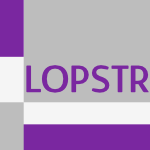 LOPSTR-2017-AlbertGI #concurrent #detection #generative
LOPSTR-2017-AlbertGI #concurrent #detection #generative- Generation of Initial Contexts for Effective Deadlock Detection (EA, MGZ, MI), pp. 3–19.
 ASE-2017-Krishna #learning
ASE-2017-Krishna #learning- Learning effective changes for software projects (RK), pp. 1002–1005.
 ASE-2017-SahaLYP #named #object-oriented #program repair
ASE-2017-SahaLYP #named #object-oriented #program repair- ELIXIR: effective object oriented program repair (RKS, YL, HY, MRP), pp. 648–659.
 ASE-2017-TianDDO #model checking
ASE-2017-TianDDO #model checking- More effective interpolations in software model checking (CT, ZD, ZD, CHLO), pp. 183–193.
 ASE-2017-ToffolaSP #exclamation #generative #mining #testing
ASE-2017-ToffolaSP #exclamation #generative #mining #testing- Saying 'hi!' is not enough: mining inputs for effective test generation (LDT, CAS, MP), pp. 44–49.
- ICSE-2017-RojasWCF #crowdsourcing #game studies #mutation testing #testing
- Code defenders: crowdsourcing effective tests and subtle mutants with a mutation testing game (JMR, TDW, BSC, GF), pp. 677–688.
 FASE-2017-AraujoNN #debugging #on the #predict
FASE-2017-AraujoNN #debugging #on the #predict- On the Effectiveness of Bug Predictors with Procedural Systems: A Quantitative Study (CWA, IN, DJN), pp. 78–95.
 ICST-2017-MarcozziDBKP #specification
ICST-2017-MarcozziDBKP #specification- Generic and Effective Specification of Structural Test Objectives (MM, MD, SB, NK, VP), pp. 436–441.
 ICST-2017-OliveiraFDHS #named #performance #testing
ICST-2017-OliveiraFDHS #named #performance #testing- Perphecy: Performance Regression Test Selection Made Simple but Effective (ABdO, SF, AD, MH, PFS), pp. 103–113.
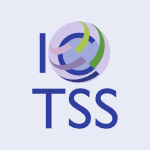 ICTSS-2017-KrafczykP #clustering #equivalence #infinity #model checking
ICTSS-2017-KrafczykP #clustering #equivalence #infinity #model checking- Effective Infinite-State Model Checking by Input Equivalence Class Partitioning (NK, JP0), pp. 38–53.
 VMCAI-2017-AbalBW #abstraction #c #debugging #source code
VMCAI-2017-AbalBW #abstraction #c #debugging #source code- Effective Bug Finding in C Programs with Shape and Effect Abstractions (IA, CB, AW), pp. 34–54.
 ECSA-2016-RostN #architecture #developer #documentation #why
ECSA-2016-RostN #architecture #developer #documentation #why- Task-Specific Architecture Documentation for Developers - Why Separation of Concerns in Architecture Documentation is Counterproductive for Developers (DR, MN), pp. 102–110.
 JCDL-2016-HinzeBCD #library #low cost #metadata #semantics
JCDL-2016-HinzeBCD #library #low cost #metadata #semantics- Low-cost Semantic Enhancement to Digital Library Metadata and Indexing: Simple Yet Effective Strategies (AH, DB0, SJC, JSD), pp. 93–102.
 CSEET-2016-ShutoWKFYO #education #learning #re-engineering
CSEET-2016-ShutoWKFYO #education #learning #re-engineering- Learning Effectiveness of Team Discussions in Various Software Engineering Education Courses (MS, HW, KK, YF, SY, MO), pp. 227–231.
 CSEET-2016-SunagaSWKFYO #learning #question
CSEET-2016-SunagaSWKFYO #learning #question- Which Combinations of Personal Characteristic Types are more Effective in Different Project-Based Learning Courses? (YS, MS, HW, KK, YF, SY, MO), pp. 137–141.
 EDM-2016-ZhangSC #automation #clustering #learning #modelling #student
EDM-2016-ZhangSC #automation #clustering #learning #modelling #student- Deep Learning + Student Modeling + Clustering: a Recipe for Effective Automatic Short Answer Grading (YZ, RS, MC), pp. 562–567.
 ICSME-2016-McCurdyMK #named #reduction
ICSME-2016-McCurdyMK #named #reduction- mrstudyr: Retrospectively Studying the Effectiveness of Mutant Reduction Techniques (CJM, PM, GMK), pp. 591–595.
 MSR-2016-AhmedBCHS #case study #detection #experience #performance #tool support #web
MSR-2016-AhmedBCHS #case study #detection #experience #performance #tool support #web- Studying the effectiveness of application performance management (APM) tools for detecting performance regressions for web applications: an experience report (TMA, CPB, THC, AEH, WS), pp. 1–12.
 MSR-2016-CampbellSH #information retrieval
MSR-2016-CampbellSH #information retrieval- The unreasonable effectiveness of traditional information retrieval in crash report deduplication (JCC, EAS, AH), pp. 269–280.
 SCAM-2016-KintisPPVM #mutation testing #testing #tool support
SCAM-2016-KintisPPVM #mutation testing #testing #tool support- Analysing and Comparing the Effectiveness of Mutation Testing Tools: A Manual Study (MK, MP, AP, EV, NM), pp. 147–156.
 CIKM-2016-FangZWFZZ #algorithm
CIKM-2016-FangZWFZZ #algorithm- Cost-Effective Stream Join Algorithm on Cloud System (JF, RZ0, XW, TZJF, ZZ, AZ), pp. 1773–1782.
 CIKM-2016-HanadaPCL #fault #type system #using
CIKM-2016-HanadaPCL #fault #type system #using- Effective Spelling Correction for Eye-based Typing using domain-specific Information about Error Distribution (RH, MdGCP, MC, FAL), pp. 1723–1732.
 CIKM-2016-KargarGS #graph #keyword #named
CIKM-2016-KargarGS #graph #keyword #named- eGraphSearch: Effective Keyword Search in Graphs (MK, LG, JS), pp. 2461–2464.
 CIKM-2016-LiSCS #adaptation #on the #query #rank
CIKM-2016-LiSCS #adaptation #on the #query #rank- On the Effectiveness of Query Weighting for Adapting Rank Learners to New Unlabelled Collections (PL, MS, MJC, FS), pp. 1413–1422.
 CIKM-2016-LiXSM #approach #documentation #topic #word
CIKM-2016-LiXSM #approach #documentation #topic #word- Effective Document Labeling with Very Few Seed Words: A Topic Model Approach (CL, JX, AS, ZM), pp. 85–94.
 CIKM-2016-VieiraSCCM #e-commerce #social #social media #towards
CIKM-2016-VieiraSCCM #e-commerce #social #social media #towards- Towards the Effective Linking of Social Media Contents to Products in E-Commerce Catalogs (HSV, ASdS, PC, MC, ESdM), pp. 1049–1058.
 CIKM-2016-XuK #clustering #performance
CIKM-2016-XuK #clustering #performance- Effective and Efficient Spectral Clustering on Text and Link Data (ZX, YK), pp. 357–366.
 ECIR-2016-YangASCPCGS #retrieval
ECIR-2016-YangASCPCGS #retrieval- Beyond Factoid QA: Effective Methods for Non-factoid Answer Sentence Retrieval (LY0, QA, DS, RCC, LP, WBC, JG, FS), pp. 115–128.
 ECIR-2016-ZhangWWRCS
ECIR-2016-ZhangWWRCS - Supervised Local Contexts Aggregation for Effective Session Search (ZZ, JW, TW, PR, ZC, LS), pp. 58–71.
 ICPR-2016-FengLL #learning #using
ICPR-2016-FengLL #learning #using- Learning effective Gait features using LSTM (YF0, YL, JL), pp. 325–330.
 ICPR-2016-FerrariLBB #3d #recognition
ICPR-2016-FerrariLBB #3d #recognition- Effective 3D based frontalization for unconstrained face recognition (CF, GL, SB, ADB), pp. 1047–1052.
 ICPR-2016-LiuZH #authentication #smarttech
ICPR-2016-LiuZH #authentication #smarttech- An effective voiceprint based identity authentication system for Mandarin smartphone users (JHL, YXZ, YCH), pp. 1077–1082.
 ICPR-2016-NGuyenNC #image #recognition
ICPR-2016-NGuyenNC #image #recognition- Effective surface normals based action recognition in depth images (XSN, TPN, FC), pp. 817–822.
 ICPR-2016-QuLFT #learning #retrieval
ICPR-2016-QuLFT #learning #retrieval- Improving PGF retrieval effectiveness with active learning (JQ, XL, SF, ZT), pp. 1125–1130.
 ICPR-2016-XianXCZD #interactive #named #segmentation
ICPR-2016-XianXCZD #interactive #named #segmentation- EISeg: Effective interactive segmentation (MX, FX, HDC, YZ, JD), pp. 1982–1987.
 ICPR-2016-ZhangZ #detection #video
ICPR-2016-ZhangZ #detection #video- Effective real-scenario Video Copy Detection (YZ, XZ), pp. 3951–3956.
 KDD-2016-HuoNH #learning #metric #robust #using
KDD-2016-HuoNH #learning #metric #robust #using- Robust and Effective Metric Learning Using Capped Trace Norm: Metric Learning via Capped Trace Norm (ZH, FN, HH), pp. 1605–1614.
 PLDI-2016-HongB0KPRRS #array #multi
PLDI-2016-HongB0KPRRS #array #multi- Effective padding of multidimensional arrays to avoid cache conflict misses (CH, WB, AC0, SK, LNP, FR, JR, PS), pp. 129–144.
 ASE-2016-CaiT #distributed #impact analysis #named #source code
ASE-2016-CaiT #distributed #impact analysis #named #source code- DistIA: a cost-effective dynamic impact analysis for distributed programs (HC, DT), pp. 344–355.
 ASE-2016-HentschelHB16a #comprehension #debugging #interactive #proving #verification
ASE-2016-HentschelHB16a #comprehension #debugging #interactive #proving #verification- The interactive verification debugger: effective understanding of interactive proof attempts (MH, RH, RB), pp. 846–851.
 ASE-2016-Le #automation #performance #program repair #towards
ASE-2016-Le #automation #performance #program repair #towards- Towards efficient and effective automatic program repair (XBDL), pp. 876–879.
 ASE-2016-LegunsenHXRM #api #case study #how #java #specification
ASE-2016-LegunsenHXRM #api #case study #how #java #specification- How good are the specs? a study of the bug-finding effectiveness of existing Java API specifications (OL, WUH, XX, GR, DM), pp. 602–613.
 ASE-2016-WuLDYZ #android #detection #named #static analysis
ASE-2016-WuLDYZ #android #detection #named #static analysis- Relda2: an effective static analysis tool for resource leak detection in Android apps (TW, JL, XD, JY, JZ), pp. 762–767.
 FSE-2016-AhmedGBGJ #question
FSE-2016-AhmedGBGJ #question- Can testedness be effectively measured? (IA0, RG, CB, AG, CJ), pp. 547–558.
 FSE-2016-HaoK0J #design #formal method #lightweight
FSE-2016-HaoK0J #design #formal method #lightweight- Designing minimal effective normative systems with the help of lightweight formal methods (JH, EK, JS0, DJ0), pp. 50–60.
 FSE-2016-Zanjani #developer
FSE-2016-Zanjani #developer- Effective assignment and assistance to software developers and reviewers (MBZ), pp. 1091–1093.
 FSE-2016-ZhuZM #tool support
FSE-2016-ZhuZM #tool support- Effectiveness of code contribution: from patch-based to pull-request-based tools (JZ, MZ, AM), pp. 871–882.
 CASE-2016-ZhaoXL #constraints #order #probability #throughput
CASE-2016-ZhaoXL #constraints #order #probability #throughput- Effective throughput maximization of stochastic customer orders with inventory constraints (YZ, XX, HL), pp. 1387–1393.
 CGO-2016-LiuL #detection #named
CGO-2016-LiuL #detection #named- Cheetah: detecting false sharing efficiently and effectively (TL, XL0), pp. 1–11.
 CAV-2016-DrewsA
CAV-2016-DrewsA - Effectively Propositional Interpolants (SD, AA), pp. 210–229.
 ICST-2016-GaoJBL #analysis #framework #testing
ICST-2016-GaoJBL #analysis #framework #testing- A Framework to Evaluate the Effectiveness of Different Load Testing Analysis Techniques (RG, ZMJ, CB, ML), pp. 22–32.
 ICST-2016-GhafoorMS #database #model checking #partial order #reduction
ICST-2016-GhafoorMS #database #model checking #partial order #reduction- Effective Partial Order Reduction in Model Checking Database Applications (MAG, MSM, JHS), pp. 146–156.
 ICST-2016-SunP #fault #locality #metric #statistics
ICST-2016-SunP #fault #locality #metric #statistics- Properties of Effective Metrics for Coverage-Based Statistical Fault Localization (SFS, AP), pp. 124–134.
 IJCAR-2016-WisniewskiSKB #normalisation
IJCAR-2016-WisniewskiSKB #normalisation- Effective Normalization Techniques for HOL (MW, AS, KK, CB), pp. 362–370.
 TAP-2016-FelbingerPW #model inference #testing
TAP-2016-FelbingerPW #model inference #testing- Classifying Test Suite Effectiveness via Model Inference and ROBBDs (HF, IP, FW), pp. 76–93.
 SIGMOD-2015-WangZZLC #nearest neighbour
SIGMOD-2015-WangZZLC #nearest neighbour- Optimal Spatial Dominance: An Effective Search of Nearest Neighbor Candidates (XW, YZ, WZ, XL, MAC), pp. 923–938.
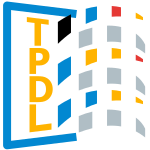 TPDL-2015-GuoG #tutorial
TPDL-2015-GuoG #tutorial- Connecting Emotionally: Effectiveness and Acceptance of an Affective Information Literacy Tutorial (YG, DHLG), pp. 169–181.
 VLDB-2015-SundaramSPDAV0D #graph #named #performance
VLDB-2015-SundaramSPDAV0D #graph #named #performance- GraphMat: High performance graph analytics made productive (NS, NS, MMAP, SD, MJA, SGV, DD, PD), pp. 1214–1225.
 EDM-2015-Allen #adaptation #difference #modelling
EDM-2015-Allen #adaptation #difference #modelling- Who Do You Think I Am? Modeling Individual Differences for More Adaptive and Effective Instruction (LKA), pp. 659–661.
 EDM-2015-SalesP #algebra #random
EDM-2015-SalesP #algebra #random- Exploring Causal Mechanisms in a Randomized Effectiveness Trial of the Cognitive Tutor Algebra I Program (AS, JP), pp. 504–507.
 EDM-2015-TangGMP #order #predict
EDM-2015-TangGMP #order #predict- Desirable Difficulty and Other Predictors of Effective Item Orderings (ST, HG, EM, ZAP), pp. 416–419.
 ICSME-2015-KasubuchiMYO #empirical #evaluation #fault #repository
ICSME-2015-KasubuchiMYO #empirical #evaluation #fault #repository- An empirical evaluation of the effectiveness of inspection scenarios developed from a defect repository (KK, SM, AY, CO), pp. 439–448.
 MSR-2015-HashimotoTMM #fact extraction #optimisation #performance #predict
MSR-2015-HashimotoTMM #fact extraction #optimisation #performance #predict- Extracting Facts from Performance Tuning History of Scientific Applications for Predicting Effective Optimization Patterns (MH, MT, TM, KM), pp. 13–23.
 MSR-2015-OrtuADTMT #empirical
MSR-2015-OrtuADTMT #empirical- Are Bullies More Productive? Empirical Study of Affectiveness vs. Issue Fixing Time (MO, BA, GD, PT, MM, RT), pp. 303–313.
 SANER-2015-CaiS #dependence #framework #impact analysis
SANER-2015-CaiS #dependence #framework #impact analysis- A framework for cost-effective dependence-based dynamic impact analysis (HC, RAS), pp. 231–240.
 SANER-2015-KochharTL #debugging #empirical #scalability #test coverage #testing
SANER-2015-KochharTL #debugging #empirical #scalability #test coverage #testing- Code coverage and test suite effectiveness: Empirical study with real bugs in large systems (PSK, FT, DL), pp. 560–564.
 SANER-2015-LuSWLD #code search #query
SANER-2015-LuSWLD #code search #query- Query expansion via WordNet for effective code search (ML, XS, SW, DL, YD), pp. 545–549.
 SANER-2015-TianL #case study #comparative #debugging
SANER-2015-TianL #case study #comparative #debugging- A comparative study on the effectiveness of part-of-speech tagging techniques on bug reports (YT, DL), pp. 570–574.
 CHI-2015-HouL #social #social media
CHI-2015-HouL #social #social media- Social Media Effectiveness for Public Engagement: Example of Small Nonprofits (YH, CL), pp. 3107–3116.
 CHI-2015-PortnoffLEMLW
CHI-2015-PortnoffLEMLW - Somebody’s Watching Me?: Assessing the Effectiveness of Webcam Indicator Lights (RSP, LNL, SE, PM, DL, DW), pp. 1649–1658.
 CHI-2015-SongCOKH #on the
CHI-2015-SongCOKH #on the- On the Effectiveness of Pattern Lock Strength Meters: Measuring the Strength of Real World Pattern Locks (YS, GC, SO, HK, JHH), pp. 2343–2352.
 CHI-2015-YannierKH #game studies #learning #physics #question #tablet
CHI-2015-YannierKH #game studies #learning #physics #question #tablet- Learning from Mixed-Reality Games: Is Shaking a Tablet as Effective as Physical Observation? (NY, KRK, SEH), pp. 1045–1054.
 DHM-EH-2015-DoiKM #design
DHM-EH-2015-DoiKM #design- Effective Design of Traditional Japanese Tea Ceremony in a Group Home for the Elderly with Dementia (TD, NK, KM), pp. 413–422.
 DHM-EH-2015-GoffRB #interactive #towards
DHM-EH-2015-GoffRB #interactive #towards- Toward a Model for Effective Human-Automation Interaction: The Mediated Agency (KLG, AR, BB), pp. 274–283.
 DUXU-DD-2015-WuC
DUXU-DD-2015-WuC - Products with Biomimetic Shapes Convey Emotions More Effectively (TYW, HKC), pp. 559–566.
 DUXU-IXD-2015-AkerO #interactive #social #social media #using
DUXU-IXD-2015-AkerO #interactive #social #social media #using- Social Media Interactions and the Use of Third-Party Management Applications on Effectiveness and Perception of Information (ÇA, ÖÖ), pp. 3–12.
 HCI-IT-2015-GohR #gamification #question
HCI-IT-2015-GohR #gamification #question- Is Gamification Effective in Motivating Exercise? (DHLG, KR), pp. 608–617.
 HIMI-IKD-2015-GareauKW #documentation #question #visualisation #what
HIMI-IKD-2015-GareauKW #documentation #question #visualisation #what- An Exploration of the Effectiveness of Infographics in Contrast to Text Documents for Visualizing Census Data: What Works? (MG, RK, LW), pp. 161–171.
 SCSM-2015-MillsF #framework #how #platform #why
SCSM-2015-MillsF #framework #how #platform #why- A Computational Study of How and Why reddit.com was an Effective Platform in the Campaign Against SOPA (RM, AF), pp. 229–241.
 ICEIS-v1-2015-BedoBOCCRTT #detection #image #performance #social #social media
ICEIS-v1-2015-BedoBOCCRTT #detection #image #performance #social #social media- Techniques for Effective and Efficient Fire Detection from Social Media Images (MVNB, GB, WDO, MTC, AFC, JFRJ, AJMT, CTJ), pp. 34–45.
 CIKM-2015-KhudaBukhshBW #case study #classification #detection #query #self
CIKM-2015-KhudaBukhshBW #case study #classification #detection #query #self- Building Effective Query Classifiers: A Case Study in Self-harm Intent Detection (ARK, PNB, RWW), pp. 1735–1738.
 CIKM-2015-ViegasGMR #classification #documentation #lazy evaluation #naive bayes #parallel #performance
CIKM-2015-ViegasGMR #classification #documentation #lazy evaluation #naive bayes #parallel #performance- Parallel Lazy Semi-Naive Bayes Strategies for Effective and Efficient Document Classification (FV, MAG, WM, LCdR), pp. 1071–1080.
 CIKM-2015-WangSFYXL #approach #multi
CIKM-2015-WangSFYXL #approach #multi- An Integrated Bayesian Approach for Effective Multi-Truth Discovery (XW0, QZS, XSF, LY, XX, XL0), pp. 493–502.
 ECIR-2015-AmigoGM #approach #clustering #formal method #information management #metric #retrieval
ECIR-2015-AmigoGM #approach #clustering #formal method #information management #metric #retrieval- A Formal Approach to Effectiveness Metrics for Information Access: Retrieval, Filtering, and Clustering (EA, JG, SM), pp. 817–821.
 ECIR-2015-LiC #using
ECIR-2015-LiC #using- Effective Healthcare Advertising Using Latent Dirichlet Allocation and Inference Engine (YCL, CCC), pp. 672–677.
 ECIR-2015-ZucconKP #self
ECIR-2015-ZucconKP #self- Diagnose This If You Can — On the Effectiveness of Search Engines in Finding Medical Self-diagnosis Information (GZ, BK, JRMP), pp. 562–567.
 KDD-2015-AdamopoulosT #social #social media
KDD-2015-AdamopoulosT #social #social media- The Effectiveness of Marketing Strategies in Social Media: Evidence from Promotional Events (PA, VT), pp. 1641–1650.
 KDD-2015-RenEWTVH #clustering #named #recognition #type system
KDD-2015-RenEWTVH #clustering #named #recognition #type system- ClusType: Effective Entity Recognition and Typing by Relation Phrase-Based Clustering (XR, AEK, CW, FT, CRV, JH), pp. 995–1004.
 KDD-2015-ShenGD #online
KDD-2015-ShenGD #online- Effective Audience Extension in Online Advertising (JS, SCG, AD), pp. 2099–2108.
 KDD-2015-TengTYC #constraints
KDD-2015-TengTYC #constraints- An Effective Marketing Strategy for Revenue Maximization with a Quantity Constraint (YWT, CHT, PSY, MSC), pp. 1175–1184.
 KDD-2015-XuLLQL #online #optimisation
KDD-2015-XuLLQL #online #optimisation- Smart Pacing for Effective Online Ad Campaign Optimization (JX, KcL, WL, HQ, QL), pp. 2217–2226.
 SEKE-2015-ZhaoSCZ #crowdsourcing #developer #recommendation #towards
SEKE-2015-ZhaoSCZ #crowdsourcing #developer #recommendation #towards- Towards Effective Developer Recommendation in Software Crowdsourcing (SZ, BS, YC, HZ), pp. 326–329.
 SIGIR-2015-Carterette #random #testing
SIGIR-2015-Carterette #random #testing- The Best Published Result is Random: Sequential Testing and its Effect on Reported Effectiveness (BC), pp. 747–750.
 SIGIR-2015-ClarkeSY #behaviour #evaluation #information retrieval #modelling
SIGIR-2015-ClarkeSY #behaviour #evaluation #information retrieval #modelling- IR Evaluation: Modeling User Behavior for Measuring Effectiveness (CLAC, MDS, EY), pp. 1117–1120.
 SIGIR-2015-JonesTSS #metric #retrieval
SIGIR-2015-JonesTSS #metric #retrieval- Features of Disagreement Between Retrieval Effectiveness Measures (TJ, PT, FS, MS), pp. 847–850.
 SIGIR-2015-SallesGRR #automation #classification #fault #named #random
SIGIR-2015-SallesGRR #automation #classification #fault #named #random- BROOF: Exploiting Out-of-Bag Errors, Boosting and Random Forests for Effective Automated Classification (TS, MAG, VR, LCdR), pp. 353–362.
 SIGIR-2015-VolkovsY #feedback #modelling #recommendation
SIGIR-2015-VolkovsY #feedback #modelling #recommendation- Effective Latent Models for Binary Feedback in Recommender Systems (MV, GWY), pp. 313–322.
 ICMT-2015-MooijEHW #industrial #modelling #using
ICMT-2015-MooijEHW #industrial #modelling #using- Cost-Effective Industrial Software Rejuvenation Using Domain-Specific Models (AJM, GE, JH, HvW), pp. 66–81.
 SPLC-2015-ReulingBRLK #generative #product line #testing
SPLC-2015-ReulingBRLK #generative #product line #testing- Fault-based product-line testing: effective sample generation based on feature-diagram mutation (DR, JB, SR, ML, UK), pp. 131–140.
 ECOOP-2015-Chevalier-Boisvert #lazy evaluation #version control
ECOOP-2015-Chevalier-Boisvert #lazy evaluation #version control- Simple and Effective Type Check Removal through Lazy Basic Block Versioning (MCB, MF), pp. 101–123.
 OOPSLA-2015-UpadhyayaR #abstraction #concurrent #java #message passing #thread #virtual machine
OOPSLA-2015-UpadhyayaR #abstraction #concurrent #java #message passing #thread #virtual machine- Effectively mapping linguistic abstractions for message-passing concurrency to threads on the Java virtual machine (GU, HR), pp. 840–859.
 SAS-2015-LiTX #analysis
SAS-2015-LiTX #analysis- Effective Soundness-Guided Reflection Analysis (YL, TT, JX), pp. 162–180.
 SAS-2015-Terauchi #heuristic #refinement #verification
SAS-2015-Terauchi #heuristic #refinement #verification- Explaining the Effectiveness of Small Refinement Heuristics in Program Verification with CEGAR (TT), pp. 128–144.
 ASE-2015-LvZLWZZ #api #code search #comprehension #named
ASE-2015-LvZLWZZ #api #code search #comprehension #named- CodeHow: Effective Code Search Based on API Understanding and Extended Boolean Model (E) (FL, HZ, JGL, SW, DZ, JZ), pp. 260–270.
 ASE-2015-ShamshiriJRFMA #automation #challenge #empirical #fault #testing
ASE-2015-ShamshiriJRFMA #automation #challenge #empirical #fault #testing- Do Automatically Generated Unit Tests Find Real Faults? An Empirical Study of Effectiveness and Challenges (T) (SS, RJ, JMR, GF, PM, AA), pp. 201–211.
 ESEC-FSE-2015-CaiC #detection #java #precise #source code
ESEC-FSE-2015-CaiC #detection #java #precise #source code- Effective and precise dynamic detection of hidden races for Java programs (YC, LC), pp. 450–461.
 ESEC-FSE-2015-MatinnejadNBB #testing
ESEC-FSE-2015-MatinnejadNBB #testing- Effective test suites for mixed discrete-continuous stateflow controllers (RM, SN, LCB, TB), pp. 84–95.
 ESEC-FSE-2015-ZhangM #correlation #testing
ESEC-FSE-2015-ZhangM #correlation #testing- Assertions are strongly correlated with test suite effectiveness (YZ, AM), pp. 214–224.
 ICSE-v1-2015-PapadakisJHT #compilation #detection #empirical #equivalence #performance #scalability
ICSE-v1-2015-PapadakisJHT #compilation #detection #empirical #equivalence #performance #scalability- Trivial Compiler Equivalence: A Large Scale Empirical Study of a Simple, Fast and Effective Equivalent Mutant Detection Technique (MP, YJ, MH, YLT), pp. 936–946.
 ICSE-v1-2015-TerragniCZ #concurrent #named #source code #testing
ICSE-v1-2015-TerragniCZ #concurrent #named #source code #testing- RECONTEST: Effective Regression Testing of Concurrent Programs (VT, SCC, CZ), pp. 246–256.
 ICSE-v2-2015-AnvariRHB #concept #design
ICSE-v2-2015-AnvariRHB #concept #design- Effectiveness of Persona with Personality Traits on Conceptual Design (FA, DR, MH, MAB), pp. 263–272.
 ICSE-v2-2015-DixitLW #integration #modelling #named #testing
ICSE-v2-2015-DixitLW #integration #modelling #named #testing- FormTester: Effective Integration of Model-Based and Manually Specified Test Cases (RD, CL, GW), pp. 745–748.
 SAC-2015-AliK #approach #recommendation
SAC-2015-AliK #approach #recommendation- An effective approach to group recommendation based on belief propagation (IA, SWK), pp. 1148–1153.
 SAC-2015-CalvagnaFT #case study #combinator #consistency #random #testing
SAC-2015-CalvagnaFT #case study #combinator #consistency #random #testing- Random versus combinatorial effectiveness in software conformance testing: a case study (AC, AF, ET), pp. 1797–1802.
 SAC-2015-CordobaL #design #java #modelling
SAC-2015-CordobaL #design #java #modelling- A modelling language for the effective design of Java annotations (IC, JdL), pp. 2087–2092.
 SAC-2015-KrutzMS #analysis #detection #using
SAC-2015-KrutzMS #analysis #detection #using- Examining the effectiveness of using concolic analysis to detect code clones (DEK, SAM, ES), pp. 1610–1615.
 SAC-2015-MatlCD #network
SAC-2015-MatlCD #network- Effective manycast messaging for Kademlia network (LM, TC, MJD), pp. 646–652.
 CASE-2015-ChenXZCL #learning #multi #optimisation #simulation
CASE-2015-ChenXZCL #learning #multi #optimisation #simulation- An effective learning procedure for multi-fidelity simulation optimization with ordinal transformation (RC, JX, SZ, CHC, LHL), pp. 702–707.
 DAC-2015-JiangLZYW #feature model #image #performance
DAC-2015-JiangLZYW #feature model #image #performance- A 127 fps in full hd accelerator based on optimized AKAZE with efficiency and effectiveness for image feature extraction (GJ, LL, WZ, SY, SW), p. 6.
 DAC-2015-KagalwallaG #modelling #reduction
DAC-2015-KagalwallaG #modelling #reduction- Effective model-based mask fracturing for mask cost reduction (AAK, PG), p. 6.
 DATE-2015-BajajNMS #architecture #cyber-physical #reliability
DATE-2015-BajajNMS #architecture #cyber-physical #reliability- Optimized selection of reliable and cost-effective cyber-physical system architectures (NB, PN, MM, ALSV), pp. 561–566.
 DATE-2015-KroeningLMST #bytecode #low level #verification
DATE-2015-KroeningLMST #bytecode #low level #verification- Effective verification of low-level software with nested interrupts (DK, LL, TM, PS, MT), pp. 229–234.
 DATE-2015-LinSKRM #debugging #detection #fault #performance #testing #validation
DATE-2015-LinSKRM #debugging #detection #fault #performance #testing #validation- Quick error detection tests with fast runtimes for effective post-silicon validation and debug (DL, ES, SK, ER, SM), pp. 1168–1173.
 DATE-2015-LiuLY #approach
DATE-2015-LiuLY #approach- An effective triple patterning aware grid-based detailed routing approach (ZL, CL, EFYY), pp. 1641–1646.
 HPCA-2015-PeraisS #framework #named #predict
HPCA-2015-PeraisS #framework #named #predict- BeBoP: A cost effective predictor infrastructure for superscalar value prediction (AP, AS), pp. 13–25.
 PDP-2015-BaiardiTBB
PDP-2015-BaiardiTBB - Iterative Selection of Cost-Effective Countermeasures for Intelligent Threat Agents (FB, FT, AB, RB), pp. 595–599.
 CAV-2015-ZhengGSTDZ #constraints #equation #regular expression #string
CAV-2015-ZhengGSTDZ #constraints #equation #regular expression #string- Effective Search-Space Pruning for Solvers of String Equations, Regular Expressions and Length Constraints (YZ, VG, SS, OT, JD, XZ), pp. 235–254.
 ICLP-J-2015-BlackmoreRE #approach #compilation #embedded #logic programming #predict
ICLP-J-2015-BlackmoreRE #approach #compilation #embedded #logic programming #predict- A logic programming approach to predict effective compiler settings for embedded software (CB, OR, KE), pp. 481–494.
 VMCAI-2015-DanMVY #abstraction #memory management #modelling #verification
VMCAI-2015-DanMVY #abstraction #memory management #modelling #verification- Effective Abstractions for Verification under Relaxed Memory Models (AMD, YM, MTV, EY), pp. 449–466.
 VLDB-2014-LiagourisMBT #encoding #rdf
VLDB-2014-LiagourisMBT #encoding #rdf- An Effective Encoding Scheme for Spatial RDF Data (JL, NM, PB, MT), pp. 1271–1282.
 VLDB-2014-LiuHRLJWCL #grid #multi #smarttech
VLDB-2014-LiuHRLJWCL #grid #multi #smarttech- DGFIndex for Smart Grid: Enhancing Hive with a Cost-Effective Multidimensional Range Index (YL, SH, TR, WL, HAJ, KW, JC, JL), pp. 1496–1507.
 VLDB-2014-MahmoudANAA #coordination #distributed #in the cloud #named #scalability #transaction
VLDB-2014-MahmoudANAA #coordination #distributed #in the cloud #named #scalability #transaction- MaaT: Effective and scalable coordination of distributed transactions in the cloud (HAM, VA, FN, DA, AEA), pp. 329–340.
 VLDB-2014-WangOYZZ #multi #retrieval
VLDB-2014-WangOYZZ #multi #retrieval- Effective Multi-Modal Retrieval based on Stacked Auto-Encoders (WW, BCO, XY, DZ, YZ), pp. 649–660.
 CSEET-2014-Dagnino #education #industrial #re-engineering
CSEET-2014-Dagnino #education #industrial #re-engineering- Increasing the effectiveness of teaching software engineering: A University and industry partnership (AD), pp. 49–54.
 CSEET-2014-Lethbridge #development #education #modelling #using
CSEET-2014-Lethbridge #development #education #modelling #using- Teaching modeling using Umple: Principles for the development of an effective tool (TCL), pp. 23–28.
 CSEET-2014-YamadaIWKFYOKT #development #education #learning
CSEET-2014-YamadaIWKFYOKT #development #education #learning- The impacts of personal characteristic on educational effectiveness in controlled-project based learning on software intensive systems development (YY, SI, HW, KK, YF, SY, MO, TK, MT), pp. 119–128.
 EDM-2014-BakerO #detection #scalability
EDM-2014-BakerO #detection #scalability- Cost-Effective, Actionable Engagement Detection at Scale (RSB, JO), pp. 345–346.
 ITiCSE-2014-Marcos-Abed #case study #learning #programming
ITiCSE-2014-Marcos-Abed #case study #learning #programming- Learning computer programming: a study of the effectiveness of a COAC# (JMA), p. 333.
 CSMR-WCRE-2014-AlawnehHML #approach #communication
CSMR-WCRE-2014-AlawnehHML #approach #communication- A contextual approach for effective recovery of inter-process communication patterns from HPC traces (LA, AHL, SSM, YL), pp. 274–282.
 ICSME-2014-SahaLKP #c #debugging #information retrieval #locality #on the #source code
ICSME-2014-SahaLKP #c #debugging #information retrieval #locality #on the #source code- On the Effectiveness of Information Retrieval Based Bug Localization for C Programs (RKS, JL, SK, DEP), pp. 161–170.
 MSR-2014-AndersonSD #mining #testing
MSR-2014-AndersonSD #mining #testing- Improving the effectiveness of test suite through mining historical data (JA, SS, HD), pp. 142–151.
 ICFP-2014-BergstromFLRS #higher-order #optimisation
ICFP-2014-BergstromFLRS #higher-order #optimisation- Practical and effective higher-order optimizations (LB, MF, ML, JHR, NS), pp. 81–93.
 CHI-PLAY-2014-GuanaXZSS #education #health
CHI-PLAY-2014-GuanaXZSS #education #health- UnderControl an educational serious-game for reproductive health (VG, TX, HZ, ES, ES), pp. 339–342.
 CIG-2014-GuheL14a #persuasion
CIG-2014-GuheL14a #persuasion- The effectiveness of persuasion in The Settlers of Catan (MG, AL), pp. 1–8.
 CIG-2014-LiuLB #behaviour #evolution #game studies
CIG-2014-LiuLB #behaviour #evolution #game studies- Evolving effective micro behaviors in RTS game (SL0, SJL, CAB), pp. 1–8.
 FDG-2014-MaungCGWLBMGA #development #game studies
FDG-2014-MaungCGWLBMGA #development #game studies- Development of Recovery Rapids - A game for cost effective stroke therapy (DM, RC, LVG, LWC, LPL, AB, RJM, JG, JA).
 CHI-2014-DimitriadisA #mobile #physics
CHI-2014-DimitriadisA #mobile #physics- Evaluating the effectiveness of physical shape-change for in-pocket mobile device notifications (PD, JA), pp. 2589–2592.
 CHI-2014-EnsFI #interface
CHI-2014-EnsFI #interface- The personal cockpit: a spatial interface for effective task switching on head-worn displays (BME, RF, PPI), pp. 3171–3180.
 CHI-2014-StawarzCB #design #exclamation
CHI-2014-StawarzCB #design #exclamation- Don’t forget your pill!: designing effective medication reminder apps that support users’ daily routines (KS, ALC, AB), pp. 2269–2278.
 CHI-2014-Vicencio-MoreiraMGB #game studies
CHI-2014-Vicencio-MoreiraMGB #game studies- The effectiveness (or lack thereof) of aim-assist techniques in first-person shooter games (RVM, RLM, CG, SB), pp. 937–946.
 CHI-2014-ZhuCMPBK #community #online
CHI-2014-ZhuCMPBK #community #online- Selecting an effective niche: an ecological view of the success of online communities (HZ, JC, TM, AP, HB, REK), pp. 301–310.
 DHM-2014-Kawabata
DHM-2014-Kawabata - Effectiveness of Paper Coloring Recreation in an Elderly Persons Care Home (SK), pp. 567–574.
 DUXU-DI-2014-Lin14a #interface #perspective #visual notation
DUXU-DI-2014-Lin14a #interface #perspective #visual notation- Interface as a Medium: Creating Effective Visual Services through a User-Experiences Perspective (TSL), pp. 455–462.
 DUXU-DP-2014-ChapmanP #maturity #user interface
DUXU-DP-2014-ChapmanP #maturity #user interface- A UX Maturity Model: Effective Introduction of UX into Organizations (LC, SP), pp. 12–22.
 DUXU-DP-2014-KarapantelakisG #deployment #design #evaluation #scalability #social
DUXU-DP-2014-KarapantelakisG #deployment #design #evaluation #scalability #social- Design, Deployment and Evaluation of a Social Tool for Developing Effective Working Relationships in Large Organizations (AK, YG), pp. 49–60.
 DUXU-DP-2014-ShafiqCIFAAI #design #interactive #personalisation #visual notation
DUXU-DP-2014-ShafiqCIFAAI #design #interactive #personalisation #visual notation- Skill Specific Spoken Dialogues Based Personalized ATM Design to Maximize Effective Interaction for Visually Impaired Persona (MS, JGC, MI, MF, MA, IA, AI), pp. 446–457.
 DUXU-TMT-2014-BansemirHLWG #case study #experience #interactive #prototype #visualisation
DUXU-TMT-2014-BansemirHLWG #case study #experience #interactive #prototype #visualisation- Experience Report: The Effectiveness of Paper Prototyping for Interactive Visualizations (BB, FH, BL, JW, RG), pp. 3–13.
 DUXU-TMT-2014-Schall #design #eye tracking #navigation
DUXU-TMT-2014-Schall #design #eye tracking #navigation- Eye Tracking Insights into Effective Navigation Design (AS), pp. 363–370.
 DUXU-TMT-2014-WetzlingerAD #experience #performance #usability #user interface #using
DUXU-TMT-2014-WetzlingerAD #experience #performance #usability #user interface #using- Comparing Effectiveness, Efficiency, Ease of Use, Usability and User Experience When Using Tablets and Laptops (WW, AA, MD), pp. 402–412.
 HCI-AIMT-2014-MikamiM #3d #learning
HCI-AIMT-2014-MikamiM #3d #learning- Effectiveness of Virtual Hands in 3D Learning Material (TM, SM), pp. 93–101.
 HCI-AIMT-2014-NakaI #communication #generative #gesture
HCI-AIMT-2014-NakaI #communication #generative #gesture- Proposal of the Effective Method of Generating Characteristic Gestures in Nonverbal Communication (TN, TI), pp. 102–112.
 HIMI-AS-2014-HamaguchiAWA #communication #product line
HIMI-AS-2014-HamaguchiAWA #communication #product line- Investigating the Effective Factors of Communication for Family Members Living Apart (NH, DA, MW, YA), pp. 373–382.
 HIMI-AS-2014-OshimaHYMN #case study #women
HIMI-AS-2014-OshimaHYMN #case study #women- The Effectiveness of Assistance Dogs Mounting ICT Devices: A Case Study of a Healthy Woman and Her Dog (CO, CH, KY, KM, KN), pp. 467–478.
 LCT-TRE-2014-ShimizuO #learning #question
LCT-TRE-2014-ShimizuO #learning #question- Which Is More Effective for Learning German and Japanese Language, Paper or Digital? (RS, KO), pp. 309–318.
 LCT-TRE-2014-Tobita #education
LCT-TRE-2014-Tobita #education- Developing an Effective ESP Curriculum Integrating CALL (RT), pp. 328–338.
 CAiSE-2014-PadilhaPFAGS #detection #empirical #metric #on the #smell
CAiSE-2014-PadilhaPFAGS #detection #empirical #metric #on the #smell- On the Effectiveness of Concern Metrics to Detect Code Smells: An Empirical Study (JP, JAP, EF, JMA, AG, CS), pp. 656–671.
 EDOC-2014-Ludwig #big data #perspective
EDOC-2014-Ludwig #big data #perspective- Managing Big Data Effectively — A Cloud Provider and a Cloud Consumer Perspective (HL), p. 91.
 ICEIS-v2-2014-CasalinoCMGT
ICEIS-v2-2014-CasalinoCMGT - Defining a Model for Effective e-Government Services and an Inter-organizational Cooperation in Public Sector (NC, MC, MdM, MG, GT), pp. 400–408.
 ICEIS-v2-2014-MarcolinoOG #approach #diagrams #sequence chart #towards #variability
ICEIS-v2-2014-MarcolinoOG #approach #diagrams #sequence chart #towards #variability- Towards the Effectiveness of the SMarty Approach for Variability Management at Sequence Diagram Level (AM, EAOJ, IMdSG), pp. 249–256.
 CIKM-2014-CanutoSGRRGRM #classification #on the #performance
CIKM-2014-CanutoSGRRGRM #classification #on the #performance- On Efficient Meta-Level Features for Effective Text Classification (SDC, TS, MAG, LCdR, GSR, LG, TCR, WSM), pp. 1709–1718.
 CIKM-2014-MarkovKNSRC #metric #modelling
CIKM-2014-MarkovKNSRC #metric #modelling- Vertical-Aware Click Model-Based Effectiveness Metrics (IM, EK, VN, PS, MdR, FC), pp. 1867–1870.
 CIKM-2014-RokickiCZS #crowdsourcing #design #game studies
CIKM-2014-RokickiCZS #crowdsourcing #design #game studies- Competitive Game Designs for Improving the Cost Effectiveness of Crowdsourcing (MR, SC, SZ, SS), pp. 1469–1478.
 ECIR-2014-FiliceCCB #kernel #learning #online
ECIR-2014-FiliceCCB #kernel #learning #online- Effective Kernelized Online Learning in Language Processing Tasks (SF, GC, DC, RB), pp. 347–358.
 ECIR-2014-LiS #fault #metric
ECIR-2014-LiS #fault #metric- Tolerance of Effectiveness Measures to Relevance Judging Errors (LL, MDS), pp. 148–159.
 ECIR-2014-TraubOHH
ECIR-2014-TraubOHH - Measuring the Effectiveness of Gamesourcing Expert Oil Painting Annotations (MCT, JvO, JH, LH), pp. 112–123.
 ICML-c2-2014-Chapados #modelling
ICML-c2-2014-Chapados #modelling- Effective Bayesian Modeling of Groups of Related Count Time Series (NC), pp. 1395–1403.
 ICPR-2014-ChenL #locality
ICPR-2014-ChenL #locality- Effective Part Localization in Latent-SVM Training (YC, RL), pp. 4269–4274.
 ICPR-2014-DhamechaSSV #on the
ICPR-2014-DhamechaSSV #on the- On Effectiveness of Histogram of Oriented Gradient Features for Visible to Near Infrared Face Matching (TID, PS, RS, MV), pp. 1788–1793.
 ICPR-2014-FilipVH
ICPR-2014-FilipVH - Effective Acquisition of Dense Anisotropic BRDF (JF, RV, MH), pp. 2047–2052.
 ICPR-2014-HouZ #image
ICPR-2014-HouZ #image- Effective Image Block Compressed Sensing (YH, YZ), pp. 1085–1090.
 ICPR-2014-Yasuda
ICPR-2014-Yasuda - Effective Mean-Field Inference Method for Nonnegative Boltzmann Machines (MY), pp. 3600–3605.
 KDD-2014-ChengB0 #approach #dependence #named
KDD-2014-ChengB0 #approach #dependence #named- FBLG: a simple and effective approach for temporal dependence discovery from time series data (DC, MTB, YL), pp. 382–391.
 KDD-2014-NguyenCRB #feature model
KDD-2014-NguyenCRB #feature model- Effective global approaches for mutual information based feature selection (XVN, JC, SR, JB), pp. 512–521.
 KDD-2014-QuZLLX #recommendation
KDD-2014-QuZLLX #recommendation- A cost-effective recommender system for taxi drivers (MQ, HZ, JL, GL, HX), pp. 45–54.
 KDD-2014-RenLYKGWH #clustering #named #recommendation
KDD-2014-RenLYKGWH #clustering #named #recommendation- ClusCite: effective citation recommendation by information network-based clustering (XR, JL, XY, UK, QG, LW, JH), pp. 821–830.
 SEKE-2014-GoswamiW #empirical
SEKE-2014-GoswamiW #empirical- Improving the Cost Effectiveness of Software Inspection Teams: An Empirical Investigation (AG, GSW), pp. 735–739.
 SEKE-2014-XuS #automation #petri net #testing
SEKE-2014-XuS #automation #petri net #testing- Effectiveness of Automated Function Testing with Petri Nets: A Series of Controlled Experiments (DX, NS), pp. 211–216.
 SIGIR-2014-AmigoGM #clustering #metric #retrieval
SIGIR-2014-AmigoGM #clustering #metric #retrieval- A general account of effectiveness metrics for information tasks: retrieval, filtering, and clustering (EA, JG, SM), p. 1289.
 SIGIR-2014-ChakrabortyRSB #correlation #on the
SIGIR-2014-ChakrabortyRSB #correlation #on the- On correlation of absence time and search effectiveness (SC, FR, MS, PB), pp. 1163–1166.
 SIGIR-2014-RaiberK14a #clustering #correlation #retrieval #testing
SIGIR-2014-RaiberK14a #clustering #correlation #retrieval #testing- The correlation between cluster hypothesis tests and the effectiveness of cluster-based retrieval (FR, OK), pp. 1155–1158.
 SIGIR-2014-SavenkovA
SIGIR-2014-SavenkovA - To hint or not: exploring the effectiveness of search hints for complex informational tasks (DS, EA), pp. 1115–1118.
 SIGIR-2014-YeH #feedback #pseudo
SIGIR-2014-YeH #feedback #pseudo- A simple term frequency transformation model for effective pseudo relevance feedback (ZY, JXH), pp. 323–332.
 SKY-2014-OsetinskyY #abstraction #case study #legacy #using
SKY-2014-OsetinskyY #abstraction #case study #legacy #using- Working More Effectively with Legacy Code Using Domain Knowledge and Abstractions: A Case Study (IO, RY), pp. 63–70.
 MoDELS-2014-GranadaVBM #development #domain-specific language #visual notation
MoDELS-2014-GranadaVBM #development #domain-specific language #visual notation- Enabling the Development of Cognitive Effective Visual DSLs (DG, JMV, VAB, EM), pp. 535–551.
 MoDELS-2014-ThummalaO #evaluation
MoDELS-2014-ThummalaO #evaluation- An Evaluation of the Effectiveness of the Atomic Section Model (ST, JO), pp. 35–49.
 PEPM-2014-CheneyLRW #query
PEPM-2014-CheneyLRW #query- Effective quotation: relating approaches to language-integrated query (JC, SL, GR, PW), pp. 15–26.
 POPL-2014-ItzhakyBILNS #composition #reasoning
POPL-2014-ItzhakyBILNS #composition #reasoning- Modular reasoning about heap paths via effectively propositional formulas (SI, AB, NI, OL, AN, MS), pp. 385–396.
 ASE-2014-HarmanJMP #empirical #higher-order #performance
ASE-2014-HarmanJMP #empirical #higher-order #performance- Angels and monsters: an empirical investigation of potential test effectiveness and efficiency improvement from strongly subsuming higher order mutation (MH, YJ, PRM, MP), pp. 397–408.
 FSE-2014-Song #fault #locality
FSE-2014-Song #fault #locality- Estimating the effectiveness of spectrum-based fault localization (SS), pp. 814–816.
 ICSE-2014-InozemtsevaH #correlation #testing
ICSE-2014-InozemtsevaH #correlation #testing- Coverage is not strongly correlated with test suite effectiveness (LI, RH), pp. 435–445.
 SAC-2014-AminikhanghahiWSSJ #feature model #smarttech
SAC-2014-AminikhanghahiWSSJ #feature model #smarttech- Effective tumor feature extraction for smart phone based microwave tomography breast cancer screening (SA, WW, SYS, SHS, SIJ), pp. 674–679.
 SAC-2014-BaeCPJKC #clustering #memory management
SAC-2014-BaeCPJKC #clustering #memory management- An effective data clustering method based on expected update time in flash memory environment (DHB, JWC, SMP, BSJ, SWK, SjC), pp. 1492–1497.
 SAC-2014-ChenLFCCK #algorithm #design #detection #health #implementation #monitoring
SAC-2014-ChenLFCCK #algorithm #design #detection #health #implementation #monitoring- Design and implementation of a personal health monitoring system with an effective SVM-based PVC detection algorithm in cardiology (HC, GTL, YCF, BCC, CMC, TCK), pp. 33–35.
 SAC-2014-FerreiraBBAG #architecture #case study #detection
SAC-2014-FerreiraBBAG #architecture #case study #detection- Detecting architecturally-relevant code anomalies: a case study of effectiveness and effort (MF, EAB, IMB, RA, AG), pp. 1158–1163.
 SAC-2014-PapadakisT #analysis #approach #fault #locality #mutation testing
SAC-2014-PapadakisT #analysis #approach #fault #locality #mutation testing- Effective fault localization via mutation analysis: a selective mutation approach (MP, YLT), pp. 1293–1300.
 SAC-2014-YangZL #algorithm #debugging #developer #multi #recommendation
SAC-2014-YangZL #algorithm #debugging #developer #multi #recommendation- Utilizing a multi-developer network-based developer recommendation algorithm to fix bugs effectively (GY, TZ, BL), pp. 1134–1139.
 CASE-2014-HaoLGC #flexibility #markov #network #nondeterminism #problem #scheduling
CASE-2014-HaoLGC #flexibility #markov #network #nondeterminism #problem #scheduling- An effective Markov network based EDA for flexible job shop scheduling problems under uncertainty (XCH, LL, MG, CFC), pp. 131–136.
 CASE-2014-PengHHW #analysis #metric
CASE-2014-PengHHW #analysis #metric- An effective wavelength utilization for spectroscopic analysis on orchid chlorophyll measurement (YHP, CSH, PCH, YDW), pp. 716–721.
 DAC-2014-LinC
DAC-2014-LinC - POLAR 2.0: An Effective Routability-Driven Placer (TL, CC), p. 6.
 DATE-2014-ChenTCC
DATE-2014-ChenTCC - Cost-effective decap selection for beyond die power integrity (YEC, THT, SHC, HMC), pp. 1–4.
 DATE-2014-FriedlerKMNS #locality #slicing #using
DATE-2014-FriedlerKMNS #locality #slicing #using- Effective post-silicon failure localization using dynamic program slicing (OF, WK, AM, AN, VS), pp. 1–6.
 DATE-2014-FummiLSTVV #design #simulation
DATE-2014-FummiLSTVV #design #simulation- Moving from co-simulation to simulation for effective smart systems design (FF, ML, FS, DT, JV, SV), pp. 1–4.
 DATE-2014-GuoWWH #automation #named #test coverage
DATE-2014-GuoWWH #automation #named #test coverage- EATBit: Effective automated test for binary translation with high code coverage (HG, ZW, CW, RH), pp. 1–6.
 DATE-2014-KumarYBT #distributed #named
DATE-2014-KumarYBT #distributed #named- COOLIP: Simple yet effective job allocation for distributed thermally-throttled processors (PK, HY, IB, LT), pp. 1–4.
 DATE-2014-LeeserMRW #float #reasoning
DATE-2014-LeeserMRW #float #reasoning- Make it real: Effective floating-point reasoning via exact arithmetic (ML, SM, JR, TW), pp. 1–4.
 DATE-2014-RiefertCSBRB #approach #automation #fault #functional #generative #testing
DATE-2014-RiefertCSBRB #approach #automation #fault #functional #generative #testing- An effective approach to automatic functional processor test generation for small-delay faults (AR, LMC, MS, PB, MSR, BB), pp. 1–6.
 DATE-2014-Stenstrom #performance #resource management #towards
DATE-2014-Stenstrom #performance #resource management #towards- Effective resource management towards efficient computing (PS), p. 1.
 HPDC-2014-MaratheHLSRS #execution
HPDC-2014-MaratheHLSRS #execution- Exploiting redundancy for cost-effective, time-constrained execution of HPC applications on amazon EC2 (AM, RH, DKL, BRdS, BR, MS), pp. 279–290.
 PDP-2014-AudemardHJP #approach #distributed #problem #satisfiability
PDP-2014-AudemardHJP #approach #distributed #problem #satisfiability- An Effective Distributed D&C Approach for the Satisfiability Problem (GA, BH, SJ, CP), pp. 183–187.
 PDP-2014-VinckeWLSB #embedded #parallel
PDP-2014-VinckeWLSB #embedded #parallel- Writing Parallel Embedded Software Effectively (RV, NDW, SVL, ES, JB), pp. 474–477.
 ISSTA-2014-Mirshokraie #assessment #generative #testing #web
ISSTA-2014-Mirshokraie #assessment #generative #testing #web- Effective test generation and adequacy assessment for JavaScript-based web applications (SM), pp. 453–456.
 ISSTA-2014-XiaoBIMGC #analysis #dependence #type system
ISSTA-2014-XiaoBIMGC #analysis #dependence #type system- ARC++: effective typestate and lifetime dependency analysis (XX, GB, FI, NM, AG, DC), pp. 116–126.
 ISSTA-2014-ZouCZZG #testing #web
ISSTA-2014-ZouCZZG #testing #web- Virtual DOM coverage for effective testing of dynamic web applications (YZ, ZC, YZ, XZ, ZG), pp. 60–70.
 LICS-CSL-2014-BenediktCB #logic
LICS-CSL-2014-BenediktCB #logic- Effective interpolation and preservation in guarded logics (MB, BtC, MVB), p. 10.
 LICS-CSL-2014-Mogelberg #recursion #type system
LICS-CSL-2014-Mogelberg #recursion #type system- A type theory for productive coprogramming via guarded recursion (REM), p. 10.
 ICDAR-2013-ImpedovoMPBI #classification #performance
ICDAR-2013-ImpedovoMPBI #classification #performance- Voronoi Tessellation for Effective and Efficient Handwritten Digit Classification (SI, FMM, GP, DB, DI), pp. 435–439.
 JCDL-2013-GongKZB #behaviour #case study #clustering #interactive #retrieval
JCDL-2013-GongKZB #behaviour #case study #clustering #interactive #retrieval- Interactive search result clustering: a study of user behavior and retrieval effectiveness (XG, WK, YZ, RB), pp. 167–170.
 VLDB-2013-0007TR #graph #keyword #performance #probability #query
VLDB-2013-0007TR #graph #keyword #performance #probability #query- Probabilistic Query Rewriting for Efficient and Effective Keyword Search on Graph Data (LZ, TT, AR), pp. 1642–1653.
 VLDB-2014-WangDTZ13 #approximate #n-gram #performance #sequence
VLDB-2014-WangDTZ13 #approximate #n-gram #performance #sequence- Efficient and Effective KNN Sequence Search with Approximate n-grams (XW, XD, AKHT, ZZ), pp. 1–12.
 VLDB-2014-YuLZCP13
VLDB-2014-YuLZCP13 - More is Simpler: Effectively and Efficiently Assessing Node-Pair Similarities Based on Hyperlinks (WY, XL, WZ, LC, JP), pp. 13–24.
 CSEET-2013-InagaWYKFYOKTK #development #education
CSEET-2013-InagaWYKFYOKTK #development #education- Team characteristics for maximizing the educational effectiveness of practical lectures on software intensive systems development (SI, HW, YY, KK, YF, SY, MO, TK, MT, TK), pp. 264–268.
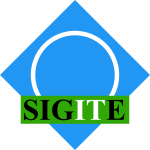 SIGITE-2013-FaragAD #online #programming #question
SIGITE-2013-FaragAD #online #programming #question- Does language choice influence the effectiveness of online introductory programming courses? (WF, SA, DD), pp. 165–170.
 SIGITE-2013-HoldenB #education #modelling
SIGITE-2013-HoldenB #education #modelling- Investigating the effectiveness of early programming-centric models for IT education (EH, TJB), pp. 159–164.
 ICSM-2013-LeL #approach #automation #fault #locality #predict #tool support
ICSM-2013-LeL #approach #automation #fault #locality #predict #tool support- Will Fault Localization Work for These Failures? An Automated Approach to Predict Effectiveness of Fault Localization Tools (TDBL, DL), pp. 310–319.
 ICSM-2013-SchwartzD #fuzzy #testing
ICSM-2013-SchwartzD #fuzzy #testing- A Fuzzy Expert System for Cost-Effective Regression Testing Strategies (AS, HD), pp. 1–10.
 WCRE-2013-IshioHKO #automation #feature model #on the
WCRE-2013-IshioHKO #automation #feature model #on the- On the effectiveness of accuracy of automated feature location technique (TI, SH, HK, TO), pp. 381–390.
 ICFP-2013-AtkeyM #recursion
ICFP-2013-AtkeyM #recursion- Productive coprogramming with guarded recursion (RA, CM), pp. 197–208.
 CIG-2013-LiuLN #behaviour #game studies #using
CIG-2013-LiuLN #behaviour #game studies #using- Using CIGAR for finding effective group behaviors in RTS game (SL0, SJL, MNN), pp. 1–8.
 FDG-2013-ShannonBGB #game studies #tutorial
FDG-2013-ShannonBGB #game studies #tutorial- Effective practices in game tutorial systems (AS, AKB, CG, TB), pp. 338–345.
 VS-Games-2013-BacklundH #education #game studies #overview
VS-Games-2013-BacklundH #education #game studies #overview- Educational Games - Are They Worth the Effort?a Literature Survey of the Effectiveness of Serious Games (PB, MH), pp. 1–8.
 CHI-2013-LaseckiMB #crowdsourcing #realtime
CHI-2013-LaseckiMB #crowdsourcing #realtime- Warping time for more effective real-time crowdsourcing (WSL, CDM, JPB), pp. 2033–2036.
 CSCW-2013-SaketPHZ #design #interface #mobile
CSCW-2013-SaketPHZ #design #interface #mobile- Designing an effective vibration-based notification interface for mobile phones (BS, CP, YH, SZ), pp. 1499–1504.
 DHM-HB-2013-Baker #overview #perspective
DHM-HB-2013-Baker #overview #perspective- The Effectiveness of Alternative Keyboards at Reducing Musculoskeletal Symptoms at Work: A Review (NB), pp. 189–195.
 DHM-SET-2013-HungCSC #analysis #case study #comparative #education #women
DHM-SET-2013-HungCSC #analysis #case study #comparative #education #women- A Comparative Analysis of the Educational Effectiveness of Leaflet and Website for Low-Literate Patients — A Case Study of Immigrant Mothers in Taipei (YLH, KRC, CS, TC), pp. 204–213.
 DHM-SET-2013-MurataKH #multi
DHM-SET-2013-MurataKH #multi- Effectiveness of Automotive Warning System Presented with Multiple Sensory Modalities (AM, MK, TH), pp. 88–97.
 DUXU-PMT-2013-ChiuT #design #idea #network #process #social
DUXU-PMT-2013-ChiuT #design #idea #network #process #social- User Involvement in Idea Brainstorming of Design Process: Finding the Effective Strategy in Social Network Service (SCC, KT), pp. 593–598.
 DUXU-PMT-2013-JiangL #adaptation #matrix #using
DUXU-PMT-2013-JiangL #adaptation #matrix #using- Understand System’s Relative Effectiveness Using Adapted Confusion Matrix (NJ, HL), pp. 294–302.
 DUXU-WM-2013-LoLC #design #interface #named #process
DUXU-WM-2013-LoLC #design #interface #named #process- dJOE: design Jigsaw On sitE — A Computational Interface of Displacing Ideas in the Design Productive Process (CHNL, ICL, TWC), pp. 402–407.
 HCI-IMT-2013-JeonLBN #2d #feedback #navigation
HCI-IMT-2013-JeonLBN #2d #feedback #navigation- Assessing the Effectiveness of Vibrotactile Feedback on a 2D Navigation Task (WJ, YL, SB, CSN), pp. 594–600.
 HIMI-D-2013-NakatsuG #case study #crowdsourcing #design #user interface
HIMI-D-2013-NakatsuG #case study #crowdsourcing #design #user interface- Designing Effective User Interfaces for Crowdsourcing: An Exploratory Study (RTN, EBG), pp. 221–229.
 HIMI-D-2013-Zempo #modelling #standard #usability
HIMI-D-2013-Zempo #modelling #standard #usability- Effective Practice of HCD by Usability Modeling and Standardization (HZ), pp. 393–399.
 ICEIS-v2-2013-EldinMHZ #concept #information management
ICEIS-v2-2013-EldinMHZ #concept #information management- A Conceptual Model for Effective Early Warning Information Systems (EEWIS) (MSE, SAM, EEH, HZ), pp. 134–142.
 CIKM-2013-AlbakourMO #microblog #on the #realtime
CIKM-2013-AlbakourMO #microblog #on the #realtime- On sparsity and drift for effective real-time filtering in microblogs (MDA, CM, IO), pp. 419–428.
 CIKM-2013-BogdanovS #nearest neighbour #network #scalability
CIKM-2013-BogdanovS #nearest neighbour #network #scalability- Accurate and scalable nearest neighbors in large networks based on effective importance (PB, AKS), pp. 1009–1018.
 CIKM-2013-GuGZLG #identification #named #towards
CIKM-2013-GuGZLG #identification #named #towards- AnchorMF: towards effective event context identification (HG, MG, LZ, QL, DG), pp. 629–638.
 CIKM-2013-MoffatTS #metric #modelling #what
CIKM-2013-MoffatTS #metric #modelling #what- Users versus models: what observation tells us about effectiveness metrics (AM, PT, FS), pp. 659–668.
 CIKM-2013-WhissellC #metric #similarity
CIKM-2013-WhissellC #metric #similarity- Effective measures for inter-document similarity (JSW, CLAC), pp. 1361–1370.
 ECIR-2013-RaiberK #metric #predict #using
ECIR-2013-RaiberK #metric #predict #using- Using Document-Quality Measures to Predict Web-Search Effectiveness (FR, OK), pp. 134–145.
 KDD-2013-ZimekGCS #detection #performance
KDD-2013-ZimekGCS #detection #performance- Subsampling for efficient and effective unsupervised outlier detection ensembles (AZ, MG, RJGBC, JS), pp. 428–436.
 RecSys-2013-ZhengI
RecSys-2013-ZhengI - Effectiveness of the data generated on different time in latent factor model (QZ, HHSI), pp. 327–330.
 SEKE-2013-MarcolinoOGM #approach #case study #towards #variability
SEKE-2013-MarcolinoOGM #approach #case study #towards #variability- Towards the Effectiveness of a Variability Management Approach at Use Case Level (AM, EAOJ, IMSG, JCM), pp. 214–219.
 SEKE-2013-NetoMGA #product line #testing
SEKE-2013-NetoMGA #product line #testing- Analyzing the Effectiveness of a System Testing Tool for Software Product Line Engineering (CRLN, IdCM, VCG, ESdA), pp. 584–588.
 SEKE-2013-RajasekharanMN #crowdsourcing #online
SEKE-2013-RajasekharanMN #crowdsourcing #online- Effective Crowdsourcing for Software Feature Ideation in Online Co-Creation Forums (KR, APM, SKN), pp. 119–124.
 SEKE-2013-WeiX #analysis #e-commerce #evaluation
SEKE-2013-WeiX #analysis #e-commerce #evaluation- A Formal Cost-Effectiveness Analysis Model for Product Evaluation in E-Commerce (RW, HX), pp. 287–293.
 SIGIR-2013-AsadiL #architecture #generative #multi #performance #retrieval #trade-off
SIGIR-2013-AsadiL #architecture #generative #multi #performance #retrieval #trade-off- Effectiveness/efficiency tradeoffs for candidate generation in multi-stage retrieval architectures (NA, JL), pp. 997–1000.
 SIGIR-2013-MoshfeghiJ #behaviour #feedback #using
SIGIR-2013-MoshfeghiJ #behaviour #feedback #using- An effective implicit relevance feedback technique using affective, physiological and behavioural features (YM, JMJ), pp. 133–142.
 SIGIR-2013-Paik #novel #ranking
SIGIR-2013-Paik #novel #ranking- A novel TF-IDF weighting scheme for effective ranking (JHP), pp. 343–352.
 SIGIR-2013-WebberBLO #classification #evaluation #testing
SIGIR-2013-WebberBLO #classification #evaluation #testing- Sequential testing in classifier evaluation yields biased estimates of effectiveness (WW, MB, DDL, DWO), pp. 933–936.
 SIGIR-2013-Yeniterzi #social #social media #using
SIGIR-2013-Yeniterzi #social #social media #using- Effective approaches to retrieving and using expertise in social media (RY), p. 1150.
 OOPSLA-2013-RaychevVS #concurrent #detection #source code
OOPSLA-2013-RaychevVS #concurrent #detection #source code- Effective race detection for event-driven programs (VR, MTV, MS), pp. 151–166.
 RE-2013-NiknafsB #case study #elicitation #generative #idea #industrial #requirements
RE-2013-NiknafsB #case study #elicitation #generative #idea #industrial #requirements- An industrial case study of the impact of domain ignorance on the effectiveness of requirements idea generation during requirements elicitation (AN, DMB), pp. 279–283.
 REFSQ-2013-AdamS #elicitation #empirical #product line #requirements
REFSQ-2013-AdamS #elicitation #empirical #product line #requirements- Effective Requirements Elicitation in Product Line Application Engineering — An Experiment (SA, KS), pp. 362–378.
 ASE-2013-DietrichCS #learning #query #requirements #retrieval
ASE-2013-DietrichCS #learning #query #requirements #retrieval- Learning effective query transformations for enhanced requirements trace retrieval (TD, JCH, YS), pp. 586–591.
 ESEC-FSE-2013-NguyenMT #automation #empirical
ESEC-FSE-2013-NguyenMT #automation #empirical- Automated oracles: an empirical study on cost and effectiveness (CDN, AM, PT), pp. 136–146.
 ESEC-FSE-2013-WuHTY #alias #analysis #detection #fault
ESEC-FSE-2013-WuHTY #alias #analysis #detection #fault- Effective dynamic detection of alias analysis errors (JW, GH, YT, JY), pp. 279–289.
 ESEC-FSE-2013-ZhangC #fault #modelling #predict
ESEC-FSE-2013-ZhangC #fault #modelling #predict- A cost-effectiveness criterion for applying software defect prediction models (HZ, SCC), pp. 643–646.
 ICSE-2013-PanichellaDOPPL #algorithm #approach #how #modelling #re-engineering #search-based #topic
ICSE-2013-PanichellaDOPPL #algorithm #approach #how #modelling #re-engineering #search-based #topic- How to effectively use topic models for software engineering tasks? an approach based on genetic algorithms (AP, BD, RO, MDP, DP, ADL), pp. 522–531.
 SAC-2013-DamakPBC #microblog #state of the art
SAC-2013-DamakPBC #microblog #state of the art- Effectiveness of state-of-the-art features for microblog search (FD, KPS, MB, GC), pp. 914–919.
 CC-2013-KastrinisS #analysis #exception #java #performance #points-to
CC-2013-KastrinisS #analysis #exception #java #performance #points-to- Efficient and Effective Handling of Exceptions in Java Points-to Analysis (GK, YS), pp. 41–60.
 CGO-2013-LiHCZ0L #debugging #fault #locality #set
CGO-2013-LiHCZ0L #debugging #fault #locality #set- Effective fault localization based on minimum debugging frontier set (FL, WH, CC, LZ, XF, ZL), p. 10.
 DAC-2013-JiangYXCE #3d #on the #performance
DAC-2013-JiangYXCE #3d #on the #performance- On effective and efficient in-field TSV repair for stacked 3D ICs (LJ, FY, QX, KC, BE), p. 6.
 DAC-2013-LinBC #performance
DAC-2013-LinBC #performance- An efficient and effective analytical placer for FPGAs (THL, PB, YWC), p. 6.
 DATE-2013-ChaG #approach #detection #metric
DATE-2013-ChaG #approach #detection #metric- Trojan detection via delay measurements: a new approach to select paths and vectors to maximize effectiveness and minimize cost (BC, SKG), pp. 1265–1270.
 DATE-2013-GhiribaldiBN #architecture #manycore
DATE-2013-GhiribaldiBN #architecture #manycore- A transition-signaling bundled data NoC switch architecture for cost-effective GALS multicore systems (AG, DB, SMN), pp. 332–337.
 DATE-2013-HuangMSBP #performance
DATE-2013-HuangMSBP #performance- A fast and Effective DFT for test and diagnosis of power switches in SoCs (XH, JM, RAS, SB, DKP), pp. 1089–1092.
 DATE-2013-ImagawaTOS #analysis #architecture #configuration management
DATE-2013-ImagawaTOS #analysis #architecture #configuration management- A cost-effective selective TMR for heterogeneous coarse-grained reconfigurable architectures based on DFG-level vulnerability analysis (TI, HT, HO, TS), pp. 701–706.
 DATE-2013-LiuLHCLL #clustering #linear #network #programming #prototype #statistics
DATE-2013-LiuLHCLL #clustering #linear #network #programming #prototype #statistics- Effective power network prototyping via statistical-based clustering and sequential linear programming (SYSL, CJL, CCH, HMC, CTL, CHL), pp. 1701–1706.
 DATE-2013-WeiLSHAS #design #named
DATE-2013-WeiLSHAS #design #named- CATALYST: planning layer directives for effective design closure (YW, ZL, CCNS, SH, CJA, SSS), pp. 1873–1878.
 HPCA-2013-BaekLNLK #capacity #named
HPCA-2013-BaekLNLK #capacity #named- ECM: Effective Capacity Maximizer for high-performance compressed caching (SB, HGL, CN, JL, JK), pp. 131–142.
 HPCA-2013-HouJZQDWGZ
HPCA-2013-HouJZQDWGZ - Cost effective data center servers (RH, TJ, LZ, PQ, JD, HW, XG, SZ), pp. 179–187.
 HPCA-2013-RobatmiliLEGSPBK #architecture #how #manycore #predict
HPCA-2013-RobatmiliLEGSPBK #architecture #how #manycore #predict- How to implement effective prediction and forwarding for fusable dynamic multicore architectures (BR, DL, HE, MSSG, AS, AP, DB, SWK), pp. 460–471.
 ISMM-2013-WangNG #generative #memory management
ISMM-2013-WangNG #generative #memory management- Generating sound and effective memory debuggers (YW, IN, RG), pp. 51–62.
 PPoPP-2013-ZhouKB #debugging #named #scalability
PPoPP-2013-ZhouKB #debugging #named #scalability- WuKong: effective diagnosis of bugs at large system scales (BZ, MK, SB), pp. 317–318.
 SOSP-2013-WuBPKM #multi #named
SOSP-2013-WuBPKM #multi #named- SPANStore: cost-effective geo-replicated storage spanning multiple cloud services (ZW, MB, DP, EKB, HVM), pp. 292–308.
 CAV-2013-ItzhakyBINS #data type #linked data #open data #reachability #reasoning
CAV-2013-ItzhakyBINS #data type #linked data #open data #reachability #reasoning- Effectively-Propositional Reasoning about Reachability in Linked Data Structures (SI, AB, NI, AN, MS), pp. 756–772.
 ICST-2013-FarooqQA #empirical #performance #testing
ICST-2013-FarooqQA #empirical #performance #testing- A Controlled Experiment to Evaluate Effectiveness and Efficiency of Three Software Testing Methods (SUF, SMKQ, NA), pp. 493–494.
 ICST-2013-HongSAKR #concurrent #metric #testing
ICST-2013-HongSAKR #concurrent #metric #testing- The Impact of Concurrent Coverage Metrics on Testing Effectiveness (SH, MS, JA, MK, GR), pp. 232–241.
 ICST-2013-PezzeRW #generative #integration #testing
ICST-2013-PezzeRW #generative #integration #testing- Generating Effective Integration Test Cases from Unit Ones (MP, KR, JW), pp. 11–20.
 ISSTA-2013-QiMLW #automation #fault #locality #program repair #using
ISSTA-2013-QiMLW #automation #fault #locality #program repair #using- Using automated program repair for evaluating the effectiveness of fault localization techniques (YQ, XM, YL, CW), pp. 191–201.
 WICSA-ECSA-2012-BegoliH #big data #design #information management
WICSA-ECSA-2012-BegoliH #big data #design #information management- Design Principles for Effective Knowledge Discovery from Big Data (EB, JLH), pp. 215–218.
 WICSA-ECSA-2012-KuzZBSX #approach #architecture
WICSA-ECSA-2012-KuzZBSX #approach #architecture- An Architectural Approach for Cost Effective Trustworthy Systems (IK, LZ, LB, MS, XX), pp. 325–328.
 DocEng-2012-ChenZ #segmentation #towards
DocEng-2012-ChenZ #segmentation #towards- Effective radical segmentation of offline handwritten Chinese characters towards constructing personal handwritten fonts (ZC, BZ), pp. 107–116.
 HT-2012-DinhNT #network #question #social
HT-2012-DinhNT #network #question #social- Cheap, easy, and massively effective viral marketing in social networks: truth or fiction? (TND, DTN, MTT), pp. 165–174.
 SIGMOD-2012-ThomsenYJ
SIGMOD-2012-ThomsenYJ - Effective caching of shortest paths for location-based services (JRT, MLY, CSJ), pp. 313–324.
 SIGMOD-2012-YangYZK #graph #scalability #towards
SIGMOD-2012-YangYZK #graph #scalability #towards- Towards effective partition management for large graphs (SY, XY, BZ, AK), pp. 517–528.
 VLDB-2012-ZhuKA #framework #performance #retrieval #sequence
VLDB-2012-ZhuKA #framework #performance #retrieval #sequence- A Generic Framework for Efficient and Effective Subsequence Retrieval (HZ, GK, VA), pp. 1579–1590.
 ITiCSE-2012-Assiter
ITiCSE-2012-Assiter - Introvert educators: techniques to be effective in the traditional face-to-face CS classroom (KVA), p. 381.
 ITiCSE-2012-Urquiza-FuentesV #animation #education
ITiCSE-2012-Urquiza-FuentesV #animation #education- Comparing the effectiveness of different educational uses of program animations (JUF, JÁVI), pp. 174–179.
 SIGITE-2012-ElnagarA #delivery #learning #programming
SIGITE-2012-ElnagarA #delivery #learning #programming- A modified team-based learning methodology for effective delivery of an introductory programming course (AE, MA), pp. 177–182.
 ICPC-2012-Mahmoud #automation #process #towards
ICPC-2012-Mahmoud #automation #process #towards- Toward an effective automated tracing process (AM), pp. 269–272.
 WCRE-2012-CapiluppiFB #java #obfuscation
WCRE-2012-CapiluppiFB #java #obfuscation- Code Defactoring: Evaluating the Effectiveness of Java Obfuscations (AC, PF, CB), pp. 71–80.
 SEFM-2012-AbdelhalimST #approach #model checking #optimisation
SEFM-2012-AbdelhalimST #approach #model checking #optimisation- An Optimization Approach for Effective Formalized fUML Model Checking (IA, SS, HT), pp. 248–262.
 FDG-2012-Behnke #game studies #women
FDG-2012-Behnke #game studies #women- Ladies of Warcraft: changing perceptions of women and technology through productive play (KAB), pp. 288–289.
 VS-Games-2012-BachvarovaBPPR #game studies #learning
VS-Games-2012-BachvarovaBPPR #game studies #learning- Measuring the Effectiveness of Learning with Serious Games in Corporate Training (YB, SB, BvdP, MP, IR), pp. 221–232.
 VS-Games-2012-KosmadoudiLRSLSS #game studies
VS-Games-2012-KosmadoudiLRSLSS #game studies- Game Interactivity in CAD as Productive Systems (ZK, TL, JMR, RCWS, YL0, IAS, AS), pp. 285–288.
 CHI-2012-AndristPMG #design
CHI-2012-AndristPMG #design- Designing effective gaze mechanisms for virtual agents (SA, TP, BM, MG), pp. 705–714.
 CHI-2012-FosterLWBL #design #energy #implementation #quote
CHI-2012-FosterLWBL #design #energy #implementation #quote- “Watts in it for me?”: design implications for implementing effective energy interventions in organisations (DF, SWL, JW, MB, CL), pp. 2357–2366.
 CHI-2012-MalheirosJPBS #case study #personalisation
CHI-2012-MalheirosJPBS #case study #personalisation- Too close for comfort: a study of the effectiveness and acceptability of rich-media personalized advertising (MM, CJ, SP, SB, MAS), pp. 579–588.
 CSCW-2012-BrownLB #design #developer
CSCW-2012-BrownLB #design #developer- Interactional identity: designers and developers making joint work meaningful and effective (JMB, GL, RB), pp. 1381–1390.
 CSCW-2012-GenestG #communication #distributed #gesture #visualisation
CSCW-2012-GenestG #communication #distributed #gesture #visualisation- Evaluating the effectiveness of height visualizations for improving gestural communication at distributed tabletops (AG, CG), pp. 519–528.
 CSCW-2012-WhittakerKE #memory management
CSCW-2012-WhittakerKE #memory management- Markup as you talk: establishing effective memory cues while still contributing to a meeting (VK, PE, SW), pp. 349–358.
 CSCW-2012-ZhuKK #community #online
CSCW-2012-ZhuKK #community #online- Effectiveness of shared leadership in online communities (HZ, RK, AK), pp. 407–416.
 CIKM-2012-BaeK #classification #recommendation
CIKM-2012-BaeK #classification #recommendation- An effective category classification method based on a language model for question category recommendation on a cQA service (KB, YK), pp. 2255–2258.
 CIKM-2012-ChengTH #database #keyword #predict #query
CIKM-2012-ChengTH #database #keyword #predict #query- Predicting the effectiveness of keyword queries on databases (SC, AT, VH), pp. 1213–1222.
 CIKM-2012-JiangSZ #ranking #towards
CIKM-2012-JiangSZ #ranking #towards- Towards an effective and unbiased ranking of scientific literature through mutual reinforcement (XJ, XS, HZ), pp. 714–723.
 CIKM-2012-LinTCXS #performance #sentiment #using
CIKM-2012-LinTCXS #performance #sentiment #using- Effective and efficient?: bilingual sentiment lexicon extraction using collocation alignment (ZL, ST, XC, XX, WS), pp. 1542–1546.
 CIKM-2012-NiuRWY #mining #web
CIKM-2012-NiuRWY #mining #web- An effective rule miner for instance matching in a web of data (XN, SR, HW, YY), pp. 1085–1094.
 CIKM-2012-PapaioannouROA #assessment #distributed #recommendation #web
CIKM-2012-PapaioannouROA #assessment #distributed #recommendation #web- A decentralized recommender system for effective web credibility assessment (TGP, JER, AO, KA), pp. 704–713.
 CIKM-2012-SandersonTZS #difference
CIKM-2012-SandersonTZS #difference- Differences in effectiveness across sub-collections (MS, AT, YZ, FS), pp. 1965–1969.
 ECIR-2012-NeumayerBN12a #semantics
ECIR-2012-NeumayerBN12a #semantics- When Simple is (more than) Good Enough: Effective Semantic Search with (almost) no Semantics (RN, KB, KN), pp. 540–543.
 ICPR-2012-Ho #approach #detection
ICPR-2012-Ho #approach #detection- An effective vortex detection approach for velocity vector field (SSH), pp. 2643–2646.
 ICPR-2012-HuangW0T #modelling
ICPR-2012-HuangW0T #modelling- An effective regional saliency model based on extended site entropy rate (YH, WW, LW, TT), pp. 1407–1410.
 ICPR-2012-KrawczykS #analysis #classification #multi
ICPR-2012-KrawczykS #analysis #classification #multi- Effective multiple classifier systems for breast thermogram analysis (BK, GS), pp. 3345–3348.
 ICPR-2012-LiuLW #image #locality
ICPR-2012-LiuLW #image #locality- Effectively localize text in natural scene images (XL, KL, WW), pp. 1197–1200.
 ICPR-2012-UchidaTS #estimation #image #parametricity #retrieval
ICPR-2012-UchidaTS #estimation #image #parametricity #retrieval- An alternative to IDF: Effective scoring for accurate image retrieval with non-parametric density ratio estimation (YU, KT, SS), pp. 1285–1288.
 ICPR-2012-YangLP
ICPR-2012-YangLP - A simple and effective extrinsic calibration method of a camera and a single line scanning lidar (HY, XL, IP), pp. 1439–1442.
 ICPR-2012-YaoZLL #algorithm #modelling #performance
ICPR-2012-YaoZLL #algorithm #modelling #performance- A fast and effective appearance model-based particle filtering object tracking algorithm (ZY, YZ, JL, WL), pp. 1475–1478.
 ICPR-2012-YinYHI #geometry #image #locality
ICPR-2012-YinYHI #geometry #image #locality- Effective text localization in natural scene images with MSER, geometry-based grouping and AdaBoost (XY, XCY, HWH, KI), pp. 725–728.
 ICPR-2012-ZhangWSD #approach #detection
ICPR-2012-ZhangWSD #approach #detection- A simple and effective saliency detection approach (HZ, WW, GS, LD), pp. 186–189.
 ICPR-2012-ZhuLWL #video
ICPR-2012-ZhuLWL #video- Key observation selection for effective video synopsis (XZ, JL, JW, HL), pp. 2528–2531.
 KDIR-2012-ArmanoGV #case study
KDIR-2012-ArmanoGV #case study- Are Related Links Effective for Contextual Advertising? — A Preliminary Study (GA, AG, EV), pp. 221–226.
 KDIR-2012-BelliniCN #information retrieval #on the #optimisation
KDIR-2012-BelliniCN #information retrieval #on the #optimisation- On the Effectiveness and Optimization of Information Retrieval for Cross Media Content (PB, DC, PN), pp. 344–347.
 KMIS-2012-RakthinCC
KMIS-2012-RakthinCC - More Effective Transfer of Competitor and Customer Intelligence — Mediating Roles of Common Knowledge Sharing and Source Credibility (SR, RJC, SC), pp. 251–256.
 MLDM-2012-PipanmaekapornL #mining
MLDM-2012-PipanmaekapornL #mining- A Pattern Discovery Model for Effective Text Mining (LP, YL), pp. 540–554.
 SEKE-2012-MandalaW #documentation #empirical
SEKE-2012-MandalaW #documentation #empirical- Evaluating the Cost-Effectiveness of Inspecting the Requirement Documents: An Empirical Study (NM, GSW), pp. 45–50.
 SEKE-2012-MCRM #performance #usability
SEKE-2012-MCRM #performance #usability- Measuring the Effect Of Usability Mechanisms On User Efficiency, Effectiveness and Satisfaction (MA, DMC, ADlR, AMM), pp. 599–604.
 SEKE-2012-MeloSS #evaluation #parallel #source code #testing #thread
SEKE-2012-MeloSS #evaluation #parallel #source code #testing #thread- Structural Testing for Multithreaded Programs: An Experimental Evaluation of the Cost, Strength and Effectiveness (SMM, SdRSdS, PSLdS), pp. 476–479.
 SIGIR-2012-KoumpouriS #feedback #query #retrieval
SIGIR-2012-KoumpouriS #feedback #query #retrieval- Queries without clicks: evaluating retrieval effectiveness based on user feedback (AK, VS), pp. 1133–1134.
 SIGIR-2012-MacdonaldTO12a #learning #rank #safety
SIGIR-2012-MacdonaldTO12a #learning #rank #safety- Effect of dynamic pruning safety on learning to rank effectiveness (CM, NT, IO), pp. 1051–1052.
 SIGIR-2012-SmuckerC #metric
SIGIR-2012-SmuckerC #metric- Time-based calibration of effectiveness measures (MDS, CLAC), pp. 95–104.
 SIGIR-2012-ZhangZC #documentation #interactive
SIGIR-2012-ZhangZC #documentation #interactive- Summarizing highly structured documents for effective search interaction (LZ, YZ, YC), pp. 145–154.
 PLDI-2012-FengGN #parallel
PLDI-2012-FengGN #parallel- Effective parallelization of loops in the presence of I/O operations (MF, RG, IN), pp. 487–498.
 POPL-2012-KleinCDEFFMRTF #lightweight #research
POPL-2012-KleinCDEFFMRTF #lightweight #research- Run your research: on the effectiveness of lightweight mechanization (CK, JC, CD, CE, MF, MF, JAM, JR, STH, RBF), pp. 285–296.
 RE-2012-NiknafsB #elicitation #generative #idea #requirements
RE-2012-NiknafsB #elicitation #generative #idea #requirements- The impact of domain knowledge on the effectiveness of requirements idea generation during requirements elicitation (AN, DMB), pp. 181–190.
 ASE-2012-DosingerMB #automation #communication #integration #testing
ASE-2012-DosingerMB #automation #communication #integration #testing- Communicating continuous integration servers for increasing effectiveness of automated testing (SD, RM, SB), pp. 374–377.
 ASE-2012-GopinathZK #fault #locality #specification #using
ASE-2012-GopinathZK #fault #locality #specification #using- Improving the effectiveness of spectra-based fault localization using specifications (DG, RNZ, SK), pp. 40–49.
 ICSE-2012-AlshahwanH #testing
ICSE-2012-AlshahwanH #testing- Augmenting test suites effectiveness by increasing output diversity (NA, MH), pp. 1345–1348.
 ICSE-2012-CeccatoMMNT #debugging #empirical #random testing #testing
ICSE-2012-CeccatoMMNT #debugging #empirical #random testing #testing- An empirical study about the effectiveness of debugging when random test cases are used (MC, AM, LM, CDN, PT), pp. 452–462.
 ICSE-2012-Kalumbilo #re-engineering #specification
ICSE-2012-Kalumbilo #re-engineering #specification- Effective specification of decision rights and accountabilities for better performing software engineering projects (MK), pp. 1503–1506.
 ICSE-2012-Monteiro #algorithm #named #parallel
ICSE-2012-Monteiro #algorithm #named #parallel- HARPPIE: Hyper algorithmic recipe for productive parallelism intensive endeavors (PM), pp. 1559–1562.
 SAC-2012-ChenZD #algorithm #search-based #segmentation #using
SAC-2012-ChenZD #algorithm #search-based #segmentation #using- Effective radical segmentation of offline handwritten Chinese characters by using an enhanced snake model and Genetic Algorithm (ZC, BZ, SD), pp. 54–55.
 SAC-2012-KamieHK #clustering #using #video #web
SAC-2012-KamieHK #clustering #using #video #web- Effective web video clustering using playlist information (MK, TH, HK), pp. 949–956.
 SAC-2012-LageDD #microblog #recommendation #towards
SAC-2012-LageDD #microblog #recommendation #towards- Towards effective group recommendations for microblogging users (RL, FAD, PD), pp. 923–928.
 DAC-2012-GhasemiSSK #delivery #power management
DAC-2012-GhasemiSSK #delivery #power management- Cost-effective power delivery to support per-core voltage domains for power-constrained processors (HRG, AAS, MJS, NSK), pp. 56–61.
 DAC-2012-LinHFHM #debugging #detection #validation
DAC-2012-LinHFHM #debugging #detection #validation- Quick detection of difficult bugs for effective post-silicon validation (DL, TH, FF, NH, SM), pp. 561–566.
 DATE-2012-HsuCCLC #on the #pseudo
DATE-2012-HsuCCLC #on the #pseudo- On effective flip-chip routing via pseudo single redistribution layer (HWH, MLC, HMC, HCL, SHC), pp. 1597–1602.
 DATE-2012-JiangXE #3d #on the
DATE-2012-JiangXE #3d #on the- On effective TSV repair for 3D-stacked ICs (LJ, QX, BE), pp. 793–798.
 HPDC-2012-ChenA #memory management #optimisation #pipes and filters
HPDC-2012-ChenA #memory management #optimisation #pipes and filters- Optimizing MapReduce for GPUs with effective shared memory usage (LC, GA), pp. 199–210.
 PDP-2012-MoreauxSV #approach
PDP-2012-MoreauxSV #approach- An Effective Approach for Home Services Management (PM, FS, FV), pp. 47–51.
 PPoPP-2012-KamilCBCGHMF #domain-specific language #embedded #parallel #performance
PPoPP-2012-KamilCBCGHMF #domain-specific language #embedded #parallel #performance- Portable parallel performance from sequential, productive, embedded domain-specific languages (SK, DC, SB, HC, EG, JH, JM, AF), pp. 303–304.
 FoSSaCS-2012-PreugschatW #automaton #logic #using
FoSSaCS-2012-PreugschatW #automaton #logic #using- Effective Characterizations of Simple Fragments of Temporal Logic Using Prophetic Automata (SP, TW), pp. 135–149.
 ICST-2012-BallanceVJ #testing
ICST-2012-BallanceVJ #testing- Effectiveness of Pair-Wise Testing for Software with Boolean Inputs (WAB, SV, WJ), pp. 580–586.
 ICST-2012-JustKS #analysis #mutation testing #performance #question
ICST-2012-JustKS #analysis #mutation testing #performance #question- Do Redundant Mutants Affect the Effectiveness and Efficiency of Mutation Analysis? (RJ, GMK, FS), pp. 720–725.
 ICST-2012-JuzgadoVSAR #abstraction #branch #clustering #equivalence #testing
ICST-2012-JuzgadoVSAR #abstraction #branch #clustering #equivalence #testing- Comparing the Effectiveness of Equivalence Partitioning, Branch Testing and Code Reading by Stepwise Abstraction Applied by Subjects (NJJ, SV, MS, SA, IR), pp. 330–339.
 ICST-2012-MarbackDE #approach #php #testing #web
ICST-2012-MarbackDE #approach #php #testing #web- An Effective Regression Testing Approach for PHP Web Applications (AM, HD, NE), pp. 221–230.
 ICST-2012-ZhouF #database #empirical
ICST-2012-ZhouF #database #empirical- Empirical Studies on Test Effectiveness for Database Applications (CZ, PGF), pp. 61–70.
 IJCAR-2012-BaazLZ #calculus #semantics
IJCAR-2012-BaazLZ #calculus #semantics- Effective Finite-Valued Semantics for Labelled Calculi (MB, OL, AZ), pp. 52–66.
 ISSTA-2012-NguyenMT #combinator #generative #modelling #testing
ISSTA-2012-NguyenMT #combinator #generative #modelling #testing- Combining model-based and combinatorial testing for effective test case generation (CDN, AM, PT), pp. 100–110.
 LICS-2012-CarayolS #automaton #equivalence #recursion #safety
LICS-2012-CarayolS #automaton #equivalence #recursion #safety- Collapsible Pushdown Automata and Labeled Recursion Schemes: Equivalence, Safety and Effective Selection (AC, OS), pp. 165–174.
 VMCAI-2012-KleinPP #specification #synthesis
VMCAI-2012-KleinPP #specification #synthesis- Effective Synthesis of Asynchronous Systems from GR(1) Specifications (UK, NP, AP), pp. 283–298.
 DocEng-2011-NebelingMSN #adaptation #layout #web
DocEng-2011-NebelingMSN #adaptation #layout #web- Adaptive layout template for effective web content presentation in large-screen contexts (MN, FM, LS, MCN), pp. 219–228.
 DRR-2011-LiuZ11a #detection #documentation
DRR-2011-LiuZ11a #detection #documentation- A simple and effective figure caption detection system for old-style documents (ZL, HZ), pp. 1–10.
 HT-2011-Landow #education #web #wiki
HT-2011-Landow #education #web #wiki- The victorian web and the victorian course wiki: comparing the educational effectiveness of identical assignments in web 1.0 and web 2.0 (GPL), pp. 305–312.
 JCDL-2011-ButcherDCDZ #evaluation #interface #library #visual notation
JCDL-2011-ButcherDCDZ #evaluation #interface #library #visual notation- Do graphical search interfaces support effective search for and evaluation of digital library resources (KRB, SD, AC, AD, RZZ), pp. 315–324.
 SIGMOD-2011-HuangSLZ #multi #similarity
SIGMOD-2011-HuangSLZ #multi #similarity- Effective data co-reduction for multimedia similarity search (ZH, HTS, JL, XZ), pp. 1021–1032.
 VLDB-2012-ZhangTPH11 #towards
VLDB-2012-ZhangTPH11 #towards- Towards Cost-Effective Storage Provisioning for DBMSs (NZ, JT, JMP, HH), pp. 274–285.
 CSEET-2011-ChookittikulM #collaboration #security
CSEET-2011-ChookittikulM #collaboration #security- Effective real-world project collaboration: Strategies from a cyber security degree program (WC, PEM), pp. 429–433.
 ITiCSE-2011-KaratsolisCHCOAS #communication
ITiCSE-2011-KaratsolisCHCOAS #communication- Getting CS undergraduates to communicate effectively (AK, IC, KAH, YC, KO, NBAG, TS), pp. 283–287.
 ITiCSE-2011-Marmorstein #open source #re-engineering
ITiCSE-2011-Marmorstein #open source #re-engineering- Open source contribution as an effective software engineering class project (RMM), pp. 268–272.
 ICSM-2011-DAmbrosR #mining #repository
ICSM-2011-DAmbrosR #mining #repository- Effective mining of software repositories (MD, RR), p. 598.
 WCRE-2011-UddinRSH #detection #on the #scalability
WCRE-2011-UddinRSH #detection #on the #scalability- On the Effectiveness of Simhash for Detecting Near-Miss Clones in Large Scale Software Systems (MSU, CKR, KAS, AH), pp. 13–22.
 DiGRA-2011-HerrewijnP #case study #experience #game studies #how
DiGRA-2011-HerrewijnP #case study #experience #game studies #how- Putting Brands into Play: How Player Experiences Influence the Effectiveness of In-Game Advertising (LH, KP).
 FDG-2011-LiuASCP #analysis
FDG-2011-LiuASCP #analysis- Feature-based projections for effective playtrace analysis (YEL, EA, RS, SC, ZP), pp. 69–76.
 CSCW-2011-Murphy-HillM #interactive #tool support
CSCW-2011-Murphy-HillM #interactive #tool support- Peer interaction effectively, yet infrequently, enables programmers to discover new tools (ERMH, GCM), pp. 405–414.
 DUXU-v1-2011-FunadaIFS
DUXU-v1-2011-FunadaIFS - Studies on Imaging Methods to Realize Effective BCI through ERPs (MFF, YI, TF, MS), pp. 228–236.
 DUXU-v2-2011-OlsenPB #game studies #how #testing #usability
DUXU-v2-2011-OlsenPB #game studies #how #testing #usability- Serious Games Usability Testing: How to Ensure Proper Usability, Playability, and Effectiveness (TO, KP, CAB), pp. 625–634.
 HCD-2011-LeeKLSL #clustering #design #monitoring
HCD-2011-LeeKLSL #clustering #design #monitoring- Designing of an Effective Monitor Partitioning System with Adjustable Virtual Bezel (SSL, HK, YKL, MS, KPL), pp. 537–546.
 HCD-2011-LiikkanenHHBK #evaluation #generative #idea
HCD-2011-LiikkanenHHBK #evaluation #generative #idea- Quantitative Evaluation of the Effectiveness of Idea Generation in the Wild (LAL, MMH, AH, TB, MPK), pp. 120–129.
 HCI-MIIE-2011-KimPCJ #clustering #traversal
HCI-MIIE-2011-KimPCJ #clustering #traversal- The Effective IVIS Menu and Control Type of an Instrumental Gauge Cluster and Steering Wheel Remote Control with a Menu Traversal (SMK, JP, JC, ESJ), pp. 401–410.
 HCI-MIIE-2011-MortimerZMS #implementation #navigation
HCI-MIIE-2011-MortimerZMS #implementation #navigation- Implementing Effective Tactile Symbology for Orientation and Navigation (BJPM, GAZ, GRM, CS), pp. 321–328.
 HIMI-v1-2011-PappasW #visualisation
HIMI-v1-2011-PappasW #visualisation- Riding the Technology Wave: Effective Dashboard Data Visualization (LP, LW), pp. 249–258.
 HIMI-v2-2011-HuaG #design #overview #perspective
HIMI-v2-2011-HuaG #design #overview #perspective- Design Effective Voluntary Medical Incident Reporting Systems: A Literature Review (LH, YG), pp. 253–261.
 HIMI-v2-2011-KrautKBMSCV
HIMI-v2-2011-KrautKBMSCV - Effects of Data Communications Failure on Air Traffic Controller Sector Management Effectiveness, Situation Awareness, and Workload (JMK, AK, SB, CAM, TZS, DC, KPLV), pp. 493–499.
 IDGD-2011-GuoSR #case study #design
IDGD-2011-GuoSR #case study #design- Creating Effective Personas for Product Design: Insights from a Case Study (FYG, SS, BR), pp. 37–46.
 ICEIS-v3-2011-IizukaKM #framework
ICEIS-v3-2011-IizukaKM #framework- A Framework for Effective IT Investment — From the Perspective of Business — IT Alignment and Organization (KI, SK, MM), pp. 344–349.
 CIKM-2011-CarteretteKY #behaviour #evaluation #simulation
CIKM-2011-CarteretteKY #behaviour #evaluation #simulation- Simulating simple user behavior for system effectiveness evaluation (BC, EK, EY), pp. 611–620.
 CIKM-2011-ChenloL #estimation #performance
CIKM-2011-ChenloL #estimation #performance- Effective and efficient polarity estimation in blogs based on sentence-level evidence (JMC, DEL), pp. 365–374.
 CIKM-2011-KeikhaSCC #documentation #feedback #predict #pseudo
CIKM-2011-KeikhaSCC #documentation #feedback #predict #pseudo- Predicting document effectiveness in pseudo relevance feedback (MK, JS, WBC, FC), pp. 2061–2064.
 CIKM-2011-QuattroneCMFU #folksonomy #retrieval #similarity #using
CIKM-2011-QuattroneCMFU #folksonomy #retrieval #similarity #using- Effective retrieval of resources in folksonomies using a new tag similarity measure (GQ, LC, PDM, EF, DU), pp. 545–550.
 CIKM-2011-SantosMO
CIKM-2011-SantosMO - Effectiveness beyond the first crawl tier (RLTS, CM, IO), pp. 1937–1940.
 CIKM-2011-WangA #data flow #query #web
CIKM-2011-WangA #data flow #query #web- Effective stratification for low selectivity queries on deep web data sources (FW, GA), pp. 1455–1464.
 ECIR-2011-CumminsLO #retrieval
ECIR-2011-CumminsLO #retrieval- The Limits of Retrieval Effectiveness (RC, ML, CO), pp. 277–282.
 ECIR-2011-IofciuDCV #feedback #named #ranking
ECIR-2011-IofciuDCV #feedback #named #ranking- ReFER: Effective Relevance Feedback for Entity Ranking (TI, GD, NC, APdV), pp. 264–276.
 ECIR-2011-KoolenK #question #retrieval #semantics
ECIR-2011-KoolenK #question #retrieval #semantics- Are Semantically Related Links More Effective for Retrieval? (MK, JK), pp. 92–103.
 KDD-2011-HuangLYFCWR #modelling #network
KDD-2011-HuangLYFCWR #modelling #network- Brain effective connectivity modeling for alzheimer’s disease by sparse gaussian bayesian network (SH, JL, JY, AF, KC, TW, ER), pp. 931–939.
 KDD-2011-KremerKJSBHP #clustering #data type #evaluation #evolution
KDD-2011-KremerKJSBHP #clustering #data type #evaluation #evolution- An effective evaluation measure for clustering on evolving data streams (HK, PK, TJ, TS, AB, GH, BP), pp. 868–876.
 KDD-2011-Reiley #quote
KDD-2011-Reiley #quote- “Which half Is wasted?”: controlled experiments to measure online-advertising effectiveness (DHR), p. 777.
 RecSys-2011-DalyG #recommendation #social #using
RecSys-2011-DalyG #recommendation #social #using- Effective event discovery: using location and social information for scoping event recommendations (EMD, WG), pp. 277–280.
 SIGIR-2011-Carterette #concept #framework #modelling
SIGIR-2011-Carterette #concept #framework #modelling- System effectiveness, user models, and user utility: a conceptual framework for investigation (BC), pp. 903–912.
 SIGIR-2011-Jia #performance
SIGIR-2011-Jia #performance- Efficient and effective solutions for search engines (XFJ), pp. 1319–1320.
 SIGIR-2011-SilvaGVMF #analysis #self #sentiment
SIGIR-2011-SilvaGVMF #analysis #self #sentiment- Effective sentiment stream analysis with self-augmenting training and demand-driven projection (ISS, JG, AV, WMJ, RF), pp. 475–484.
 SIGIR-2011-SunWY #classification #towards
SIGIR-2011-SunWY #classification #towards- Towards effective short text deep classification (XS, HW, YY), pp. 1143–1144.
 SIGIR-2011-SuzukiNJ
SIGIR-2011-SuzukiNJ - Formulating effective questions for community-based question answering (SS, SiN, HJ), pp. 1261–1262.
 SPLC-2011-HutchessonM #product line #towards
SPLC-2011-HutchessonM #product line #towards- Towards Cost-Effective High-Assurance Software Product Lines: The Need for Property-Preserving Transformations (SH, JAM), pp. 55–64.
 OOPSLA-2011-TrippYFS #data flow #named #parallel
OOPSLA-2011-TrippYFS #data flow #named #parallel- HAWKEYE: effective discovery of dataflow impediments to parallelization (OT, GY, JF, MS), pp. 207–224.
 PLDI-2011-JungRRCP #data type #named
PLDI-2011-JungRRCP #data type #named- Brainy: effective selection of data structures (CJ, SR, BPR, NC, SP), pp. 86–97.
 POPL-2011-JoishaSBBC #automation #compilation #optimisation #parallel #reuse #thread #using
POPL-2011-JoishaSBBC #automation #compilation #optimisation #parallel #reuse #thread #using- A technique for the effective and automatic reuse of classical compiler optimizations on multithreaded code (PGJ, RSS, PB, HJB, DRC), pp. 623–636.
 RE-2011-WeverM #analysis #question #what
RE-2011-WeverM #analysis #question #what- What are the day-to-day factors that are preventing business analysts from effective business analysis? (AW, NAMM), pp. 293–298.
 ASE-2011-WangFWLXY #api #java #named #recommendation #web
ASE-2011-WangFWLXY #api #java #named #recommendation #web- APIExample: An effective web search based usage example recommendation system for java APIs (LW, LF, LW, GL, BX, FY), pp. 592–595.
 ESEC-FSE-2011-BaahPH #dependence #fault #locality
ESEC-FSE-2011-BaahPH #dependence #fault #locality- Mitigating the confounding effects of program dependences for effective fault localization (GKB, AP, MJH), pp. 146–156.
 ESEC-FSE-2011-TreudeS #communication #community #development
ESEC-FSE-2011-TreudeS #communication #community #development- Effective communication of software development knowledge through community portals (CT, MADS), pp. 91–101.
 ICSE-2011-Araya #test coverage #visual notation
ICSE-2011-Araya #test coverage #visual notation- Test blueprint: an effective visual support for test coverage (VPA), pp. 1140–1142.
 ICSE-2011-NohrerRE #consistency #nondeterminism
ICSE-2011-NohrerRE #consistency #nondeterminism- Positive effects of utilizing relationships between inconsistencies for more effective inconsistency resolution (AN, AR, AE), pp. 864–867.
 SAC-2011-RangasamyS #modelling #parallel #performance #petri net #source code #thread
SAC-2011-RangasamyS #modelling #parallel #performance #petri net #source code #thread- Petri net based performance modeling for effective DVFS for multithreaded programs (AR, YNS), pp. 647–648.
 SAC-2011-YouCXLZ #empirical #testing
SAC-2011-YouCXLZ #empirical #testing- An empirical study on the effectiveness of time-aware test case prioritization techniques (DY, ZC, BX, BL, CZ), pp. 1451–1456.
 ASPLOS-2011-DalessandroCWLMSS #case study #hardware #hybrid #memory management #transaction
ASPLOS-2011-DalessandroCWLMSS #case study #hardware #hybrid #memory management #transaction- Hybrid NOrec: a case study in the effectiveness of best effort hardware transactional memory (LD, FC, SW, YL, MM, MLS, MFS), pp. 39–52.
 DAC-2011-FajardoFIGLZ #architecture #embedded #named #platform
DAC-2011-FajardoFIGLZ #architecture #embedded #named #platform- Buffer-integrated-Cache: a cost-effective SRAM architecture for handheld and embedded platforms (CFF, ZF, RI, GFG, SEL, LZ), pp. 966–971.
 DAC-2011-KadryMGAK #approach #challenge #design #verification
DAC-2011-KadryMGAK #approach #challenge #design #verification- Facing the challenge of new design features: an effective verification approach (WK, RM, AG, EA, CAK), pp. 842–847.
 DAC-2011-YinKL
DAC-2011-YinKL - High effective-resolution built-in jitter characterization with quantization noise shaping (LY, YK, PL), pp. 765–770.
 DATE-2011-ArslanO #adaptation #learning #optimisation #realtime
DATE-2011-ArslanO #adaptation #learning #optimisation #realtime- Adaptive test optimization through real time learning of test effectiveness (BA, AO), pp. 1430–1435.
 DATE-2011-CarliBBR #energy #multi #power management
DATE-2011-CarliBBR #energy #multi #power management- An effective multi-source energy harvester for low power applications (DC, DB, LB, MR), pp. 836–841.
 DATE-2011-PanHHL
DATE-2011-PanHHL - A cost-effective substantial-impact-filter based method to tolerate voltage emergencies (SP, YH, XH, XL), pp. 311–315.
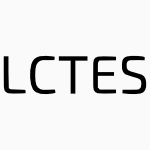 LCTES-2011-BhagatGSG #optimisation
LCTES-2011-BhagatGSG #optimisation- Global productiveness propagation: a code optimization technique to speculatively prune useless narrow computations (IB, EG, FJS, AG), pp. 161–170.
 ICST-2011-ShenFZ #fault #named #ranking
ICST-2011-ShenFZ #fault #named #ranking- EFindBugs: Effective Error Ranking for FindBugs (HS, JF, JZ), pp. 299–308.
 ISSTA-2011-ArcuriB #adaptation #question #random testing #testing
ISSTA-2011-ArcuriB #adaptation #question #random testing #testing- Adaptive random testing: an illusion of effectiveness? (AA, LCB), pp. 265–275.
 ECDL-2010-MomtaziLK #retrieval
ECDL-2010-MomtaziLK #retrieval- Effective Term Weighting for Sentence Retrieval (SM, ML, DK), pp. 482–485.
 ECDL-2010-PalacioCSH #case study #evaluation #framework #information retrieval #library
ECDL-2010-PalacioCSH #case study #evaluation #framework #information retrieval #library- Measuring Effectiveness of Geographic IR Systems in Digital Libraries — Evaluation Framework and Case Study (DP, GC, CS, GH), pp. 340–351.
 JCDL-2010-FerreiraVGL #ambiguity #library #self
JCDL-2010-FerreiraVGL #ambiguity #library #self- Effective self-training author name disambiguation in scholarly digital libraries (AAF, AV, MAG, AHFL), pp. 39–48.
 VLDB-2010-ChengLYLLX #database #scalability
VLDB-2010-ChengLYLLX #database #scalability- Explore or Exploit? Effective Strategies for Disambiguating Large Databases (RC, EL, XSY, MHL, XL, XX), pp. 815–825.
 VLDB-2010-XuZTY #data-driven #database #distance #performance #probability #similarity
VLDB-2010-XuZTY #data-driven #database #distance #performance #probability #similarity- Efficient and Effective Similarity Search over Probabilistic Data based on Earth Mover’s Distance (JX, ZZ, AKHT, GY), pp. 758–769.
 CSEET-2010-Thompson #industrial #re-engineering #why
CSEET-2010-Thompson #industrial #re-engineering #why- Why Better Industrial/Academic Links Are Needed If There is to Be an Effective Software Engineering Workforce (JBT), pp. 105–112.
 EDM-2010-JeongBJH #analysis #behaviour #learning #markov #modelling #using
EDM-2010-JeongBJH #analysis #behaviour #learning #markov #modelling #using- Analysis of Productive Learning Behaviors in a Structured Inquiry Cycle Using Hidden Markov Models (HJ, GB, JJ, LH), pp. 81–90.
 ITiCSE-2010-JalilNI
ITiCSE-2010-JalilNI - Evaluating the effectiveness of a pattern application support tool for novices (MJ, SAN, SBI), pp. 239–243.
 ICPC-2010-BeyerF10b #dependence #low level
ICPC-2010-BeyerF10b #dependence #low level- A Simple and Effective Measure for Complex Low-Level Dependencies (DB, AF), pp. 80–83.
 SCAM-2010-LuoHDQ #concurrent #debugging #java #static analysis
SCAM-2010-LuoHDQ #concurrent #debugging #java #static analysis- Effective Static Analysis to Find Concurrency Bugs in Java (ZDL, LH, RD, YQ), pp. 135–144.
 SEFM-2010-Pavlovic #overview #perspective #security
SEFM-2010-Pavlovic #overview #perspective #security- The Unreasonable Ineffectiveness of Security Engineering: An Overview (DP), pp. 12–18.
 FDG-2010-ThomasD #evaluation #game studies #social #towards
FDG-2010-ThomasD #evaluation #game studies #social #towards- Toward effective game-based social skills tutoring for children: an evaluation of a social adventure game (JMT, MED), pp. 217–223.
 CHI-2010-QuinnT #independence #performance #usability
CHI-2010-QuinnT #independence #performance #usability- Attractive phones don’t have to work better: independent effects of attractiveness, effectiveness, and efficiency on perceived usability (JMQ, TQT), pp. 353–362.
 CHI-2010-ShengHKCD #analysis
CHI-2010-ShengHKCD #analysis- Who falls for phish?: a demographic analysis of phishing susceptibility and effectiveness of interventions (SS, MBH, PK, LFC, JSD), pp. 373–382.
 ICEIS-AIDSS-2010-CuzzocreaFP #abstraction #analysis #collaboration #flexibility #mining #process
ICEIS-AIDSS-2010-CuzzocreaFP #abstraction #analysis #collaboration #flexibility #mining #process- Effective Analysis of Flexible Collaboration Processes by Way of Abstraction and Mining Techniques (AC, FF, LP), pp. 157–166.
 ICEIS-DISI-2010-KasprzakBCO #enterprise #scalability #using
ICEIS-DISI-2010-KasprzakBCO #enterprise #scalability #using- Access Rights in Enterprise Full-text Search — Searching Large Intranets Effectively using Virtual Terms (JK, MB, MC, TO), pp. 32–39.
 ICEIS-HCI-2010-MuranoT #feedback #statistics
ICEIS-HCI-2010-MuranoT #feedback #statistics- Effectiveness and Preferences of Anthropomorphic Feedback in a Statistics Context (PM, NMT), pp. 143–148.
 ICEIS-ISAS-2010-IizukaIT #analysis #approach #process #re-engineering
ICEIS-ISAS-2010-IizukaIT #analysis #approach #process #re-engineering- Analysis of Effective Approach for Business Process re-Engineering — From the Perspective of Organizational Factors (KI, YI, KT), pp. 384–389.
 CIKM-2010-CaoBYCT #approach #mining #mobile
CIKM-2010-CaoBYCT #approach #mining #mobile- An effective approach for mining mobile user habits (HC, TB, QY, EC, JT), pp. 1677–1680.
 ECIR-2010-HauffAHJ #evaluation #performance #predict #query
ECIR-2010-HauffAHJ #evaluation #performance #predict #query- Query Performance Prediction: Evaluation Contrasted with Effectiveness (CH, LA, DH, FdJ), pp. 204–216.
 ECIR-2010-KimCLL #detection #image #named #sequence #using
ECIR-2010-KimCLL #detection #image #named #sequence #using- BASIL: Effective Near-Duplicate Image Detection Using Gene Sequence Alignment (HsK, HWC, JL, DL), pp. 229–240.
 ICPR-2010-BastanlarTYS #hybrid
ICPR-2010-BastanlarTYS #hybrid- Effective Structure-from-Motion for Hybrid Camera Systems (YB, AT, YY, PFS), pp. 1654–1657.
 ICPR-2010-CanerH #documentation #named
ICPR-2010-CanerH #documentation #named- Shape-DNA: Effective Character Restoration and Enhancement for Arabic Text Documents (GC, IH), pp. 2053–2056.
 ICPR-2010-LiP #categorisation #image #multi #representation
ICPR-2010-LiP #categorisation #image #multi #representation- Effective Multi-level Image Representation for Image Categorization (HL, YP), pp. 1048–1051.
 ICPR-2010-MoonQ #reduction
ICPR-2010-MoonQ #reduction- Effective Dimensionality Reduction Based on Support Vector Machine (SM, HQ), pp. 173–176.
 ICPR-2010-RicamatoT #question
ICPR-2010-RicamatoT #question- AUC-based Combination of Dichotomizers: Is Whole Maximization also Effective for Partial Maximization? (MTR, FT), pp. 73–76.
 ICPR-2010-YangQ #approach #detection #distributed #parametricity
ICPR-2010-YangQ #approach #detection #distributed #parametricity- An Effective Decentralized Nonparametric Quickest Detection Approach (DY, HQ), pp. 2278–2281.
 KMIS-2010-HoH #library #network #social
KMIS-2010-HoH #library #network #social- Effectiveness of Social Networking in a University Library Environment (HIH, JH), pp. 307–310.
 SEKE-2010-PatelGS #maintenance #named #testing #web
SEKE-2010-PatelGS #maintenance #named #testing #web- TestDrive — A Cost Effective Way to Create and Maintain Test Scripts for Web Applications (SP, PG, PS), pp. 474–476.
 SEKE-2010-WangXCC #combinator #testing
SEKE-2010-WangXCC #combinator #testing- Cost-Effective Combinatorial Test Case Prioritization for Varying Combination Weights (ZW, BX, LC, ZC), pp. 273–278.
 SIGIR-2010-AzzopardiB #on the
SIGIR-2010-AzzopardiB #on the- On the relationship between effectiveness and accessibility (LA, RB), pp. 889–890.
 SIGIR-2010-KeM #information retrieval #network #performance #scalability
SIGIR-2010-KeM #information retrieval #network #performance #scalability- Scalability of findability: effective and efficient IR operations in large information networks (WK, JM), pp. 74–81.
 SIGIR-2010-LillisZTCLD #data fusion
SIGIR-2010-LillisZTCLD #data fusion- Estimating probabilities for effective data fusion (DL, LZ, FT, RWC, DL, JD), pp. 347–354.
 SIGIR-2010-ShenMYPH #modelling #music #statistics
SIGIR-2010-ShenMYPH #modelling #music #statistics- Effective music tagging through advanced statistical modeling (JS, WM, SY, HP, XSH), pp. 635–642.
 SIGIR-2010-WangH #distance #metric #query #similarity
SIGIR-2010-WangH #distance #metric #query #similarity- Effective query expansion with the resistance distance based term similarity metric (SW, MH), pp. 715–716.
 SIGIR-2010-WangMHC #multi #retrieval #segmentation #towards
SIGIR-2010-WangMHC #multi #retrieval #segmentation #towards- Segmentation of multi-sentence questions: towards effective question retrieval in cQA services (KW, ZM, XH, TSC), pp. 387–394.
 SIGIR-2010-WangZ #analysis #information retrieval #metric #on the #optimisation #statistics
SIGIR-2010-WangZ #analysis #information retrieval #metric #on the #optimisation #statistics- On statistical analysis and optimization of information retrieval effectiveness metrics (JW, JZ), pp. 226–233.
 SIGAda-2010-Bail #requirements
SIGAda-2010-Bail #requirements- Effective requirements engineering (WB), pp. 1–2.
 RE-2010-GacituaSG #abstraction #identification #on the #requirements
RE-2010-GacituaSG #abstraction #identification #on the #requirements- On the Effectiveness of Abstraction Identification in Requirements Engineering (RG, PS, VG), pp. 5–14.
 REFSQ-2010-SakhniniBM #elicitation #requirements #validation
REFSQ-2010-SakhniniBM #elicitation #requirements #validation- Validation of the Effectiveness of an Optimized EPMcreate as an Aid for Creative Requirements Elicitation (VS, DMB, LM), pp. 91–105.
 ASE-2010-LiangWWWXM #automation #set #static analysis
ASE-2010-LiangWWWXM #automation #set #static analysis- Automatic construction of an effective training set for prioritizing static analysis warnings (GL, LW, QW, QW, TX, HM), pp. 93–102.
 ASE-2010-Staats #multi #testing
ASE-2010-Staats #multi #testing- The influence of multiple artifacts on the effectiveness of software testing (MS), pp. 517–522.
 FSE-2010-BajracharyaOL #repository #retrieval #similarity
FSE-2010-BajracharyaOL #repository #retrieval #similarity- Leveraging usage similarity for effective retrieval of examples in code repositories (SKB, JO, CVL), pp. 157–166.
 FSE-2010-JalbertS #concurrent #debugging #source code
FSE-2010-JalbertS #concurrent #debugging #source code- A trace simplification technique for effective debugging of concurrent programs (NJ, KS), pp. 57–66.
 FSE-2010-JoshiNSG #detection #dynamic analysis
FSE-2010-JoshiNSG #detection #dynamic analysis- An effective dynamic analysis for detecting generalized deadlocks (PJ, MN, KS, DG), pp. 327–336.
 FSE-2010-LiCK #analysis #detection
FSE-2010-LiCK #analysis #detection- Practical and effective symbolic analysis for buffer overflow detection (LL, CC, NK), pp. 317–326.
 ICSE-2010-Erdogmus #analysis #re-engineering
ICSE-2010-Erdogmus #analysis #re-engineering- Cost effectiveness analysis in software engineering (HE), pp. 479–480.
 ICSE-2010-Padua #complexity #performance
ICSE-2010-Padua #complexity #performance- Measuring complexity, effectiveness and efficiency in software course projects (WP), pp. 545–554.
 ICSE-2010-TorlakC #detection #interprocedural
ICSE-2010-TorlakC #detection #interprocedural- Effective interprocedural resource leak detection (ET, SC), pp. 535–544.
 SAC-2010-ZhangGCQC #case study #reduction #testing
SAC-2010-ZhangGCQC #case study #reduction #testing- A study of relative redundancy in test-suite reduction while retaining or improving fault-localization effectiveness (XZ, QG, XC, JQ, DC), pp. 2229–2236.
 SLE-2010-GenonHA
SLE-2010-GenonHA - Analysing the Cognitive Effectiveness of the BPMN 2.0 Visual Notation (NG, PH, DA), pp. 377–396.
 DAC-2010-LuoWH #gpu #implementation
DAC-2010-LuoWH #gpu #implementation- An effective GPU implementation of breadth-first search (LL, MDFW, WmWH), pp. 52–55.
 DATE-2010-ChenO #adaptation #identification
DATE-2010-ChenO #adaptation #identification- Cost-effective IR-drop failure identification and yield recovery through a failure-adaptive test scheme (MC, AO), pp. 63–68.
 DATE-2010-LudoviciSGBB #design #flexibility
DATE-2010-LudoviciSGBB #design #flexibility- Design space exploration of a mesochronous link for cost-effective and flexible GALS NOCs (DL, AS, GNG, LB, DB), pp. 679–684.
 DATE-2010-MeyerHT
DATE-2010-MeyerHT - Cost-effective slack allocation for lifetime improvement in NoC-based MPSoCs (BHM, ASH, DET), pp. 1596–1601.
 OSDI-2010-EricksonMBO #concurrent #detection #kernel
OSDI-2010-EricksonMBO #concurrent #detection #kernel- Effective Data-Race Detection for the Kernel (JE, MM, SB, KO), pp. 151–162.
 PPoPP-2010-Chakrabarti #abstraction #analysis #performance #source code
PPoPP-2010-Chakrabarti #abstraction #analysis #performance #source code- New abstractions for effective performance analysis of STM programs (DRC), pp. 333–334.
 PPoPP-2010-CoonsBM #concurrent #library #named #testing
PPoPP-2010-CoonsBM #concurrent #library #named #testing- GAMBIT: effective unit testing for concurrency libraries (KEC, SB, MM), pp. 15–24.
 PPoPP-2010-MarjanovicLAV #communication #hybrid
PPoPP-2010-MarjanovicLAV #communication #hybrid- Effective communication and computation overlap with hybrid MPI/SMPSs (VM, JL, EA, MV), pp. 337–338.
 FASE-2010-CortellessaMRT #identification #performance #process
FASE-2010-CortellessaMRT #identification #performance #process- A Process to Effectively Identify “Guilty” Performance Antipatterns (VC, AM, RHR, CT), pp. 368–382.
 ICLP-J-2010-AlvianoFL #decidability #query
ICLP-J-2010-AlvianoFL #decidability #query- Disjunctive ASP with functions: Decidable queries and effective computation (MA, WF, NL), pp. 497–512.
 ICST-2010-NagahawatteD #fault #testing
ICST-2010-NagahawatteD #fault #testing- The Effectiveness of Regression Testing Techniques in Reducing the Occurrence of Residual Defects (PN, HD), pp. 79–88.
 ISSTA-2010-ArcuriIB #analysis #formal method #predict #random testing #testing
ISSTA-2010-ArcuriIB #analysis #formal method #predict #random testing #testing- Formal analysis of the effectiveness and predictability of random testing (AA, MZZI, LCB), pp. 219–230.
 ISSTA-2010-ArtziDTP #fault #generative #locality #testing
ISSTA-2010-ArtziDTP #fault #generative #locality #testing- Directed test generation for effective fault localization (SA, JD, FT, MP), pp. 49–60.
 SAT-2010-GiunchigliaMN #equivalence #named #preprocessor #reasoning
SAT-2010-GiunchigliaMN #equivalence #named #preprocessor #reasoning- sQueezeBF: An Effective Preprocessor for QBFs Based on Equivalence Reasoning (EG, PM, MN), pp. 85–98.
 WICSA-ECSA-2009-AngelovGG #architecture #classification
WICSA-ECSA-2009-AngelovGG #architecture #classification- A classification of software reference architectures: Analyzing their success and effectiveness (SA, PWPJG, DG), pp. 141–150.
 ECDL-2009-BuccioMM #information retrieval #network #peer-to-peer #query
ECDL-2009-BuccioMM #information retrieval #network #peer-to-peer #query- Improving Information Retrieval Effectiveness in Peer-to-Peer Networks through Query Piggybacking (EDB, IM, MM), pp. 420–424.
 VLDB-2009-ZhangCJOZ #nondeterminism #predict #query
VLDB-2009-ZhangCJOZ #nondeterminism #predict #query- Effectively Indexing Uncertain Moving Objects for Predictive Queries (MZ, SC, CSJ, BCO, ZZ), pp. 1198–1209.
 ITiCSE-2009-ChandrasekarTP #tablet
ITiCSE-2009-ChandrasekarTP #tablet- WriteOn1.0: a tablet PC-based tool for effective classroom instruction (SC, JGT, JCP), pp. 323–327.
 SIGITE-2009-IslamS #architecture #distance #distributed #education
SIGITE-2009-IslamS #architecture #distance #distributed #education- A cost-effective distributed architecture to enable distance education over emerging wireless technologies (KRI, CMS), pp. 182–188.
 ICPC-2009-CeccatoPNFRTT #assessment #obfuscation #source code
ICPC-2009-CeccatoPNFRTT #assessment #obfuscation #source code- The effectiveness of source code obfuscation: An experimental assessment (MC, MDP, JN, PF, FR, MT, PT), pp. 178–187.
 ICSM-2009-JeffreyGG #fault #locality #multi #performance #using
ICSM-2009-JeffreyGG #fault #locality #multi #performance #using- Effective and efficient localization of multiple faults using value replacement (DJ, NG, RG), pp. 221–230.
 ICALP-v1-2009-HoyrupR #probability
ICALP-v1-2009-HoyrupR #probability- Applications of Effective Probability Theory to Martin-Löf Randomness (MH, CR), pp. 549–561.
 CEFP-2009-KoopmanPA #consistency #semantics
CEFP-2009-KoopmanPA #consistency #semantics- An Effective Methodology for Defining Consistent Semantics of Complex Systems (PWMK, RP, PA), pp. 224–267.
 ICFP-2009-ChlipalaMMSW #higher-order #imperative #interactive #proving #source code
ICFP-2009-ChlipalaMMSW #higher-order #imperative #interactive #proving #source code- Effective interactive proofs for higher-order imperative programs (AC, JGM, GM, AS, RW), pp. 79–90.
 FDG-2009-McGill09a #education #game studies #learning
FDG-2009-McGill09a #education #game studies #learning- Evaluating the effectiveness of hypothesis-based digital learning games in high school science curriculum (MM), pp. 344–345.
 CHI-2009-Gerber #using
CHI-2009-Gerber #using- Using improvisation to enhance the effectiveness of brainstorming (EG), pp. 97–104.
 CHI-2009-ZimmermanRHTM #communication
CHI-2009-ZimmermanRHTM #communication- User-created forms as an effective method of human-agent communication (JZ, KR, IH, AT, KM), pp. 1869–1878.
 HCD-2009-CausseH #visual notation
HCD-2009-CausseH #visual notation- The Physiological User’s Response as a Clue to Assess Visual Variables Effectiveness (MC, CH), pp. 167–176.
 HCD-2009-MarcengoGR #design #research
HCD-2009-MarcengoGR #design #research- Personas Layering: A Cost Effective Model for Service Design in Medium-Long Term Telco Research Projects (AM, EG, AR), pp. 256–265.
 HCD-2009-ShibukawaFIN #using
HCD-2009-ShibukawaFIN #using- Fundamental Studies on Effective e-Learning Using Physiology Indices (MS, MFF, YI, SPN), pp. 795–804.
 HCD-2009-UrokoharaYNK #guidelines
HCD-2009-UrokoharaYNK #guidelines- A Proposal for “Work-Effective Guidelines” for the Growth of HCD (HU, TY, HN, SK), pp. 1080–1089.
 HCI-AUII-2009-SongPJPKJ #human-computer #interactive #multi #using
HCI-AUII-2009-SongPJPKJ #human-computer #interactive #multi #using- Multi-pointing Method Using a Desk Lamp and Single Camera for Effective Human-Computer Interaction (TS, TCP, SJ, JHP, KHK, JWJ), pp. 520–525.
 HCI-NIMT-2009-KasamatsuMIJ #feedback #visual notation
HCI-NIMT-2009-KasamatsuMIJ #feedback #visual notation- Effective Combination of Haptic, Auditory and Visual Information Feedback in Operation Feeling (KK, TM, KI, HJ), pp. 58–65.
 HCI-NIMT-2009-NakanishiOY #case study
HCI-NIMT-2009-NakanishiOY #case study- A Study on Effective Tactile Feeling of Control Panels for Electrical Appliances (MN, YO, SY), pp. 486–495.
 HCI-NIMT-2009-Whitman #diagrams
HCI-NIMT-2009-Whitman #diagrams- The Effectiveness of Interactivity in Computer-Based Instructional Diagrams (LW), pp. 899–908.
 HCI-NIMT-2009-YonemuraEK
HCI-NIMT-2009-YonemuraEK - Effectiveness of the Text Display in Bilingual Presentation of JSL/JT for Emergency Information (SY, SE, KK), pp. 761–769.
 HCI-NT-2009-EfeO #interface
HCI-NT-2009-EfeO #interface- Evaluating User Effectiveness in Exploratory Search with TouchGraph Google Interface (KE, SO), pp. 405–412.
 HCI-NT-2009-PujolU #design
HCI-NT-2009-PujolU #design- Productive Love: A New Proposal for Designing Affective Technology (RSP, HU), pp. 725–734.
 HIMI-DIE-2009-MatsumotoSS #case study #visual notation
HIMI-DIE-2009-MatsumotoSS #case study #visual notation- A Study on Effective Methods of Visual Inspection for Reused-Parts by Inspectors (TM, HS, KS), pp. 131–139.
 HIMI-II-2009-LiuZL #collaboration #design #empirical #learning #perspective
HIMI-II-2009-LiuZL #collaboration #design #empirical #learning #perspective- An Empirical Investigation on the Effectiveness of Virtual Learning Environment in Supporting Collaborative Learning: A System Design Perspective (NL, YZ, JL), pp. 650–659.
 HIMI-II-2009-MarcoMFG #image #performance
HIMI-II-2009-MarcoMFG #image #performance- Evaluating the Effectiveness and the Efficiency of a Vector Image Search Tool (PDM, TDM, DF, MG), pp. 259–268.
 CAiSE-2009-JiangBBM #quality
CAiSE-2009-JiangBBM #quality- Measuring and Comparing Effectiveness of Data Quality Techniques (LJ, DB, AB, JM), pp. 171–185.
 ICEIS-HCI-2009-NakanishiTO #artificial reality #complexity #design #guidelines #using #verification
ICEIS-HCI-2009-NakanishiTO #artificial reality #complexity #design #guidelines #using #verification- Study for Establishing Design Guidelines for Manuals using Augmented Reality Technology — Verification and Expansion of the Basic Model Describing “Effective Complexity” (MN, SiT, YO), pp. 21–26.
 ICEIS-ISAS-2009-Damij #modelling #process
ICEIS-ISAS-2009-Damij #modelling #process- An Effective Process Modelling Technique (ND), pp. 298–303.
 CIKM-2009-AlgarniLXL #feedback #information management #using
CIKM-2009-AlgarniLXL #feedback #information management #using- An effective model of using negative relevance feedback for information filtering (AA, YL, YX, RYKL), pp. 1605–1608.
 CIKM-2009-Azzopardi #information retrieval #metric #monitoring #performance
CIKM-2009-Azzopardi #information retrieval #metric #monitoring #performance- Usage based effectiveness measures: monitoring application performance in information retrieval (LA), pp. 631–640.
 CIKM-2009-ChenBRT #adaptation #on the #similarity
CIKM-2009-ChenBRT #adaptation #on the #similarity- On domain similarity and effectiveness of adapting-to-rank (KC, JB, SR, BLT), pp. 1601–1604.
 CIKM-2009-HalimKY #performance
CIKM-2009-HalimKY #performance- Fast and effective histogram construction (FH, PK, RHCY), pp. 1167–1176.
 CIKM-2009-HongHVAA #query
CIKM-2009-HongHVAA #query- Effective anonymization of query logs (YH, XH, JV, NRA, VA), pp. 1465–1468.
 CIKM-2009-JiaYM #analysis #retrieval #sentiment
CIKM-2009-JiaYM #analysis #retrieval #sentiment- The effect of negation on sentiment analysis and retrieval effectiveness (LJ, CTY, WM), pp. 1827–1830.
 CIKM-2009-LiuWC #ranking #retrieval #xml
CIKM-2009-LiuWC #ranking #retrieval #xml- Effective XML content and structure retrieval with relevance ranking (XL, CW, LC), pp. 147–156.
 CIKM-2009-MassSS #network #scalability
CIKM-2009-MassSS #network #scalability- A scalable and effective full-text search in P2P networks (YM, YS, MSS), pp. 1979–1982.
 CIKM-2009-TermehchyW #independence #keyword #xml
CIKM-2009-TermehchyW #independence #keyword #xml- Effective, design-independent XML keyword search (AT, MW), pp. 107–116.
 CIKM-2009-WangTSZ
CIKM-2009-WangTSZ - Beyond hyperlinks: organizing information footprints in search logs to support effective browsing (XW, BT, AS, CZ), pp. 1237–1246.
 CIKM-2009-ZhaoC #performance #retrieval
CIKM-2009-ZhaoC #performance #retrieval- Effective and efficient structured retrieval (LZ, JC), pp. 1573–1576.
 ECIR-2009-FetterlyCV
ECIR-2009-FetterlyCV - Measuring the Search Effectiveness of a Breadth-First Crawl (DF, NC, VV), pp. 388–399.
 ECIR-2009-HeO #query
ECIR-2009-HeO #query- Studying Query Expansion Effectiveness (BH, IO), pp. 611–619.
 ECIR-2009-TanMG #documentation #web
ECIR-2009-TanMG #documentation #web- Effectively Searching Maps in Web Documents (QT, PM, CLG), pp. 162–176.
 KDD-2009-YangSWC #classification #learning #multi
KDD-2009-YangSWC #classification #learning #multi- Effective multi-label active learning for text classification (BY, JTS, TW, ZC), pp. 917–926.
 RecSys-2009-ChengH #modelling #obfuscation #recommendation
RecSys-2009-ChengH #modelling #obfuscation #recommendation- Effective diverse and obfuscated attacks on model-based recommender systems (ZC, NH), pp. 141–148.
 RecSys-2009-JannachH #case study #internet #mobile #recommendation
RecSys-2009-JannachH #case study #internet #mobile #recommendation- A case study on the effectiveness of recommendations in the mobile internet (DJ, KH), pp. 205–208.
 SIGIR-2009-AslamKPSY #documentation #performance #ranking
SIGIR-2009-AslamKPSY #documentation #performance #ranking- Document selection methodologies for efficient and effective learning-to-rank (JAA, EK, VP, SS, EY), pp. 468–475.
 SIGIR-2009-Azzopardi #analysis #empirical #evaluation #query
SIGIR-2009-Azzopardi #analysis #empirical #evaluation #query- Query side evaluation: an empirical analysis of effectiveness and effort (LA), pp. 556–563.
 SIGIR-2009-FetterlyCV #policy #web
SIGIR-2009-FetterlyCV #policy #web- The impact of crawl policy on web search effectiveness (DF, NC, VV), pp. 580–587.
 SIGIR-2009-HauffA #performance #predict #query #question
SIGIR-2009-HauffA #performance #predict #query #question- When is query performance prediction effective? (CH, LA), pp. 829–830.
 SIGIR-2009-KeSM #clustering #online
SIGIR-2009-KeSM #clustering #online- Dynamicity vs. effectiveness: studying online clustering for scatter/gather (WK, CRS, JM), pp. 19–26.
 SIGIR-2009-ShokouhiAT #query
SIGIR-2009-ShokouhiAT #query- Effective query expansion for federated search (MS, LA, PT), pp. 427–434.
 PLDI-2009-MarinoMN #concurrent #detection #lightweight #named
PLDI-2009-MarinoMN #concurrent #detection #lightweight #named- LiteRace: effective sampling for lightweight data-race detection (DM, MM, SN), pp. 134–143.
 PLDI-2009-TrippPFSW #analysis #named #web
PLDI-2009-TrippPFSW #analysis #named #web- TAJ: effective taint analysis of web applications (OT, MP, SJF, MS, OW), pp. 87–97.
 RE-2009-MoodyHM #evaluation #requirements #syntax #visual notation
RE-2009-MoodyHM #evaluation #requirements #syntax #visual notation- Improving the Effectiveness of Visual Representations in Requirements Engineering: An Evaluation of i* Visual Syntax (DLM, PH, RM), pp. 171–180.
 ICSE-2009-ChilimbiLMNV #debugging #named #performance #profiling #statistics
ICSE-2009-ChilimbiLMNV #debugging #named #performance #profiling #statistics- HOLMES: Effective statistical debugging via efficient path profiling (TMC, BL, KKM, AVN, KV), pp. 34–44.
 ICSE-2009-NaikPSG #concurrent #detection
ICSE-2009-NaikPSG #concurrent #detection- Effective static deadlock detection (MN, CSP, KS, DG), pp. 386–396.
 SAC-2009-BolingerHRR #collaboration #workflow
SAC-2009-BolingerHRR #collaboration #workflow- Collaborative workflow assistant for organizational effectiveness (JB, GH, JR, RR), pp. 273–280.
 SAC-2009-DemailleLS #abstract syntax tree #named #parsing #using
SAC-2009-DemailleLS #abstract syntax tree #named #parsing #using- TWEAST: a simple and effective technique to implement concrete-syntax AST rewriting using partial parsing (AD, RL, BS), pp. 1924–1929.
 SAC-2009-LeeJKKKC #process
SAC-2009-LeeJKKKC #process- Shader space navigator: a turbo for an intuitive and effective shading process (JHL, MHJ, DYK, SWK, MHK, JSC), pp. 945–946.
 SAC-2009-LinfordS #parallel
SAC-2009-LinfordS #parallel- Vector stream processing for effective application of heterogeneous parallelism (JCL, AS), pp. 976–980.
 CASE-2009-FanL #ranking
CASE-2009-FanL #ranking- A Bayesian Ranking Scheme for supporting cost-effective yield diagnosis services (CMF, YPL), pp. 427–432.
 CASE-2009-HuangL #approach #assessment #multi
CASE-2009-HuangL #approach #assessment #multi- A multi-disciplinary approach for effective hand rehabilitation with clinical-based assessment outcomes (YYH, KHL), pp. 597–603.
 DAC-2009-LingVFA #analysis
DAC-2009-LingVFA #analysis- A moment-based effective characterization waveform for static timing analysis (DDL, CV, PF, SA), pp. 19–24.
 DAC-2009-PlishkerSB #data flow #scheduling
DAC-2009-PlishkerSB #data flow #scheduling- Mode grouping for more effective generalized scheduling of dynamic dataflow applications (WP, NS, SSB), pp. 923–926.
 DATE-2009-PaciBB #adaptation #bias #communication #variability
DATE-2009-PaciBB #adaptation #bias #communication #variability- Effectiveness of adaptive supply voltage and body bias as post-silicon variability compensation techniques for full-swing and low-swing on-chip communication channels (GP, DB, LB), pp. 1404–1409.
 PDP-2009-Ito #analysis #evaluation #parametricity
PDP-2009-Ito #analysis #evaluation #parametricity- Job Scheduler Parameter Analysis for Evaluation of Effectiveness (RI), pp. 62–69.
 PPoPP-2009-BaskaranVBRRS #manycore #parallel #scheduling
PPoPP-2009-BaskaranVBRRS #manycore #parallel #scheduling- Compiler-assisted dynamic scheduling for effective parallelization of loop nests on multicore processors (MMB, NV, UB, JR, AR, PS), pp. 219–228.
 PPoPP-2009-TallentM #analysis #metric #parallel #performance #thread
PPoPP-2009-TallentM #analysis #metric #parallel #performance #thread- Effective performance measurement and analysis of multithreaded applications (NRT, JMMC), pp. 229–240.
 ICLP-2009-Moura #encapsulation #prolog #reuse
ICLP-2009-Moura #encapsulation #prolog #reuse- From Plain Prolog to Logtalk Objects: Effective Code Encapsulation and Reuse (PM), p. 23.
 ICST-2009-LeitnerPMMO #on the
ICST-2009-LeitnerPMMO #on the- On the Effectiveness of Test Extraction without Overhead (AL, AP, SM, BM, MO), pp. 416–425.
 ICST-2009-WedyanAB #automation #detection #fault #predict #refactoring #static analysis #tool support
ICST-2009-WedyanAB #automation #detection #fault #predict #refactoring #static analysis #tool support- The Effectiveness of Automated Static Analysis Tools for Fault Detection and Refactoring Prediction (FW, DA, JMB), pp. 141–150.
 ISSTA-2009-NaminA #testing
ISSTA-2009-NaminA #testing- The influence of size and coverage on test suite effectiveness (ASN, JHA), pp. 57–68.
 ISSTA-2009-YooHTS #clustering #scalability #testing
ISSTA-2009-YooHTS #clustering #scalability #testing- Clustering test cases to achieve effective and scalable prioritisation incorporating expert knowledge (SY, MH, PT, AS), pp. 201–212.
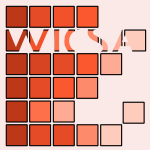 WICSA-2008-Malek #architecture #aspect-oriented
WICSA-2008-Malek #architecture #aspect-oriented- Effective Realization of Software Architectural Styles with Aspects (SM), pp. 313–316.
 PODS-2008-Bojanzyk #logic
PODS-2008-Bojanzyk #logic- Effective characterizations of tree logics (MB), pp. 53–66.
 SIGMOD-2008-LiOFWZ #keyword #named
SIGMOD-2008-LiOFWZ #keyword #named- EASE: an effective 3-in-1 keyword search method for unstructured, semi-structured and structured data (GL, BCO, JF, JW, LZ), pp. 903–914.
 SIGMOD-2008-MaWLCPY #data transformation #performance #semantics #web
SIGMOD-2008-MaWLCPY #data transformation #performance #semantics #web- Effective and efficient semantic web data management over DB2 (LM, CW, JL, FC, YP, YY), pp. 1183–1194.
 VLDB-2008-LiFWZ #data flow #keyword
VLDB-2008-LiFWZ #data flow #keyword- An effective and versatile keyword search engine on heterogenous data sources (GL, JF, JW, LZ), pp. 1452–1455.
 VLDB-2008-ShaoSZ #challenge #database #performance #scalability #similarity #video
VLDB-2008-ShaoSZ #challenge #database #performance #scalability #similarity #video- Challenges and techniques for effective and efficient similarity search in large video databases (JS, HTS, XZ), pp. 1598–1603.
 EDM-2008-ChiJVH #tutorial
EDM-2008-ChiJVH #tutorial- Reinforcement Learning-based Feature Seleciton For Developing Pedagogically Effective Tutorial Dialogue Tactics (MC, PWJ, KV, MH), pp. 258–265.
 PASTE-2008-ZhangLGZ #approach #hybrid #identification
PASTE-2008-ZhangLGZ #approach #hybrid #identification- Effective identification of failure-inducing changes: a hybrid approach (SZ, YL, ZG, JZ), pp. 77–83.
 RTA-2008-EscobarMS #finite
RTA-2008-EscobarMS #finite- Effectively Checking the Finite Variant Property (SE, JM, RS), pp. 79–93.
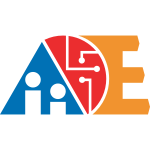 AIIDE-2008-TanC #adaptation #game studies #named #representation
AIIDE-2008-TanC #adaptation #game studies #named #representation- TAP: An Effective Personality Representation for Inter-Agent Adaptation in Games (CTT, HLC).
 CHI-2008-EgelmanCH #empirical #web
CHI-2008-EgelmanCH #empirical #web- You’ve been warned: an empirical study of the effectiveness of web browser phishing warnings (SE, LFC, JIH), pp. 1065–1074.
 CHI-2008-HogganBJ #feedback #mobile
CHI-2008-HogganBJ #feedback #mobile- Investigating the effectiveness of tactile feedback for mobile touchscreens (EEH, SAB, JJ), pp. 1573–1582.
 CSCW-2008-BardzellBPR
CSCW-2008-BardzellBPR - Blissfully productive: grouping and cooperation in world of warcraft instance runs (SB, JB, TP, KNR), pp. 357–360.
 CSCW-2008-LiaoL #design #network #user interface
CSCW-2008-LiaoL #design #network #user interface- Network patterns: designing effective user interfaces for connections management at work (QL, QL), pp. 707–710.
 CAiSE-2008-SienaMLKPS #case study #modelling #traceability
CAiSE-2008-SienaMLKPS #case study #modelling #traceability- Exploring the Effectiveness of Normative i* Modelling: Results from a Case Study on Food Chain Traceability (AS, NAMM, JL, IKK, AP, AS), pp. 182–196.
 ICEIS-DISI-2008-CallegariRRB #development #process
ICEIS-DISI-2008-CallegariRRB #development #process- An Integrated Model for Managerial and Productive Activities in Software Development (DAC, MCR, MBR, RMB), pp. 25–32.
 ICEIS-HCI-2008-MuranoEH #feedback #user interface
ICEIS-HCI-2008-MuranoEH #feedback #user interface- Effectiveness and Preferences of Anthropomorphic User Interface Feedback in a PC Building Context and Cognitive Load (PM, CE, POH), pp. 181–188.
 CIKM-2008-AlqadahB #algorithm #clustering #mining
CIKM-2008-AlqadahB #algorithm #clustering #mining- An effective algorithm for mining 3-clusters in vertically partitioned data (FA, RB), pp. 1103–1112.
 CIKM-2008-ChenLYH #approach #graph #on the
CIKM-2008-ChenLYH #approach #graph #on the- On effective presentation of graph patterns: a structural representative approach (CC, CXL, XY, JH), pp. 299–308.
 CIKM-2008-FanWLZH #framework #graph #named
CIKM-2008-FanWLZH #framework #graph #named- GHOST: an effective graph-based framework for name distinction (XF, JW, BL, LZ, WH), pp. 1449–1450.
 CIKM-2008-HeMHO #approach #retrieval #statistics
CIKM-2008-HeMHO #approach #retrieval #statistics- An effective statistical approach to blog post opinion retrieval (BH, CM, JH, IO), pp. 1063–1072.
 CIKM-2008-LiWT #documentation #mining #taxonomy
CIKM-2008-LiWT #documentation #mining #taxonomy- Effective pattern taxonomy mining in text documents (YL, STW, XT), pp. 1509–1510.
 CIKM-2008-NajorkC #analysis #performance
CIKM-2008-NajorkC #analysis #performance- Efficient and effective link analysis with precomputed salsa maps (MN, NC), pp. 53–62.
 CIKM-2008-VinayMC #rank #retrieval #using
CIKM-2008-VinayMC #rank #retrieval #using- Estimating retrieval effectiveness using rank distributions (VV, NMF, IJC), pp. 1425–1426.
 CIKM-2008-WangZ #mining #query
CIKM-2008-WangZ #mining #query- Mining term association patterns from search logs for effective query reformulation (XW, CZ), pp. 479–488.
 CIKM-2008-ZhangJYM #classification #retrieval
CIKM-2008-ZhangJYM #classification #retrieval- Improve the effectiveness of the opinion retrieval and opinion polarity classification (WZ, LJ, CTY, WM), pp. 1415–1416.
 ECIR-2008-ShokouhiST #documentation #order
ECIR-2008-ShokouhiST #documentation #order- Investigating the Effectiveness of Clickthrough Data for Document Reordering (MS, FS, AT), pp. 591–595.
 ECIR-2008-ZhaoST #performance #predict #query #similarity #using #variability
ECIR-2008-ZhaoST #performance #predict #query #similarity #using #variability- Effective Pre-retrieval Query Performance Prediction Using Similarity and Variability Evidence (YZ, FS, YT), pp. 52–64.
 ICPR-2008-BarratT #image #network #retrieval #semantics #using #visual notation
ICPR-2008-BarratT #image #network #retrieval #semantics #using #visual notation- Visual features with semantic combination using Bayesian network for a more effective image retrieval (SB, ST), pp. 1–4.
 ICPR-2008-LuJZ #detection #segmentation
ICPR-2008-LuJZ #detection #segmentation- An effective method for detection and segmentation of the body of human in the view of a single stationary camera (HL, CJ, RZ), pp. 1–4.
 ICPR-2008-MaWHJG
ICPR-2008-MaWHJG - Effective scene matching with local feature representatives (SM, WW, QH, SJ, WG), pp. 1–4.
 ICPR-2008-TombariMSA #realtime
ICPR-2008-TombariMSA #realtime- Near real-time stereo based on effective cost aggregation (FT, SM, LdS, EA), pp. 1–4.
 ICPR-2008-WuJP #detection #linear
ICPR-2008-WuJP #detection #linear- Effective features based on normal linear structures for detecting microcalcifications in mammograms (ZQW, JJ, YP), pp. 1–4.
 KDD-2008-BilgicG #classification
KDD-2008-BilgicG #classification- Effective label acquisition for collective classification (MB, LG), pp. 43–51.
 KDD-2008-JinAXR #performance #summary
KDD-2008-JinAXR #performance #summary- Effective and efficient itemset pattern summarization: regression-based approaches (RJ, MAA, YX, NR), pp. 399–407.
 SIGIR-2008-Al-MaskariSCA #predict #question
SIGIR-2008-Al-MaskariSCA #predict #question- The good and the bad system: does the test collection predict users’ effectiveness? (AAM, MS, PDC, EA), pp. 59–66.
 SIGIR-2008-FetterlyCV
SIGIR-2008-FetterlyCV - Search effectiveness with a breadth-first crawl (DF, NC, VV), pp. 755–756.
 SIGIR-2008-GuanWCBW #crawling #estimation #online #topic #using
SIGIR-2008-GuanWCBW #crawling #estimation #online #topic #using- Guide focused crawler efficiently and effectively using on-line topical importance estimation (ZG, CW, CC, JB, JW), pp. 757–758.
 SIGIR-2008-KumaranA #interactive #performance #query
SIGIR-2008-KumaranA #interactive #performance #query- Effective and efficient user interaction for long queries (GK, JA), pp. 11–18.
 ASE-2008-AndrewsGWX #random testing
ASE-2008-AndrewsGWX #random testing- Random Test Run Length and Effectiveness (JHA, AG, MW, RGX), pp. 19–28.
 ASE-2008-DanielB #automation #predict #testing #tool support
ASE-2008-DanielB #automation #predict #testing #tool support- Predicting Effectiveness of Automatic Testing Tools (BD, MB), pp. 363–366.
 FSE-2008-JiangS #analysis #testing
FSE-2008-JiangS #analysis #testing- Profile-guided program simplification for effective testing and analysis (LJ, ZS), pp. 48–58.
 FSE-2008-KingJJS #data flow
FSE-2008-KingJJS #data flow- Effective blame for information-flow violations (DK, TJ, SJ, SAS), pp. 250–260.
 ICSE-2008-NaminAM
ICSE-2008-NaminAM - Sufficient mutation operators for measuring test effectiveness (ASN, JHA, DJM), pp. 351–360.
 SAC-2008-BuenoTT #algorithm #data access #metric #optimisation
SAC-2008-BuenoTT #algorithm #data access #metric #optimisation- An algorithm for effective deletion and a new optimization technique for metric access methods (RB, AJMT, CTJ), pp. 1034–1035.
 SAC-2008-YuB #detection #multi #performance
SAC-2008-YuB #detection #multi #performance- A fast and effective method to detect multiple least significant bits steganography (XY, NB), pp. 1443–1447.
 SLE-2008-MoodyH #analysis #diagrams #syntax #uml #visual notation
SLE-2008-MoodyH #analysis #diagrams #syntax #uml #visual notation- Evaluating the Visual Syntax of UML: An Analysis of the Cognitive Effectiveness of the UMLFamily of Diagrams (DLM, JvH), pp. 16–34.
 CASE-2008-GarciaJMM #analysis #distributed #modelling
CASE-2008-GarciaJMM #analysis #distributed #modelling- A procedure for modeling and analysis of service-oriented and distributed productive systems (JIG, FJ, RAGM, PEM), pp. 941–946.
 CASE-2008-SunWHRW #case study #identification #monitoring #set
CASE-2008-SunWHRW #case study #identification #monitoring #set- Identification of feature set for effective tool condition monitoring — a case study in titanium machining (JS, YSW, GSH, MR, ZW), pp. 273–278.
 DAC-2008-LuSHWX #multi #optimisation
DAC-2008-LuSHWX #multi #optimisation- Customizing computation accelerators for extensible multi-issue processors with effective optimization techniques (YSL, LS, LH, ZW, NX), pp. 197–200.
 DATE-2008-XueSSQ #clustering #constraints #memory management #scheduling
DATE-2008-XueSSQ #clustering #constraints #memory management #scheduling- Effective Loop Partitioning and Scheduling under Memory and Register Dual Constraints (CJX, EHMS, ZS, MQ), pp. 1202–1207.
 STOC-2008-Nandakumar #theorem
STOC-2008-Nandakumar #theorem- An effective ergodic theorem and some applications (SN), pp. 39–44.
 STOC-2008-SpielmanS #graph
STOC-2008-SpielmanS #graph- Graph sparsification by effective resistances (DAS, NS), pp. 563–568.
 CAV-2008-BurckhardtM #memory management #modelling #verification
CAV-2008-BurckhardtM #memory management #modelling #verification- Effective Program Verification for Relaxed Memory Models (SB, MM), pp. 107–120.
 ICLP-2008-Vidal #analysis #partial evaluation #predict
ICLP-2008-Vidal #analysis #partial evaluation #predict- Trace Analysis for Predicting the Effectiveness of Partial Evaluation (GV), pp. 790–794.
 ICST-2008-WongWQZ #fault #locality #statistics
ICST-2008-WongWQZ #fault #locality #statistics- A Crosstab-based Statistical Method for Effective Fault Localization (WEW, TW, YQ, LZ), pp. 42–51.
 IJCAR-2008-MouraB #logic #set #using
IJCAR-2008-MouraB #logic #set #using- Deciding Effectively Propositional Logic Using DPLL and Substitution Sets (LMdM, NB), pp. 410–425.
 IJCAR-2008-PerezV #logic #proving
IJCAR-2008-PerezV #logic #proving- Proof Systems for Effectively Propositional Logic (JANP, AV), pp. 426–440.
 ISSTA-2008-BoddenH #aspectj #concurrent #detection #named #using
ISSTA-2008-BoddenH #aspectj #concurrent #detection #named #using- Racer: effective race detection using aspectj (EB, KH), pp. 155–166.
 ISSTA-2008-YoonSMP #scalability #testing
ISSTA-2008-YoonSMP #scalability #testing- Effective and scalable software compatibility testing (ICY, AS, AMM, AAP), pp. 63–74.
 SAT-2008-Marques-SilvaM #algorithm #satisfiability #towards
SAT-2008-Marques-SilvaM #algorithm #satisfiability #towards- Towards More Effective Unsatisfiability-Based Maximum Satisfiability Algorithms (JMS, VMM), pp. 225–230.
 TestCom-FATES-2008-Baker #modelling #question #testing
TestCom-FATES-2008-Baker #modelling #question #testing- Models and Testing — A Recipe for Improved Effectiveness? (PB), pp. 5–6.
 ECSA-2007-FarenhorstLV #architecture #tool support
ECSA-2007-FarenhorstLV #architecture #tool support- Effective Tool Support for Architectural Knowledge Sharing (RF, PL, HvV), pp. 123–138.
 WICSA-2007-BassN #architecture
WICSA-2007-BassN #architecture- An Introduction to Effectively Evaluating Software Architectures (LB, RLN), p. 34.
 DRR-2007-AndraNLZBBHST
DRR-2007-AndraNLZBBHST - Frequency coding: an effective method for combining dichotomizers (SA, GN, CLL, IZ, EB, AB, LH, KMS, MT).
 ICDAR-2007-FuDLL #classification #recognition
ICDAR-2007-FuDLL #classification #recognition- An Effective and Practical Classifier Fusion Strategy for Improving Handwritten Character Recognition (QF, XD, TL, CL), pp. 1038–1042.
 JCDL-2007-ChoiHK #retrieval
JCDL-2007-ChoiHK #retrieval- Retrieval effectiveness of table of contents and subject headings (YC, IHY, BK), pp. 103–104.
 SIGMOD-2007-LiuKWAA #performance #xml
SIGMOD-2007-LiuKWAA #performance #xml- Effective and efficient update of xml in RDBMS (ZHL, MK, JWW, RA, VA), pp. 925–936.
 SIGMOD-2007-TangCLMYZ #pseudo
SIGMOD-2007-TangCLMYZ #pseudo- Effective variation management for pseudo periodical streams (LaT, BC, HL, GM, DY, XZ), pp. 257–268.
 SIGMOD-2007-YuLST #database #keyword #relational
SIGMOD-2007-YuLST #database #keyword #relational- Effective keyword-based selection of relational databases (BY, GL, KRS, AKHT), pp. 139–150.
 VLDB-2007-NandiJ #predict
VLDB-2007-NandiJ #predict- Effective Phrase Prediction (AN, HVJ), pp. 219–230.
 CSEET-2007-GargV #approach #case study #education #re-engineering
CSEET-2007-GargV #approach #case study #education #re-engineering- A Study of the Effectiveness of Case Study Approach in Software Engineering Education (KG, VV), pp. 309–316.
 CSEET-2007-HeilF #collaboration #development
CSEET-2007-HeilF #collaboration #development- Workshop on Developing Effective Teaming & Presentation Skills to Facilitate Collaborative Software Development (MRH, RJF), p. 357.
 ICPC-2007-NaeemBH #metric #obfuscation
ICPC-2007-NaeemBH #metric #obfuscation- Metrics for Measuring the Effectiveness of Decompilers and Obfuscators (NAN, MB, LJH), pp. 253–258.
 ICFP-2007-SewellNOPRSS #named #semantics #tool support
ICFP-2007-SewellNOPRSS #named #semantics #tool support- Ott: effective tool support for the working semanticist (PS, FZN, SO, GP, TR, SS, RS), pp. 1–12.
 CIG-2007-VenessB #game studies #probability #using
CIG-2007-VenessB #game studies #probability #using- Effective Use of Transposition Tables in Stochastic Game Tree Search (JV, AB), pp. 112–116.
 HCI-AS-2007-Furukawa #challenge #fault #injection #question #what
HCI-AS-2007-Furukawa #challenge #fault #injection #question #what- Challenge for Preventing Medication Errors -Learn from Errors- : What Is the Most Effective Label Display to Prevent Medication Error for Injectable Drug ? (HF), pp. 437–442.
 HCI-AS-2007-PadronDA #evaluation #framework #metric #towards
HCI-AS-2007-PadronDA #evaluation #framework #metric #towards- Towards an Effective Evaluation Framework for IMS LD-Based Didactic Materials: Criteria and Measures (CLP, PD, IA), pp. 312–321.
 HCI-IDU-2007-DittmarG #integration #modelling #object-oriented #specification
HCI-IDU-2007-DittmarG #integration #modelling #object-oriented #specification- Effective Integration of Task-Based Modeling and Object-Oriented Specifications (AD, AG), pp. 1092–1101.
 HCI-IDU-2007-GaoSRA #design #navigation #tool support #web
HCI-IDU-2007-GaoSRA #design #navigation #tool support #web- Design Effective Navigation Tools for Older Web Users (QG, HS, PLPR, YA), pp. 765–773.
 HCI-IDU-2007-SavoyS
HCI-IDU-2007-SavoyS - Effectiveness of Content Preparation in Information Technology Operations: Synopsis of a Working Paper (AS, GS), pp. 624–631.
 HCI-IPT-2007-ParkHS #design #multi
HCI-IPT-2007-ParkHS #design #multi- To Effective Multi-modal Design for Ringtones, Ringback Tones and Vibration of Cell Phones (TP, WH, GS), pp. 429–437.
 HCI-IPT-2007-SantosSGPAJBJPWCABPHM #artificial reality #design #interactive #named
HCI-IPT-2007-SantosSGPAJBJPWCABPHM #artificial reality #design #interactive #named- IMPROVE: Designing Effective Interaction for Virtual and Mixed Reality Environments (PS, AS, TG, AP, BA, RJ, LCB, JAJ, JMP, MW, GC, RdA, IB, CP, MH, DM), pp. 689–699.
 HCI-MIE-2007-SulaimanNSY #experience #image
HCI-MIE-2007-SulaimanNSY #experience #image- Evaluating the Effectiveness of Digital Storytelling with Panoramic Images to Facilitate Experience Sharing (ZS, NLMN, NS, SPY), pp. 981–989.
 HIMI-IIE-2007-HorinouchiWAT #case study
HIMI-IIE-2007-HorinouchiWAT #case study- A Study of an Effective Rehearsal Method in e-Learning (TH, SW, MA, TT), pp. 328–336.
 HIMI-IIE-2007-KohL #case study #distance #education #scalability
HIMI-IIE-2007-KohL #case study #distance #education #scalability- The Effectiveness of Educational Technology: A Preliminary Study of Learners from Small and Large Power Distance Cultures (EK, JL), pp. 384–393.
 HIMI-MTT-2007-ParkK07a #case study #mobile
HIMI-MTT-2007-ParkK07a #case study #mobile- A Case Study on Effective Application of Inquiry Methods to Find Out Mobile Phone’s New Function (SP, YK), pp. 163–170.
 VISSOFT-2007-Hamou-Lhadj #execution #scalability #visualisation
VISSOFT-2007-Hamou-Lhadj #execution #scalability #visualisation- Effective Exploration and Visualization of Large Execution Traces (AHL), pp. 152–153.
 ICEIS-SAIC-2007-IshayaR #e-commerce #quality
ICEIS-SAIC-2007-IshayaR #e-commerce #quality- Data Quality for Effective E-Commerce Customer Relationship Management (TI, JR), pp. 92–100.
 CIKM-2007-LiFWZ #documentation #keyword #xml
CIKM-2007-LiFWZ #documentation #keyword #xml- Effective keyword search for valuable lcas over xml documents (GL, JF, JW, LZ), pp. 31–40.
 CIKM-2007-Najork
CIKM-2007-Najork - Comparing the effectiveness of hits and salsa (MN), pp. 157–164.
 CIKM-2007-TsegayTZ
CIKM-2007-TsegayTZ - Dynamic index pruning for effective caching (YT, AT, JZ), pp. 987–990.
 CIKM-2007-ZhangLYSLM #classification #query #recognition #retrieval
CIKM-2007-ZhangLYSLM #classification #query #recognition #retrieval- Recognition and classification of noun phrases in queries for effective retrieval (WZ, SL, CTY, CS, FL, WM), pp. 711–720.
 CIKM-2007-ZhuSLW #documentation
CIKM-2007-ZhuSLW #documentation- Effective top-k computation in retrieving structured documents with term-proximity support (MZ, SS, ML, JRW), pp. 771–780.
 ECIR-2007-KimY #collaboration
ECIR-2007-KimY #collaboration- An Effective Threshold-Based Neighbor Selection in Collaborative Filtering (THK, SBY), pp. 712–715.
 ECIR-2007-Shokouhi07a #segmentation
ECIR-2007-Shokouhi07a #segmentation- Segmentation of Search Engine Results for Effective Data-Fusion (MS), pp. 185–197.
 ECIR-2007-YakiciC
ECIR-2007-YakiciC - Investigation of the Effectiveness of Cross-Media Indexing (MY, FC), pp. 637–644.
 ECIR-2007-ZwolL #retrieval #semantics #using #xml
ECIR-2007-ZwolL #retrieval #semantics #using #xml- Effective Use of Semantic Structure in XML Retrieval (RvZ, TvL), pp. 621–628.
 ICML-2007-MoschittiZ #kernel #learning #performance #relational
ICML-2007-MoschittiZ #kernel #learning #performance #relational- Fast and effective kernels for relational learning from texts (AM, FMZ), pp. 649–656.
 KDD-2007-AgarwalBGYKS #performance #summary
KDD-2007-AgarwalBGYKS #performance #summary- Efficient and effective explanation of change in hierarchical summaries (DA, DB, DG, NEY, FK, DS), pp. 6–15.
 KDD-2007-LeskovecKGFVG #detection #network
KDD-2007-LeskovecKGFVG #detection #network- Cost-effective outbreak detection in networks (JL, AK, CG, CF, JMV, NSG), pp. 420–429.
 RecSys-2007-TintarevM #design #recommendation
RecSys-2007-TintarevM #design #recommendation- Effective explanations of recommendations: user-centered design (NT, JM), pp. 153–156.
 SEKE-2007-WeiAZ #framework #network #validation
SEKE-2007-WeiAZ #framework #network #validation- Validating A Layered Decision Framework for Cost-Effective Network Defense (HW, JAF, DZ), pp. 105–110.
 SEKE-2007-WongZQCD #fault #locality #network #using
SEKE-2007-WongZQCD #fault #locality #network #using- Effective Fault Localization using BP Neural Networks (WEW, LZ, YQ, KYC, JD), pp. 374–379.
 SIGIR-2007-Al-Maskari #how #information retrieval #interactive #metric #question
SIGIR-2007-Al-Maskari #how #information retrieval #interactive #metric #question- Beyond classical measures: how to evaluate the effectiveness of interactive information retrieval system? (AAM), p. 915.
 SIGIR-2007-Al-MaskariSC #information retrieval #metric #user satisfaction
SIGIR-2007-Al-MaskariSC #information retrieval #metric #user satisfaction- The relationship between IR effectiveness measures and user satisfaction (AAM, MS, PDC), pp. 773–774.
 SIGIR-2007-CetintasS #performance #trade-off
SIGIR-2007-CetintasS #performance #trade-off- Exploration of the tradeoff between effectiveness and efficiency for results merging in federated search (SC, LS), pp. 707–708.
 SIGIR-2007-KoAS #feedback #generative #pseudo #using
SIGIR-2007-KoAS #feedback #generative #pseudo #using- An effective snippet generation method using the pseudo relevance feedback technique (YK, HA, JS), pp. 711–712.
 SIGIR-2007-MaKL #collaboration #predict
SIGIR-2007-MaKL #collaboration #predict- Effective missing data prediction for collaborative filtering (HM, IK, MRL), pp. 39–46.
 SIGIR-2007-PopoviciMM #documentation
SIGIR-2007-PopoviciMM #documentation- An effective method for finding best entry points in semi-structured documents (EP, PFM, GM), pp. 851–852.
 ECOOP-2007-CliftonLN #aspect-oriented #named #reasoning
ECOOP-2007-CliftonLN #aspect-oriented #named #reasoning- MAO: Ownership and Effects for More Effective Reasoning About Aspects (CC, GTL, JN), pp. 451–475.
 PLDI-2007-KrishnamoorthyBBRRS #automation #parallel
PLDI-2007-KrishnamoorthyBBRRS #automation #parallel- Effective automatic parallelization of stencil computations (SK, MMB, UB, JR, AR, PS), pp. 235–244.
 ASE-2007-ClauseDOP #memory management #using
ASE-2007-ClauseDOP #memory management #using- Effective memory protection using dynamic tainting (JAC, ID, AO, MP), pp. 284–292.
 ASE-2007-Sen #concurrent #random testing #source code #testing
ASE-2007-Sen #concurrent #random testing #source code #testing- Effective random testing of concurrent programs (KS), pp. 323–332.
 ESEC-FSE-2007-ChilimbiNV #performance #profiling #testing
ESEC-FSE-2007-ChilimbiNV #performance #profiling #testing- Quantifying the effectiveness of testing via efficient residual path profiling (TMC, AVN, KV), pp. 545–548.
 ESEC-FSE-2007-JoshiSS #predict #testing
ESEC-FSE-2007-JoshiSS #predict #testing- Predictive testing: amplifying the effectiveness of software testing (PJ, KS, MS), pp. 561–564.
 ESEC-FSE-2007-MaqsoodJ #education #project management
ESEC-FSE-2007-MaqsoodJ #education #project management- Practicum in software project management: an endeavor to effective and pragmatic software project management education (MeM, TJ), pp. 471–480.
 ICSE-2007-NgCCY #design pattern #maintenance #question
ICSE-2007-NgCCY #design pattern #maintenance #question- Do Maintainers Utilize Deployed Design Patterns Effectively? (THN, SCC, WKC, YTY), pp. 168–177.
 SAC-2007-BaiocoTT #cost analysis #metric #query #similarity
SAC-2007-BaiocoTT #cost analysis #metric #query #similarity- An effective cost model for similarity queries in metric spaces (GBB, AJMT, CTJ), pp. 527–528.
 SAC-2007-FuL #protocol
SAC-2007-FuL #protocol- An effective kNN search protocol in wireless broadcast environments (SYF, CML), pp. 925–929.
 SAC-2007-KassabL #analysis #personalisation #towards
SAC-2007-KassabL #analysis #personalisation #towards- Towards a synthetic analysis of user’s information need for more effective personalized filtering services (RK, JCL), pp. 852–859.
 SAC-2007-LodhiG #design
SAC-2007-LodhiG #design- Design of a simple and effective object-to-relational mapping technique (FL, MAG), pp. 1445–1449.
 SAC-2007-Masciari #data transformation
SAC-2007-Masciari #data transformation- RFID data management for effective objects tracking (EM), pp. 457–461.
 SAC-2007-MouraoA #exception #workflow
SAC-2007-MouraoA #exception #workflow- Supporting effective unexpected exceptions handling in workflow management systems (HM, PA), pp. 1242–1249.
 CASE-2007-LiuWL #algorithm #design #multi #platform #product line #search-based #towards #using
CASE-2007-LiuWL #algorithm #design #multi #platform #product line #search-based #towards #using- Towards Effective Multi-platforming Design of Product Family using Genetic Algorithm (ZL, YSW, KSL), pp. 300–305.
 CASE-2007-MoralesGM #fault #network #petri net
CASE-2007-MoralesGM #fault #network #petri net- Diagnosis and Treatment of Faults in Productive Systems based on Bayesian Networks and Petri Net (RAGM, JIG, PEM), pp. 357–362.
 CASE-2007-XiongLCMS #coordination #modelling
CASE-2007-XiongLCMS #coordination #modelling- Coherent Modeling and Effective Coordination for Building Emergency Evacuation (BX, PBL, SCC, LDM, AS), pp. 670–677.
 CC-2007-ChoAUP #multi #preprocessor #scheduling
CC-2007-ChoAUP #multi #preprocessor #scheduling- Preprocessing Strategy for Effective Modulo Scheduling on Multi-issue Digital Signal Processors (DC, RA, GRU, YP), pp. 16–31.
 DAC-2007-MangHH #distributed #physics #synthesis
DAC-2007-MangHH #distributed #physics #synthesis- Techniques for Effective Distributed Physical Synthesis (FYCM, WH, PHH), pp. 859–864.
 DAC-2007-PaulaH #simulation
DAC-2007-PaulaH #simulation- An Effective Guidance Strategy for Abstraction-Guided Simulation (FMdP, AJH), pp. 63–68.
 DAC-2007-WenMSKOS #reduction #testing
DAC-2007-WenMSKOS #reduction #testing- Critical-Path-Aware X-Filling for Effective IR-Drop Reduction in At-Speed Scan Testing (XW, KM, TS, SK, YO, KKS), pp. 527–532.
 DATE-2007-AndersKG #testing
DATE-2007-AndersKG #testing- Re-configuration of sub-blocks for effective application of time domain tests (JA, SK, GG), pp. 707–712.
 DATE-2007-CrepaldiCGZ #design #top-down
DATE-2007-CrepaldiCGZ #design #top-down- An effective AMS top-down methodology applied to the design of a mixed-signal UWB system-on-chip (MC, MRC, MG, MZ), pp. 1424–1429.
 DATE-2007-SanchezSSR #automation #generative #interactive #source code
DATE-2007-SanchezSSR #automation #generative #interactive #source code- Interactive presentation: An enhanced technique for the automatic generation of effective diagnosis-oriented test programs for processor (ES, MS, GS, MSR), pp. 1158–1163.
 ISMM-2007-GarnerBF #garbage collection
ISMM-2007-GarnerBF #garbage collection- Effective prefetch for mark-sweep garbage collection (RG, SMB, DF), pp. 43–54.
 PDP-2007-BrinkmannE #clustering
PDP-2007-BrinkmannE #clustering- Cost-Effectiveness of Storage Grids and Storage Clusters (AB, SE), pp. 517–525.
 PDP-2007-CuestaRD #protocol
PDP-2007-CuestaRD #protocol- An Effective Starvation Avoidance Mechanism to Enhance the Token Coherence Protocol (BC, AR, JD), pp. 47–54.
 PDP-2007-KangPK #framework #performance
PDP-2007-KangPK #framework #performance- Performance Evaluations of the FTOG Framework for Effective Object Management and Load Distribution (MK, JHP, HK), pp. 424–432.
 FoSSaCS-2007-Rosu #algorithm #problem #regular expression
FoSSaCS-2007-Rosu #algorithm #problem #regular expression- An Effective Algorithm for the Membership Problem for Extended Regular Expressions (GR), pp. 332–345.
 CADE-2007-PerezV #bound #encoding #logic #ltl #model checking
CADE-2007-PerezV #bound #encoding #logic #ltl #model checking- Encodings of Bounded LTL Model Checking in Effectively Propositional Logic (JANP, AV), pp. 346–361.
 CSL-2007-BerlineMS #modelling
CSL-2007-BerlineMS #modelling- λ Theories of Effective λ Models (CB, GM, AS), pp. 268–282.
 SAT-2007-HeuleM07a
SAT-2007-HeuleM07a - Effective Incorporation of Double Look-Ahead Procedures (MH, HvM), pp. 258–271.
 SAT-2007-PerezV #encoding #logic #problem
SAT-2007-PerezV #encoding #logic #problem- Encodings of Problems in Effectively Propositional Logic (JANP, AV), p. 3.
 ECDL-2006-HsiaoLCWCC #library
ECDL-2006-HsiaoLCWCC #library- Effective Content Tracking for Digital Rights Management in Digital Libraries (JHH, CHL, CYC, JHW, CSC, LFC), pp. 415–425.
 ECDL-2006-SaidisPND #prototype
ECDL-2006-SaidisPND #prototype- Digital Object Prototypes: An Effective Realization of Digital Object Types (KS, GP, MN, AD), pp. 123–134.
 JCDL-2006-OnELKP #approach #clique #library #problem #using
JCDL-2006-OnELKP #approach #clique #library #problem #using- An effective approach to entity resolution problem using quasi-clique and its application to digital libraries (BWO, EE, DL, JK, JP), pp. 51–52.
 SIGMOD-2006-LiuYMC #database #keyword #relational
SIGMOD-2006-LiuYMC #database #keyword #relational- Effective keyword search in relational databases (FL, CTY, WM, AC), pp. 563–574.
 VLDB-2006-Pradhan #algebra #performance #query #retrieval #xml
VLDB-2006-Pradhan #algebra #performance #query #retrieval #xml- An Algebraic Query Model for Effective and Efficient Retrieval of XML Fragments (SP), pp. 295–306.
 VLDB-2006-XiaoT #named #privacy
VLDB-2006-XiaoT #named #privacy- Anatomy: Simple and Effective Privacy Preservation (XX, YT), pp. 139–150.
 SIGITE-2006-GiordanoC #education #towards #visualisation
SIGITE-2006-GiordanoC #education #towards #visualisation- Toward a more effective visualization tool to teach novice programmers (JCG, MCC), pp. 115–122.
 ICPC-2006-LuciaFOT #information retrieval #question #traceability
ICPC-2006-LuciaFOT #information retrieval #question #traceability- Can Information Retrieval Techniques Effectively Support Traceability Link Recovery? (ADL, FF, RO, GT), pp. 307–316.
 ICPC-2006-StefikFA #comprehension #debugging #music #runtime #using
ICPC-2006-StefikFA #comprehension #debugging #music #runtime #using- Layered Program Auralization: Using Music to Increase Runtime Program Comprehension and Debugging Effectiveness (AS, KF, RTA), pp. 89–93.
 ICSM-2006-Xie #automation #specification #testing
ICSM-2006-Xie #automation #specification #testing- Improving Effectiveness of Automated Software Testing in the Absence of Specifications (TX), pp. 355–359.
 FM-2006-Johnson #re-engineering #security
FM-2006-Johnson #re-engineering #security- Cost Effective Software Engineering for Security (DRJ), pp. 607–611.
 CHI-2006-HamzahTIH
CHI-2006-HamzahTIH - Effectiveness of annotating by hand for non-alphabetical languages (MDH, ST, MI, TH), pp. 841–850.
 CHI-2006-NimwegenBOS
CHI-2006-NimwegenBOS - The paradox of the assisted user: guidance can be counterproductive (CvN, DDB, HvO, HS), pp. 917–926.
 CIKM-2006-AnagnostopoulosBP #classification #performance
CIKM-2006-AnagnostopoulosBP #classification #performance- Effective and efficient classification on a search-engine model (AA, AZB, KP), pp. 208–217.
 CIKM-2006-GrecoRT #performance #similarity
CIKM-2006-GrecoRT #performance #similarity- Effective and efficient similarity search in time series (SG, MR, AT), pp. 808–809.
 ECIR-2006-DemartiniM #classification #information retrieval #metric
ECIR-2006-DemartiniM #classification #information retrieval #metric- A Classification of IR Effectiveness Metrics (GD, SM), pp. 488–491.
 ECIR-2006-JohoJ #case study #comparative #web
ECIR-2006-JohoJ #case study #comparative #web- A Comparative Study of the Effectiveness of Search Result Presentation on the Web (HJ, JMJ), pp. 302–313.
 ECIR-2006-KarbasiB #documentation #normalisation #scalability #using
ECIR-2006-KarbasiB #documentation #normalisation #scalability #using- Document Length Normalization Using Effective Level of Term Frequency in Large Collections (SK, MB), pp. 72–83.
 ICPR-v1-2006-Lhuillier #fault #using
ICPR-v1-2006-Lhuillier #fault #using- Effective and Generic Structure from Motion using Angular Error (ML), pp. 67–70.
 ICPR-v2-2006-DeguchiO #approach
ICPR-v2-2006-DeguchiO #approach- An Information Theoretic Approach for Active and Effective Object Recognitions (KD, HO), p. 622.
 ICPR-v2-2006-ZhengYYW #classification #image #problem
ICPR-v2-2006-ZhengYYW #classification #image #problem- Effective classification image space which can solve small sample size problem (YJZ, JYY, JY, XW), pp. 861–864.
 SEKE-2006-Mayer #clustering #performance #random testing #testing
SEKE-2006-Mayer #clustering #performance #random testing #testing- Efficient and Effective Random Testing based on Partitioning and Neighborhood (JM), pp. 479–484.
 SIGIR-2006-LiuO #metric #retrieval #speech
SIGIR-2006-LiuO #metric #retrieval #speech- One-sided measures for evaluating ranked retrieval effectiveness with spontaneous conversational speech (BL, DWO), pp. 673–674.
 SIGIR-2006-Soboroff #web
SIGIR-2006-Soboroff #web- Dynamic test collections: measuring search effectiveness on the live web (IS), pp. 276–283.
 SIGIR-2006-VinayCMW #on the #ranking
SIGIR-2006-VinayCMW #on the #ranking- On ranking the effectiveness of searches (VV, IJC, NMF, KRW), pp. 398–404.
 SIGIR-2006-WhiteM #case study #query #realtime
SIGIR-2006-WhiteM #case study #query #realtime- A study of real-time query expansion effectiveness (RWW, GM), pp. 715–716.
 PLDI-2006-NaikAW #concurrent #detection #java
PLDI-2006-NaikAW #concurrent #detection #java- Effective static race detection for Java (MN, AA, JW), pp. 308–319.
 RE-2006-DavisTHJM #elicitation #empirical #overview #perspective #requirements
RE-2006-DavisTHJM #elicitation #empirical #overview #perspective #requirements- Effectiveness of Requirements Elicitation Techniques: Empirical Results Derived from a Systematic Review (AMD, ÓDT, AMH, NJJ, AMM), pp. 176–185.
 ASE-2006-AcharyaSXX #generative #interface #robust #static analysis
ASE-2006-AcharyaSXX #generative #interface #robust #static analysis- Effective Generation of Interface Robustness Properties for Static Analysis (MA, TS, JX, TX), pp. 293–296.
 ICSE-2006-DamianLM #requirements
ICSE-2006-DamianLM #requirements- The role of asynchronous discussions in increasing the effectiveness of remote synchronous requirements negotiations (DED, FL, TM), pp. 917–920.
 ICSE-2006-FrantzeskouSGK #identification #source code #using
ICSE-2006-FrantzeskouSGK #identification #source code #using- Effective identification of source code authors using byte-level information (GF, ES, SG, SKK), pp. 893–896.
 ICSE-2006-JarzabekP06a #product line #reuse #web
ICSE-2006-JarzabekP06a #product line #reuse #web- Cost-effective engineering of web applications pragmatic reuse: building web application product lines (SJ, UP), pp. 1053–1054.
 ICSE-2006-KobayashiKSP #agile #analysis #interactive
ICSE-2006-KobayashiKSP #agile #analysis #interactive- Analysis of the interaction between practices for introducing XP effectively (OK, MK, MS, EP), pp. 544–550.
 ICSE-2006-Xie #modelling #testing #user interface
ICSE-2006-Xie #modelling #testing #user interface- Developing cost-effective model-based techniques for GUI testing (QX), pp. 997–1000.
 SAC-2006-DoyleB #interactive #mobile #speech
SAC-2006-DoyleB #interactive #mobile #speech- Combining speech and pen input for effective interaction in mobile geospatial environments (JD, MB), pp. 1182–1183.
 SAC-2006-FelipeRSTT #classification #retrieval
SAC-2006-FelipeRSTT #classification #retrieval- Effective shape-based retrieval and classification of mammograms (JCF, MXR, EPMdS, AJMT, CTJ), pp. 250–255.
 SAC-2006-HorvathHW #graph #induction
SAC-2006-HorvathHW #graph #induction- Effective rule induction from labeled graphs (TH, SH, SW), pp. 611–616.
 GPCE-2006-MascenaMAG #reuse #towards
GPCE-2006-MascenaMAG #reuse #towards- Towards an effective integrated reuse environment (JCCPM, SRdLM, ESdA, VCG), pp. 95–100.
 CGO-2006-PanE #automation #compilation #distributed #optimisation #performance
CGO-2006-PanE #automation #compilation #distributed #optimisation #performance- Fast and Effective Orchestration of Compiler Optimizations for Automatic Performance Tuning (ZP, RE), pp. 319–332.
 DAC-2006-StojanovicBDW #implementation #queue
DAC-2006-StojanovicBDW #implementation #queue- A cost-effective implementation of an ECC-protected instruction queue for out-of-order microprocessors (VS, RIB, JD, RW), pp. 705–708.
 DATE-2006-BernardiSSSR #cost analysis
DATE-2006-BernardiSSSR #cost analysis- An effective technique for minimizing the cost of processor software-based diagnosis in SoCs (PB, ES, MS, GS, MSR), pp. 412–417.
 HPCA-2006-Prvulovic #concurrent #detection #named
HPCA-2006-Prvulovic #concurrent #detection #named- CORD: cost-effective (and nearly overhead-free) order-recording and data race detection (MP), pp. 232–243.
 HPDC-2006-DobberMK #grid #predict #scalability
HPDC-2006-DobberMK #grid #predict #scalability- Effective Prediction of Job Processing Times in a Large-Scale Grid Environment (MD, RDvdM, GK), pp. 359–360.
 LCTES-2006-FarfelederKSB #architecture #compilation #generative
LCTES-2006-FarfelederKSB #architecture #compilation #generative- Effective compiler generation by architecture description (SF, AK, ES, FB), pp. 145–152.
 LCTES-2006-ZhuangP #analysis #compilation #concurrent #network #thread
LCTES-2006-ZhuangP #analysis #compilation #concurrent #network #thread- Effective thread management on network processors with compiler analysis (XZ, SP), pp. 72–82.
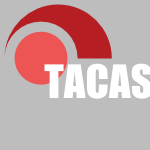 TACAS-2006-DwyerHHRRW #concurrent #object-oriented #reduction #slicing #source code
TACAS-2006-DwyerHHRRW #concurrent #object-oriented #reduction #slicing #source code- Evaluating the Effectiveness of Slicing for Model Reduction of Concurrent Object-Oriented Programs (MBD, JH, MH, VPR, R, TW), pp. 73–89.
 TACAS-2006-GuptaJ #comparison #control flow #fault #testing
TACAS-2006-GuptaJ #comparison #control flow #fault #testing- An Experimental Comparison of the Effectiveness of Control Flow Based Testing Approaches on Seeded Faults (AG, PJ), pp. 365–378.
 A-MOST-J-2005-Paradkar06 #case study #detection #fault #generative #modelling #testing
A-MOST-J-2005-Paradkar06 #case study #detection #fault #generative #modelling #testing- A quest for appropriate software fault models: Case studies on fault detection effectiveness of model-based test generation techniques (AMP), pp. 949–959.
 ISSTA-2006-FinkYDRG #alias #type system #verification
ISSTA-2006-FinkYDRG #alias #type system #verification- Effective typestate verification in the presence of aliasing (SJF, EY, ND, GR, EG), pp. 133–144.
 ECDL-2005-KimMAVF #information management #rating
ECDL-2005-KimMAVF #information management #rating- Effectiveness of Implicit Rating Data on Characterizing Users in Complex Information Systems (SK, UM, KA, SV, EAF), pp. 186–194.
 ECDL-2005-SaidisPN #approach #on the #prototype
ECDL-2005-SaidisPN #approach #on the #prototype- On the Effective Manipulation of Digital Objects: A Prototype-Based Instantiation Approach (KS, GP, MN), pp. 13–24.
 ECDL-2005-TakasuA
ECDL-2005-TakasuA - An Effective Access Mechanism to Digital Interview Archives (AT, KA), pp. 493–495.
 ICDAR-2005-NomuraYOK #image #recognition
ICDAR-2005-NomuraYOK #image #recognition- A Proposal of the Effective Recognition Method for Low-Resolution Characters from Motion Images (MN, KY, HO, KK), pp. 720–724.
 JCDL-2005-AgostiFO #education #research
JCDL-2005-AgostiFO #education #research- Annotating illuminated manuscripts: an effective tool for research and education (MA, NF, NO), pp. 121–130.
 SIGMOD-2005-BohannonFFR #constraints #cost analysis #heuristic
SIGMOD-2005-BohannonFFR #constraints #cost analysis #heuristic- A Cost-Based Model and Effective Heuristic for Repairing Constraints by Value Modification (PB, MF, WF, RR), pp. 143–154.
 SIGMOD-2005-ShenZH #database #scalability #sequence #towards #video
SIGMOD-2005-ShenZH #database #scalability #sequence #towards #video- Towards Effective Indexing for Very Large Video Sequence Database (HTS, BCO, XZ), pp. 730–741.
 SIGMOD-2005-ZhaoZ #3d #algorithm #array #clustering #mining #named
SIGMOD-2005-ZhaoZ #3d #algorithm #array #clustering #mining #named- TriCluster: An Effective Algorithm for Mining Coherent Clusters in 3D Microarray Data (LZ, MJZ), pp. 694–705.
 ITiCSE-2005-LiccardiW #comprehension #difference
ITiCSE-2005-LiccardiW #comprehension #difference- Understanding disciplinary differences: an insight into selecting effective e-learning approaches (IL, SW), p. 411.
 SIGITE-2005-LiP #education #programming #standard
SIGITE-2005-LiP #education #programming #standard- Effectively teaching coding standards in programming (XL, CP), pp. 239–244.
 SIGITE-2005-Sherman #student
SIGITE-2005-Sherman #student- Earning positive evaluations from IT students: effective techniques (CAS), pp. 255–259.
 ICSM-IT-2005-WeberHK #maintenance #towards
ICSM-IT-2005-WeberHK #maintenance #towards- Fit for Change: Steps towards Effective Software Maintenance (RW, TH, RKK), pp. 26–33.
 PASTE-2005-BradburyCD #analysis #empirical #formal method #framework #testing
PASTE-2005-BradburyCD #analysis #empirical #formal method #framework #testing- An empirical framework for comparing effectiveness of testing and property-based formal analysis (JSB, JRC, JD), pp. 2–5.
 DiGRA-2005-KaufmanCG #design #game studies #industrial #overview
DiGRA-2005-KaufmanCG #design #game studies #industrial #overview- Key Factors in the Design of Effective Games: Results of a Survey of Industry Experts and Advanced Gamers (DK, DC, AG).
 DiGRA-2005-ParasB #design #education #game studies #learning #motivation
DiGRA-2005-ParasB #design #education #game studies #learning #motivation- Game, Motivation, and Effective Learning: An Integrated Model for Educational Game Design (BSP, JB).
 CHI-2005-BeckwithBWCSH #debugging #gender #question
CHI-2005-BeckwithBWCSH #debugging #gender #question- Effectiveness of end-user debugging software features: are there gender issues? (LB, MMB, SW, CRC, SS, MH), pp. 869–878.
 CHI-2005-BlackmonKP #navigation #predict #problem
CHI-2005-BlackmonKP #navigation #predict #problem- Tool for accurately predicting website navigation problems, non-problems, problem severity, and effectiveness of repairs (MHB, MK, PGP), pp. 31–40.
 CHI-2005-LeeFH #navigation
CHI-2005-LeeFH #navigation- Studying the effectiveness of MOVE: a contextually optimized in-vehicle navigation system (JL, JF, SEH), pp. 571–580.
 CHI-2005-LindemanSMPP
CHI-2005-LindemanSMPP - Effectiveness of directional vibrotactile cuing on a building-clearing task (RWL, JLS, EMM, SP, DP), pp. 271–280.
 ICEIS-v1-2005-AnyanwuAK #metadata #paradigm
ICEIS-v1-2005-AnyanwuAK #metadata #paradigm- Metadata Paradigm for Effective Global Information Technology in the MNCS (LOA, GAA, JK), pp. 209–218.
 ICEIS-v5-2005-Murano #feedback #user interface #why
ICEIS-v5-2005-Murano #feedback #user interface #why- Why Anthropomorphic User Interface Feedback can be Effective and Preferred by Users (PM), pp. 12–19.
 CIKM-2005-BernsteinZ #documentation
CIKM-2005-BernsteinZ #documentation- Redundant documents and search effectiveness (YB, JZ), pp. 736–743.
 CIKM-2005-KriegelP #clustering #distributed #performance
CIKM-2005-KriegelP #clustering #distributed #performance- Efficient and effective server-sided distributed clustering (HPK, MP), pp. 339–340.
 CIKM-2005-OrlandicLY #clustering #performance #reduction #using
CIKM-2005-OrlandicLY #clustering #performance #reduction #using- Clustering high-dimensional data using an efficient and effective data space reduction (RO, YL, WGY), pp. 201–208.
 CIKM-2005-Polyzotis #clustering #optimisation #paradigm #query
CIKM-2005-Polyzotis #clustering #optimisation #paradigm #query- Selectivity-based partitioning: a divide-and-union paradigm for effective query optimization (NP), pp. 720–727.
 ECIR-2005-AliCJ #evaluation
ECIR-2005-AliCJ #evaluation- Exploring Cost-Effective Approaches to Human Evaluation of Search Engine Relevance (KA, CCC, YFJ), pp. 360–374.
 ECIR-2005-YangJZY #documentation #retrieval #using
ECIR-2005-YangJZY #documentation #retrieval #using- Improving Retrieval Effectiveness by Using Key Terms in Top Retrieved Documents (LY, DHJ, GZ, NY), pp. 169–184.
 ICML-2005-Keerthi #classification #feature model
ICML-2005-Keerthi #classification #feature model- Generalized LARS as an effective feature selection tool for text classification with SVMs (SSK), pp. 417–424.
 KDD-2005-LebanMBZ #modelling #visual notation
KDD-2005-LebanMBZ #modelling #visual notation- Simple and effective visual models for gene expression cancer diagnostics (GL, MM, IB, BZ), pp. 167–176.
 KDD-2005-ZakiPAS #algorithm #category theory #clustering #dataset #mining #named
KDD-2005-ZakiPAS #algorithm #category theory #clustering #dataset #mining #named- CLICKS: an effective algorithm for mining subspace clusters in categorical datasets (MJZ, MP, IA, TS), pp. 736–742.
 SEKE-2005-ChenKZ #adaptation #on the #random testing #testing
SEKE-2005-ChenKZ #adaptation #on the #random testing #testing- On the Relationships between the Distribution of Failure-Causing Inputs and Effectiveness of Adaptive Random Testing (TYC, FCK, ZZ), pp. 306–311.
 SEKE-2005-FelfernigG #development #knowledge-based #process #recommendation
SEKE-2005-FelfernigG #development #knowledge-based #process #recommendation- AI Technologies Supporting Effective Development Processes for Knowledge-based Recommender Applications (AF, SG), pp. 372–379.
 SIGIR-2005-AgichteinCB #analysis
SIGIR-2005-AgichteinCB #analysis- Analysis of factoid questions for effective relation extraction (EA, SC, EB), pp. 567–568.
 SIGIR-2005-SiC #modelling
SIGIR-2005-SiC #modelling- Modeling search engine effectiveness for federated search (LS, JC), pp. 83–90.
 ICSE-2005-Alzamil #re-engineering #towards
ICSE-2005-Alzamil #re-engineering #towards- Towards an effective software engineering course project (ZA), pp. 631–632.
 ICSE-2005-Jurjens #modelling #security #tool support #uml
ICSE-2005-Jurjens #modelling #security #tool support #uml- Sound methods and effective tools for model-based security engineering with UML (JJ), pp. 322–331.
 SAC-2005-HurtT #communication #empirical #evaluation #multi
SAC-2005-HurtT #communication #empirical #evaluation #multi- An empirical evaluation of communication effectiveness in autonomous reactive multiagent systems (DH, PT), pp. 74–78.
 SAC-2005-MandlW #evaluation #information retrieval
SAC-2005-MandlW #evaluation #information retrieval- The effect of named entities on effectiveness in cross-language information retrieval evaluation (TM, CWH), pp. 1059–1064.
 SAC-2005-QianZ #visualisation
SAC-2005-QianZ #visualisation- The role of visualization in effective data cleaning (YQ, KZ), pp. 1239–1243.
 CASE-2005-PeddiZCC #automation #performance
CASE-2005-PeddiZCC #automation #performance- Efficient and effective path for automated dispensing of bio-precipitant solutions (AP, YFZ, VC, MC), pp. 61–66.
 CGO-2005-HuVJ #adaptation #optimisation
CGO-2005-HuVJ #adaptation #optimisation- Effective Adaptive Computing Environment Management via Dynamic Optimization (SH, MGV, LKJ), pp. 63–73.
 DAC-2005-AbdollahiFP
DAC-2005-AbdollahiFP - An effective power mode transition technique in MTCMOS circuits (AA, FF, MP), pp. 37–42.
 DAC-2005-GuardianiBDMM #process
DAC-2005-GuardianiBDMM #process- An effective DFM strategy requires accurate process and IP pre-characterization (CG, MB, ND, MM, PM), pp. 760–761.
 DAC-2005-LiSB #bound #problem
DAC-2005-LiSB #bound #problem- Effective bounding techniques for solving unate and binate covering problems (XYL, MFMS, FB), pp. 385–390.
 DAC-2005-SuWKLK #analysis #embedded #functional #performance
DAC-2005-SuWKLK #analysis #embedded #functional #performance- A noise-driven effective capacitance method with fast embedded noise rule calculation for functional noise analysis (HS, DW, CVK, FL, BK), pp. 186–189.
 DATE-2005-ManquinhoM #bound #optimisation #pseudo
DATE-2005-ManquinhoM #bound #optimisation #pseudo- Effective Lower Bounding Techniques for Pseudo-Boolean Optimization (VMM, JPMS), pp. 660–665.
 HPCA-2005-DuatoJFNGF #multi #network #scalability
HPCA-2005-DuatoJFNGF #multi #network #scalability- A New Scalable and Cost-Effective Congestion Management Strategy for Lossless Multistage Interconnection Networks (JD, IJ, JF, FN, PJG, TNF), pp. 108–119.
 HPCA-2005-SpracklenCA #multi
HPCA-2005-SpracklenCA #multi- Effective Instruction Prefetching in Chip Multiprocessors for Modern Commercial Applications (LS, YC, SGA), pp. 225–236.
 HPDC-2005-LuJ #design #distributed #evaluation #multi
HPDC-2005-LuJ #design #distributed #evaluation #multi- Design and evaluation of a new and effective fairness scheme for multicasting in Internet-scale distributed systems (YL, HJ), pp. 285–286.
 PPoPP-2005-Chavarria-MirandaM #communication
PPoPP-2005-Chavarria-MirandaM #communication- Effective communication coalescing for data-parallel applications (DGCM, JMMC), pp. 14–25.
 A-MOST-2005-Paradkar #case study #detection #fault #generative #modelling #testing
A-MOST-2005-Paradkar #case study #detection #fault #generative #modelling #testing- Case studies on fault detection effectiveness of model based test generation techniques (AMP), pp. 70–76.
 SAT-2005-EenB #preprocessor #satisfiability
SAT-2005-EenB #preprocessor #satisfiability- Effective Preprocessing in SAT Through Variable and Clause Elimination (NE, AB), pp. 61–75.
 SAT-2005-GershmanS #preprocessor
SAT-2005-GershmanS #preprocessor- Cost-Effective Hyper-Resolution for Preprocessing CNF Formulas (RG, OS), pp. 423–429.
 JCDL-2004-GoncalvesFKCLSR #automation #library #query
JCDL-2004-GoncalvesFKCLSR #automation #library #query- The effectiveness of automatically structured queries in digital libraries (MAG, EAF, AK, PC, AHFL, ASdS, BARN), pp. 98–107.
 SIGMOD-2004-ChaudhuriDS #estimation #statistics #using
SIGMOD-2004-ChaudhuriDS #estimation #statistics #using- Effective Use of Block-Level Sampling in Statistics Estimation (SC, GD, US), pp. 287–298.
 SIGMOD-2004-NassarSC #clustering #incremental #summary
SIGMOD-2004-NassarSC #clustering #incremental #summary- Incremental and Effective Data Summarization for Dynamic Hierarchical Clustering (SN, JS, CC), pp. 467–478.
 SIGMOD-2004-QianZZ #approach #clustering #named #performance
SIGMOD-2004-QianZZ #approach #clustering #named #performance- FAÇADE: A Fast and Effective Approach to the Discovery of Dense Clusters in Noisy Spatial Data (YQ, GZ, KZ), pp. 921–922.
 ITiCSE-2004-ChengB #distributed
ITiCSE-2004-ChengB #distributed- Evaluating the effectiveness of ICT to support globally distributed PBL teams (CSC, CB), pp. 47–51.
 ITiCSE-2004-SitthiworachartJ #assessment #learning #programming
ITiCSE-2004-SitthiworachartJ #assessment #learning #programming- Effective peer assessment for learning computer programming (JS, MJ), pp. 122–126.
 ITiCSE-WGR-2004-Shumba #education #towards
ITiCSE-WGR-2004-Shumba #education #towards- Towards a more effective way of teaching a cybersecurity basics course (RS), pp. 108–111.
 SIGITE-2004-Kleckner #design #experience #multi
SIGITE-2004-Kleckner #design #experience #multi- Where writing and rhetoric meet multimedia production designing an effective, interdisciplinary capstone experience (MK), p. 281.
 SIGITE-2004-OrgillRBO #privacy #social
SIGITE-2004-OrgillRBO #privacy #social- The urgency for effective user privacy-education to counter social engineering attacks on secure computer systems (GLO, GWR, MGB, PMO), pp. 177–181.
 ICSM-2004-MemonX #detection #empirical #evaluation #testing
ICSM-2004-MemonX #detection #empirical #evaluation #testing- Empirical Evaluation of the Fault-Detection Effectiveness of Smoke Regression Test Cases for GUI-Based Software (AMM, QX), pp. 8–17.
 IWPC-2004-Hamou-LhadjLF #challenge #requirements
IWPC-2004-Hamou-LhadjLF #challenge #requirements- Challenges and Requirements for an Effective Trace Exploration Tool (AHL, TCL, LF), pp. 70–78.
 IWPC-2004-WenT #algorithm #clustering
IWPC-2004-WenT #algorithm #clustering- An Effectiveness Measure for Software Clustering Algorithms (ZW, VT), pp. 194–203.
 WCRE-2004-GarciaLPAA #approach #reverse engineering #towards
WCRE-2004-GarciaLPAA #approach #reverse engineering #towards- Towards an Effective Approach for Reverse Engineering (VCG, DL, AFdP, AÁ, ESdA), pp. 298–299.
 DLT-2004-GenestMK #algorithm #automaton #communication #theorem
DLT-2004-GenestMK #algorithm #automaton #communication #theorem- A Kleene Theorem for a Class of Communicating Automata with Effective Algorithms (BG, AM, DK), pp. 30–48.
 ICALP-2004-MerkleMS
ICALP-2004-MerkleMS - Some Results on Effective Randomness (WM, NM, TAS), pp. 983–995.
 ICALP-2004-Toftdal #analysis #logic #theorem
ICALP-2004-Toftdal #analysis #logic #theorem- A Calibration of Ineffective Theorems of Analysis in a Hierarchy of Semi-classical Logical Principles: (MT), pp. 1188–1200.
 FLOPS-2004-CraigL #named #prolog #self
FLOPS-2004-CraigL #named #prolog #self- LIX: an Effective Self-applicable Partial Evaluator for Prolog (SJC, ML), pp. 85–99.
 IFL-2004-StefanovS #functional #reduction #source code
IFL-2004-StefanovS #functional #reduction #source code- Simple, Effective Code-Size Reduction for Functional Programs (ES, AMS), pp. 211–225.
 CHI-2004-LinAL
CHI-2004-LinAL - Virtual guiding avatar: an effective procedure to reduce simulator sickness in virtual environments (JJWL, HAR, ML), pp. 719–726.
 CSCW-2004-GarciaKF
CSCW-2004-GarciaKF - Cutting to the chase: improving meeting effectiveness by focusing on the agenda (ACBG, JCK, MAF), pp. 346–349.
 CSCW-2004-YankelovichWRWKP #distributed
CSCW-2004-YankelovichWRWKP #distributed- Meeting central: making distributed meetings more effective (NY, WW, PR, MW, JK, JP), pp. 419–428.
 ICEIS-v2-2004-BangDHD #concept #data mining #framework #knowledge base #mining #segmentation
ICEIS-v2-2004-BangDHD #concept #data mining #framework #knowledge base #mining #segmentation- Data Mining of CRM Knowledge Bases for Effective Market Segmentation: A Conceptual Framework (JB, ND, LH, RRD), pp. 335–342.
 ICEIS-v3-2004-ClarkeWD #representation #xml
ICEIS-v3-2004-ClarkeWD #representation #xml- Effective XML Representation for Spoken Language in Organisations (RJC, PCW, DD), pp. 486–494.
 ICEIS-v4-2004-VeigaF #repository #web
ICEIS-v4-2004-VeigaF #repository #web- Turning the Web into an Effective Knowledge Repository (LV, PF), pp. 154–161.
 CIKM-2004-SongB #algorithm #detection #named #performance
CIKM-2004-SongB #algorithm #detection #named #performance- BioDIFF: an effective fast change detection algorithm for genomic and proteomic data (YS, SSB), pp. 146–147.
 ECIR-2004-Kamps #documentation #ranking #retrieval
ECIR-2004-Kamps #documentation #ranking #retrieval- Improving Retrieval Effectiveness by Reranking Documents Based on Controlled Vocabulary (JK), pp. 283–295.
 ICPR-v1-2004-DmitryD #algorithm #classification
ICPR-v1-2004-DmitryD #algorithm #classification- Data Dependent Classifier Fusion for Construction of Stable Effective Algorithms (DV, DK), pp. 144–147.
 ICPR-v1-2004-LangeG #2d #data type #recognition
ICPR-v1-2004-LangeG #2d #data type #recognition- Tree-Like Data Structures for Effective Recognition of 2-D Solids (ML, SG), pp. 592–595.
 ICPR-v2-2004-KherfiBZ #image #retrieval #semantics #visual notation
ICPR-v2-2004-KherfiBZ #image #retrieval #semantics #visual notation- Combining Visual Features with Semantics for a More Effective Image Retrieval (MLK, DB, DZ), pp. 961–964.
 ICPR-v4-2004-TongLL #detection #performance
ICPR-v4-2004-TongLL #detection #performance- An Effective and Fast Soccer Ball Detection and Tracking Method (XFT, HQL, QSL), pp. 795–798.
 KDD-2004-LazarevicKK #detection #locality #scalability
KDD-2004-LazarevicKK #detection #locality #scalability- Effective localized regression for damage detection in large complex mechanical structures (AL, RK, CK), pp. 450–459.
 KDD-2004-ShavlikS #detection #evaluation
KDD-2004-ShavlikS #detection #evaluation- Selection, combination, and evaluation of effective software sensors for detecting abnormal computer usage (JWS, MS), pp. 276–285.
 SEKE-2004-CachiaM #online #towards
SEKE-2004-CachiaM #online #towards- Towards Effectively Appraising Online Stores (EC, MM), pp. 318–323.
 SIGIR-2004-LiuLYM #approach #documentation #retrieval
SIGIR-2004-LiuLYM #approach #documentation #retrieval- An effective approach to document retrieval via utilizing WordNet and recognizing phrases (SL, FL, CTY, WM), pp. 266–272.
 SIGIR-2004-Voorhees
SIGIR-2004-Voorhees - Measuring ineffectiveness (EMV), pp. 562–563.
 SIGIR-2004-XiLB #learning #ranking
SIGIR-2004-XiLB #learning #ranking- Learning effective ranking functions for newsgroup search (WX, JL, EB), pp. 394–401.
 SIGIR-2004-YangC #classification #web
SIGIR-2004-YangC #classification #web- Effectiveness of web page classification on finding list answers (HY, TSC), pp. 522–523.
 ECOOP-2004-JanzenV #programming
ECOOP-2004-JanzenV #programming- Programming with Crosscutting Effective Views (DJ, KDV), pp. 195–218.
 PLDI-2004-KulkarniHHWDJ #optimisation #performance #sequence
PLDI-2004-KulkarniHHWDJ #optimisation #performance #sequence- Fast searches for effective optimization phase sequences (PAK, SH, JH, DBW, JWD, DLJ), pp. 171–182.
 PLDI-2004-ZhangG #slicing
PLDI-2004-ZhangG #slicing- Cost effective dynamic program slicing (XZ, RG), pp. 94–106.
 SIGAda-2004-Smith
SIGAda-2004-Smith - Measuring the effectiveness of ACATS (GTS), pp. 9–12.
 SAC-2004-KampsR #information retrieval
SAC-2004-KampsR #information retrieval- The effectiveness of combining information retrieval strategies for European languages (JK, MdR), pp. 1073–1077.
 SAC-2004-ShinK #adaptation #multi #streaming
SAC-2004-ShinK #adaptation #multi #streaming- Cost effective transcoding for QoS adaptive multimedia streaming (IS, KK), pp. 1238–1241.
 DAC-2004-GuptaKSS #runtime
DAC-2004-GuptaKSS #runtime- Selective gate-length biasing for cost-effective runtime leakage control (PG, ABK, PS, DS), pp. 327–330.
 DATE-v1-2004-PaschalisG #embedded #online #self #testing
DATE-v1-2004-PaschalisG #embedded #online #self #testing- Effective Software-Based Self-Test Strategies for On-Line Periodic Testing of Embedded Processors (AMP, DG), pp. 578–583.
 DATE-v2-2004-HsiehH #design
DATE-v2-2004-HsiehH #design- A New Effective Congestion Model in Floorplan Design (YLH, TMH), pp. 1204–1209.
 HPCA-2004-ChenYFM #predict
HPCA-2004-ChenYFM #predict- Accurate and Complexity-Effective Spatial Pattern Prediction (CFC, SHY, BF, AM), pp. 276–287.
 ISMM-2004-LeeY #automation #memory management #source code
ISMM-2004-LeeY #automation #memory management #source code- Experiments on the effectiveness of an automatic insertion of memory reuses into ML-like programs (OL, KY), pp. 97–107.
 LCTES-2004-AlmagorCGHRSTW #compilation #sequence
LCTES-2004-AlmagorCGHRSTW #compilation #sequence- Finding effective compilation sequences (LA, KDC, AG, TJH, SWR, DS, LT, TW), pp. 231–239.
 PDP-2004-DuatoFN #multi
PDP-2004-DuatoFN #multi- A Cost-Effective Technique to Reduce HOL Blocking in Single-Stage and Multistage Switch Fabrics (JD, JF, TNF), pp. 48–53.
 FoSSaCS-2004-BozgaEL #encryption #on the #protocol
FoSSaCS-2004-BozgaEL #encryption #on the #protocol- On the Existence of an Effective and Complete Inference System for Cryptographic Protocols (LB, CE, YL), pp. 42–57.
 ICLP-2004-ElkabaniPS #approach
ICLP-2004-ElkabaniPS #approach- Smodels with CLP and Its Applications: A Simple and Effective Approach to Aggregates in ASP (IE, EP, TCS), pp. 73–89.
 SAT-2004-SangBBKP #component #learning
SAT-2004-SangBBKP #component #learning- Combining Component Caching and Clause Learning for Effective Model Counting (TS, FB, PB, HAK, TP), pp. 20–28.
 DocEng-2003-SunWYNKN #image #recognition
DocEng-2003-SunWYNKN #image #recognition- Effective text extraction and recognition for WWW images (JS, ZW, HY, FN, YK, SN), pp. 115–117.
 VLDB-2003-NieKH #integration #mining #named #statistics #using
VLDB-2003-NieKH #integration #mining #named #statistics #using- BibFinder/StatMiner: Effectively Mining and Using Coverage and Overlap Statistics in Data Integration (ZN, SK, TH), pp. 1097–1100.
 ITiCSE-2003-ParkerB #behaviour
ITiCSE-2003-ParkerB #behaviour- Measuring effectiveness of constructivist and behaviourist assignments in CS102 (JRP, KB), pp. 40–44.
 IWPC-2003-KomondoorH #automation
IWPC-2003-KomondoorH #automation- Effective, Automatic Procedure Extraction (RK, SH), pp. 33–43.
 FME-2003-Chalin #ml
FME-2003-Chalin #ml- Improving JML: For a Safer and More Effective Language (PC), pp. 440–461.
 ICFP-2003-MandelbaumWH
ICFP-2003-MandelbaumWH - An effective theory of type refinements (YM, DW, RH), pp. 213–225.
 CHI-2003-TangOBM #artificial reality #assembly #comparative
CHI-2003-TangOBM #artificial reality #assembly #comparative- Comparative effectiveness of augmented reality in object assembly (AT, CBO, FB, WM), pp. 73–80.
 SOFTVIS-2003-Tudoreanu #design #tool support #visualisation
SOFTVIS-2003-Tudoreanu #design #tool support #visualisation- Designing Effective Program Visualization Tools for Reducing User’s Cognitive Effort (MET), pp. 105–114.
 ICEIS-v3-2003-SawmaP #authentication #design #e-commerce
ICEIS-v3-2003-SawmaP #authentication #design #e-commerce- E-Commerce Authentication: An Effective Countermeasures Design Model (VDS, RLP), pp. 447–455.
 KDD-2003-ZakiA #classification #named #xml
KDD-2003-ZakiA #classification #named #xml- XRules: an effective structural classifier for XML data (MJZ, CCA), pp. 316–325.
 SEKE-2003-NiaziWZ #design #framework #implementation #process
SEKE-2003-NiaziWZ #design #framework #implementation #process- A Framework for Guiding the Design of Effective Implementation Strategies for Software Process Improvement (MN, DW, DZ), pp. 366–371.
 SIGIR-2003-AslamS #on the #retrieval
SIGIR-2003-AslamS #on the #retrieval- On the effectiveness of evaluating retrieval systems in the absence of relevance judgments (JAA, RS), pp. 361–362.
 SIGIR-2003-LevinCS #query
SIGIR-2003-LevinCS #query- Assessing the effectiveness of pen-based input queries (SL, PDC, MS), pp. 437–438.
 SIGIR-2003-Ruthven #interactive #query
SIGIR-2003-Ruthven #interactive #query- Re-examining the potential effectiveness of interactive query expansion (IR), pp. 213–220.
 OOPSLA-2003-IshizakiTKSGIKOKYOOKN #compilation #java #optimisation #platform
OOPSLA-2003-IshizakiTKSGIKOKYOOKN #compilation #java #optimisation #platform- Effectiveness of cross-platform optimizations for a java just-in-time compiler (KI, MT, KK, TS, OG, TI, AK, KO, MK, TY, TO, TO, HK, TN), pp. 187–204.
 ASE-2003-MemonBN #question #testing #user interface #what
ASE-2003-MemonBN #question #testing #user interface #what- What Test Oracle Should I Use for Effective GUI Testing? (AMM, IB, AN), pp. 164–173.
 ICSE-2003-CoppitS #analysis #modelling #tool support
ICSE-2003-CoppitS #analysis #modelling #tool support- Sound Methods and Effective Tools for Engineering Modeling and Analysis (DC, KJS), pp. 198–209.
 ICSE-2003-SchneiderH #experience #re-engineering #repository
ICSE-2003-SchneiderH #experience #re-engineering #repository- Effective Experience Repositories for Software Engineering (KS, JPvH), pp. 534–539.
 ICSE-2003-SeyboldGMM #adaptation #layout #modelling #visual notation
ICSE-2003-SeyboldGMM #adaptation #layout #modelling #visual notation- An Effective Layout Adaptation Technique for a Graphical Modeling Tool (CS, MG, SM, NMS), pp. 826–827.
 SAC-2003-BeitzelJCFGG #analysis #data fusion #information retrieval
SAC-2003-BeitzelJCFGG #analysis #data fusion #information retrieval- Disproving the Fusion Hypothesis: An Analysis of Data Fusion via Effective Information Retrieval Strategies (SMB, ECJ, AC, OF, DAG, NG), pp. 823–827.
 SAC-2003-VuHJ #image #retrieval
SAC-2003-VuHJ #image #retrieval- Improving Image Retrieval Effectiveness in Query-by-Example Environment (KV, KAH, NJ), pp. 774–781.
 SAC-2003-ZhangP #algorithm #performance
SAC-2003-ZhangP #algorithm #performance- A Fast and Effective Steganalytic Technique Against JSteg-like Algorithms (TZ, XP), pp. 307–311.
 CC-2003-GagnonH #bytecode #java #sequence #thread #using
CC-2003-GagnonH #bytecode #java #sequence #thread #using- Effective Inline-Threaded Interpretation of Java Bytecode Using Preparation Sequences (EG, LJH), pp. 170–184.
 DAC-2003-AgarwalSB
DAC-2003-AgarwalSB - An effective capacitance based driver output model for on-chip RLC interconnects (KA, DS, DB), pp. 376–381.
 DAC-2003-KiranJRN #behaviour #communication #complexity #modelling
DAC-2003-KiranJRN #behaviour #communication #complexity #modelling- A complexity effective communication model for behavioral modeling of signal processing applications (MNVSK, MNJ, PR, SKN), pp. 412–415.
 DAC-2003-XiangGSW #architecture #testing
DAC-2003-XiangGSW #architecture #testing- A cost-effective scan architecture for scan testing with non-scan test power and test application cost (DX, SG, JGS, YLW), pp. 744–747.
 LCTES-2003-KulkarniZMCWDBPG #optimisation #sequence
LCTES-2003-KulkarniZMCWDBPG #optimisation #sequence- Finding effective optimization phase sequences (PAK, WZ, HM, KC, DBW, JWD, MWB, YP, KG), pp. 12–23.
 SOSP-2003-EnglerA #detection #named #static analysis
SOSP-2003-EnglerA #detection #named #static analysis- RacerX: effective, static detection of race conditions and deadlocks (DRE, KA), pp. 237–252.
 CSL-2003-Vorobjov #formal method #strict
CSL-2003-Vorobjov #formal method #strict- Effective Model Completeness of the Theory of Restricted Pfaffian Functions (NV), p. 544.
 CSL-2003-Vorobjov03a #quantifier
CSL-2003-Vorobjov03a #quantifier- Effective Quantifier Elimination over Real Closed Fields (NV), p. 545.
 LICS-2003-Oliva #algorithm #polynomial #proving
LICS-2003-Oliva #algorithm #polynomial #proving- Polynomial-time Algorithms from Ineffective Proofs (PO), pp. 128–137.
 SAT-2003-BacchusW #preprocessor #reduction #similarity
SAT-2003-BacchusW #preprocessor #reduction #similarity- Effective Preprocessing with Hyper-Resolution and Equality Reduction (FB, JW), pp. 341–355.
 SAT-2003-LiSB #performance #satisfiability #using
SAT-2003-LiSB #performance #satisfiability #using- A Local Search SAT Solver Using an Effective Switching Strategy and an Efficient Unit Propagation (XYL, MFMS, FB), pp. 53–68.
 JCDL-2002-HershVMEB #health #library
JCDL-2002-HershVMEB #health #library- Overcoming impediments to effective health and biomedical digital libraries (WRH, JV, ATM, GE, MB), p. 360.
 SIGMOD-2002-WangTYGWP #information management #integration #named #query #towards #web
SIGMOD-2002-WangTYGWP #information management #integration #named #query #towards #web- COMMIX: towards effective web information extraction, integration and query answering (TW, ST, DY, JG, YW, JP), p. 620.
 VLDB-2002-ChoN #detection #using
VLDB-2002-ChoN #detection #using- Effective Change Detection Using Sampling (JC, AN), pp. 514–525.
 ICSM-2002-BochicchioL #approach
ICSM-2002-BochicchioL #approach- An Effective Approach to Reduce the “Avalanche Effect” in the Management of Fiscal Data in Local Public Administration (MAB, AL), pp. 560–567.
 ICSM-2002-Tran-CaoLA #complexity #functional #metric #towards
ICSM-2002-Tran-CaoLA #complexity #functional #metric #towards- Measuring Software Functional Size: Towards an Effective Measurement of Complexity (DTC, GL, AA), pp. 370–376.
 ICALP-2002-Hitchcock
ICALP-2002-Hitchcock - Correspondence Principles for Effective Dimensions (JMH), pp. 561–571.
 ICGT-2002-Pfaltz #incremental #information management
ICGT-2002-Pfaltz #incremental #information management- Incremental Transformation of Lattices: A Key to Effective Knowledge Discovery (JLP), pp. 351–362.
 CHI-2002-CockburnM #2d #3d #memory management #physics
CHI-2002-CockburnM #2d #3d #memory management #physics- Evaluating the effectiveness of spatial memory in 2D and 3D physical and virtual environments (AC, BJM), pp. 203–210.
 CIKM-2002-AljlaylF #approach #on the #retrieval
CIKM-2002-AljlaylF #approach #on the #retrieval- On arabic search: improving the retrieval effectiveness via a light stemming approach (MA, OF), pp. 340–347.
 CIKM-2002-HsuCCL #information retrieval #music
CIKM-2002-HsuCCL #information retrieval #music- The effectiveness study of various music information retrieval approaches (JLH, ALPC, HCC, NHL), pp. 422–429.
 CIKM-2002-LeeYHY #clustering #integration #named #xml
CIKM-2002-LeeYHY #clustering #integration #named #xml- XClust: clustering XML schemas for effective integration (MLL, LHY, WH, XY), pp. 292–299.
 CIKM-2002-NanopoulosMT #algorithm #performance
CIKM-2002-NanopoulosMT #algorithm #performance- An efficient and effective algorithm for density biased sampling (AN, YM, YT), pp. 398–404.
 CIKM-2002-ScholerW #query #retrieval
CIKM-2002-ScholerW #query #retrieval- Query association for effective retrieval (FS, HEW), pp. 324–331.
 ICPR-v2-2002-ChangHHC #detection #modelling
ICPR-v2-2002-ChangHHC #detection #modelling- Shadow Elimination for Effective Moving Object Detection with Gaussian Models (CJC, WFH, JWH, YSC), pp. 540–543.
 ICPR-v4-2002-TamSS #case study #categorisation #comparative #documentation #statistics
ICPR-v4-2002-TamSS #case study #categorisation #comparative #documentation #statistics- A Comparative Study of Centroid-Based, Neighborhood-Based and Statistical Approaches for Effective Document Categorization (VT, AS, RS), pp. 235–238.
 KDD-2002-Aggarwal #classification #on the #string
KDD-2002-Aggarwal #classification #on the #string- On effective classification of strings with wavelets (CCA), pp. 163–172.
 KDD-2002-YangGY #algorithm #clustering #named #performance #transaction
KDD-2002-YangGY #algorithm #clustering #named #performance #transaction- CLOPE: a fast and effective clustering algorithm for transactional data (YY, XG, JY), pp. 682–687.
 SIGIR-2002-AnhM #performance #retrieval #web
SIGIR-2002-AnhM #performance #retrieval #web- Impact transformation: effective and efficient web retrieval (VNA, AM), pp. 3–10.
 SIGIR-2002-ConradYC #locality #performance #retrieval
SIGIR-2002-ConradYC #locality #performance #retrieval- Effective collection metasearch in a hierarchical environment: global vs. localized retrieval performance (JGC, CY, JSC), pp. 371–372.
 ECOOP-2002-ArnoldR
ECOOP-2002-ArnoldR - Thin Guards: A Simple and Effective Technique for Reducing the Penalty of Dynamic Class Loading (MA, BGR), pp. 498–524.
 PLDI-2002-KawahitoKN
PLDI-2002-KawahitoKN - Effective Sign Extension Elimination (MK, HK, TN), pp. 187–198.
 RE-2002-LloydRA #distributed #elicitation #requirements
RE-2002-LloydRA #distributed #elicitation #requirements- Effectiveness of Elicitation Techniques in Distributed Requirements Engineering (WJL, MBR, JDA), pp. 311–318.
 ICSE-2002-RothermelEMKD #testing
ICSE-2002-RothermelEMKD #testing- The impact of test suite granularity on the cost-effectiveness of regression testing (GR, SGE, AGM, PK, BD), pp. 130–140.
 SAC-2002-DolinBR #co-evolution #distributed
SAC-2002-DolinBR #co-evolution #distributed- Co-evolving an effective fitness sample: experiments in symbolic regression and distributed robot control (BD, FHBI, EGR), pp. 553–559.
 SAC-2002-KimL #adaptation #clustering #distance #documentation #metric #using
SAC-2002-KimL #adaptation #clustering #distance #documentation #metric #using- An effective document clustering method using user-adaptable distance metrics (HjK, SgL), pp. 16–20.
 CC-2002-MikheevFSL #java #version control
CC-2002-MikheevFSL #java #version control- Effective Enhancement of Loop Versioning in Java (VVM, SAF, VVS, NVL), pp. 293–306.
 DAC-2002-Pogge #challenge
DAC-2002-Pogge #challenge- The next chip challenge: effective methods for viable mixed technology SoCs (HBP), pp. 84–87.
 DAC-2002-ShengTH #safety #using
DAC-2002-ShengTH #safety #using- Effective safety property checking using simulation-based sequential ATPG (SS, KT, MSH), pp. 813–818.
 DAC-2002-WohlWPM
DAC-2002-WohlWPM - Effective diagnostics through interval unloads in a BIST environment (PW, JAW, SP, GAM), pp. 249–254.
 DATE-2002-BerkelaarE #performance
DATE-2002-BerkelaarE #performance- Efficient and Effective Redundancy Removal for Million-Gate Circuits (MRCMB, KvE), p. 1088.
 DATE-2002-KranitisPGZ #self
DATE-2002-KranitisPGZ #self- Effective Software Self-Test Methodology for Processor Cores (NK, AMP, DG, YZ), pp. 592–597.
 OSDI-2002-WangPP #robust
OSDI-2002-WangPP #robust- The Effectiveness of Request Redirection on CDN Robustness (LW, VSP, LLP), pp. 345–360.
 ISSTA-2002-SrivastavaT #development #testing
ISSTA-2002-SrivastavaT #development #testing- Effectively prioritizing tests in development environment (AS, JT), pp. 97–106.
 ITiCSE-2001-ClearD #question
ITiCSE-2001-ClearD #question- A cyber-icebreaker for an effective virtual group? (TC, MD), pp. 121–124.
 ICSM-2001-ContiniVBVT #maintenance #process #scalability
ICSM-2001-ContiniVBVT #maintenance #process #scalability- An Intranet-Based Application for Supporting Effective Maintenance Activities on Large Software Systems (MC, SdV, AB, TV, DT), p. 108.
 ICSM-2001-JongeM #maintenance #tool support
ICSM-2001-JongeM #maintenance #tool support- Cost-Effective Maintenance Tools for Proprietary Languages (MdJ, RM), pp. 240–249.
 ICALP-2001-AbdullaBB #queue
ICALP-2001-AbdullaBB #queue- Effective Lossy Queue Languages (PAA, LB, AB), pp. 639–651.
 FLOPS-2001-BozzanoDM #bottom-up #first-order #linear #logic programming #semantics #source code
FLOPS-2001-BozzanoDM #bottom-up #first-order #linear #logic programming #semantics #source code- An Effective Bottom-Up Semantics for First-Order Linear Logic Programs (MB, GD, MM), pp. 138–152.
 ICEIS-v2-2001-FerreiraL #analysis #reuse
ICEIS-v2-2001-FerreiraL #analysis #reuse- Organization of Analysis Patterns for Effective Reuse (MJF, PL), pp. 766–773.
 CIKM-2001-AljlaylF #information retrieval
CIKM-2001-AljlaylF #information retrieval- Effective Arabic-English Cross-Language Information Retrieval via Machine-Readable Dictionaries and Machine Translation (MA, OF), pp. 295–302.
 CIKM-2001-FrenchPGP #retrieval
CIKM-2001-FrenchPGP #retrieval- Exploiting A Controlled Vocabulary to Improve Collection Selection and Retrieval Effectiveness (JCF, ALP, FCG, NP), pp. 199–206.
 CIKM-2001-KimAY #metric #nearest neighbour
CIKM-2001-KimAY #metric #nearest neighbour- Effective Nearest Neighbor Indexing with the Euclidean Metric (SWK, CCA, PSY), pp. 9–16.
 CIKM-2001-OgilvieC #distributed #information retrieval #query
CIKM-2001-OgilvieC #distributed #information retrieval #query- The Effectiveness of Query Expansion for Distributed Information Retrieval (PO, JPC), pp. 183–190.
 CIKM-2001-ParkKCP #approach #database #named #sequence
CIKM-2001-ParkKCP #approach #database #named #sequence- Prefix-Querying: An Approach for Effective Subsequence Matching Under Time Warping in Sequence Databases (SP, SWK, JSC, SP), pp. 255–262.
 KDD-2001-Aggarwal #clustering #human-computer
KDD-2001-Aggarwal #clustering #human-computer- A human-computer cooperative system for effective high dimensional clustering (CCA), pp. 221–226.
 SIGIR-2001-CraswellHR #using
SIGIR-2001-CraswellHR #using- Effective Site Finding Using Link Anchor Information (NC, DH, SER), pp. 250–257.
 SIGIR-2001-VoKM #ranking #termination
SIGIR-2001-VoKM #ranking #termination- Vector-Space Ranking with Effective Early Termination (VNA, OdK, AM), pp. 35–42.
 AdaEurope-2001-ChenL #detection #empirical #evaluation #fault #reduction #testing
AdaEurope-2001-ChenL #detection #empirical #evaluation #fault #reduction #testing- Test Suite Reduction and Fault Detecting Effectiveness: An Empirical Evaluation (TYC, MFL), pp. 253–265.
 SAS-2001-GlynnSS #analysis #constraints #strict
SAS-2001-GlynnSS #analysis #constraints #strict- Effective Strictness Analysis with HORN Constraints (KG, PJS, MS), pp. 73–92.
 ICSE-2001-BifflFL #development
ICSE-2001-BifflFL #development- Investigating the Cost-Effectiveness of Reinspections in Software Development (SB, BGF, OL), pp. 155–164.
 ICSE-2001-NordPSH #analysis #architecture #design #uml
ICSE-2001-NordPSH #analysis #architecture #design #uml- Effective Software Architecture Design: From Global Analysis to UML Descriptions (RLN, DJP, DS, CH), pp. 741–742.
 SAC-2001-CornoRS #architecture #evolution
SAC-2001-CornoRS #architecture #evolution- Evolving effective CA/CSTP: BIST architectures for sequential circuits (FC, MSR, GS), pp. 345–350.
 SAC-2001-NakanoHSN #hypermedia #protocol #streaming #web
SAC-2001-NakanoHSN #hypermedia #protocol #streaming #web- Extending hypertext streaming protocol to realize effective web page transmission via a chaching proxy (TN, KH, SS, SN), pp. 440–445.
 DAC-2001-VelevB #satisfiability #using #verification
DAC-2001-VelevB #satisfiability #using #verification- Effective Use of Boolean Satisfiability Procedures in the Formal Verification of Superscalar and VLIW Microprocessors (MNV, REB), pp. 226–231.
 DATE-2001-PomeranzR01a #detection #fault #generative #testing
DATE-2001-PomeranzR01a #detection #fault #generative #testing- Definitions of the numbers of detections of target faults and their effectiveness in guiding test generation for high defect coverage (IP, SMR), pp. 504–508.
 PDP-2001-GarzaranBIV #hardware #multi
PDP-2001-GarzaranBIV #hardware #multi- Hardware Prefetching in Bus-Based Multiprocessors: Pattern Characterization and Cost-Effective Hardware (MJG, JLB, PEI, VV), pp. 345–354.
 CSL-2001-Finkel #automaton
CSL-2001-Finkel #automaton- An Effective Extension of the Wagner Hierarchy to Blind Counter Automata (OF), pp. 369–383.
 SAT-2001-Morrisette #algorithm #satisfiability
SAT-2001-Morrisette #algorithm #satisfiability- The Unreasonable Effectiveness of Alternation-Based Satisfiability Algorithms (TM), pp. 254–268.
 SAT-2001-Shlyakhter #generative #problem #symmetry
SAT-2001-Shlyakhter #generative #problem #symmetry- Generating effective symmetry-breaking predicates for search problems (IS), pp. 19–35.
- DL-2000-BrownS #2d #3d #image #library
- Beyond 2D images: effective 3D imaging for library materials (MSB, WBS), pp. 27–36.
 SIGMOD-2000-JagadishKS #multi #on the #string
SIGMOD-2000-JagadishKS #multi #on the #string- On Effective Multi-Dimensional Indexing for Strings (HVJ, NK, DS), pp. 403–414.
 SIGMOD-2000-OhHP #database #performance #scalability #video
SIGMOD-2000-OhHP #database #performance #scalability #video- Efficient and Cost-effective Techniques for Browsing and Indexing Large Video Databases (JHO, KAH), pp. 415–426.
 CSEET-2000-SucciS #education #overview #re-engineering
CSEET-2000-SucciS #education #overview #re-engineering- A Survey on the Effectiveness of the Internet-Based Facilities in Software Engineering Education (GS, RS), pp. 66–75.
 IWPC-2000-BianchiVF #case study #maintenance #modelling #traceability
IWPC-2000-BianchiVF #case study #maintenance #modelling #traceability- An Exploratory Case Study of the Maintenance Effectiveness of Traceability Models (AB, GV, ARF), pp. 149–158.
 RTA-2000-TakaiKS #finite #linear #term rewriting
RTA-2000-TakaiKS #finite #linear #term rewriting- Right-Linear Finite Path Overlapping Term Rewriting Systems Effectively Preserve Recognizability (TT, YK, HS), pp. 246–260.
 IFL-2000-Grelck #array #layout
IFL-2000-Grelck #array #layout- Improving Cache Effectiveness through Array Data Layout Manipulation in SAC (CG), pp. 231–248.
 CHI-2000-FrokjaerHH #correlation #performance #question #usability
CHI-2000-FrokjaerHH #correlation #performance #question #usability- Measuring usability: are effectiveness, efficiency, and satisfaction really correlated? (EF, MH, KH), pp. 345–352.
 CIKM-2000-NigamG
CIKM-2000-NigamG - Analyzing the Effectiveness and Applicability of Co-training (KN, RG), pp. 86–93.
 ICML-2000-YangAP #learning #multi #validation
ICML-2000-YangAP #learning #multi #validation- Combining Multiple Learning Strategies for Effective Cross Validation (YY, TA, TP), pp. 1167–1174.
 ICPR-v2-2000-GiacintoRF #classification #clustering #design #multi
ICPR-v2-2000-GiacintoRF #classification #clustering #design #multi- Design of Effective Multiple Classifier Systems by Clustering of Classifiers (GG, FR, GF), pp. 2160–2163.
 KDD-2000-AnkerstEK #classification #towards
KDD-2000-AnkerstEK #classification #towards- Towards an effective cooperation of the user and the computer for classification (MA, ME, HPK), pp. 179–188.
 SIGIR-2000-DownieN #evaluation #information retrieval #music
SIGIR-2000-DownieN #evaluation #information retrieval #music- Evaluation of a simple and effective music information retrieval method (JSD, MN), pp. 73–80.
 SIGIR-2000-Sormunen #evaluation #novel #query
SIGIR-2000-Sormunen #evaluation #novel #query- A novel method for the evaluation of Boolean query effectiveness across a wide operational range (ES), pp. 25–32.
 TOOLS-USA-2000-Anton #agile #development #object-oriented
TOOLS-USA-2000-Anton #agile #development #object-oriented- Effective Strategies and Techniques for Rapid Object-Oriented Application Development (MA), pp. 407–408.
 LOPSTR-2000-AlbertAV #partial evaluation
LOPSTR-2000-AlbertAV #partial evaluation- Measuring the Effectiveness of Partial Evaluation (EA, SA, GV).
 LOPSTR-J-2000-AlbertAV #functional #logic #partial evaluation
LOPSTR-J-2000-AlbertAV #functional #logic #partial evaluation- Measuring the Effectiveness of Partial Evaluation in Functional Logic Languages (EA, SA, GV), pp. 103–124.
 PLDI-2000-Ruf #java
PLDI-2000-Ruf #java- Effective synchronization removal for Java (ER), pp. 208–218.
 ICSE-2000-NishiyamaIN
ICSE-2000-NishiyamaIN - Technology transfer macro-process: a practical guide for the effective introduction of technology (TN, KI, TN), pp. 577–586.
 SAC-2000-NakanoHSN #order #web
SAC-2000-NakanoHSN #order #web- Controlling Transmission Order of Inline Objects for Effective Web Page Publishing (TN, KH, SS, SN), pp. 942–947.
 ASPLOS-2000-KawahitoKN #hardware #null #pointer
ASPLOS-2000-KawahitoKN #hardware #null #pointer- Effective Null Pointer Check Elimination Utilizing Hardware Trap (MK, HK, TN), pp. 139–149.
 CC-2000-UhWWJBC
CC-2000-UhWWJBC - Techniques for Effectively Exploiting a Zero Overhead Loop Buffer (GRU, YW, DBW, SJ, CB, VC), pp. 157–172.
 DATE-2000-GizopoulosKPPZ #power management
DATE-2000-GizopoulosKPPZ #power management- Effective Low Power BIST for Datapaths (DG, NK, MP, AMP, YZ), p. 757.
 DATE-2000-Saab #algorithm #clustering #multi #performance
DATE-2000-Saab #algorithm #clustering #multi #performance- A New Effective And Efficient Multi-Level Partitioning Algorithm (YS), pp. 112–116.
 DATE-2000-SchefflerT
DATE-2000-SchefflerT - Assessing the Cost Effectiveness of Integrated Passives (MS, GT), pp. 539–543.
 HPCA-2000-TorrellasYN #integration #towards
HPCA-2000-TorrellasYN #integration #towards- Toward a Cost-Effective DSM Organization That Exploits Processor-Memory Integration (JT, LY, ATN), pp. 15–25.
 ISMM-2000-ShahamKS #garbage collection #java #on the
ISMM-2000-ShahamKS #garbage collection #java #on the- On the Effectiveness of GC in Java (RS, EKK, SS), pp. 12–17.
 ECDL-1999-BerenciCGM #interactive #keyword #retrieval
ECDL-1999-BerenciCGM #interactive #keyword #retrieval- Effectiveness of Keyword-Based Display and Selection of Retrieval Results for Interactive Searches (EB, CC, VG, SM), pp. 106–125.
 ECDL-1999-CarpinetoR #automation #query #towards
ECDL-1999-CarpinetoR #automation #query #towards- Towards More Effective Techniques for Automatic Query Expansion (CC, GR), pp. 126–141.
 ITiCSE-1999-Campos #distance #education #requirements
ITiCSE-1999-Campos #distance #education #requirements- Minimum requirements for effective distance teaching systems (GLdC), p. 182.
 ICSM-1999-BustardOH #modelling
ICSM-1999-BustardOH #modelling- Models to Promote Effective System Change (DWB, RO, ZH), p. 297–?.
 HCI-CCAD-1999-GillerT
HCI-CCAD-1999-GillerT - Effective accessibility engineering: breaking organisational habits (VG, MT), pp. 828–832.
 HCI-CCAD-1999-GoldsteinAB #evaluation #navigation #prototype #smarttech #usability
HCI-CCAD-1999-GoldsteinAB #evaluation #navigation #prototype #smarttech #usability- Usability evaluation of a high-fidelity smart phone prototype: task navigation depth affects effectiveness (MG, MA, RB), pp. 38–42.
 HCI-CCAD-1999-KimJJKL #collaboration #documentation #named
HCI-CCAD-1999-KimJJKL #collaboration #documentation #named- CoDocs: An electronic document management system supporting effective collaborative work (GWK, SKJ, JHJ, IHK, MJL), pp. 593–597.
 HCI-CCAD-1999-MurataFAI #2d
HCI-CCAD-1999-MurataFAI #2d- Extending effective target width in Fitt’s law to two-dimensional pointing task (AM, MF, YA, HI), pp. 1236–1240.
 ICEIS-1999-Carneiro #how #question
ICEIS-1999-Carneiro #how #question- How Decision Support Systems Influence Management Decision Effectiveness? (AC), pp. 51–58.
 CIKM-1999-JangKS #documentation
CIKM-1999-JangKS #documentation- An Effective Mechanism for Index Update in Structured Documents (HJ, YK, DS), pp. 383–390.
 CIKM-1999-YuMLWR #database #performance #scalability
CIKM-1999-YuMLWR #database #performance #scalability- Efficient and Effective Metasearch for a Large Number of Text Databases (CTY, WM, KLL, WW, NR), pp. 217–224.
 KDD-1999-LarsenA #clustering #documentation #linear #mining #performance #using
KDD-1999-LarsenA #clustering #documentation #linear #mining #performance #using- Fast and Effective Text Mining Using Linear-Time Document Clustering (BL, CA), pp. 16–22.
 MLDM-1999-Sawaragi #data mining #interactive #mining
MLDM-1999-Sawaragi #data mining #interactive #mining- Reproductive Process-Oriented Data Mining from Interactions between Human and Complex Artifact System (TS), pp. 180–194.
 SIGIR-1999-KretserM #documentation #heuristic #similarity
SIGIR-1999-KretserM #documentation #heuristic #similarity- Effective Document Presentation with a Locality-Based Similarity Heuristic (OdK, AM), pp. 113–120.
 TOOLS-USA-1999-Anton #agile #development #object-oriented
TOOLS-USA-1999-Anton #agile #development #object-oriented- Effective Strategies and Techniques for Rapid Object-Oriented Application Development (MPA), pp. 505–517.
 TOOLS-USA-1999-DanielsT #constraints #sequence #testing
TOOLS-USA-1999-DanielsT #constraints #sequence #testing- Measuring the Effectiveness of Method Test Sequences Derived from Sequencing Constraints (FJD, KCT), pp. 74–83.
 PEPM-1999-ChinGK #lazy evaluation #multi #optimisation #traversal
PEPM-1999-ChinGK #lazy evaluation #multi #optimisation #traversal- Effective Optimization of Multiple Traversals in Lazy Languages (WNC, AHG, SCK), pp. 119–130.
 ASE-1999-Brackin #analysis #automation #encryption #implementation #protocol
ASE-1999-Brackin #analysis #automation #encryption #implementation #protocol- Implementing Effective Automatic Cryptographic Protocol Analysis (SHB), pp. 319–322.
 DAC-1999-CaldwellCKMPQW #design
DAC-1999-CaldwellCKMPQW #design- Effective Iterative Techniques for Fingerprinting Design IP (AEC, HJC, ABK, SM, MP, GQ, JLW), pp. 843–848.
 DATE-1999-Nunez-AldanaV #performance #synthesis
DATE-1999-Nunez-AldanaV #performance #synthesis- An Analog Performance Estimator for Improving the Effectiveness of CMOS Analog Systems Circuit Synthesis (ANA, RV), pp. 406–411.
 DATE-1999-PaschalisKPGZ #architecture #multi #performance
DATE-1999-PaschalisKPGZ #architecture #multi #performance- An Effective BIST Architecture for Fast Multiplier Cores (AMP, NK, MP, DG, YZ), pp. 117–121.
 HPCA-1999-HilyS #execution #multi #thread
HPCA-1999-HilyS #execution #multi #thread- Out-of-Order Execution may not be Cost-Effective on Processors Featuring Simultaneous Multithreading (SH, AS), pp. 64–67.
 HPCA-1999-HongMSKAW #memory management #order
HPCA-1999-HongMSKAW #memory management #order- Access Order and Effective Bandwidth for Streams on a Direct Rambus Memory (SIH, SAM, MHS, RHK, JHA, WAW), pp. 80–89.
 LCTES-1999-UhWWJBC
LCTES-1999-UhWWJBC - Effective Exploitation of a Zero Overhead Loop Buffer (GRU, YW, DBW, SJ, CB, VC), pp. 10–19.
 PDP-1999-OdorKVR #architecture #monte carlo #parallel #simulation #string
PDP-1999-OdorKVR #architecture #monte carlo #parallel #simulation #string- Effective Monte Carlo simulation on System-V massively parallel associative string processing architecture (GÓ, AK, GV, FR), pp. 281–288.
- DL-1998-ShinJJ #documentation #named #retrieval
- BUS: An Effective Indexing and Retrieval Scheme in Structured Documents (DS, HJ, HJ), pp. 235–243.
 ITiCSE-1998-JoyL #assessment #online
ITiCSE-1998-JoyL #assessment #online- Effective electronic marking for on-line assessment (MJ, ML), pp. 134–138.
 CSMR-1998-Leung #development #fault
CSMR-1998-Leung #development #fault- Improving Defect Removal Effectiveness for Software Development (HKNL), pp. 157–164.
 CHI-1998-RisdenCWHKHML #interactive
CHI-1998-RisdenCWHKHML #interactive- Interactive Advertising: Patterns of Use and Effectiveness (KR, MC, SW, LH, JK, HGH, NM, EL), pp. 219–224.
 ACIR-1998-OunisP #concept #graph #performance #query #relational #using
ACIR-1998-OunisP #concept #graph #performance #query #relational #using- Effective and Efficient Relational Query Processing Using Conceptual Graphs (IO, MP).
 ACIR-1998-Smeaton #data fusion #independence #information retrieval
ACIR-1998-Smeaton #data fusion #independence #information retrieval- Independence of Contributing Retrieval Strategies in Data Fusion for Effective Information Retrieval (AFS).
 ICPR-1998-WuML #image
ICPR-1998-WuML #image- An effective entropic thresholding for ultrasonic images (LW, SM, HL), pp. 1552–1554.
 SIGIR-1998-Voorhees #metric #retrieval
SIGIR-1998-Voorhees #metric #retrieval- Variations in Relevance Judgments and the Measurement of Retrieval Effectiveness (EMV), pp. 315–323.
 SIGIR-1998-XuC #distributed #retrieval
SIGIR-1998-XuC #distributed #retrieval- Effective Retrieval with Distributed Collections (JX, JPC), pp. 112–120.
 PLDI-1998-Adl-TabatabaiCLPS #code generation #compilation #java #performance
PLDI-1998-Adl-TabatabaiCLPS #code generation #compilation #java #performance- Fast, Effective Code Generation in a Just-In-Time Java Compiler (ARAT, MC, GYL, VMP, JMS), pp. 280–290.
 FSE-1998-AtkinsonG #pointer #program analysis
FSE-1998-AtkinsonG #pointer #program analysis- Effective Whole-Program Analysis in the Presence of Pointers (DCA, WGG), pp. 46–55.
 FSE-1998-FranklI #empirical
FSE-1998-FranklI #empirical- Further Empirical Studies of Test Effectiveness (PGF, OI), pp. 153–162.
 ASPLOS-1998-GibsonNABCGHRRZ #architecture
ASPLOS-1998-GibsonNABCGHRRZ #architecture- A Cost-Effective, High-Bandwidth Storage Architecture (GAG, DN, KA, JB, FWC, HG, CH, ER, DR, JZ), pp. 92–103.
 DATE-1998-ChatzigeorgiouN
DATE-1998-ChatzigeorgiouN - Collapsing the Transistor Chain to an Effective Single Equivalent Transistor (AC, SN), pp. 2–6.
 DATE-1998-FlottesPRV #performance
DATE-1998-FlottesPRV #performance- Scanning Datapaths: A Fast and Effective Partial Scan Selection Technique (MLF, RP, BR, LV), pp. 921–922.
 DATE-1998-SongSZ #clustering #concept
DATE-1998-SongSZ #clustering #concept- An Effective General Connectivity Concept for Clustering (JS, ZS, WZ), pp. 398–405.
 DATE-1998-WangAZ #array #design #validation
DATE-1998-WangAZ #array #design #validation- Measuring the Effectiveness of Various Design Validation Approaches For PowerPC(TM) Microprocessor Arrays (LCW, MSA, JZ), pp. 273–277.
 HPCA-1998-MogaD #clustering #network
HPCA-1998-MogaD #clustering #network- The Effectiveness of SRAM Network Caches in Clustered DSMs (AM, MD), pp. 103–112.
 HPDC-1998-AidaTNMN #evaluation #performance #scheduling
HPDC-1998-AidaTNMN #evaluation #performance #scheduling- A Performance Evaluation Model for Effective Job Scheduling in Global Computing Systems (KA, AT, HN, SM, UN), pp. 352–353.
 HPDC-1998-OguchiSTK #clustering #data mining #evaluation #mining #optimisation #parallel #parametricity #protocol #scalability
HPDC-1998-OguchiSTK #clustering #data mining #evaluation #mining #optimisation #parallel #parametricity #protocol #scalability- Optimizing Protocol Parameters to Large Scale PC Cluster and Evaluation of its Effectiveness with Parallel Data Mining (MO, TS, TT, MK), pp. 34–41.
 HPDC-1998-Zambonelli #algorithm #distributed #on the
HPDC-1998-Zambonelli #algorithm #distributed #on the- On the Effectiveness of Distributed Checkpoint Algorithms for Domino-Free Recovery (FZ), pp. 124–131.
 PDP-1998-VillaEV #architecture
PDP-1998-VillaEV #architecture- Effective usage of vector registers in decoupled vector architectures (LV, RE, MV), pp. 495–501.
 PDP-1998-ZhouQB #parallel #scheduling
PDP-1998-ZhouQB #parallel #scheduling- Effective scheduling in a mixed parallel and sequential computing environment (BBZ, XQ, RPB), pp. 32–37.
 CSL-1998-GiannottiMNP #database #logic #nondeterminism #on the #semantics
CSL-1998-GiannottiMNP #database #logic #nondeterminism #on the #semantics- On the Effective Semantics of Nondeterministic, Nonmonotonic, Temporal Logic Databases (FG, GM, MN, DP), pp. 58–72.
 VLDB-1997-ChangG #memory management
VLDB-1997-ChangG #memory management- Effective Memory Use in a Media Server (EYC, HGM), pp. 496–505.
 ITiCSE-1997-PilgrimLG #development #multi
ITiCSE-1997-PilgrimLG #development #multi- Cost effective multimedia courseware development (CP, YKL, DDG), pp. 45–50.
 ITiCSE-WGR-1997-SiviterPK #collaboration
ITiCSE-WGR-1997-SiviterPK #collaboration- Harnessing technology for effective inter- and intra-institutional collaboration (report of the ITiCSE 1997 working group on supporting inter- and intra institutional collaboration) (DS, MP, BJK), pp. 70–93.
 RTA-1997-Statman #combinator #reduction
RTA-1997-Statman #combinator #reduction- Effective Reduction and Conversion Strategies for Combinators (RS), pp. 299–307.
 ICFP-1997-Ashley #analysis
ICFP-1997-Ashley #analysis- The Effectiveness of Flow Analysis for Inlining (JMA), pp. 99–111.
 CHI-1997-FaradayS #design #multi
CHI-1997-FaradayS #design #multi- Designing Effective Multimedia Presentations (PF, AGS), pp. 272–278.
 CHI-1997-Furnas #navigation
CHI-1997-Furnas #navigation- Effective View Navigation (GWF), pp. 367–374.
 CHI-1997-VolbrachtDSF #3d #how #question
CHI-1997-VolbrachtDSF #3d #how #question- How Effective are 3D Display Modes? (SV, GD, KS, GF), pp. 540–541.
 HCI-CC-1997-FunadaYIN #analysis #evaluation #how #human-computer #performance
HCI-CC-1997-FunadaYIN #analysis #evaluation #how #human-computer #performance- How Efficient are Combined Tasks for Effective HCI?: An Objective Evaluation Through AR Analysis of EEG (MFF, YY, KI, SPN), pp. 579–582.
 HCI-CC-1997-MarkW #coordination
HCI-CC-1997-MarkW #coordination- Coordinating Effective Work Routines with Groupware: Intra- and Intergroup Conventions (GM, VW), pp. 73–76.
 HCI-SEC-1997-Chiu #modelling #problem
HCI-SEC-1997-Chiu #modelling #problem- Modeling the User’s Problem-Solving Expertise for Effective Decision Support (CC), pp. 99–102.
 HCI-SEC-1997-Umemuro #difference
HCI-SEC-1997-Umemuro #difference- Age Differences Between Elderly and Young Workers in Effectiveness of Computer Skill Training and Task Cognition (HU), pp. 177–180.
 ICML-1997-Opitz #approach #component #network
ICML-1997-Opitz #approach #component #network- The Effective Size of a Neural Network: A Principal Component Approach (DWO), pp. 263–271.
 ICML-1997-SchapireFBL
ICML-1997-SchapireFBL - Boosting the margin: A new explanation for the effectiveness of voting methods (RES, YF, PB, WSL), pp. 322–330.
 KDD-1997-Xia #framework #information management
KDD-1997-Xia #framework #information management- Knowledge Discovery in Integrated Call Centers: A Framework for Effective Customer-Driven Marketing (PX), pp. 279–282.
 SIGIR-1997-KlavansTJ #automation #multi #natural language #semiparsing #speech #using
SIGIR-1997-KlavansTJ #automation #multi #natural language #semiparsing #speech #using- Effective Use of Natural Language Processing Techniques for Automatic Conflation of Multi-Word Terms: The Role of Derivational Morphology, Part of Speech Tagging, and Shallow Parsing (ET, JK, CJ), pp. 148–155.
 SIGIR-1997-MagennisR #interactive #query
SIGIR-1997-MagennisR #interactive #query- The Potential and Actual Effectiveness of Interactive Query Expansion (MM, CJvR), pp. 324–332.
 SIGIR-1997-VeerasamyH #retrieval #visual notation
SIGIR-1997-VeerasamyH #retrieval #visual notation- Effectiveness of a Graphical Display of Retrieval Results (AV, RH), pp. 236–245.
 SIGIR-1997-VelezWSG #performance #query #refinement
SIGIR-1997-VelezWSG #performance #query #refinement- Fast and Effective Query Refinement (BV, RW, MAS, DKG), pp. 6–15.
 TOOLS-USA-1997-Doshi #architecture #database #multi
TOOLS-USA-1997-Doshi #architecture #database #multi- Effective Object Databases and Multi-Tier Architectures (ND), p. 374.
 PLDI-1997-DinizR #adaptation #feedback
PLDI-1997-DinizR #adaptation #feedback- Dynamic Feedback: An Effective Technique for Adaptive Computing (PCD, MCR), pp. 71–84.
 PLDI-1997-TauraY #approach #compilation #implementation #multi #performance #thread
PLDI-1997-TauraY #approach #compilation #implementation #multi #performance #thread- Fine-grain Multithreading with Minimal Compiler Support — A Cost Effective Approach to Implementing Efficient Multithreading Languages (KT, AY), pp. 320–333.
 SAS-1997-HornofCN #source code
SAS-1997-HornofCN #source code- Effective Specialization of Realistic Programs via Use Sensitivity (LH, CC, JN), pp. 293–314.
 SAS-1997-WaddellD #performance
SAS-1997-WaddellD #performance- Fast and Effective Procedure Inlining (OW, RKD), pp. 35–52.
 SAS-1997-YiR #estimation #exception #source code #towards
SAS-1997-YiR #estimation #exception #source code #towards- Towards a Cost-Effective Estimation of Uncaught Exceptions in SML Programs (KY, SR), pp. 98–113.
 ICSE-1997-Gentleman #component #off the shelf #using
ICSE-1997-Gentleman #component #off the shelf #using- Effective Use of COTS (Commercial-off-the-Shelf) Software Components in Long Lived Systems (WMG), pp. 635–636.
 SAC-1997-ChanA #algorithm #mining
SAC-1997-ChanA #algorithm #mining- An effective algorithm for mining interesting quantitative association rules (KCCC, WHA), pp. 88–90.
 SAC-1997-Li #evaluation #multi #performance
SAC-1997-Li #evaluation #multi #performance- An efficient and effective performance evaluation method for multiprogrammed multiprocessor systems (KL), pp. 478–487.
 DAC-1997-CabodiCLQ #approach #clustering #scalability #traversal
DAC-1997-CabodiCLQ #approach #clustering #scalability #traversal- Disjunctive Partitioning and Partial Iterative Squaring: An Effective Approach for Symbolic Traversal of Large Circuits (GC, PC, LL, SQ), pp. 728–733.
 EDTC-1997-Kristof #architecture #bound #idea #self #testing
EDTC-1997-Kristof #architecture #bound #idea #self #testing- Extension of the boundary-scan architecture and new idea of BIST for more effective testing and self-testing of interconnections (AK), p. 630.
 PPoPP-1997-Rinard #automation #source code #using
PPoPP-1997-Rinard #automation #source code #using- Effective Fine-Grain Synchronization for Automatically Parallelized Programs Using Optimistic Synchronization Primitives (MCR), pp. 112–123.
 PPoPP-1997-TauraY #garbage collection #parallel #programming language #scalability
PPoPP-1997-TauraY #garbage collection #parallel #programming language #scalability- An Effective Garbage Collection Strategy for Parallel Programming Languages on Large Scale Distributed-Memory Machines (KT, AY), pp. 264–275.
 CAV-1997-CeceF #source code
CAV-1997-CeceF #source code- Programs with Quasi-Stable Channels are Effectively Recognizable (GC, AF), pp. 304–315.
 ICLP-1997-TorosluK #algorithm #maintenance #recursion
ICLP-1997-TorosluK #algorithm #maintenance #recursion- Effective Maintenance of Recursive Views: Improvements to the DRed Algorithm (IHT, FK), pp. 213–225.
 SIGMOD-1996-McAuliffeCS #performance #towards
SIGMOD-1996-McAuliffeCS #performance #towards- Towards Effective and Efficient Free Space Management (MLM, MJC, MHS), pp. 389–400.
 VLDB-1996-Ogawa #documentation #performance #ranking #scalability #using
VLDB-1996-Ogawa #documentation #performance #ranking #scalability #using- Effective & Efficient Document Ranking without using a Large Lexicon (YO), pp. 192–202.
 ICALP-1996-BradfieldEM #calculus #linear #μ-calculus
ICALP-1996-BradfieldEM #calculus #linear #μ-calculus- An Effective Tableau System for the Linear Time μ-Calculus (JCB, JE, AM), pp. 98–109.
 ICALP-1996-MitchellV #modelling #morphism #polymorphism #recursion #type system
ICALP-1996-MitchellV #modelling #morphism #polymorphism #recursion #type system- Effective Models of Polymorphism, Subtyping and Recursion (JCM, RV), pp. 170–181.
 IFL-1996-LoidlH #communication #graph #parallel #reduction
IFL-1996-LoidlH #communication #graph #parallel #reduction- Making a Packet: Cost-Effective Communication for a Parallel Graph Reducer (HWL, KH), pp. 184–199.
 CHI-1996-KoenemannB #behaviour #case study #information retrieval #interactive
CHI-1996-KoenemannB #behaviour #case study #information retrieval #interactive- A Case for Interaction: A Study of Interactive Information Retrieval Behavior and Effectiveness (JK, NJB), pp. 205–212.
 CIKM-1996-HuangJR #clustering #database #graph #query
CIKM-1996-HuangJR #clustering #database #graph #query- Effective Graph Clustering for Path Queries in Digital Map Databases (YWH, NJ, EAR), pp. 215–222.
 ICPR-1996-BimboP #image #retrieval #using
ICPR-1996-BimboP #image #retrieval #using- Effective image retrieval using deformable templates (ADB, PP), pp. 120–124.
 ICPR-1996-LiuL #approach #classification #performance #using
ICPR-1996-LiuL #approach #classification #performance #using- An efficient and effective texture classification approach using a new notion in wavelet theory (JFL, JCML), pp. 820–824.
 KDD-1996-FawcettP #data mining #machine learning #mining #profiling
KDD-1996-FawcettP #data mining #machine learning #mining #profiling- Combining Data Mining and Machine Learning for Effective User Profiling (TF, FJP), pp. 8–13.
 KDD-1996-RicheldiL #feature model
KDD-1996-RicheldiL #feature model- Performing Effective Feature Selection by Investigating the Deep Structure of the Data (MR, PLL), pp. 379–383.
 ECOOP-1996-BullatS #clustering #database #using
ECOOP-1996-BullatS #clustering #database #using- Dynamic Clustering in Object Databases Exploiting Effective Use of Relationships Between Objects (FB, MS), pp. 344–365.
 OOPSLA-1996-DiwanMM #analysis #object-oriented #source code #static typing
OOPSLA-1996-DiwanMM #analysis #object-oriented #source code #static typing- Simple and Effective Analysis of Statically Typed Object-Oriented Programs (AD, JEBM, KSM), pp. 292–305.
 AdaEurope-1996-BurnsW #ada #concurrent #programming language
AdaEurope-1996-BurnsW #ada #concurrent #programming language- Ada 95: An Effective Concurrent Programming Language (AB, AJW), pp. 58–77.
 PLDI-1996-AuslanderPCEB #compilation #performance
PLDI-1996-AuslanderPCEB #compilation #performance- Fast, Effective Dynamic Compilation (JA, MP, CC, SJE, BNB), pp. 149–159.
 FSE-1996-RosenblumW #predict #testing
FSE-1996-RosenblumW #predict #testing- Predicting the Cost-Effectiveness of Regression Testing Strategies (DSR, EJW), pp. 118–126.
 CC-1996-ChowCLLS #alias #memory management #representation
CC-1996-ChowCLLS #alias #memory management #representation- Effective Representation of Aliases and Indirect Memory Operations in SSA Form (FCC, SC, SML, RL, MS), pp. 253–267.
 DAC-1996-LalgudiPP #optimisation #problem
DAC-1996-LalgudiPP #optimisation #problem- Optimizing Systems for Effective Block-Processing: The k-Delay Problem (KNL, MCP, MP), pp. 714–719.
 DAC-1996-PapachristouSN #design #multi #power management
DAC-1996-PapachristouSN #design #multi #power management- An Effective Power Management Scheme for RTL Design Based on Multiple Clocks (CAP, MS, MN), pp. 337–342.
 JICSLP-1996-KellyMMSY #compilation #optimisation
JICSLP-1996-KellyMMSY #compilation #optimisation- Effectiveness of Optimizing Compilation for CLP(R) (ADK, ADM, KM, PJS, RHCY), pp. 37–51.
 PODS-1995-StoloboushkinT #finite #query #syntax
PODS-1995-StoloboushkinT #finite #query #syntax- Finite Queries do not Have Effective Syntax (APS, MAT), pp. 277–285.
 SIGMOD-1995-FegarasM #calculus #query #towards
SIGMOD-1995-FegarasM #calculus #query #towards- Towards an Effective Calculus for Object Query Languages (LF, DM), pp. 47–58.
 SIGMOD-1995-ParkCY #algorithm #mining
SIGMOD-1995-ParkCY #algorithm #mining- An Effective Hash Based Algorithm for Mining Association Rules (JSP, MSC, PSY), pp. 175–186.
 CIKM-1995-Teuhola #clustering #linear
CIKM-1995-Teuhola #clustering #linear- Effective Clustering of Objects Stored by Linear Hashing (JT), pp. 274–280.
 ICML-1995-Cohen #induction #performance
ICML-1995-Cohen #induction #performance- Fast Effective Rule Induction (WWC), pp. 115–123.
 KDD-1995-MurthyS #heuristic #how #induction #question
KDD-1995-MurthyS #heuristic #how #induction #question- Decision Tree Induction: How Effective is the Greedy Heuristic? (SKM, SS), pp. 222–227.
 PLDI-1995-Fernandez #optimisation #source code
PLDI-1995-Fernandez #optimisation #source code- Simple and Effective Link-Time Optimization of Modula-3 Programs (MFF), pp. 103–115.
 SAS-1995-JagannathanW #analysis #runtime
SAS-1995-JagannathanW #analysis #runtime- Effective Flow Analysis for Avoiding Run-Time Checks (SJ, AKW), pp. 207–224.
 ICSE-1995-WongHLM #detection #fault #testing
ICSE-1995-WongHLM #detection #fault #testing- Effect of Test Set Minimization on Fault Detection Effectiveness (WEW, JRH, SL, APM), pp. 41–50.
 SAC-1995-ParkC #combinator #on the #optimisation #search-based
SAC-1995-ParkC #combinator #on the #optimisation #search-based- On the effectiveness of genetic search in combinatorial optimization (KP, BC), pp. 329–336.
 HPCA-1995-DahlgrenS #multi
HPCA-1995-DahlgrenS #multi- Effectiveness of Hardware-Based Stride and Sequential Prefetching in Shared-Memory Multiprocessors (FD, PS), pp. 68–77.
 HPCA-1995-KimMJAJK #named #problem
HPCA-1995-KimMJAJK #named #problem- U-Cache: A Cost-Effective Solution to the Synonym Problem (JK, SLM, SJ, BA, DKJ, CSK), pp. 243–252.
 SIGMOD-1994-GravanoGT #database #problem
SIGMOD-1994-GravanoGT #database #problem- The Effectiveness of GlOSS for the Text Database Discovery Problem (LG, HGM, AT), pp. 126–137.
 VLDB-1994-BarjaPFWD #database #deduction #integration #object-oriented
VLDB-1994-BarjaPFWD #database #deduction #integration #object-oriented- An Effective Deductive Object-Oriented Database Through Language Integration (MLB, NWP, AAAF, MHW, AD), pp. 463–474.
 VLDB-1994-NgH #clustering #data mining #mining #performance
VLDB-1994-NgH #clustering #data mining #mining #performance- Efficient and Effective Clustering Methods for Spatial Data Mining (RTN, JH), pp. 144–155.
 FME-1994-CuellarWB #design #industrial #verification
FME-1994-CuellarWB #design #industrial #verification- Combining the Design of Industrial Systems with Effective Verification Techniques (JC, IW, DB), pp. 639–658.
 CHI-1994-BennetK #design #human-computer
CHI-1994-BennetK #design #human-computer- Facilitating effective HCI design meetings (JLB, JK), pp. 198–204.
 SIGIR-1994-EllisFW #consistency #database #hypermedia #metric #on the #retrieval
SIGIR-1994-EllisFW #consistency #database #hypermedia #metric #on the #retrieval- On the Measurement of Inter-Linker Consistency and Retrieval Effectiveness in Hypertext Databases (DE, JFH, PW), pp. 51–60.
 SIGIR-1994-RobertsonW #approximate #probability #retrieval
SIGIR-1994-RobertsonW #approximate #probability #retrieval- Some Simple Effective Approximations to the 2-Poisson Model for Probabilistic Weighted Retrieval (SER, SW), pp. 232–241.
 SIGIR-1994-Wilkinson #documentation #retrieval
SIGIR-1994-Wilkinson #documentation #retrieval- Effective Retrieval of Structured Documents (RW), pp. 311–317.
 SIGIR-1994-Yang #categorisation #learning #network #performance #retrieval
SIGIR-1994-Yang #categorisation #learning #network #performance #retrieval- Expert Network: Effective and Efficient Learning from Human Decisions in Text Categorization and Retrieval (YY), pp. 13–22.
 PLDI-1994-BriggsC
PLDI-1994-BriggsC - Effective Partial Redundancy Elimination (PB, KDC), pp. 159–170.
 ICSE-1994-CheungK #analysis #behaviour #distributed
ICSE-1994-CheungK #analysis #behaviour #distributed- An Integrated Method for Effective Behaviour Analysis of Distributed Systems (SCC, JK), pp. 309–320.
 ICSE-1994-HutchinsFGO #test coverage #testing
ICSE-1994-HutchinsFGO #test coverage #testing- Experiments of the Effectiveness of Dataflow- and Controlflow-Based Test Adequacy Criteria (MH, HF, TG, TJO), pp. 191–200.
 ASPLOS-1994-ThekkathE #hardware #multi
ASPLOS-1994-ThekkathE #hardware #multi- The Effectiveness of Multiple Hardware Contexts (RT, SJE), pp. 328–337.
 EDAC-1994-DumasGLP #fault
EDAC-1994-DumasGLP #fault- Effectiveness of a Variable Sampling Time Strategy for Delay Fault Diagnosis (DD, PG, CL, SP), pp. 518–523.
 ILPS-1994-BuenoBH #analysis #automation #parallel #strict
ILPS-1994-BuenoBH #analysis #automation #parallel #strict- Effectiveness of Global Analysis in Strict Independence-Based Automatic Parallelization (FB, MJGdlB, MVH), pp. 320–336.
 ILPS-1994-YuanY
ILPS-1994-YuanY - A Simple but Effective Program Revision Method (LYY, JHY), p. 686.
 ICDAR-1993-ToyokawaKKKIF #online #recognition
ICDAR-1993-ToyokawaKKKIF #online #recognition- An on-line character recognition system for effective Japanese input (KT, KK, SK, HK, NI, MF), pp. 208–213.
 VLDB-1993-LanzelotteVZ #execution #on the #optimisation #parallel
VLDB-1993-LanzelotteVZ #execution #on the #optimisation #parallel- On the Effectiveness of Optimization Search Strategies for Parallel Execution Spaces (RSGL, PV, MZ), pp. 493–504.
 VLDB-1993-Mohan
VLDB-1993-Mohan - A Cost-Effective Method for Providing Improved Data Availability During DBMS Restart Recovery After a Failure (CM), pp. 368–379.
 ICALP-1993-Senizergues #theorem
ICALP-1993-Senizergues #theorem- An Effective Version of Stallings’ Theorem in the Case of Context-Free Groups (GS), pp. 478–495.
 HCI-ACS-1993-SuzukiH #on the #variability
HCI-ACS-1993-SuzukiH #on the #variability- On a Simple and Effective Method to Analyze Heart Rate Variability (KS, YH), pp. 914–919.
 HCI-SHI-1993-LehtoZC #hypermedia
HCI-SHI-1993-LehtoZC #hypermedia- The Relative Effectiveness of Hypertext and Text (MRL, WZ, BC), pp. 181–186.
 HCI-SHI-1993-TsiramuaK #design #human-computer #multi
HCI-SHI-1993-TsiramuaK #design #human-computer #multi- Designing of Highly Effective “Human-Computer” Systems, Based on Multifunctional Elements (ST, RK), pp. 33–37.
 DAC-1993-KajiharaPKR #fault #generative #logic #testing
DAC-1993-KajiharaPKR #fault #generative #logic #testing- Cost-Effective Generation of Minimal Test Sets for Stuck-at Faults in Combinational Logic Circuits (SK, IP, KK, SMR), pp. 102–106.
 ISSTA-1993-Goradia #impact analysis
ISSTA-1993-Goradia #impact analysis- Dynamic Impact Analysis: A Cost-Effective Technique to Enforce Error-Propagation (TG), pp. 171–181.
 TOOLS-USA-1992-Stevens #assessment #object-oriented #simulation
TOOLS-USA-1992-Stevens #assessment #object-oriented #simulation- Application of Object-Oriented Simulation to the Assessment of Military Systems Effectiveness (WKS), pp. 165–170.
 TRI-Ada-C-1992-BarlinL #embedded #realtime #reuse
TRI-Ada-C-1992-BarlinL #embedded #realtime #reuse- Effective Software Reuse in an Embedded Real-Time System (BB, JML), pp. 281–287.
 HT-1991-BassettiPS #hypermedia #using
HT-1991-BassettiPS #hypermedia #using- Applications Navigator: Using Hypertext to Support Effective Scientific Information Exchange (OB, DP, MS), pp. 411–416.
 SIGMOD-1991-ChengH #clustering #database #object-oriented
SIGMOD-1991-ChengH #clustering #database #object-oriented- Effective Clustering of Complex Objects in Object-Oriented Databases (JbRC, ARH), pp. 22–31.
 CHI-1991-GaverSO #simulation
CHI-1991-GaverSO #simulation- Effective sounds in complex systems: the ARKOLA simulation (WWG, RBS, TO), pp. 85–90.
 ML-1991-Gil #framework #independence
ML-1991-Gil #framework #independence- A Domain-Independent Framework for Effective Experimentation in Planning (YG), pp. 13–17.
 ML-1991-GratchD #approach #hybrid
ML-1991-GratchD #approach #hybrid- A Hybrid Approach to Guaranteed Effective Control Strategies (JG, GD), pp. 509–513.
 ML-1991-PachowiczB #concept #recognition
ML-1991-PachowiczB #concept #recognition- Improving Recognition Effectiveness of Noisy Texture Concepts (PP, JWB), pp. 625–629.
 ML-1991-YooF #bound #identification
ML-1991-YooF #bound #identification- Identifying Cost Effective Boundaries of Operationality (JPY, DHF), pp. 569–573.
 SIGIR-1991-FreiW #algorithm #network #retrieval
SIGIR-1991-FreiW #algorithm #network #retrieval- Retrieval Algorithm Effectiveness in a Wide Area Network Information Filter (HPF, MFW), pp. 114–122.
 PLDI-1991-WilsonLM #garbage collection #locality
PLDI-1991-WilsonLM #garbage collection #locality- Effective “Static-Graph” Reorganization to Improve Locality in Garbage-Collected Systems (PRW, MSL, TGM), pp. 177–191.
 DAC-1991-WuR #evaluation
DAC-1991-WuR #evaluation- Delay Test Effectiveness Evaluation of LSSD-Based VLSI Vogic Circuits (DMW, CER), pp. 291–295.
 SOSP-1991-AndersonBLL #kernel #parallel
SOSP-1991-AndersonBLL #kernel #parallel- Scheduler Activations: Effective Kernel Support for the User-Level Management of Parallelism (TEA, BNB, EDL, HML), pp. 95–109.
 STOC-1991-Kaltofen
STOC-1991-Kaltofen - Effective Noether Irreducibility Forms and Applications (EK), pp. 54–63.
 TAV-1991-FranklW #comparison
TAV-1991-FranklW #comparison- An Experimental Comparison of the Effectiveness of the All-Uses and All-Edges Adequacy Criteria (PGF, SNW), pp. 154–164.
 CSCW-1990-HartE #implementation #integration #network
CSCW-1990-HartE #implementation #integration #network- Computer Integration: a Co-Requirement for Effective Inter-Organization Computer Network Implementation (PH, DE), pp. 131–142.
 DAC-1990-SaabR #evolution #heuristic #layout #performance #probability #problem
DAC-1990-SaabR #evolution #heuristic #layout #performance #probability #problem- Stochastic Evolution: a Fast Effective Heuristic for Some Generic Layout Problems (YS, VBR), pp. 26–31.
 PPoPP-1990-HarveyKTMN #parallel
PPoPP-1990-HarveyKTMN #parallel- The Effectiveness of Task-Level Parallelism for High-Level Vision (WH, DK, MT, DM, AN), pp. 156–167.
 LICS-1990-Phoa
LICS-1990-Phoa - Effective Domains and Intrinsic Structure (WP), pp. 366–377.
 SIGMOD-1989-ChangK #clustering #inheritance #object-oriented #semantics
SIGMOD-1989-ChangK #clustering #inheritance #object-oriented #semantics- Exploiting Inheritance and Structure Semantics for Effective Clustering and Buffering in an Object-Oriented DBMS (EEC, RHK), pp. 348–357.
 VLDB-1989-MurphyR #execution #multi #resource management
VLDB-1989-MurphyR #execution #multi #resource management- Effective Resource Utilization for Multiprocessor Join Execution (MCM, DR), pp. 67–75.
 CHI-1989-BlackBMC #learning #online #question #what
CHI-1989-BlackBMC #learning #online #question #what- On-line tutorials: What kind of inference leads to the most effective learning? (JBB, JSB, MM, JMC), pp. 81–83.
 DAC-1989-OgiharaMYM #generative #named #reliability #testing
DAC-1989-OgiharaMYM #generative #named #reliability #testing- MULTES/IS: An Effective and Reliable Test Generation System for Partial Scan and Non-Scan Synchronous Circuits (TO, KM, GY, SM), pp. 519–524.
 SOSP-1989-BoloskyFS #memory management
SOSP-1989-BoloskyFS #memory management- Simple But Effective Techniques for NUMA Memory Management (WJB, RPF, MLS), pp. 19–31.
 CSL-1989-DrosteG #information management
CSL-1989-DrosteG #information management- Effectively Given Information Systems and Domains (MD, RG), pp. 116–142.
 SIGMOD-1988-KrishnamurthyRS #datalog #framework #safety #testing
SIGMOD-1988-KrishnamurthyRS #datalog #framework #safety #testing- A Framework for Testing Safety and Effective Computability of Extended Datalog (RK, RR, OS), pp. 154–163.
 ALP-1988-Comon #algebra
ALP-1988-Comon #algebra- An Effective Method for Handling Initial Algebras (HC), pp. 108–118.
 PLDI-1988-Lam #pipes and filters #scheduling
PLDI-1988-Lam #pipes and filters #scheduling- Software Pipelining: An Effective Scheduling Technique for VLIW Machines (MSL), pp. 318–328.
 POPL-1988-KfouryTU #ml
POPL-1988-KfouryTU #ml- A Proper Extension of ML with an Effective Type-Assignment (AJK, JT, PU), pp. 58–69.
 Best-of-PLDI-1988-Lam88a #pipes and filters #scheduling
Best-of-PLDI-1988-Lam88a #pipes and filters #scheduling- Software pipelining: an effective scheduling technique for VLIW machines (with retrospective) (MSL), pp. 244–256.
 LICS-1988-GrabowskiH #hoare #logic #on the
LICS-1988-GrabowskiH #hoare #logic #on the- On the Existence of Effective Hoare Logics (MG, HH), pp. 428–435.
 SIGIR-1987-WallaceBK #online #retrieval
SIGIR-1987-WallaceBK #online #retrieval- Estimating Effective Display Size in Online Retrieval Systems (DPW, BRB, DHK), pp. 234–245.
 DAC-1986-Marlett #generative #testing
DAC-1986-Marlett #generative #testing- An effective test generation system for sequential circuits (RM), pp. 250–256.
 DAC-1986-PatelP #automation #generative #heuristic #metric
DAC-1986-PatelP #automation #generative #heuristic #metric- Effectiveness of heuristics measures for automatic test pattern generation (SJP, JHP), pp. 547–552.
 DAC-1986-ToyoshimaTMHHKT #analysis #design #scalability
DAC-1986-ToyoshimaTMHHKT #analysis #design #scalability- An effective delay analysis system for a large scale computer design (RT, YT, KM, HH, MH, RK, KT), pp. 398–403.
 DAC-1985-HillFL #generative #grid #using
DAC-1985-HillFL #generative #grid #using- Effective use of virtual grid compaction in macro-module generators (DDH, JPF, MDPL), pp. 777–780.
 DAC-1985-McLellan #data transformation #design
DAC-1985-McLellan #data transformation #design- Effective data management for VLSI design (PM), pp. 652–657.
 DAC-1985-Reid-Green #prototype
DAC-1985-Reid-Green #prototype- Cost-effective computer-aided manufacturing of prototype parts (KSRG), pp. 326–329.
 ICSE-1984-EvansP #evaluation #named
ICSE-1984-EvansP #evaluation #named- POWER: A Tool for Quantitative Evaluation of Software Project Effectiveness (MWE, LMP), pp. 138–142.
 ICALP-1983-KamimuraT
ICALP-1983-KamimuraT - Effectively Given Spaces (TK, AT), pp. 385–396.
 LFP-1982-Dawson #garbage collection #lisp #realtime
LFP-1982-Dawson #garbage collection #lisp #realtime- Improved Effectiveness from a Real Time Lisp Garbage Collector (JLD), pp. 159–167.
 POPL-1982-ClarkeGH #axiom #hoare #logic #on the
POPL-1982-ClarkeGH #axiom #hoare #logic #on the- On Effective Axiomatizations of Hoare Logics (EMC, SMG, JYH), pp. 309–321.
 PS-1981-Guttag #specification
PS-1981-Guttag #specification- A few Remarks on Putting Formal Specifications to Productive Use (JVG), pp. 370–380.
 ICSE-1981-Huff #configuration management #database #programming
ICSE-1981-Huff #configuration management #database #programming- A Database Model for Effective Configuration Management in the Programming Environment (KEH), pp. 54–62.
 SOSP-1981-CarrH #algorithm #memory management #named
SOSP-1981-CarrH #algorithm #memory management #named- WSClock — A Simple and Effective Algorithm for Virtual Memory Management (RWC, JLH), pp. 87–95.
 SIGIR-1979-RaghavanB #clustering #process
SIGIR-1979-RaghavanB #clustering #process- A Clustering Strategy Based on a Formalism of the Reproductive Process in Natural Systems (VVR, KB), pp. 10–22.
 ICSE-1979-BelfordBH #case study #development #re-engineering
ICSE-1979-BelfordBH #case study #development #re-engineering- Central Flow Control Software Development: A Case Study of the Effectiveness of Software Engineering Techniques (PCB, RAB, TLH), pp. 85–93.
 DAC-1979-Harvel #automation #design
DAC-1979-Harvel #automation #design- Cost effective data entry techniques for design automation (JTH), p. 382.
 ICALP-1978-Mignotte #linear #recursion #sequence
ICALP-1978-Mignotte #linear #recursion #sequence- Some Effective Results About Linear Recursive Sequences (MM), pp. 322–329.
 ICSE-1978-Miyamoto #evaluation #reliability #towards
ICSE-1978-Miyamoto #evaluation #reliability #towards- Toward an Effective Software Reliability Evaluation (IM), pp. 46–55.
 DAC-1978-Harvel #classification
DAC-1978-Harvel #classification- Classification of PCB types for cost effective solutions (JTH), pp. 444–445.
 DAC-1977-Larsen #layout
DAC-1977-Larsen #layout- Cost effective layout digitizing and mask pen plotting of custom microelectronic devices (RPL), pp. 386–390.
 ICSE-1976-BelfordBHS #development #named #specification
ICSE-1976-BelfordBHS #development #named #specification- Specifications: A Key to Effective Software Development (PCB, AFB, DGH, LSS), pp. 71–79.
 ICSE-1976-Smith #in memory #memory management #on the #set
ICSE-1976-Smith #in memory #memory management #on the #set- On the Effectiveness of Set Associative Page Mapping and Its Application to Main Memory Management (AJS), pp. 286–292.
 SIGIR-1973-SaltonY #information retrieval #on the
SIGIR-1973-SaltonY #information retrieval #on the- On the Construction of Effective Vocabularies for Information Retrieval (GS, CTY), pp. 48–60.
 STOC-1972-Schnorr #complexity #process #random testing #testing
STOC-1972-Schnorr #complexity #process #random testing #testing- The Process Complexity and Effective Random Tests (CPS), pp. 168–176.
 DAC-1970-Urban #design #using
DAC-1970-Urban #design #using- Effective use of a computer aided design system (SJU), pp. 243–249.
 DAC-1969-KrolakBCG #simulation
DAC-1969-KrolakBCG #simulation- A simulation model for evaluating the effectiveness of various stock market strategies (PDK, REB, AC, HG), pp. 351–356.
 STOC-1969-Blum #algorithm #on the
STOC-1969-Blum #algorithm #on the- On Effective Procedures for Speeding Up Algorithms (MB), pp. 43–53.
 POPL-2020-Pavlogiannis #performance #predict
POPL-2020-Pavlogiannis #performance #predict ASPLOS-2020-MinBLNK #architecture #named #performance #scalability
ASPLOS-2020-MinBLNK #architecture #named #performance #scalability ASPLOS-2020-YuanY #concurrent #distributed #testing
ASPLOS-2020-YuanY #concurrent #distributed #testing ECSA-2019-Sozer #architecture #clustering #composition #multi
ECSA-2019-Sozer #architecture #clustering #composition #multi EDM-2019-JoYKL #analysis #comparative #education #learning #online #word
EDM-2019-JoYKL #analysis #comparative #education #learning #online #word EDM-2019-OwenRTBJKB #detection #education #game studies #persistent
EDM-2019-OwenRTBJKB #detection #education #game studies #persistent EDM-2019-YahyaMO #data mining #education #mining #novel #source code #using
EDM-2019-YahyaMO #data mining #education #mining #novel #source code #using MSR-2019-SerraGPFGB #automation #generative #on the #testing #years after
MSR-2019-SerraGPFGB #automation #generative #on the #testing #years after SANER-2019-WangWSZ #contract #generative #testing #towards
SANER-2019-WangWSZ #contract #generative #testing #towards SANER-2019-ZhangLML #approach #fault #named #network #using
SANER-2019-ZhangLML #approach #fault #named #network #using SEFM-2019-AraujoCMS #cyber-physical #multi #testing
SEFM-2019-AraujoCMS #cyber-physical #multi #testing FDG-2019-SalterSS #game studies
FDG-2019-SalterSS #game studies CIKM-2019-ChenLCHT #resource management
CIKM-2019-ChenLCHT #resource management CIKM-2019-GaoLL0 #performance #retrieval
CIKM-2019-GaoLL0 #performance #retrieval CIKM-2019-GershteinMN #e-commerce #named #reduction
CIKM-2019-GershteinMN #e-commerce #named #reduction CIKM-2019-LeHSZ00 #towards
CIKM-2019-LeHSZ00 #towards CIKM-2019-MohantyR #graph #named #towards
CIKM-2019-MohantyR #graph #named #towards CIKM-2019-WuWZJ #learning #performance #recommendation
CIKM-2019-WuWZJ #learning #performance #recommendation ECIR-p2-2019-Zlabinger #performance
ECIR-p2-2019-Zlabinger #performance ICML-2019-FrerixB #approximate #matrix #orthogonal
ICML-2019-FrerixB #approximate #matrix #orthogonal ICML-2019-YangZXK #estimation #matrix #named #robust #towards
ICML-2019-YangZXK #estimation #matrix #named #robust #towards KDD-2019-ChenSJ0Z0 #behaviour #performance #recommendation #reuse #using
KDD-2019-ChenSJ0Z0 #behaviour #performance #recommendation #reuse #using KDD-2019-DeyZSN #named #personalisation #predict
KDD-2019-DeyZSN #named #personalisation #predict KDD-2019-KitadaIS #multi #network #predict #using
KDD-2019-KitadaIS #multi #network #predict #using KDD-2019-Lee
KDD-2019-Lee  KDD-2019-LiZY #learning #performance
KDD-2019-LiZY #learning #performance KDD-2019-WangLCJ #game studies #learning #performance #representation #retrieval
KDD-2019-WangLCJ #game studies #learning #performance #representation #retrieval MoDELS-2019-GuerraCL #atl #mutation testing #testing #towards
MoDELS-2019-GuerraCL #atl #mutation testing #testing #towards OOPSLA-2019-Kokologiannakis #model checking
OOPSLA-2019-Kokologiannakis #model checking PLDI-2019-FuS #analysis #float
PLDI-2019-FuS #analysis #float ASE-2019-LiW0ZCM #clustering #detection #fault #named #spreadsheet
ASE-2019-LiW0ZCM #clustering #detection #fault #named #spreadsheet ASE-2019-MengZYL0Y #concurrent #detection #named
ASE-2019-MengZYL0Y #concurrent #detection #named ESEC-FSE-2019-ChenHSZHZ #compilation #debugging #generative
ESEC-FSE-2019-ChenHSZHZ #compilation #debugging #generative ESEC-FSE-2019-DeFreezBRT
ESEC-FSE-2019-DeFreezBRT  ESEC-FSE-2019-GambiHF #generative #self #testing
ESEC-FSE-2019-GambiHF #generative #self #testing ESEC-FSE-2019-KimHK #composition #debugging #detection #refinement #summary #testing
ESEC-FSE-2019-KimHK #composition #debugging #detection #refinement #summary #testing ESEC-FSE-2019-LiXCWZXWL #adaptation #detection #fuzzing #named
ESEC-FSE-2019-LiXCWZXWL #adaptation #detection #fuzzing #named ESEC-FSE-2019-SuiZZZX #analysis #android #debugging #difference #reduction #user interface
ESEC-FSE-2019-SuiZZZX #analysis #android #debugging #difference #reduction #user interface CASE-2019-DaiYM #multi
CASE-2019-DaiYM #multi FASE-2019-PengR #gpu #kernel #named
FASE-2019-PengR #gpu #kernel #named ICST-2019-ZhangZHWZ #correlation #pseudo #question #testing
ICST-2019-ZhangZHWZ #correlation #pseudo #question #testing VMCAI-2019-FedyukovichGG #functional #lazy evaluation #synthesis
VMCAI-2019-FedyukovichGG #functional #lazy evaluation #synthesis JCDL-2018-Backes #ambiguity
JCDL-2018-Backes #ambiguity ICPC-2018-MoranBLP #comprehension #development #mobile #towards
ICPC-2018-MoranBLP #comprehension #development #mobile #towards ICSME-2018-RahmanR #code search #crowdsourcing #data analysis #query #using
ICSME-2018-RahmanR #code search #crowdsourcing #data analysis #query #using VS-Games-2018-OberdorferL18b #game studies #using
VS-Games-2018-OberdorferL18b #game studies #using CIKM-2018-FangOMHXY #approach #modelling #topic #twitter
CIKM-2018-FangOMHXY #approach #modelling #topic #twitter CIKM-2018-HanGSA #towards
CIKM-2018-HanGSA #towards CIKM-2018-LuccheseN0TV #performance #query #web
CIKM-2018-LuccheseN0TV #performance #query #web CIKM-2018-WicaksonoM #empirical #modelling
CIKM-2018-WicaksonoM #empirical #modelling CIKM-2018-ZhangAGSCG #interactive #less is more #retrieval
CIKM-2018-ZhangAGSCG #interactive #less is more #retrieval ICML-2018-MaBB #comprehension #learning #power of
ICML-2018-MaBB #comprehension #learning #power of ICPR-2018-ZhangWGWXL #detection #learning #network
ICPR-2018-ZhangWGWXL #detection #learning #network KDD-2018-0022PYT #algorithm #network #optimisation
KDD-2018-0022PYT #algorithm #network #optimisation KDD-2018-HuangZL #adaptation
KDD-2018-HuangZL #adaptation KDD-2018-HulotAJ #predict #towards
KDD-2018-HulotAJ #predict #towards KDD-2018-NaKY #data type #detection #memory management #named #performance
KDD-2018-NaKY #data type #detection #memory management #named #performance KDD-2018-Park0 #graph #named #performance #scalability
KDD-2018-Park0 #graph #named #performance #scalability ECOOP-2018-SmaragdakisK #analysis #lazy evaluation #points-to
ECOOP-2018-SmaragdakisK #analysis #lazy evaluation #points-to PLDI-2018-DuckY #c #c++ #detection #fault #memory management #named #using
PLDI-2018-DuckY #c #c++ #detection #fault #memory management #named #using POPL-2018-GrossmanAGMRSZ #contract #detection #online
POPL-2018-GrossmanAGMRSZ #contract #detection #online POPL-2018-Kokologiannakis #c #c++ #concurrent #model checking
POPL-2018-Kokologiannakis #c #c++ #concurrent #model checking POPL-2018-MajumdarN #debugging #question #random testing #testing #why
POPL-2018-MajumdarN #debugging #question #random testing #testing #why ASE-2018-LiuHN #api #recommendation #repository
ASE-2018-LiuHN #api #recommendation #repository ASE-2018-TerragniP #challenge #concurrent #generative #testing #thread
ASE-2018-TerragniP #challenge #concurrent #generative #testing #thread ASE-2018-Traini #distributed #fault #framework #injection #multi #performance
ASE-2018-Traini #distributed #fault #framework #injection #multi #performance ESEC-FSE-2018-Tomassi #debugging
ESEC-FSE-2018-Tomassi #debugging GPCE-2018-RulandLBLTLR #product line #testing
GPCE-2018-RulandLBLTLR #product line #testing CASE-2018-ZubaranR #parallel #scheduling
CASE-2018-ZubaranR #parallel #scheduling FASE-2018-0012SRYHBRS #analysis #approach #modelling
FASE-2018-0012SRYHBRS #analysis #approach #modelling ICST-2018-AlsharifKM #database #generative #named #performance #relational #testing
ICST-2018-AlsharifKM #database #generative #named #performance #relational #testing EDM-2017-KaiABSHH #modelling #persistent
EDM-2017-KaiABSHH #modelling #persistent EDM-2017-ZhuLW0 #automation #framework #generative #ranking #topic
EDM-2017-ZhuLW0 #automation #framework #generative #ranking #topic MSR-2017-NiL #classification #predict #using
MSR-2017-NiL #classification #predict #using SANER-2017-FengMYLZX #empirical #fault
SANER-2017-FengMYLZX #empirical #fault CIG-2017-GoudelisTKK #3d #classification #feature model
CIG-2017-GoudelisTKK #3d #classification #feature model VS-Games-2017-Troyer #game studies #towards
VS-Games-2017-Troyer #game studies #towards CIKM-2017-CaoZL #approach #approximate #distributed #graph #mining #named #scalability
CIKM-2017-CaoZL #approach #approximate #distributed #graph #mining #named #scalability CIKM-2017-JiangA17a #adaptation #metric #persistent
CIKM-2017-JiangA17a #adaptation #metric #persistent CIKM-2017-LiuL #behaviour
CIKM-2017-LiuL #behaviour ECIR-2017-HasibiBB #performance #query
ECIR-2017-HasibiBB #performance #query ECIR-2017-RoiteroMM #predict #question #topic
ECIR-2017-RoiteroMM #predict #question #topic ICML-2017-0007MW #learning
ICML-2017-0007MW #learning ICML-2017-MaystreG #approach #exclamation #learning
ICML-2017-MaystreG #approach #exclamation #learning KDD-2017-0001YXWY #approximate #named #personalisation #rank
KDD-2017-0001YXWY #approximate #named #personalisation #rank KDD-2017-AgarwalBSJ #evaluation #feedback #multi #using
KDD-2017-AgarwalBSJ #evaluation #feedback #multi #using KDD-2017-LiuFMRSX #analysis #internet #process #realtime
KDD-2017-LiuFMRSX #analysis #internet #process #realtime KDD-2017-ZhangCTSS #learning #multi #named
KDD-2017-ZhangCTSS #learning #multi #named OOPSLA-2017-ZhangGSN #interactive #static analysis
OOPSLA-2017-ZhangGSN #interactive #static analysis LOPSTR-2017-AlbertGI #concurrent #detection #generative
LOPSTR-2017-AlbertGI #concurrent #detection #generative ASE-2017-Krishna #learning
ASE-2017-Krishna #learning ASE-2017-SahaLYP #named #object-oriented #program repair
ASE-2017-SahaLYP #named #object-oriented #program repair ASE-2017-TianDDO #model checking
ASE-2017-TianDDO #model checking ASE-2017-ToffolaSP #exclamation #generative #mining #testing
ASE-2017-ToffolaSP #exclamation #generative #mining #testing FASE-2017-AraujoNN #debugging #on the #predict
FASE-2017-AraujoNN #debugging #on the #predict ICST-2017-MarcozziDBKP #specification
ICST-2017-MarcozziDBKP #specification ICST-2017-OliveiraFDHS #named #performance #testing
ICST-2017-OliveiraFDHS #named #performance #testing ICTSS-2017-KrafczykP #clustering #equivalence #infinity #model checking
ICTSS-2017-KrafczykP #clustering #equivalence #infinity #model checking VMCAI-2017-AbalBW #abstraction #c #debugging #source code
VMCAI-2017-AbalBW #abstraction #c #debugging #source code ECSA-2016-RostN #architecture #developer #documentation #why
ECSA-2016-RostN #architecture #developer #documentation #why JCDL-2016-HinzeBCD #library #low cost #metadata #semantics
JCDL-2016-HinzeBCD #library #low cost #metadata #semantics CSEET-2016-ShutoWKFYO #education #learning #re-engineering
CSEET-2016-ShutoWKFYO #education #learning #re-engineering CSEET-2016-SunagaSWKFYO #learning #question
CSEET-2016-SunagaSWKFYO #learning #question EDM-2016-ZhangSC #automation #clustering #learning #modelling #student
EDM-2016-ZhangSC #automation #clustering #learning #modelling #student ICSME-2016-McCurdyMK #named #reduction
ICSME-2016-McCurdyMK #named #reduction MSR-2016-AhmedBCHS #case study #detection #experience #performance #tool support #web
MSR-2016-AhmedBCHS #case study #detection #experience #performance #tool support #web MSR-2016-CampbellSH #information retrieval
MSR-2016-CampbellSH #information retrieval SCAM-2016-KintisPPVM #mutation testing #testing #tool support
SCAM-2016-KintisPPVM #mutation testing #testing #tool support CIKM-2016-FangZWFZZ #algorithm
CIKM-2016-FangZWFZZ #algorithm CIKM-2016-HanadaPCL #fault #type system #using
CIKM-2016-HanadaPCL #fault #type system #using CIKM-2016-KargarGS #graph #keyword #named
CIKM-2016-KargarGS #graph #keyword #named CIKM-2016-LiSCS #adaptation #on the #query #rank
CIKM-2016-LiSCS #adaptation #on the #query #rank CIKM-2016-LiXSM #approach #documentation #topic #word
CIKM-2016-LiXSM #approach #documentation #topic #word CIKM-2016-VieiraSCCM #e-commerce #social #social media #towards
CIKM-2016-VieiraSCCM #e-commerce #social #social media #towards CIKM-2016-XuK #clustering #performance
CIKM-2016-XuK #clustering #performance ECIR-2016-YangASCPCGS #retrieval
ECIR-2016-YangASCPCGS #retrieval ECIR-2016-ZhangWWRCS
ECIR-2016-ZhangWWRCS  ICPR-2016-FengLL #learning #using
ICPR-2016-FengLL #learning #using ICPR-2016-FerrariLBB #3d #recognition
ICPR-2016-FerrariLBB #3d #recognition ICPR-2016-LiuZH #authentication #smarttech
ICPR-2016-LiuZH #authentication #smarttech ICPR-2016-NGuyenNC #image #recognition
ICPR-2016-NGuyenNC #image #recognition ICPR-2016-QuLFT #learning #retrieval
ICPR-2016-QuLFT #learning #retrieval ICPR-2016-XianXCZD #interactive #named #segmentation
ICPR-2016-XianXCZD #interactive #named #segmentation ICPR-2016-ZhangZ #detection #video
ICPR-2016-ZhangZ #detection #video KDD-2016-HuoNH #learning #metric #robust #using
KDD-2016-HuoNH #learning #metric #robust #using PLDI-2016-HongB0KPRRS #array #multi
PLDI-2016-HongB0KPRRS #array #multi ASE-2016-CaiT #distributed #impact analysis #named #source code
ASE-2016-CaiT #distributed #impact analysis #named #source code ASE-2016-HentschelHB16a #comprehension #debugging #interactive #proving #verification
ASE-2016-HentschelHB16a #comprehension #debugging #interactive #proving #verification ASE-2016-Le #automation #performance #program repair #towards
ASE-2016-Le #automation #performance #program repair #towards ASE-2016-LegunsenHXRM #api #case study #how #java #specification
ASE-2016-LegunsenHXRM #api #case study #how #java #specification ASE-2016-WuLDYZ #android #detection #named #static analysis
ASE-2016-WuLDYZ #android #detection #named #static analysis FSE-2016-AhmedGBGJ #question
FSE-2016-AhmedGBGJ #question FSE-2016-HaoK0J #design #formal method #lightweight
FSE-2016-HaoK0J #design #formal method #lightweight FSE-2016-Zanjani #developer
FSE-2016-Zanjani #developer FSE-2016-ZhuZM #tool support
FSE-2016-ZhuZM #tool support CASE-2016-ZhaoXL #constraints #order #probability #throughput
CASE-2016-ZhaoXL #constraints #order #probability #throughput CGO-2016-LiuL #detection #named
CGO-2016-LiuL #detection #named CAV-2016-DrewsA
CAV-2016-DrewsA  ICST-2016-GaoJBL #analysis #framework #testing
ICST-2016-GaoJBL #analysis #framework #testing ICST-2016-GhafoorMS #database #model checking #partial order #reduction
ICST-2016-GhafoorMS #database #model checking #partial order #reduction ICST-2016-SunP #fault #locality #metric #statistics
ICST-2016-SunP #fault #locality #metric #statistics IJCAR-2016-WisniewskiSKB #normalisation
IJCAR-2016-WisniewskiSKB #normalisation TAP-2016-FelbingerPW #model inference #testing
TAP-2016-FelbingerPW #model inference #testing SIGMOD-2015-WangZZLC #nearest neighbour
SIGMOD-2015-WangZZLC #nearest neighbour TPDL-2015-GuoG #tutorial
TPDL-2015-GuoG #tutorial VLDB-2015-SundaramSPDAV0D #graph #named #performance
VLDB-2015-SundaramSPDAV0D #graph #named #performance EDM-2015-Allen #adaptation #difference #modelling
EDM-2015-Allen #adaptation #difference #modelling EDM-2015-SalesP #algebra #random
EDM-2015-SalesP #algebra #random EDM-2015-TangGMP #order #predict
EDM-2015-TangGMP #order #predict ICSME-2015-KasubuchiMYO #empirical #evaluation #fault #repository
ICSME-2015-KasubuchiMYO #empirical #evaluation #fault #repository MSR-2015-HashimotoTMM #fact extraction #optimisation #performance #predict
MSR-2015-HashimotoTMM #fact extraction #optimisation #performance #predict MSR-2015-OrtuADTMT #empirical
MSR-2015-OrtuADTMT #empirical SANER-2015-CaiS #dependence #framework #impact analysis
SANER-2015-CaiS #dependence #framework #impact analysis SANER-2015-KochharTL #debugging #empirical #scalability #test coverage #testing
SANER-2015-KochharTL #debugging #empirical #scalability #test coverage #testing SANER-2015-LuSWLD #code search #query
SANER-2015-LuSWLD #code search #query SANER-2015-TianL #case study #comparative #debugging
SANER-2015-TianL #case study #comparative #debugging CHI-2015-HouL #social #social media
CHI-2015-HouL #social #social media CHI-2015-PortnoffLEMLW
CHI-2015-PortnoffLEMLW  CHI-2015-SongCOKH #on the
CHI-2015-SongCOKH #on the CHI-2015-YannierKH #game studies #learning #physics #question #tablet
CHI-2015-YannierKH #game studies #learning #physics #question #tablet DHM-EH-2015-DoiKM #design
DHM-EH-2015-DoiKM #design DHM-EH-2015-GoffRB #interactive #towards
DHM-EH-2015-GoffRB #interactive #towards DUXU-DD-2015-WuC
DUXU-DD-2015-WuC  DUXU-IXD-2015-AkerO #interactive #social #social media #using
DUXU-IXD-2015-AkerO #interactive #social #social media #using HCI-IT-2015-GohR #gamification #question
HCI-IT-2015-GohR #gamification #question HIMI-IKD-2015-GareauKW #documentation #question #visualisation #what
HIMI-IKD-2015-GareauKW #documentation #question #visualisation #what SCSM-2015-MillsF #framework #how #platform #why
SCSM-2015-MillsF #framework #how #platform #why ICEIS-v1-2015-BedoBOCCRTT #detection #image #performance #social #social media
ICEIS-v1-2015-BedoBOCCRTT #detection #image #performance #social #social media CIKM-2015-KhudaBukhshBW #case study #classification #detection #query #self
CIKM-2015-KhudaBukhshBW #case study #classification #detection #query #self CIKM-2015-ViegasGMR #classification #documentation #lazy evaluation #naive bayes #parallel #performance
CIKM-2015-ViegasGMR #classification #documentation #lazy evaluation #naive bayes #parallel #performance CIKM-2015-WangSFYXL #approach #multi
CIKM-2015-WangSFYXL #approach #multi ECIR-2015-AmigoGM #approach #clustering #formal method #information management #metric #retrieval
ECIR-2015-AmigoGM #approach #clustering #formal method #information management #metric #retrieval ECIR-2015-LiC #using
ECIR-2015-LiC #using ECIR-2015-ZucconKP #self
ECIR-2015-ZucconKP #self KDD-2015-AdamopoulosT #social #social media
KDD-2015-AdamopoulosT #social #social media KDD-2015-RenEWTVH #clustering #named #recognition #type system
KDD-2015-RenEWTVH #clustering #named #recognition #type system KDD-2015-ShenGD #online
KDD-2015-ShenGD #online KDD-2015-TengTYC #constraints
KDD-2015-TengTYC #constraints KDD-2015-XuLLQL #online #optimisation
KDD-2015-XuLLQL #online #optimisation SEKE-2015-ZhaoSCZ #crowdsourcing #developer #recommendation #towards
SEKE-2015-ZhaoSCZ #crowdsourcing #developer #recommendation #towards SIGIR-2015-Carterette #random #testing
SIGIR-2015-Carterette #random #testing SIGIR-2015-ClarkeSY #behaviour #evaluation #information retrieval #modelling
SIGIR-2015-ClarkeSY #behaviour #evaluation #information retrieval #modelling SIGIR-2015-JonesTSS #metric #retrieval
SIGIR-2015-JonesTSS #metric #retrieval SIGIR-2015-SallesGRR #automation #classification #fault #named #random
SIGIR-2015-SallesGRR #automation #classification #fault #named #random SIGIR-2015-VolkovsY #feedback #modelling #recommendation
SIGIR-2015-VolkovsY #feedback #modelling #recommendation ICMT-2015-MooijEHW #industrial #modelling #using
ICMT-2015-MooijEHW #industrial #modelling #using SPLC-2015-ReulingBRLK #generative #product line #testing
SPLC-2015-ReulingBRLK #generative #product line #testing ECOOP-2015-Chevalier-Boisvert #lazy evaluation #version control
ECOOP-2015-Chevalier-Boisvert #lazy evaluation #version control OOPSLA-2015-UpadhyayaR #abstraction #concurrent #java #message passing #thread #virtual machine
OOPSLA-2015-UpadhyayaR #abstraction #concurrent #java #message passing #thread #virtual machine SAS-2015-LiTX #analysis
SAS-2015-LiTX #analysis SAS-2015-Terauchi #heuristic #refinement #verification
SAS-2015-Terauchi #heuristic #refinement #verification ASE-2015-LvZLWZZ #api #code search #comprehension #named
ASE-2015-LvZLWZZ #api #code search #comprehension #named ASE-2015-ShamshiriJRFMA #automation #challenge #empirical #fault #testing
ASE-2015-ShamshiriJRFMA #automation #challenge #empirical #fault #testing ESEC-FSE-2015-CaiC #detection #java #precise #source code
ESEC-FSE-2015-CaiC #detection #java #precise #source code ESEC-FSE-2015-MatinnejadNBB #testing
ESEC-FSE-2015-MatinnejadNBB #testing ESEC-FSE-2015-ZhangM #correlation #testing
ESEC-FSE-2015-ZhangM #correlation #testing ICSE-v1-2015-PapadakisJHT #compilation #detection #empirical #equivalence #performance #scalability
ICSE-v1-2015-PapadakisJHT #compilation #detection #empirical #equivalence #performance #scalability ICSE-v1-2015-TerragniCZ #concurrent #named #source code #testing
ICSE-v1-2015-TerragniCZ #concurrent #named #source code #testing ICSE-v2-2015-AnvariRHB #concept #design
ICSE-v2-2015-AnvariRHB #concept #design ICSE-v2-2015-DixitLW #integration #modelling #named #testing
ICSE-v2-2015-DixitLW #integration #modelling #named #testing SAC-2015-AliK #approach #recommendation
SAC-2015-AliK #approach #recommendation SAC-2015-CalvagnaFT #case study #combinator #consistency #random #testing
SAC-2015-CalvagnaFT #case study #combinator #consistency #random #testing SAC-2015-CordobaL #design #java #modelling
SAC-2015-CordobaL #design #java #modelling SAC-2015-KrutzMS #analysis #detection #using
SAC-2015-KrutzMS #analysis #detection #using SAC-2015-MatlCD #network
SAC-2015-MatlCD #network CASE-2015-ChenXZCL #learning #multi #optimisation #simulation
CASE-2015-ChenXZCL #learning #multi #optimisation #simulation DAC-2015-JiangLZYW #feature model #image #performance
DAC-2015-JiangLZYW #feature model #image #performance DAC-2015-KagalwallaG #modelling #reduction
DAC-2015-KagalwallaG #modelling #reduction DATE-2015-BajajNMS #architecture #cyber-physical #reliability
DATE-2015-BajajNMS #architecture #cyber-physical #reliability DATE-2015-KroeningLMST #bytecode #low level #verification
DATE-2015-KroeningLMST #bytecode #low level #verification DATE-2015-LinSKRM #debugging #detection #fault #performance #testing #validation
DATE-2015-LinSKRM #debugging #detection #fault #performance #testing #validation DATE-2015-LiuLY #approach
DATE-2015-LiuLY #approach HPCA-2015-PeraisS #framework #named #predict
HPCA-2015-PeraisS #framework #named #predict PDP-2015-BaiardiTBB
PDP-2015-BaiardiTBB  CAV-2015-ZhengGSTDZ #constraints #equation #regular expression #string
CAV-2015-ZhengGSTDZ #constraints #equation #regular expression #string ICLP-J-2015-BlackmoreRE #approach #compilation #embedded #logic programming #predict
ICLP-J-2015-BlackmoreRE #approach #compilation #embedded #logic programming #predict VMCAI-2015-DanMVY #abstraction #memory management #modelling #verification
VMCAI-2015-DanMVY #abstraction #memory management #modelling #verification VLDB-2014-LiagourisMBT #encoding #rdf
VLDB-2014-LiagourisMBT #encoding #rdf VLDB-2014-LiuHRLJWCL #grid #multi #smarttech
VLDB-2014-LiuHRLJWCL #grid #multi #smarttech VLDB-2014-MahmoudANAA #coordination #distributed #in the cloud #named #scalability #transaction
VLDB-2014-MahmoudANAA #coordination #distributed #in the cloud #named #scalability #transaction VLDB-2014-WangOYZZ #multi #retrieval
VLDB-2014-WangOYZZ #multi #retrieval CSEET-2014-Dagnino #education #industrial #re-engineering
CSEET-2014-Dagnino #education #industrial #re-engineering CSEET-2014-Lethbridge #development #education #modelling #using
CSEET-2014-Lethbridge #development #education #modelling #using CSEET-2014-YamadaIWKFYOKT #development #education #learning
CSEET-2014-YamadaIWKFYOKT #development #education #learning EDM-2014-BakerO #detection #scalability
EDM-2014-BakerO #detection #scalability ITiCSE-2014-Marcos-Abed #case study #learning #programming
ITiCSE-2014-Marcos-Abed #case study #learning #programming CSMR-WCRE-2014-AlawnehHML #approach #communication
CSMR-WCRE-2014-AlawnehHML #approach #communication ICSME-2014-SahaLKP #c #debugging #information retrieval #locality #on the #source code
ICSME-2014-SahaLKP #c #debugging #information retrieval #locality #on the #source code MSR-2014-AndersonSD #mining #testing
MSR-2014-AndersonSD #mining #testing ICFP-2014-BergstromFLRS #higher-order #optimisation
ICFP-2014-BergstromFLRS #higher-order #optimisation CHI-PLAY-2014-GuanaXZSS #education #health
CHI-PLAY-2014-GuanaXZSS #education #health CIG-2014-GuheL14a #persuasion
CIG-2014-GuheL14a #persuasion CIG-2014-LiuLB #behaviour #evolution #game studies
CIG-2014-LiuLB #behaviour #evolution #game studies FDG-2014-MaungCGWLBMGA #development #game studies
FDG-2014-MaungCGWLBMGA #development #game studies CHI-2014-DimitriadisA #mobile #physics
CHI-2014-DimitriadisA #mobile #physics CHI-2014-EnsFI #interface
CHI-2014-EnsFI #interface CHI-2014-StawarzCB #design #exclamation
CHI-2014-StawarzCB #design #exclamation CHI-2014-Vicencio-MoreiraMGB #game studies
CHI-2014-Vicencio-MoreiraMGB #game studies CHI-2014-ZhuCMPBK #community #online
CHI-2014-ZhuCMPBK #community #online DHM-2014-Kawabata
DHM-2014-Kawabata  DUXU-DI-2014-Lin14a #interface #perspective #visual notation
DUXU-DI-2014-Lin14a #interface #perspective #visual notation DUXU-DP-2014-ChapmanP #maturity #user interface
DUXU-DP-2014-ChapmanP #maturity #user interface DUXU-DP-2014-KarapantelakisG #deployment #design #evaluation #scalability #social
DUXU-DP-2014-KarapantelakisG #deployment #design #evaluation #scalability #social DUXU-DP-2014-ShafiqCIFAAI #design #interactive #personalisation #visual notation
DUXU-DP-2014-ShafiqCIFAAI #design #interactive #personalisation #visual notation DUXU-TMT-2014-BansemirHLWG #case study #experience #interactive #prototype #visualisation
DUXU-TMT-2014-BansemirHLWG #case study #experience #interactive #prototype #visualisation DUXU-TMT-2014-Schall #design #eye tracking #navigation
DUXU-TMT-2014-Schall #design #eye tracking #navigation DUXU-TMT-2014-WetzlingerAD #experience #performance #usability #user interface #using
DUXU-TMT-2014-WetzlingerAD #experience #performance #usability #user interface #using HCI-AIMT-2014-MikamiM #3d #learning
HCI-AIMT-2014-MikamiM #3d #learning HCI-AIMT-2014-NakaI #communication #generative #gesture
HCI-AIMT-2014-NakaI #communication #generative #gesture HIMI-AS-2014-HamaguchiAWA #communication #product line
HIMI-AS-2014-HamaguchiAWA #communication #product line HIMI-AS-2014-OshimaHYMN #case study #women
HIMI-AS-2014-OshimaHYMN #case study #women LCT-TRE-2014-ShimizuO #learning #question
LCT-TRE-2014-ShimizuO #learning #question LCT-TRE-2014-Tobita #education
LCT-TRE-2014-Tobita #education CAiSE-2014-PadilhaPFAGS #detection #empirical #metric #on the #smell
CAiSE-2014-PadilhaPFAGS #detection #empirical #metric #on the #smell EDOC-2014-Ludwig #big data #perspective
EDOC-2014-Ludwig #big data #perspective ICEIS-v2-2014-CasalinoCMGT
ICEIS-v2-2014-CasalinoCMGT  ICEIS-v2-2014-MarcolinoOG #approach #diagrams #sequence chart #towards #variability
ICEIS-v2-2014-MarcolinoOG #approach #diagrams #sequence chart #towards #variability CIKM-2014-CanutoSGRRGRM #classification #on the #performance
CIKM-2014-CanutoSGRRGRM #classification #on the #performance CIKM-2014-MarkovKNSRC #metric #modelling
CIKM-2014-MarkovKNSRC #metric #modelling CIKM-2014-RokickiCZS #crowdsourcing #design #game studies
CIKM-2014-RokickiCZS #crowdsourcing #design #game studies ECIR-2014-FiliceCCB #kernel #learning #online
ECIR-2014-FiliceCCB #kernel #learning #online ECIR-2014-LiS #fault #metric
ECIR-2014-LiS #fault #metric ECIR-2014-TraubOHH
ECIR-2014-TraubOHH  ICML-c2-2014-Chapados #modelling
ICML-c2-2014-Chapados #modelling ICPR-2014-ChenL #locality
ICPR-2014-ChenL #locality ICPR-2014-DhamechaSSV #on the
ICPR-2014-DhamechaSSV #on the ICPR-2014-FilipVH
ICPR-2014-FilipVH  ICPR-2014-HouZ #image
ICPR-2014-HouZ #image ICPR-2014-Yasuda
ICPR-2014-Yasuda  KDD-2014-ChengB0 #approach #dependence #named
KDD-2014-ChengB0 #approach #dependence #named KDD-2014-NguyenCRB #feature model
KDD-2014-NguyenCRB #feature model KDD-2014-QuZLLX #recommendation
KDD-2014-QuZLLX #recommendation KDD-2014-RenLYKGWH #clustering #named #recommendation
KDD-2014-RenLYKGWH #clustering #named #recommendation SEKE-2014-GoswamiW #empirical
SEKE-2014-GoswamiW #empirical SEKE-2014-XuS #automation #petri net #testing
SEKE-2014-XuS #automation #petri net #testing SIGIR-2014-AmigoGM #clustering #metric #retrieval
SIGIR-2014-AmigoGM #clustering #metric #retrieval SIGIR-2014-ChakrabortyRSB #correlation #on the
SIGIR-2014-ChakrabortyRSB #correlation #on the SIGIR-2014-RaiberK14a #clustering #correlation #retrieval #testing
SIGIR-2014-RaiberK14a #clustering #correlation #retrieval #testing SIGIR-2014-SavenkovA
SIGIR-2014-SavenkovA  SIGIR-2014-YeH #feedback #pseudo
SIGIR-2014-YeH #feedback #pseudo SKY-2014-OsetinskyY #abstraction #case study #legacy #using
SKY-2014-OsetinskyY #abstraction #case study #legacy #using MoDELS-2014-GranadaVBM #development #domain-specific language #visual notation
MoDELS-2014-GranadaVBM #development #domain-specific language #visual notation MoDELS-2014-ThummalaO #evaluation
MoDELS-2014-ThummalaO #evaluation PEPM-2014-CheneyLRW #query
PEPM-2014-CheneyLRW #query POPL-2014-ItzhakyBILNS #composition #reasoning
POPL-2014-ItzhakyBILNS #composition #reasoning ASE-2014-HarmanJMP #empirical #higher-order #performance
ASE-2014-HarmanJMP #empirical #higher-order #performance FSE-2014-Song #fault #locality
FSE-2014-Song #fault #locality ICSE-2014-InozemtsevaH #correlation #testing
ICSE-2014-InozemtsevaH #correlation #testing SAC-2014-AminikhanghahiWSSJ #feature model #smarttech
SAC-2014-AminikhanghahiWSSJ #feature model #smarttech SAC-2014-BaeCPJKC #clustering #memory management
SAC-2014-BaeCPJKC #clustering #memory management SAC-2014-ChenLFCCK #algorithm #design #detection #health #implementation #monitoring
SAC-2014-ChenLFCCK #algorithm #design #detection #health #implementation #monitoring SAC-2014-FerreiraBBAG #architecture #case study #detection
SAC-2014-FerreiraBBAG #architecture #case study #detection SAC-2014-PapadakisT #analysis #approach #fault #locality #mutation testing
SAC-2014-PapadakisT #analysis #approach #fault #locality #mutation testing SAC-2014-YangZL #algorithm #debugging #developer #multi #recommendation
SAC-2014-YangZL #algorithm #debugging #developer #multi #recommendation CASE-2014-HaoLGC #flexibility #markov #network #nondeterminism #problem #scheduling
CASE-2014-HaoLGC #flexibility #markov #network #nondeterminism #problem #scheduling CASE-2014-PengHHW #analysis #metric
CASE-2014-PengHHW #analysis #metric DAC-2014-LinC
DAC-2014-LinC  DATE-2014-ChenTCC
DATE-2014-ChenTCC  DATE-2014-FriedlerKMNS #locality #slicing #using
DATE-2014-FriedlerKMNS #locality #slicing #using DATE-2014-FummiLSTVV #design #simulation
DATE-2014-FummiLSTVV #design #simulation DATE-2014-GuoWWH #automation #named #test coverage
DATE-2014-GuoWWH #automation #named #test coverage DATE-2014-KumarYBT #distributed #named
DATE-2014-KumarYBT #distributed #named DATE-2014-LeeserMRW #float #reasoning
DATE-2014-LeeserMRW #float #reasoning DATE-2014-RiefertCSBRB #approach #automation #fault #functional #generative #testing
DATE-2014-RiefertCSBRB #approach #automation #fault #functional #generative #testing DATE-2014-Stenstrom #performance #resource management #towards
DATE-2014-Stenstrom #performance #resource management #towards HPDC-2014-MaratheHLSRS #execution
HPDC-2014-MaratheHLSRS #execution PDP-2014-AudemardHJP #approach #distributed #problem #satisfiability
PDP-2014-AudemardHJP #approach #distributed #problem #satisfiability PDP-2014-VinckeWLSB #embedded #parallel
PDP-2014-VinckeWLSB #embedded #parallel ISSTA-2014-Mirshokraie #assessment #generative #testing #web
ISSTA-2014-Mirshokraie #assessment #generative #testing #web ISSTA-2014-XiaoBIMGC #analysis #dependence #type system
ISSTA-2014-XiaoBIMGC #analysis #dependence #type system ISSTA-2014-ZouCZZG #testing #web
ISSTA-2014-ZouCZZG #testing #web LICS-CSL-2014-BenediktCB #logic
LICS-CSL-2014-BenediktCB #logic LICS-CSL-2014-Mogelberg #recursion #type system
LICS-CSL-2014-Mogelberg #recursion #type system ICDAR-2013-ImpedovoMPBI #classification #performance
ICDAR-2013-ImpedovoMPBI #classification #performance JCDL-2013-GongKZB #behaviour #case study #clustering #interactive #retrieval
JCDL-2013-GongKZB #behaviour #case study #clustering #interactive #retrieval VLDB-2013-0007TR #graph #keyword #performance #probability #query
VLDB-2013-0007TR #graph #keyword #performance #probability #query VLDB-2014-WangDTZ13 #approximate #n-gram #performance #sequence
VLDB-2014-WangDTZ13 #approximate #n-gram #performance #sequence VLDB-2014-YuLZCP13
VLDB-2014-YuLZCP13  CSEET-2013-InagaWYKFYOKTK #development #education
CSEET-2013-InagaWYKFYOKTK #development #education SIGITE-2013-FaragAD #online #programming #question
SIGITE-2013-FaragAD #online #programming #question SIGITE-2013-HoldenB #education #modelling
SIGITE-2013-HoldenB #education #modelling ICSM-2013-LeL #approach #automation #fault #locality #predict #tool support
ICSM-2013-LeL #approach #automation #fault #locality #predict #tool support ICSM-2013-SchwartzD #fuzzy #testing
ICSM-2013-SchwartzD #fuzzy #testing WCRE-2013-IshioHKO #automation #feature model #on the
WCRE-2013-IshioHKO #automation #feature model #on the ICFP-2013-AtkeyM #recursion
ICFP-2013-AtkeyM #recursion CIG-2013-LiuLN #behaviour #game studies #using
CIG-2013-LiuLN #behaviour #game studies #using FDG-2013-ShannonBGB #game studies #tutorial
FDG-2013-ShannonBGB #game studies #tutorial VS-Games-2013-BacklundH #education #game studies #overview
VS-Games-2013-BacklundH #education #game studies #overview CHI-2013-LaseckiMB #crowdsourcing #realtime
CHI-2013-LaseckiMB #crowdsourcing #realtime CSCW-2013-SaketPHZ #design #interface #mobile
CSCW-2013-SaketPHZ #design #interface #mobile DHM-HB-2013-Baker #overview #perspective
DHM-HB-2013-Baker #overview #perspective DHM-SET-2013-HungCSC #analysis #case study #comparative #education #women
DHM-SET-2013-HungCSC #analysis #case study #comparative #education #women DHM-SET-2013-MurataKH #multi
DHM-SET-2013-MurataKH #multi DUXU-PMT-2013-ChiuT #design #idea #network #process #social
DUXU-PMT-2013-ChiuT #design #idea #network #process #social DUXU-PMT-2013-JiangL #adaptation #matrix #using
DUXU-PMT-2013-JiangL #adaptation #matrix #using DUXU-WM-2013-LoLC #design #interface #named #process
DUXU-WM-2013-LoLC #design #interface #named #process HCI-IMT-2013-JeonLBN #2d #feedback #navigation
HCI-IMT-2013-JeonLBN #2d #feedback #navigation HIMI-D-2013-NakatsuG #case study #crowdsourcing #design #user interface
HIMI-D-2013-NakatsuG #case study #crowdsourcing #design #user interface HIMI-D-2013-Zempo #modelling #standard #usability
HIMI-D-2013-Zempo #modelling #standard #usability ICEIS-v2-2013-EldinMHZ #concept #information management
ICEIS-v2-2013-EldinMHZ #concept #information management CIKM-2013-AlbakourMO #microblog #on the #realtime
CIKM-2013-AlbakourMO #microblog #on the #realtime CIKM-2013-BogdanovS #nearest neighbour #network #scalability
CIKM-2013-BogdanovS #nearest neighbour #network #scalability CIKM-2013-GuGZLG #identification #named #towards
CIKM-2013-GuGZLG #identification #named #towards CIKM-2013-MoffatTS #metric #modelling #what
CIKM-2013-MoffatTS #metric #modelling #what CIKM-2013-WhissellC #metric #similarity
CIKM-2013-WhissellC #metric #similarity ECIR-2013-RaiberK #metric #predict #using
ECIR-2013-RaiberK #metric #predict #using KDD-2013-ZimekGCS #detection #performance
KDD-2013-ZimekGCS #detection #performance RecSys-2013-ZhengI
RecSys-2013-ZhengI  SEKE-2013-MarcolinoOGM #approach #case study #towards #variability
SEKE-2013-MarcolinoOGM #approach #case study #towards #variability SEKE-2013-NetoMGA #product line #testing
SEKE-2013-NetoMGA #product line #testing SEKE-2013-RajasekharanMN #crowdsourcing #online
SEKE-2013-RajasekharanMN #crowdsourcing #online SEKE-2013-WeiX #analysis #e-commerce #evaluation
SEKE-2013-WeiX #analysis #e-commerce #evaluation SIGIR-2013-AsadiL #architecture #generative #multi #performance #retrieval #trade-off
SIGIR-2013-AsadiL #architecture #generative #multi #performance #retrieval #trade-off SIGIR-2013-MoshfeghiJ #behaviour #feedback #using
SIGIR-2013-MoshfeghiJ #behaviour #feedback #using SIGIR-2013-Paik #novel #ranking
SIGIR-2013-Paik #novel #ranking SIGIR-2013-WebberBLO #classification #evaluation #testing
SIGIR-2013-WebberBLO #classification #evaluation #testing SIGIR-2013-Yeniterzi #social #social media #using
SIGIR-2013-Yeniterzi #social #social media #using OOPSLA-2013-RaychevVS #concurrent #detection #source code
OOPSLA-2013-RaychevVS #concurrent #detection #source code RE-2013-NiknafsB #case study #elicitation #generative #idea #industrial #requirements
RE-2013-NiknafsB #case study #elicitation #generative #idea #industrial #requirements REFSQ-2013-AdamS #elicitation #empirical #product line #requirements
REFSQ-2013-AdamS #elicitation #empirical #product line #requirements ASE-2013-DietrichCS #learning #query #requirements #retrieval
ASE-2013-DietrichCS #learning #query #requirements #retrieval ESEC-FSE-2013-NguyenMT #automation #empirical
ESEC-FSE-2013-NguyenMT #automation #empirical ESEC-FSE-2013-WuHTY #alias #analysis #detection #fault
ESEC-FSE-2013-WuHTY #alias #analysis #detection #fault ESEC-FSE-2013-ZhangC #fault #modelling #predict
ESEC-FSE-2013-ZhangC #fault #modelling #predict ICSE-2013-PanichellaDOPPL #algorithm #approach #how #modelling #re-engineering #search-based #topic
ICSE-2013-PanichellaDOPPL #algorithm #approach #how #modelling #re-engineering #search-based #topic SAC-2013-DamakPBC #microblog #state of the art
SAC-2013-DamakPBC #microblog #state of the art CC-2013-KastrinisS #analysis #exception #java #performance #points-to
CC-2013-KastrinisS #analysis #exception #java #performance #points-to CGO-2013-LiHCZ0L #debugging #fault #locality #set
CGO-2013-LiHCZ0L #debugging #fault #locality #set DAC-2013-JiangYXCE #3d #on the #performance
DAC-2013-JiangYXCE #3d #on the #performance DAC-2013-LinBC #performance
DAC-2013-LinBC #performance DATE-2013-ChaG #approach #detection #metric
DATE-2013-ChaG #approach #detection #metric DATE-2013-GhiribaldiBN #architecture #manycore
DATE-2013-GhiribaldiBN #architecture #manycore DATE-2013-HuangMSBP #performance
DATE-2013-HuangMSBP #performance DATE-2013-ImagawaTOS #analysis #architecture #configuration management
DATE-2013-ImagawaTOS #analysis #architecture #configuration management DATE-2013-LiuLHCLL #clustering #linear #network #programming #prototype #statistics
DATE-2013-LiuLHCLL #clustering #linear #network #programming #prototype #statistics DATE-2013-WeiLSHAS #design #named
DATE-2013-WeiLSHAS #design #named HPCA-2013-BaekLNLK #capacity #named
HPCA-2013-BaekLNLK #capacity #named HPCA-2013-HouJZQDWGZ
HPCA-2013-HouJZQDWGZ  HPCA-2013-RobatmiliLEGSPBK #architecture #how #manycore #predict
HPCA-2013-RobatmiliLEGSPBK #architecture #how #manycore #predict ISMM-2013-WangNG #generative #memory management
ISMM-2013-WangNG #generative #memory management PPoPP-2013-ZhouKB #debugging #named #scalability
PPoPP-2013-ZhouKB #debugging #named #scalability SOSP-2013-WuBPKM #multi #named
SOSP-2013-WuBPKM #multi #named CAV-2013-ItzhakyBINS #data type #linked data #open data #reachability #reasoning
CAV-2013-ItzhakyBINS #data type #linked data #open data #reachability #reasoning ICST-2013-FarooqQA #empirical #performance #testing
ICST-2013-FarooqQA #empirical #performance #testing ICST-2013-HongSAKR #concurrent #metric #testing
ICST-2013-HongSAKR #concurrent #metric #testing ICST-2013-PezzeRW #generative #integration #testing
ICST-2013-PezzeRW #generative #integration #testing ISSTA-2013-QiMLW #automation #fault #locality #program repair #using
ISSTA-2013-QiMLW #automation #fault #locality #program repair #using WICSA-ECSA-2012-BegoliH #big data #design #information management
WICSA-ECSA-2012-BegoliH #big data #design #information management WICSA-ECSA-2012-KuzZBSX #approach #architecture
WICSA-ECSA-2012-KuzZBSX #approach #architecture DocEng-2012-ChenZ #segmentation #towards
DocEng-2012-ChenZ #segmentation #towards HT-2012-DinhNT #network #question #social
HT-2012-DinhNT #network #question #social SIGMOD-2012-ThomsenYJ
SIGMOD-2012-ThomsenYJ  SIGMOD-2012-YangYZK #graph #scalability #towards
SIGMOD-2012-YangYZK #graph #scalability #towards VLDB-2012-ZhuKA #framework #performance #retrieval #sequence
VLDB-2012-ZhuKA #framework #performance #retrieval #sequence ITiCSE-2012-Assiter
ITiCSE-2012-Assiter  ITiCSE-2012-Urquiza-FuentesV #animation #education
ITiCSE-2012-Urquiza-FuentesV #animation #education SIGITE-2012-ElnagarA #delivery #learning #programming
SIGITE-2012-ElnagarA #delivery #learning #programming ICPC-2012-Mahmoud #automation #process #towards
ICPC-2012-Mahmoud #automation #process #towards WCRE-2012-CapiluppiFB #java #obfuscation
WCRE-2012-CapiluppiFB #java #obfuscation SEFM-2012-AbdelhalimST #approach #model checking #optimisation
SEFM-2012-AbdelhalimST #approach #model checking #optimisation FDG-2012-Behnke #game studies #women
FDG-2012-Behnke #game studies #women VS-Games-2012-BachvarovaBPPR #game studies #learning
VS-Games-2012-BachvarovaBPPR #game studies #learning VS-Games-2012-KosmadoudiLRSLSS #game studies
VS-Games-2012-KosmadoudiLRSLSS #game studies CHI-2012-AndristPMG #design
CHI-2012-AndristPMG #design CHI-2012-FosterLWBL #design #energy #implementation #quote
CHI-2012-FosterLWBL #design #energy #implementation #quote CHI-2012-MalheirosJPBS #case study #personalisation
CHI-2012-MalheirosJPBS #case study #personalisation CSCW-2012-BrownLB #design #developer
CSCW-2012-BrownLB #design #developer CSCW-2012-GenestG #communication #distributed #gesture #visualisation
CSCW-2012-GenestG #communication #distributed #gesture #visualisation CSCW-2012-WhittakerKE #memory management
CSCW-2012-WhittakerKE #memory management CSCW-2012-ZhuKK #community #online
CSCW-2012-ZhuKK #community #online CIKM-2012-BaeK #classification #recommendation
CIKM-2012-BaeK #classification #recommendation CIKM-2012-ChengTH #database #keyword #predict #query
CIKM-2012-ChengTH #database #keyword #predict #query CIKM-2012-JiangSZ #ranking #towards
CIKM-2012-JiangSZ #ranking #towards CIKM-2012-LinTCXS #performance #sentiment #using
CIKM-2012-LinTCXS #performance #sentiment #using CIKM-2012-NiuRWY #mining #web
CIKM-2012-NiuRWY #mining #web CIKM-2012-PapaioannouROA #assessment #distributed #recommendation #web
CIKM-2012-PapaioannouROA #assessment #distributed #recommendation #web CIKM-2012-SandersonTZS #difference
CIKM-2012-SandersonTZS #difference ECIR-2012-NeumayerBN12a #semantics
ECIR-2012-NeumayerBN12a #semantics ICPR-2012-Ho #approach #detection
ICPR-2012-Ho #approach #detection ICPR-2012-HuangW0T #modelling
ICPR-2012-HuangW0T #modelling ICPR-2012-KrawczykS #analysis #classification #multi
ICPR-2012-KrawczykS #analysis #classification #multi ICPR-2012-LiuLW #image #locality
ICPR-2012-LiuLW #image #locality ICPR-2012-UchidaTS #estimation #image #parametricity #retrieval
ICPR-2012-UchidaTS #estimation #image #parametricity #retrieval ICPR-2012-YangLP
ICPR-2012-YangLP  ICPR-2012-YaoZLL #algorithm #modelling #performance
ICPR-2012-YaoZLL #algorithm #modelling #performance ICPR-2012-YinYHI #geometry #image #locality
ICPR-2012-YinYHI #geometry #image #locality ICPR-2012-ZhangWSD #approach #detection
ICPR-2012-ZhangWSD #approach #detection ICPR-2012-ZhuLWL #video
ICPR-2012-ZhuLWL #video KDIR-2012-ArmanoGV #case study
KDIR-2012-ArmanoGV #case study KDIR-2012-BelliniCN #information retrieval #on the #optimisation
KDIR-2012-BelliniCN #information retrieval #on the #optimisation KMIS-2012-RakthinCC
KMIS-2012-RakthinCC  MLDM-2012-PipanmaekapornL #mining
MLDM-2012-PipanmaekapornL #mining SEKE-2012-MandalaW #documentation #empirical
SEKE-2012-MandalaW #documentation #empirical SEKE-2012-MCRM #performance #usability
SEKE-2012-MCRM #performance #usability SEKE-2012-MeloSS #evaluation #parallel #source code #testing #thread
SEKE-2012-MeloSS #evaluation #parallel #source code #testing #thread SIGIR-2012-KoumpouriS #feedback #query #retrieval
SIGIR-2012-KoumpouriS #feedback #query #retrieval SIGIR-2012-MacdonaldTO12a #learning #rank #safety
SIGIR-2012-MacdonaldTO12a #learning #rank #safety SIGIR-2012-SmuckerC #metric
SIGIR-2012-SmuckerC #metric SIGIR-2012-ZhangZC #documentation #interactive
SIGIR-2012-ZhangZC #documentation #interactive PLDI-2012-FengGN #parallel
PLDI-2012-FengGN #parallel POPL-2012-KleinCDEFFMRTF #lightweight #research
POPL-2012-KleinCDEFFMRTF #lightweight #research RE-2012-NiknafsB #elicitation #generative #idea #requirements
RE-2012-NiknafsB #elicitation #generative #idea #requirements ASE-2012-DosingerMB #automation #communication #integration #testing
ASE-2012-DosingerMB #automation #communication #integration #testing ASE-2012-GopinathZK #fault #locality #specification #using
ASE-2012-GopinathZK #fault #locality #specification #using ICSE-2012-AlshahwanH #testing
ICSE-2012-AlshahwanH #testing ICSE-2012-CeccatoMMNT #debugging #empirical #random testing #testing
ICSE-2012-CeccatoMMNT #debugging #empirical #random testing #testing ICSE-2012-Kalumbilo #re-engineering #specification
ICSE-2012-Kalumbilo #re-engineering #specification ICSE-2012-Monteiro #algorithm #named #parallel
ICSE-2012-Monteiro #algorithm #named #parallel SAC-2012-ChenZD #algorithm #search-based #segmentation #using
SAC-2012-ChenZD #algorithm #search-based #segmentation #using SAC-2012-KamieHK #clustering #using #video #web
SAC-2012-KamieHK #clustering #using #video #web SAC-2012-LageDD #microblog #recommendation #towards
SAC-2012-LageDD #microblog #recommendation #towards DAC-2012-GhasemiSSK #delivery #power management
DAC-2012-GhasemiSSK #delivery #power management DAC-2012-LinHFHM #debugging #detection #validation
DAC-2012-LinHFHM #debugging #detection #validation DATE-2012-HsuCCLC #on the #pseudo
DATE-2012-HsuCCLC #on the #pseudo DATE-2012-JiangXE #3d #on the
DATE-2012-JiangXE #3d #on the HPDC-2012-ChenA #memory management #optimisation #pipes and filters
HPDC-2012-ChenA #memory management #optimisation #pipes and filters PDP-2012-MoreauxSV #approach
PDP-2012-MoreauxSV #approach PPoPP-2012-KamilCBCGHMF #domain-specific language #embedded #parallel #performance
PPoPP-2012-KamilCBCGHMF #domain-specific language #embedded #parallel #performance FoSSaCS-2012-PreugschatW #automaton #logic #using
FoSSaCS-2012-PreugschatW #automaton #logic #using ICST-2012-BallanceVJ #testing
ICST-2012-BallanceVJ #testing ICST-2012-JustKS #analysis #mutation testing #performance #question
ICST-2012-JustKS #analysis #mutation testing #performance #question ICST-2012-JuzgadoVSAR #abstraction #branch #clustering #equivalence #testing
ICST-2012-JuzgadoVSAR #abstraction #branch #clustering #equivalence #testing ICST-2012-MarbackDE #approach #php #testing #web
ICST-2012-MarbackDE #approach #php #testing #web ICST-2012-ZhouF #database #empirical
ICST-2012-ZhouF #database #empirical IJCAR-2012-BaazLZ #calculus #semantics
IJCAR-2012-BaazLZ #calculus #semantics ISSTA-2012-NguyenMT #combinator #generative #modelling #testing
ISSTA-2012-NguyenMT #combinator #generative #modelling #testing LICS-2012-CarayolS #automaton #equivalence #recursion #safety
LICS-2012-CarayolS #automaton #equivalence #recursion #safety VMCAI-2012-KleinPP #specification #synthesis
VMCAI-2012-KleinPP #specification #synthesis DocEng-2011-NebelingMSN #adaptation #layout #web
DocEng-2011-NebelingMSN #adaptation #layout #web DRR-2011-LiuZ11a #detection #documentation
DRR-2011-LiuZ11a #detection #documentation HT-2011-Landow #education #web #wiki
HT-2011-Landow #education #web #wiki JCDL-2011-ButcherDCDZ #evaluation #interface #library #visual notation
JCDL-2011-ButcherDCDZ #evaluation #interface #library #visual notation SIGMOD-2011-HuangSLZ #multi #similarity
SIGMOD-2011-HuangSLZ #multi #similarity VLDB-2012-ZhangTPH11 #towards
VLDB-2012-ZhangTPH11 #towards CSEET-2011-ChookittikulM #collaboration #security
CSEET-2011-ChookittikulM #collaboration #security ITiCSE-2011-KaratsolisCHCOAS #communication
ITiCSE-2011-KaratsolisCHCOAS #communication ITiCSE-2011-Marmorstein #open source #re-engineering
ITiCSE-2011-Marmorstein #open source #re-engineering ICSM-2011-DAmbrosR #mining #repository
ICSM-2011-DAmbrosR #mining #repository WCRE-2011-UddinRSH #detection #on the #scalability
WCRE-2011-UddinRSH #detection #on the #scalability DiGRA-2011-HerrewijnP #case study #experience #game studies #how
DiGRA-2011-HerrewijnP #case study #experience #game studies #how FDG-2011-LiuASCP #analysis
FDG-2011-LiuASCP #analysis CSCW-2011-Murphy-HillM #interactive #tool support
CSCW-2011-Murphy-HillM #interactive #tool support DUXU-v1-2011-FunadaIFS
DUXU-v1-2011-FunadaIFS  DUXU-v2-2011-OlsenPB #game studies #how #testing #usability
DUXU-v2-2011-OlsenPB #game studies #how #testing #usability HCD-2011-LeeKLSL #clustering #design #monitoring
HCD-2011-LeeKLSL #clustering #design #monitoring HCD-2011-LiikkanenHHBK #evaluation #generative #idea
HCD-2011-LiikkanenHHBK #evaluation #generative #idea HCI-MIIE-2011-KimPCJ #clustering #traversal
HCI-MIIE-2011-KimPCJ #clustering #traversal HCI-MIIE-2011-MortimerZMS #implementation #navigation
HCI-MIIE-2011-MortimerZMS #implementation #navigation HIMI-v1-2011-PappasW #visualisation
HIMI-v1-2011-PappasW #visualisation HIMI-v2-2011-HuaG #design #overview #perspective
HIMI-v2-2011-HuaG #design #overview #perspective HIMI-v2-2011-KrautKBMSCV
HIMI-v2-2011-KrautKBMSCV  IDGD-2011-GuoSR #case study #design
IDGD-2011-GuoSR #case study #design ICEIS-v3-2011-IizukaKM #framework
ICEIS-v3-2011-IizukaKM #framework CIKM-2011-CarteretteKY #behaviour #evaluation #simulation
CIKM-2011-CarteretteKY #behaviour #evaluation #simulation CIKM-2011-ChenloL #estimation #performance
CIKM-2011-ChenloL #estimation #performance CIKM-2011-KeikhaSCC #documentation #feedback #predict #pseudo
CIKM-2011-KeikhaSCC #documentation #feedback #predict #pseudo CIKM-2011-QuattroneCMFU #folksonomy #retrieval #similarity #using
CIKM-2011-QuattroneCMFU #folksonomy #retrieval #similarity #using CIKM-2011-SantosMO
CIKM-2011-SantosMO  CIKM-2011-WangA #data flow #query #web
CIKM-2011-WangA #data flow #query #web ECIR-2011-CumminsLO #retrieval
ECIR-2011-CumminsLO #retrieval ECIR-2011-IofciuDCV #feedback #named #ranking
ECIR-2011-IofciuDCV #feedback #named #ranking ECIR-2011-KoolenK #question #retrieval #semantics
ECIR-2011-KoolenK #question #retrieval #semantics KDD-2011-HuangLYFCWR #modelling #network
KDD-2011-HuangLYFCWR #modelling #network KDD-2011-KremerKJSBHP #clustering #data type #evaluation #evolution
KDD-2011-KremerKJSBHP #clustering #data type #evaluation #evolution KDD-2011-Reiley #quote
KDD-2011-Reiley #quote RecSys-2011-DalyG #recommendation #social #using
RecSys-2011-DalyG #recommendation #social #using SIGIR-2011-Carterette #concept #framework #modelling
SIGIR-2011-Carterette #concept #framework #modelling SIGIR-2011-Jia #performance
SIGIR-2011-Jia #performance SIGIR-2011-SilvaGVMF #analysis #self #sentiment
SIGIR-2011-SilvaGVMF #analysis #self #sentiment SIGIR-2011-SunWY #classification #towards
SIGIR-2011-SunWY #classification #towards SIGIR-2011-SuzukiNJ
SIGIR-2011-SuzukiNJ  SPLC-2011-HutchessonM #product line #towards
SPLC-2011-HutchessonM #product line #towards OOPSLA-2011-TrippYFS #data flow #named #parallel
OOPSLA-2011-TrippYFS #data flow #named #parallel PLDI-2011-JungRRCP #data type #named
PLDI-2011-JungRRCP #data type #named POPL-2011-JoishaSBBC #automation #compilation #optimisation #parallel #reuse #thread #using
POPL-2011-JoishaSBBC #automation #compilation #optimisation #parallel #reuse #thread #using RE-2011-WeverM #analysis #question #what
RE-2011-WeverM #analysis #question #what ASE-2011-WangFWLXY #api #java #named #recommendation #web
ASE-2011-WangFWLXY #api #java #named #recommendation #web ESEC-FSE-2011-BaahPH #dependence #fault #locality
ESEC-FSE-2011-BaahPH #dependence #fault #locality ESEC-FSE-2011-TreudeS #communication #community #development
ESEC-FSE-2011-TreudeS #communication #community #development ICSE-2011-Araya #test coverage #visual notation
ICSE-2011-Araya #test coverage #visual notation ICSE-2011-NohrerRE #consistency #nondeterminism
ICSE-2011-NohrerRE #consistency #nondeterminism SAC-2011-RangasamyS #modelling #parallel #performance #petri net #source code #thread
SAC-2011-RangasamyS #modelling #parallel #performance #petri net #source code #thread SAC-2011-YouCXLZ #empirical #testing
SAC-2011-YouCXLZ #empirical #testing ASPLOS-2011-DalessandroCWLMSS #case study #hardware #hybrid #memory management #transaction
ASPLOS-2011-DalessandroCWLMSS #case study #hardware #hybrid #memory management #transaction DAC-2011-FajardoFIGLZ #architecture #embedded #named #platform
DAC-2011-FajardoFIGLZ #architecture #embedded #named #platform DAC-2011-KadryMGAK #approach #challenge #design #verification
DAC-2011-KadryMGAK #approach #challenge #design #verification DAC-2011-YinKL
DAC-2011-YinKL  DATE-2011-ArslanO #adaptation #learning #optimisation #realtime
DATE-2011-ArslanO #adaptation #learning #optimisation #realtime DATE-2011-CarliBBR #energy #multi #power management
DATE-2011-CarliBBR #energy #multi #power management DATE-2011-PanHHL
DATE-2011-PanHHL  LCTES-2011-BhagatGSG #optimisation
LCTES-2011-BhagatGSG #optimisation ICST-2011-ShenFZ #fault #named #ranking
ICST-2011-ShenFZ #fault #named #ranking ISSTA-2011-ArcuriB #adaptation #question #random testing #testing
ISSTA-2011-ArcuriB #adaptation #question #random testing #testing ECDL-2010-MomtaziLK #retrieval
ECDL-2010-MomtaziLK #retrieval ECDL-2010-PalacioCSH #case study #evaluation #framework #information retrieval #library
ECDL-2010-PalacioCSH #case study #evaluation #framework #information retrieval #library JCDL-2010-FerreiraVGL #ambiguity #library #self
JCDL-2010-FerreiraVGL #ambiguity #library #self VLDB-2010-ChengLYLLX #database #scalability
VLDB-2010-ChengLYLLX #database #scalability VLDB-2010-XuZTY #data-driven #database #distance #performance #probability #similarity
VLDB-2010-XuZTY #data-driven #database #distance #performance #probability #similarity CSEET-2010-Thompson #industrial #re-engineering #why
CSEET-2010-Thompson #industrial #re-engineering #why EDM-2010-JeongBJH #analysis #behaviour #learning #markov #modelling #using
EDM-2010-JeongBJH #analysis #behaviour #learning #markov #modelling #using ITiCSE-2010-JalilNI
ITiCSE-2010-JalilNI  ICPC-2010-BeyerF10b #dependence #low level
ICPC-2010-BeyerF10b #dependence #low level SCAM-2010-LuoHDQ #concurrent #debugging #java #static analysis
SCAM-2010-LuoHDQ #concurrent #debugging #java #static analysis SEFM-2010-Pavlovic #overview #perspective #security
SEFM-2010-Pavlovic #overview #perspective #security FDG-2010-ThomasD #evaluation #game studies #social #towards
FDG-2010-ThomasD #evaluation #game studies #social #towards CHI-2010-QuinnT #independence #performance #usability
CHI-2010-QuinnT #independence #performance #usability CHI-2010-ShengHKCD #analysis
CHI-2010-ShengHKCD #analysis ICEIS-AIDSS-2010-CuzzocreaFP #abstraction #analysis #collaboration #flexibility #mining #process
ICEIS-AIDSS-2010-CuzzocreaFP #abstraction #analysis #collaboration #flexibility #mining #process ICEIS-DISI-2010-KasprzakBCO #enterprise #scalability #using
ICEIS-DISI-2010-KasprzakBCO #enterprise #scalability #using ICEIS-HCI-2010-MuranoT #feedback #statistics
ICEIS-HCI-2010-MuranoT #feedback #statistics ICEIS-ISAS-2010-IizukaIT #analysis #approach #process #re-engineering
ICEIS-ISAS-2010-IizukaIT #analysis #approach #process #re-engineering CIKM-2010-CaoBYCT #approach #mining #mobile
CIKM-2010-CaoBYCT #approach #mining #mobile ECIR-2010-HauffAHJ #evaluation #performance #predict #query
ECIR-2010-HauffAHJ #evaluation #performance #predict #query ECIR-2010-KimCLL #detection #image #named #sequence #using
ECIR-2010-KimCLL #detection #image #named #sequence #using ICPR-2010-BastanlarTYS #hybrid
ICPR-2010-BastanlarTYS #hybrid ICPR-2010-CanerH #documentation #named
ICPR-2010-CanerH #documentation #named ICPR-2010-LiP #categorisation #image #multi #representation
ICPR-2010-LiP #categorisation #image #multi #representation ICPR-2010-MoonQ #reduction
ICPR-2010-MoonQ #reduction ICPR-2010-RicamatoT #question
ICPR-2010-RicamatoT #question ICPR-2010-YangQ #approach #detection #distributed #parametricity
ICPR-2010-YangQ #approach #detection #distributed #parametricity KMIS-2010-HoH #library #network #social
KMIS-2010-HoH #library #network #social SEKE-2010-PatelGS #maintenance #named #testing #web
SEKE-2010-PatelGS #maintenance #named #testing #web SEKE-2010-WangXCC #combinator #testing
SEKE-2010-WangXCC #combinator #testing SIGIR-2010-AzzopardiB #on the
SIGIR-2010-AzzopardiB #on the SIGIR-2010-KeM #information retrieval #network #performance #scalability
SIGIR-2010-KeM #information retrieval #network #performance #scalability SIGIR-2010-LillisZTCLD #data fusion
SIGIR-2010-LillisZTCLD #data fusion SIGIR-2010-ShenMYPH #modelling #music #statistics
SIGIR-2010-ShenMYPH #modelling #music #statistics SIGIR-2010-WangH #distance #metric #query #similarity
SIGIR-2010-WangH #distance #metric #query #similarity SIGIR-2010-WangMHC #multi #retrieval #segmentation #towards
SIGIR-2010-WangMHC #multi #retrieval #segmentation #towards SIGIR-2010-WangZ #analysis #information retrieval #metric #on the #optimisation #statistics
SIGIR-2010-WangZ #analysis #information retrieval #metric #on the #optimisation #statistics SIGAda-2010-Bail #requirements
SIGAda-2010-Bail #requirements RE-2010-GacituaSG #abstraction #identification #on the #requirements
RE-2010-GacituaSG #abstraction #identification #on the #requirements REFSQ-2010-SakhniniBM #elicitation #requirements #validation
REFSQ-2010-SakhniniBM #elicitation #requirements #validation ASE-2010-LiangWWWXM #automation #set #static analysis
ASE-2010-LiangWWWXM #automation #set #static analysis ASE-2010-Staats #multi #testing
ASE-2010-Staats #multi #testing FSE-2010-BajracharyaOL #repository #retrieval #similarity
FSE-2010-BajracharyaOL #repository #retrieval #similarity FSE-2010-JalbertS #concurrent #debugging #source code
FSE-2010-JalbertS #concurrent #debugging #source code FSE-2010-JoshiNSG #detection #dynamic analysis
FSE-2010-JoshiNSG #detection #dynamic analysis FSE-2010-LiCK #analysis #detection
FSE-2010-LiCK #analysis #detection ICSE-2010-Erdogmus #analysis #re-engineering
ICSE-2010-Erdogmus #analysis #re-engineering ICSE-2010-Padua #complexity #performance
ICSE-2010-Padua #complexity #performance ICSE-2010-TorlakC #detection #interprocedural
ICSE-2010-TorlakC #detection #interprocedural SAC-2010-ZhangGCQC #case study #reduction #testing
SAC-2010-ZhangGCQC #case study #reduction #testing SLE-2010-GenonHA
SLE-2010-GenonHA  DAC-2010-LuoWH #gpu #implementation
DAC-2010-LuoWH #gpu #implementation DATE-2010-ChenO #adaptation #identification
DATE-2010-ChenO #adaptation #identification DATE-2010-LudoviciSGBB #design #flexibility
DATE-2010-LudoviciSGBB #design #flexibility DATE-2010-MeyerHT
DATE-2010-MeyerHT  OSDI-2010-EricksonMBO #concurrent #detection #kernel
OSDI-2010-EricksonMBO #concurrent #detection #kernel PPoPP-2010-Chakrabarti #abstraction #analysis #performance #source code
PPoPP-2010-Chakrabarti #abstraction #analysis #performance #source code PPoPP-2010-CoonsBM #concurrent #library #named #testing
PPoPP-2010-CoonsBM #concurrent #library #named #testing PPoPP-2010-MarjanovicLAV #communication #hybrid
PPoPP-2010-MarjanovicLAV #communication #hybrid FASE-2010-CortellessaMRT #identification #performance #process
FASE-2010-CortellessaMRT #identification #performance #process ICLP-J-2010-AlvianoFL #decidability #query
ICLP-J-2010-AlvianoFL #decidability #query ICST-2010-NagahawatteD #fault #testing
ICST-2010-NagahawatteD #fault #testing ISSTA-2010-ArcuriIB #analysis #formal method #predict #random testing #testing
ISSTA-2010-ArcuriIB #analysis #formal method #predict #random testing #testing ISSTA-2010-ArtziDTP #fault #generative #locality #testing
ISSTA-2010-ArtziDTP #fault #generative #locality #testing SAT-2010-GiunchigliaMN #equivalence #named #preprocessor #reasoning
SAT-2010-GiunchigliaMN #equivalence #named #preprocessor #reasoning WICSA-ECSA-2009-AngelovGG #architecture #classification
WICSA-ECSA-2009-AngelovGG #architecture #classification ECDL-2009-BuccioMM #information retrieval #network #peer-to-peer #query
ECDL-2009-BuccioMM #information retrieval #network #peer-to-peer #query VLDB-2009-ZhangCJOZ #nondeterminism #predict #query
VLDB-2009-ZhangCJOZ #nondeterminism #predict #query ITiCSE-2009-ChandrasekarTP #tablet
ITiCSE-2009-ChandrasekarTP #tablet SIGITE-2009-IslamS #architecture #distance #distributed #education
SIGITE-2009-IslamS #architecture #distance #distributed #education ICPC-2009-CeccatoPNFRTT #assessment #obfuscation #source code
ICPC-2009-CeccatoPNFRTT #assessment #obfuscation #source code ICSM-2009-JeffreyGG #fault #locality #multi #performance #using
ICSM-2009-JeffreyGG #fault #locality #multi #performance #using ICALP-v1-2009-HoyrupR #probability
ICALP-v1-2009-HoyrupR #probability CEFP-2009-KoopmanPA #consistency #semantics
CEFP-2009-KoopmanPA #consistency #semantics ICFP-2009-ChlipalaMMSW #higher-order #imperative #interactive #proving #source code
ICFP-2009-ChlipalaMMSW #higher-order #imperative #interactive #proving #source code FDG-2009-McGill09a #education #game studies #learning
FDG-2009-McGill09a #education #game studies #learning CHI-2009-Gerber #using
CHI-2009-Gerber #using CHI-2009-ZimmermanRHTM #communication
CHI-2009-ZimmermanRHTM #communication HCD-2009-CausseH #visual notation
HCD-2009-CausseH #visual notation HCD-2009-MarcengoGR #design #research
HCD-2009-MarcengoGR #design #research HCD-2009-ShibukawaFIN #using
HCD-2009-ShibukawaFIN #using HCD-2009-UrokoharaYNK #guidelines
HCD-2009-UrokoharaYNK #guidelines HCI-AUII-2009-SongPJPKJ #human-computer #interactive #multi #using
HCI-AUII-2009-SongPJPKJ #human-computer #interactive #multi #using HCI-NIMT-2009-KasamatsuMIJ #feedback #visual notation
HCI-NIMT-2009-KasamatsuMIJ #feedback #visual notation HCI-NIMT-2009-NakanishiOY #case study
HCI-NIMT-2009-NakanishiOY #case study HCI-NIMT-2009-Whitman #diagrams
HCI-NIMT-2009-Whitman #diagrams HCI-NIMT-2009-YonemuraEK
HCI-NIMT-2009-YonemuraEK  HCI-NT-2009-EfeO #interface
HCI-NT-2009-EfeO #interface HCI-NT-2009-PujolU #design
HCI-NT-2009-PujolU #design HIMI-DIE-2009-MatsumotoSS #case study #visual notation
HIMI-DIE-2009-MatsumotoSS #case study #visual notation HIMI-II-2009-LiuZL #collaboration #design #empirical #learning #perspective
HIMI-II-2009-LiuZL #collaboration #design #empirical #learning #perspective HIMI-II-2009-MarcoMFG #image #performance
HIMI-II-2009-MarcoMFG #image #performance CAiSE-2009-JiangBBM #quality
CAiSE-2009-JiangBBM #quality ICEIS-HCI-2009-NakanishiTO #artificial reality #complexity #design #guidelines #using #verification
ICEIS-HCI-2009-NakanishiTO #artificial reality #complexity #design #guidelines #using #verification ICEIS-ISAS-2009-Damij #modelling #process
ICEIS-ISAS-2009-Damij #modelling #process CIKM-2009-AlgarniLXL #feedback #information management #using
CIKM-2009-AlgarniLXL #feedback #information management #using CIKM-2009-Azzopardi #information retrieval #metric #monitoring #performance
CIKM-2009-Azzopardi #information retrieval #metric #monitoring #performance CIKM-2009-ChenBRT #adaptation #on the #similarity
CIKM-2009-ChenBRT #adaptation #on the #similarity CIKM-2009-HalimKY #performance
CIKM-2009-HalimKY #performance CIKM-2009-HongHVAA #query
CIKM-2009-HongHVAA #query CIKM-2009-JiaYM #analysis #retrieval #sentiment
CIKM-2009-JiaYM #analysis #retrieval #sentiment CIKM-2009-LiuWC #ranking #retrieval #xml
CIKM-2009-LiuWC #ranking #retrieval #xml CIKM-2009-MassSS #network #scalability
CIKM-2009-MassSS #network #scalability CIKM-2009-TermehchyW #independence #keyword #xml
CIKM-2009-TermehchyW #independence #keyword #xml CIKM-2009-WangTSZ
CIKM-2009-WangTSZ  CIKM-2009-ZhaoC #performance #retrieval
CIKM-2009-ZhaoC #performance #retrieval ECIR-2009-FetterlyCV
ECIR-2009-FetterlyCV  ECIR-2009-HeO #query
ECIR-2009-HeO #query ECIR-2009-TanMG #documentation #web
ECIR-2009-TanMG #documentation #web KDD-2009-YangSWC #classification #learning #multi
KDD-2009-YangSWC #classification #learning #multi RecSys-2009-ChengH #modelling #obfuscation #recommendation
RecSys-2009-ChengH #modelling #obfuscation #recommendation RecSys-2009-JannachH #case study #internet #mobile #recommendation
RecSys-2009-JannachH #case study #internet #mobile #recommendation SIGIR-2009-AslamKPSY #documentation #performance #ranking
SIGIR-2009-AslamKPSY #documentation #performance #ranking SIGIR-2009-Azzopardi #analysis #empirical #evaluation #query
SIGIR-2009-Azzopardi #analysis #empirical #evaluation #query SIGIR-2009-FetterlyCV #policy #web
SIGIR-2009-FetterlyCV #policy #web SIGIR-2009-HauffA #performance #predict #query #question
SIGIR-2009-HauffA #performance #predict #query #question SIGIR-2009-KeSM #clustering #online
SIGIR-2009-KeSM #clustering #online SIGIR-2009-ShokouhiAT #query
SIGIR-2009-ShokouhiAT #query PLDI-2009-MarinoMN #concurrent #detection #lightweight #named
PLDI-2009-MarinoMN #concurrent #detection #lightweight #named PLDI-2009-TrippPFSW #analysis #named #web
PLDI-2009-TrippPFSW #analysis #named #web RE-2009-MoodyHM #evaluation #requirements #syntax #visual notation
RE-2009-MoodyHM #evaluation #requirements #syntax #visual notation ICSE-2009-ChilimbiLMNV #debugging #named #performance #profiling #statistics
ICSE-2009-ChilimbiLMNV #debugging #named #performance #profiling #statistics ICSE-2009-NaikPSG #concurrent #detection
ICSE-2009-NaikPSG #concurrent #detection SAC-2009-BolingerHRR #collaboration #workflow
SAC-2009-BolingerHRR #collaboration #workflow SAC-2009-DemailleLS #abstract syntax tree #named #parsing #using
SAC-2009-DemailleLS #abstract syntax tree #named #parsing #using SAC-2009-LeeJKKKC #process
SAC-2009-LeeJKKKC #process SAC-2009-LinfordS #parallel
SAC-2009-LinfordS #parallel CASE-2009-FanL #ranking
CASE-2009-FanL #ranking CASE-2009-HuangL #approach #assessment #multi
CASE-2009-HuangL #approach #assessment #multi DAC-2009-LingVFA #analysis
DAC-2009-LingVFA #analysis DAC-2009-PlishkerSB #data flow #scheduling
DAC-2009-PlishkerSB #data flow #scheduling DATE-2009-PaciBB #adaptation #bias #communication #variability
DATE-2009-PaciBB #adaptation #bias #communication #variability PDP-2009-Ito #analysis #evaluation #parametricity
PDP-2009-Ito #analysis #evaluation #parametricity PPoPP-2009-BaskaranVBRRS #manycore #parallel #scheduling
PPoPP-2009-BaskaranVBRRS #manycore #parallel #scheduling PPoPP-2009-TallentM #analysis #metric #parallel #performance #thread
PPoPP-2009-TallentM #analysis #metric #parallel #performance #thread ICLP-2009-Moura #encapsulation #prolog #reuse
ICLP-2009-Moura #encapsulation #prolog #reuse ICST-2009-LeitnerPMMO #on the
ICST-2009-LeitnerPMMO #on the ICST-2009-WedyanAB #automation #detection #fault #predict #refactoring #static analysis #tool support
ICST-2009-WedyanAB #automation #detection #fault #predict #refactoring #static analysis #tool support ISSTA-2009-NaminA #testing
ISSTA-2009-NaminA #testing ISSTA-2009-YooHTS #clustering #scalability #testing
ISSTA-2009-YooHTS #clustering #scalability #testing WICSA-2008-Malek #architecture #aspect-oriented
WICSA-2008-Malek #architecture #aspect-oriented PODS-2008-Bojanzyk #logic
PODS-2008-Bojanzyk #logic SIGMOD-2008-LiOFWZ #keyword #named
SIGMOD-2008-LiOFWZ #keyword #named SIGMOD-2008-MaWLCPY #data transformation #performance #semantics #web
SIGMOD-2008-MaWLCPY #data transformation #performance #semantics #web VLDB-2008-LiFWZ #data flow #keyword
VLDB-2008-LiFWZ #data flow #keyword VLDB-2008-ShaoSZ #challenge #database #performance #scalability #similarity #video
VLDB-2008-ShaoSZ #challenge #database #performance #scalability #similarity #video EDM-2008-ChiJVH #tutorial
EDM-2008-ChiJVH #tutorial PASTE-2008-ZhangLGZ #approach #hybrid #identification
PASTE-2008-ZhangLGZ #approach #hybrid #identification RTA-2008-EscobarMS #finite
RTA-2008-EscobarMS #finite AIIDE-2008-TanC #adaptation #game studies #named #representation
AIIDE-2008-TanC #adaptation #game studies #named #representation CHI-2008-EgelmanCH #empirical #web
CHI-2008-EgelmanCH #empirical #web CHI-2008-HogganBJ #feedback #mobile
CHI-2008-HogganBJ #feedback #mobile CSCW-2008-BardzellBPR
CSCW-2008-BardzellBPR  CSCW-2008-LiaoL #design #network #user interface
CSCW-2008-LiaoL #design #network #user interface CAiSE-2008-SienaMLKPS #case study #modelling #traceability
CAiSE-2008-SienaMLKPS #case study #modelling #traceability ICEIS-DISI-2008-CallegariRRB #development #process
ICEIS-DISI-2008-CallegariRRB #development #process ICEIS-HCI-2008-MuranoEH #feedback #user interface
ICEIS-HCI-2008-MuranoEH #feedback #user interface CIKM-2008-AlqadahB #algorithm #clustering #mining
CIKM-2008-AlqadahB #algorithm #clustering #mining CIKM-2008-ChenLYH #approach #graph #on the
CIKM-2008-ChenLYH #approach #graph #on the CIKM-2008-FanWLZH #framework #graph #named
CIKM-2008-FanWLZH #framework #graph #named CIKM-2008-HeMHO #approach #retrieval #statistics
CIKM-2008-HeMHO #approach #retrieval #statistics CIKM-2008-LiWT #documentation #mining #taxonomy
CIKM-2008-LiWT #documentation #mining #taxonomy CIKM-2008-NajorkC #analysis #performance
CIKM-2008-NajorkC #analysis #performance CIKM-2008-VinayMC #rank #retrieval #using
CIKM-2008-VinayMC #rank #retrieval #using CIKM-2008-WangZ #mining #query
CIKM-2008-WangZ #mining #query CIKM-2008-ZhangJYM #classification #retrieval
CIKM-2008-ZhangJYM #classification #retrieval ECIR-2008-ShokouhiST #documentation #order
ECIR-2008-ShokouhiST #documentation #order ECIR-2008-ZhaoST #performance #predict #query #similarity #using #variability
ECIR-2008-ZhaoST #performance #predict #query #similarity #using #variability ICPR-2008-BarratT #image #network #retrieval #semantics #using #visual notation
ICPR-2008-BarratT #image #network #retrieval #semantics #using #visual notation ICPR-2008-LuJZ #detection #segmentation
ICPR-2008-LuJZ #detection #segmentation ICPR-2008-MaWHJG
ICPR-2008-MaWHJG  ICPR-2008-TombariMSA #realtime
ICPR-2008-TombariMSA #realtime ICPR-2008-WuJP #detection #linear
ICPR-2008-WuJP #detection #linear KDD-2008-BilgicG #classification
KDD-2008-BilgicG #classification KDD-2008-JinAXR #performance #summary
KDD-2008-JinAXR #performance #summary SIGIR-2008-Al-MaskariSCA #predict #question
SIGIR-2008-Al-MaskariSCA #predict #question SIGIR-2008-FetterlyCV
SIGIR-2008-FetterlyCV  SIGIR-2008-GuanWCBW #crawling #estimation #online #topic #using
SIGIR-2008-GuanWCBW #crawling #estimation #online #topic #using SIGIR-2008-KumaranA #interactive #performance #query
SIGIR-2008-KumaranA #interactive #performance #query ASE-2008-AndrewsGWX #random testing
ASE-2008-AndrewsGWX #random testing ASE-2008-DanielB #automation #predict #testing #tool support
ASE-2008-DanielB #automation #predict #testing #tool support FSE-2008-JiangS #analysis #testing
FSE-2008-JiangS #analysis #testing FSE-2008-KingJJS #data flow
FSE-2008-KingJJS #data flow ICSE-2008-NaminAM
ICSE-2008-NaminAM  SAC-2008-BuenoTT #algorithm #data access #metric #optimisation
SAC-2008-BuenoTT #algorithm #data access #metric #optimisation SAC-2008-YuB #detection #multi #performance
SAC-2008-YuB #detection #multi #performance SLE-2008-MoodyH #analysis #diagrams #syntax #uml #visual notation
SLE-2008-MoodyH #analysis #diagrams #syntax #uml #visual notation CASE-2008-GarciaJMM #analysis #distributed #modelling
CASE-2008-GarciaJMM #analysis #distributed #modelling CASE-2008-SunWHRW #case study #identification #monitoring #set
CASE-2008-SunWHRW #case study #identification #monitoring #set DAC-2008-LuSHWX #multi #optimisation
DAC-2008-LuSHWX #multi #optimisation DATE-2008-XueSSQ #clustering #constraints #memory management #scheduling
DATE-2008-XueSSQ #clustering #constraints #memory management #scheduling STOC-2008-Nandakumar #theorem
STOC-2008-Nandakumar #theorem STOC-2008-SpielmanS #graph
STOC-2008-SpielmanS #graph CAV-2008-BurckhardtM #memory management #modelling #verification
CAV-2008-BurckhardtM #memory management #modelling #verification ICLP-2008-Vidal #analysis #partial evaluation #predict
ICLP-2008-Vidal #analysis #partial evaluation #predict ICST-2008-WongWQZ #fault #locality #statistics
ICST-2008-WongWQZ #fault #locality #statistics IJCAR-2008-MouraB #logic #set #using
IJCAR-2008-MouraB #logic #set #using IJCAR-2008-PerezV #logic #proving
IJCAR-2008-PerezV #logic #proving ISSTA-2008-BoddenH #aspectj #concurrent #detection #named #using
ISSTA-2008-BoddenH #aspectj #concurrent #detection #named #using ISSTA-2008-YoonSMP #scalability #testing
ISSTA-2008-YoonSMP #scalability #testing SAT-2008-Marques-SilvaM #algorithm #satisfiability #towards
SAT-2008-Marques-SilvaM #algorithm #satisfiability #towards TestCom-FATES-2008-Baker #modelling #question #testing
TestCom-FATES-2008-Baker #modelling #question #testing ECSA-2007-FarenhorstLV #architecture #tool support
ECSA-2007-FarenhorstLV #architecture #tool support WICSA-2007-BassN #architecture
WICSA-2007-BassN #architecture DRR-2007-AndraNLZBBHST
DRR-2007-AndraNLZBBHST  ICDAR-2007-FuDLL #classification #recognition
ICDAR-2007-FuDLL #classification #recognition JCDL-2007-ChoiHK #retrieval
JCDL-2007-ChoiHK #retrieval SIGMOD-2007-LiuKWAA #performance #xml
SIGMOD-2007-LiuKWAA #performance #xml SIGMOD-2007-TangCLMYZ #pseudo
SIGMOD-2007-TangCLMYZ #pseudo SIGMOD-2007-YuLST #database #keyword #relational
SIGMOD-2007-YuLST #database #keyword #relational VLDB-2007-NandiJ #predict
VLDB-2007-NandiJ #predict CSEET-2007-GargV #approach #case study #education #re-engineering
CSEET-2007-GargV #approach #case study #education #re-engineering CSEET-2007-HeilF #collaboration #development
CSEET-2007-HeilF #collaboration #development ICPC-2007-NaeemBH #metric #obfuscation
ICPC-2007-NaeemBH #metric #obfuscation ICFP-2007-SewellNOPRSS #named #semantics #tool support
ICFP-2007-SewellNOPRSS #named #semantics #tool support CIG-2007-VenessB #game studies #probability #using
CIG-2007-VenessB #game studies #probability #using HCI-AS-2007-Furukawa #challenge #fault #injection #question #what
HCI-AS-2007-Furukawa #challenge #fault #injection #question #what HCI-AS-2007-PadronDA #evaluation #framework #metric #towards
HCI-AS-2007-PadronDA #evaluation #framework #metric #towards HCI-IDU-2007-DittmarG #integration #modelling #object-oriented #specification
HCI-IDU-2007-DittmarG #integration #modelling #object-oriented #specification HCI-IDU-2007-GaoSRA #design #navigation #tool support #web
HCI-IDU-2007-GaoSRA #design #navigation #tool support #web HCI-IDU-2007-SavoyS
HCI-IDU-2007-SavoyS  HCI-IPT-2007-ParkHS #design #multi
HCI-IPT-2007-ParkHS #design #multi HCI-IPT-2007-SantosSGPAJBJPWCABPHM #artificial reality #design #interactive #named
HCI-IPT-2007-SantosSGPAJBJPWCABPHM #artificial reality #design #interactive #named HCI-MIE-2007-SulaimanNSY #experience #image
HCI-MIE-2007-SulaimanNSY #experience #image HIMI-IIE-2007-HorinouchiWAT #case study
HIMI-IIE-2007-HorinouchiWAT #case study HIMI-IIE-2007-KohL #case study #distance #education #scalability
HIMI-IIE-2007-KohL #case study #distance #education #scalability HIMI-MTT-2007-ParkK07a #case study #mobile
HIMI-MTT-2007-ParkK07a #case study #mobile VISSOFT-2007-Hamou-Lhadj #execution #scalability #visualisation
VISSOFT-2007-Hamou-Lhadj #execution #scalability #visualisation ICEIS-SAIC-2007-IshayaR #e-commerce #quality
ICEIS-SAIC-2007-IshayaR #e-commerce #quality CIKM-2007-LiFWZ #documentation #keyword #xml
CIKM-2007-LiFWZ #documentation #keyword #xml CIKM-2007-Najork
CIKM-2007-Najork  CIKM-2007-TsegayTZ
CIKM-2007-TsegayTZ  CIKM-2007-ZhangLYSLM #classification #query #recognition #retrieval
CIKM-2007-ZhangLYSLM #classification #query #recognition #retrieval CIKM-2007-ZhuSLW #documentation
CIKM-2007-ZhuSLW #documentation ECIR-2007-KimY #collaboration
ECIR-2007-KimY #collaboration ECIR-2007-Shokouhi07a #segmentation
ECIR-2007-Shokouhi07a #segmentation ECIR-2007-YakiciC
ECIR-2007-YakiciC  ECIR-2007-ZwolL #retrieval #semantics #using #xml
ECIR-2007-ZwolL #retrieval #semantics #using #xml ICML-2007-MoschittiZ #kernel #learning #performance #relational
ICML-2007-MoschittiZ #kernel #learning #performance #relational KDD-2007-AgarwalBGYKS #performance #summary
KDD-2007-AgarwalBGYKS #performance #summary KDD-2007-LeskovecKGFVG #detection #network
KDD-2007-LeskovecKGFVG #detection #network RecSys-2007-TintarevM #design #recommendation
RecSys-2007-TintarevM #design #recommendation SEKE-2007-WeiAZ #framework #network #validation
SEKE-2007-WeiAZ #framework #network #validation SEKE-2007-WongZQCD #fault #locality #network #using
SEKE-2007-WongZQCD #fault #locality #network #using SIGIR-2007-Al-Maskari #how #information retrieval #interactive #metric #question
SIGIR-2007-Al-Maskari #how #information retrieval #interactive #metric #question SIGIR-2007-Al-MaskariSC #information retrieval #metric #user satisfaction
SIGIR-2007-Al-MaskariSC #information retrieval #metric #user satisfaction SIGIR-2007-CetintasS #performance #trade-off
SIGIR-2007-CetintasS #performance #trade-off SIGIR-2007-KoAS #feedback #generative #pseudo #using
SIGIR-2007-KoAS #feedback #generative #pseudo #using SIGIR-2007-MaKL #collaboration #predict
SIGIR-2007-MaKL #collaboration #predict SIGIR-2007-PopoviciMM #documentation
SIGIR-2007-PopoviciMM #documentation ECOOP-2007-CliftonLN #aspect-oriented #named #reasoning
ECOOP-2007-CliftonLN #aspect-oriented #named #reasoning PLDI-2007-KrishnamoorthyBBRRS #automation #parallel
PLDI-2007-KrishnamoorthyBBRRS #automation #parallel ASE-2007-ClauseDOP #memory management #using
ASE-2007-ClauseDOP #memory management #using ASE-2007-Sen #concurrent #random testing #source code #testing
ASE-2007-Sen #concurrent #random testing #source code #testing ESEC-FSE-2007-ChilimbiNV #performance #profiling #testing
ESEC-FSE-2007-ChilimbiNV #performance #profiling #testing ESEC-FSE-2007-JoshiSS #predict #testing
ESEC-FSE-2007-JoshiSS #predict #testing ESEC-FSE-2007-MaqsoodJ #education #project management
ESEC-FSE-2007-MaqsoodJ #education #project management ICSE-2007-NgCCY #design pattern #maintenance #question
ICSE-2007-NgCCY #design pattern #maintenance #question SAC-2007-BaiocoTT #cost analysis #metric #query #similarity
SAC-2007-BaiocoTT #cost analysis #metric #query #similarity SAC-2007-FuL #protocol
SAC-2007-FuL #protocol SAC-2007-KassabL #analysis #personalisation #towards
SAC-2007-KassabL #analysis #personalisation #towards SAC-2007-LodhiG #design
SAC-2007-LodhiG #design SAC-2007-Masciari #data transformation
SAC-2007-Masciari #data transformation SAC-2007-MouraoA #exception #workflow
SAC-2007-MouraoA #exception #workflow CASE-2007-LiuWL #algorithm #design #multi #platform #product line #search-based #towards #using
CASE-2007-LiuWL #algorithm #design #multi #platform #product line #search-based #towards #using CASE-2007-MoralesGM #fault #network #petri net
CASE-2007-MoralesGM #fault #network #petri net CASE-2007-XiongLCMS #coordination #modelling
CASE-2007-XiongLCMS #coordination #modelling CC-2007-ChoAUP #multi #preprocessor #scheduling
CC-2007-ChoAUP #multi #preprocessor #scheduling DAC-2007-MangHH #distributed #physics #synthesis
DAC-2007-MangHH #distributed #physics #synthesis DAC-2007-PaulaH #simulation
DAC-2007-PaulaH #simulation DAC-2007-WenMSKOS #reduction #testing
DAC-2007-WenMSKOS #reduction #testing DATE-2007-AndersKG #testing
DATE-2007-AndersKG #testing DATE-2007-CrepaldiCGZ #design #top-down
DATE-2007-CrepaldiCGZ #design #top-down DATE-2007-SanchezSSR #automation #generative #interactive #source code
DATE-2007-SanchezSSR #automation #generative #interactive #source code ISMM-2007-GarnerBF #garbage collection
ISMM-2007-GarnerBF #garbage collection PDP-2007-BrinkmannE #clustering
PDP-2007-BrinkmannE #clustering PDP-2007-CuestaRD #protocol
PDP-2007-CuestaRD #protocol PDP-2007-KangPK #framework #performance
PDP-2007-KangPK #framework #performance FoSSaCS-2007-Rosu #algorithm #problem #regular expression
FoSSaCS-2007-Rosu #algorithm #problem #regular expression CADE-2007-PerezV #bound #encoding #logic #ltl #model checking
CADE-2007-PerezV #bound #encoding #logic #ltl #model checking CSL-2007-BerlineMS #modelling
CSL-2007-BerlineMS #modelling SAT-2007-HeuleM07a
SAT-2007-HeuleM07a  SAT-2007-PerezV #encoding #logic #problem
SAT-2007-PerezV #encoding #logic #problem ECDL-2006-HsiaoLCWCC #library
ECDL-2006-HsiaoLCWCC #library ECDL-2006-SaidisPND #prototype
ECDL-2006-SaidisPND #prototype JCDL-2006-OnELKP #approach #clique #library #problem #using
JCDL-2006-OnELKP #approach #clique #library #problem #using SIGMOD-2006-LiuYMC #database #keyword #relational
SIGMOD-2006-LiuYMC #database #keyword #relational VLDB-2006-Pradhan #algebra #performance #query #retrieval #xml
VLDB-2006-Pradhan #algebra #performance #query #retrieval #xml VLDB-2006-XiaoT #named #privacy
VLDB-2006-XiaoT #named #privacy SIGITE-2006-GiordanoC #education #towards #visualisation
SIGITE-2006-GiordanoC #education #towards #visualisation ICPC-2006-LuciaFOT #information retrieval #question #traceability
ICPC-2006-LuciaFOT #information retrieval #question #traceability ICPC-2006-StefikFA #comprehension #debugging #music #runtime #using
ICPC-2006-StefikFA #comprehension #debugging #music #runtime #using ICSM-2006-Xie #automation #specification #testing
ICSM-2006-Xie #automation #specification #testing FM-2006-Johnson #re-engineering #security
FM-2006-Johnson #re-engineering #security CHI-2006-HamzahTIH
CHI-2006-HamzahTIH  CHI-2006-NimwegenBOS
CHI-2006-NimwegenBOS  CIKM-2006-AnagnostopoulosBP #classification #performance
CIKM-2006-AnagnostopoulosBP #classification #performance CIKM-2006-GrecoRT #performance #similarity
CIKM-2006-GrecoRT #performance #similarity ECIR-2006-DemartiniM #classification #information retrieval #metric
ECIR-2006-DemartiniM #classification #information retrieval #metric ECIR-2006-JohoJ #case study #comparative #web
ECIR-2006-JohoJ #case study #comparative #web ECIR-2006-KarbasiB #documentation #normalisation #scalability #using
ECIR-2006-KarbasiB #documentation #normalisation #scalability #using ICPR-v1-2006-Lhuillier #fault #using
ICPR-v1-2006-Lhuillier #fault #using ICPR-v2-2006-DeguchiO #approach
ICPR-v2-2006-DeguchiO #approach ICPR-v2-2006-ZhengYYW #classification #image #problem
ICPR-v2-2006-ZhengYYW #classification #image #problem SEKE-2006-Mayer #clustering #performance #random testing #testing
SEKE-2006-Mayer #clustering #performance #random testing #testing SIGIR-2006-LiuO #metric #retrieval #speech
SIGIR-2006-LiuO #metric #retrieval #speech SIGIR-2006-Soboroff #web
SIGIR-2006-Soboroff #web SIGIR-2006-VinayCMW #on the #ranking
SIGIR-2006-VinayCMW #on the #ranking SIGIR-2006-WhiteM #case study #query #realtime
SIGIR-2006-WhiteM #case study #query #realtime PLDI-2006-NaikAW #concurrent #detection #java
PLDI-2006-NaikAW #concurrent #detection #java RE-2006-DavisTHJM #elicitation #empirical #overview #perspective #requirements
RE-2006-DavisTHJM #elicitation #empirical #overview #perspective #requirements ASE-2006-AcharyaSXX #generative #interface #robust #static analysis
ASE-2006-AcharyaSXX #generative #interface #robust #static analysis ICSE-2006-DamianLM #requirements
ICSE-2006-DamianLM #requirements ICSE-2006-FrantzeskouSGK #identification #source code #using
ICSE-2006-FrantzeskouSGK #identification #source code #using ICSE-2006-JarzabekP06a #product line #reuse #web
ICSE-2006-JarzabekP06a #product line #reuse #web ICSE-2006-KobayashiKSP #agile #analysis #interactive
ICSE-2006-KobayashiKSP #agile #analysis #interactive ICSE-2006-Xie #modelling #testing #user interface
ICSE-2006-Xie #modelling #testing #user interface SAC-2006-DoyleB #interactive #mobile #speech
SAC-2006-DoyleB #interactive #mobile #speech SAC-2006-FelipeRSTT #classification #retrieval
SAC-2006-FelipeRSTT #classification #retrieval SAC-2006-HorvathHW #graph #induction
SAC-2006-HorvathHW #graph #induction GPCE-2006-MascenaMAG #reuse #towards
GPCE-2006-MascenaMAG #reuse #towards CGO-2006-PanE #automation #compilation #distributed #optimisation #performance
CGO-2006-PanE #automation #compilation #distributed #optimisation #performance DAC-2006-StojanovicBDW #implementation #queue
DAC-2006-StojanovicBDW #implementation #queue DATE-2006-BernardiSSSR #cost analysis
DATE-2006-BernardiSSSR #cost analysis HPCA-2006-Prvulovic #concurrent #detection #named
HPCA-2006-Prvulovic #concurrent #detection #named HPDC-2006-DobberMK #grid #predict #scalability
HPDC-2006-DobberMK #grid #predict #scalability LCTES-2006-FarfelederKSB #architecture #compilation #generative
LCTES-2006-FarfelederKSB #architecture #compilation #generative LCTES-2006-ZhuangP #analysis #compilation #concurrent #network #thread
LCTES-2006-ZhuangP #analysis #compilation #concurrent #network #thread TACAS-2006-DwyerHHRRW #concurrent #object-oriented #reduction #slicing #source code
TACAS-2006-DwyerHHRRW #concurrent #object-oriented #reduction #slicing #source code TACAS-2006-GuptaJ #comparison #control flow #fault #testing
TACAS-2006-GuptaJ #comparison #control flow #fault #testing A-MOST-J-2005-Paradkar06 #case study #detection #fault #generative #modelling #testing
A-MOST-J-2005-Paradkar06 #case study #detection #fault #generative #modelling #testing ISSTA-2006-FinkYDRG #alias #type system #verification
ISSTA-2006-FinkYDRG #alias #type system #verification ECDL-2005-KimMAVF #information management #rating
ECDL-2005-KimMAVF #information management #rating ECDL-2005-SaidisPN #approach #on the #prototype
ECDL-2005-SaidisPN #approach #on the #prototype ECDL-2005-TakasuA
ECDL-2005-TakasuA  ICDAR-2005-NomuraYOK #image #recognition
ICDAR-2005-NomuraYOK #image #recognition JCDL-2005-AgostiFO #education #research
JCDL-2005-AgostiFO #education #research SIGMOD-2005-BohannonFFR #constraints #cost analysis #heuristic
SIGMOD-2005-BohannonFFR #constraints #cost analysis #heuristic SIGMOD-2005-ShenZH #database #scalability #sequence #towards #video
SIGMOD-2005-ShenZH #database #scalability #sequence #towards #video SIGMOD-2005-ZhaoZ #3d #algorithm #array #clustering #mining #named
SIGMOD-2005-ZhaoZ #3d #algorithm #array #clustering #mining #named ITiCSE-2005-LiccardiW #comprehension #difference
ITiCSE-2005-LiccardiW #comprehension #difference SIGITE-2005-LiP #education #programming #standard
SIGITE-2005-LiP #education #programming #standard SIGITE-2005-Sherman #student
SIGITE-2005-Sherman #student ICSM-IT-2005-WeberHK #maintenance #towards
ICSM-IT-2005-WeberHK #maintenance #towards PASTE-2005-BradburyCD #analysis #empirical #formal method #framework #testing
PASTE-2005-BradburyCD #analysis #empirical #formal method #framework #testing DiGRA-2005-KaufmanCG #design #game studies #industrial #overview
DiGRA-2005-KaufmanCG #design #game studies #industrial #overview DiGRA-2005-ParasB #design #education #game studies #learning #motivation
DiGRA-2005-ParasB #design #education #game studies #learning #motivation CHI-2005-BeckwithBWCSH #debugging #gender #question
CHI-2005-BeckwithBWCSH #debugging #gender #question CHI-2005-BlackmonKP #navigation #predict #problem
CHI-2005-BlackmonKP #navigation #predict #problem CHI-2005-LeeFH #navigation
CHI-2005-LeeFH #navigation CHI-2005-LindemanSMPP
CHI-2005-LindemanSMPP  ICEIS-v1-2005-AnyanwuAK #metadata #paradigm
ICEIS-v1-2005-AnyanwuAK #metadata #paradigm ICEIS-v5-2005-Murano #feedback #user interface #why
ICEIS-v5-2005-Murano #feedback #user interface #why CIKM-2005-BernsteinZ #documentation
CIKM-2005-BernsteinZ #documentation CIKM-2005-KriegelP #clustering #distributed #performance
CIKM-2005-KriegelP #clustering #distributed #performance CIKM-2005-OrlandicLY #clustering #performance #reduction #using
CIKM-2005-OrlandicLY #clustering #performance #reduction #using CIKM-2005-Polyzotis #clustering #optimisation #paradigm #query
CIKM-2005-Polyzotis #clustering #optimisation #paradigm #query ECIR-2005-AliCJ #evaluation
ECIR-2005-AliCJ #evaluation ECIR-2005-YangJZY #documentation #retrieval #using
ECIR-2005-YangJZY #documentation #retrieval #using ICML-2005-Keerthi #classification #feature model
ICML-2005-Keerthi #classification #feature model KDD-2005-LebanMBZ #modelling #visual notation
KDD-2005-LebanMBZ #modelling #visual notation KDD-2005-ZakiPAS #algorithm #category theory #clustering #dataset #mining #named
KDD-2005-ZakiPAS #algorithm #category theory #clustering #dataset #mining #named SEKE-2005-ChenKZ #adaptation #on the #random testing #testing
SEKE-2005-ChenKZ #adaptation #on the #random testing #testing SEKE-2005-FelfernigG #development #knowledge-based #process #recommendation
SEKE-2005-FelfernigG #development #knowledge-based #process #recommendation SIGIR-2005-AgichteinCB #analysis
SIGIR-2005-AgichteinCB #analysis SIGIR-2005-SiC #modelling
SIGIR-2005-SiC #modelling ICSE-2005-Alzamil #re-engineering #towards
ICSE-2005-Alzamil #re-engineering #towards ICSE-2005-Jurjens #modelling #security #tool support #uml
ICSE-2005-Jurjens #modelling #security #tool support #uml SAC-2005-HurtT #communication #empirical #evaluation #multi
SAC-2005-HurtT #communication #empirical #evaluation #multi SAC-2005-MandlW #evaluation #information retrieval
SAC-2005-MandlW #evaluation #information retrieval SAC-2005-QianZ #visualisation
SAC-2005-QianZ #visualisation CASE-2005-PeddiZCC #automation #performance
CASE-2005-PeddiZCC #automation #performance CGO-2005-HuVJ #adaptation #optimisation
CGO-2005-HuVJ #adaptation #optimisation DAC-2005-AbdollahiFP
DAC-2005-AbdollahiFP  DAC-2005-GuardianiBDMM #process
DAC-2005-GuardianiBDMM #process DAC-2005-LiSB #bound #problem
DAC-2005-LiSB #bound #problem DAC-2005-SuWKLK #analysis #embedded #functional #performance
DAC-2005-SuWKLK #analysis #embedded #functional #performance DATE-2005-ManquinhoM #bound #optimisation #pseudo
DATE-2005-ManquinhoM #bound #optimisation #pseudo HPCA-2005-DuatoJFNGF #multi #network #scalability
HPCA-2005-DuatoJFNGF #multi #network #scalability HPCA-2005-SpracklenCA #multi
HPCA-2005-SpracklenCA #multi HPDC-2005-LuJ #design #distributed #evaluation #multi
HPDC-2005-LuJ #design #distributed #evaluation #multi PPoPP-2005-Chavarria-MirandaM #communication
PPoPP-2005-Chavarria-MirandaM #communication A-MOST-2005-Paradkar #case study #detection #fault #generative #modelling #testing
A-MOST-2005-Paradkar #case study #detection #fault #generative #modelling #testing SAT-2005-EenB #preprocessor #satisfiability
SAT-2005-EenB #preprocessor #satisfiability SAT-2005-GershmanS #preprocessor
SAT-2005-GershmanS #preprocessor JCDL-2004-GoncalvesFKCLSR #automation #library #query
JCDL-2004-GoncalvesFKCLSR #automation #library #query SIGMOD-2004-ChaudhuriDS #estimation #statistics #using
SIGMOD-2004-ChaudhuriDS #estimation #statistics #using SIGMOD-2004-NassarSC #clustering #incremental #summary
SIGMOD-2004-NassarSC #clustering #incremental #summary SIGMOD-2004-QianZZ #approach #clustering #named #performance
SIGMOD-2004-QianZZ #approach #clustering #named #performance ITiCSE-2004-ChengB #distributed
ITiCSE-2004-ChengB #distributed ITiCSE-2004-SitthiworachartJ #assessment #learning #programming
ITiCSE-2004-SitthiworachartJ #assessment #learning #programming ITiCSE-WGR-2004-Shumba #education #towards
ITiCSE-WGR-2004-Shumba #education #towards SIGITE-2004-Kleckner #design #experience #multi
SIGITE-2004-Kleckner #design #experience #multi SIGITE-2004-OrgillRBO #privacy #social
SIGITE-2004-OrgillRBO #privacy #social ICSM-2004-MemonX #detection #empirical #evaluation #testing
ICSM-2004-MemonX #detection #empirical #evaluation #testing IWPC-2004-Hamou-LhadjLF #challenge #requirements
IWPC-2004-Hamou-LhadjLF #challenge #requirements IWPC-2004-WenT #algorithm #clustering
IWPC-2004-WenT #algorithm #clustering WCRE-2004-GarciaLPAA #approach #reverse engineering #towards
WCRE-2004-GarciaLPAA #approach #reverse engineering #towards DLT-2004-GenestMK #algorithm #automaton #communication #theorem
DLT-2004-GenestMK #algorithm #automaton #communication #theorem ICALP-2004-MerkleMS
ICALP-2004-MerkleMS  ICALP-2004-Toftdal #analysis #logic #theorem
ICALP-2004-Toftdal #analysis #logic #theorem FLOPS-2004-CraigL #named #prolog #self
FLOPS-2004-CraigL #named #prolog #self IFL-2004-StefanovS #functional #reduction #source code
IFL-2004-StefanovS #functional #reduction #source code CHI-2004-LinAL
CHI-2004-LinAL  CSCW-2004-GarciaKF
CSCW-2004-GarciaKF  CSCW-2004-YankelovichWRWKP #distributed
CSCW-2004-YankelovichWRWKP #distributed ICEIS-v2-2004-BangDHD #concept #data mining #framework #knowledge base #mining #segmentation
ICEIS-v2-2004-BangDHD #concept #data mining #framework #knowledge base #mining #segmentation ICEIS-v3-2004-ClarkeWD #representation #xml
ICEIS-v3-2004-ClarkeWD #representation #xml ICEIS-v4-2004-VeigaF #repository #web
ICEIS-v4-2004-VeigaF #repository #web CIKM-2004-SongB #algorithm #detection #named #performance
CIKM-2004-SongB #algorithm #detection #named #performance ECIR-2004-Kamps #documentation #ranking #retrieval
ECIR-2004-Kamps #documentation #ranking #retrieval ICPR-v1-2004-DmitryD #algorithm #classification
ICPR-v1-2004-DmitryD #algorithm #classification ICPR-v1-2004-LangeG #2d #data type #recognition
ICPR-v1-2004-LangeG #2d #data type #recognition ICPR-v2-2004-KherfiBZ #image #retrieval #semantics #visual notation
ICPR-v2-2004-KherfiBZ #image #retrieval #semantics #visual notation ICPR-v4-2004-TongLL #detection #performance
ICPR-v4-2004-TongLL #detection #performance KDD-2004-LazarevicKK #detection #locality #scalability
KDD-2004-LazarevicKK #detection #locality #scalability KDD-2004-ShavlikS #detection #evaluation
KDD-2004-ShavlikS #detection #evaluation SEKE-2004-CachiaM #online #towards
SEKE-2004-CachiaM #online #towards SIGIR-2004-LiuLYM #approach #documentation #retrieval
SIGIR-2004-LiuLYM #approach #documentation #retrieval SIGIR-2004-Voorhees
SIGIR-2004-Voorhees  SIGIR-2004-XiLB #learning #ranking
SIGIR-2004-XiLB #learning #ranking SIGIR-2004-YangC #classification #web
SIGIR-2004-YangC #classification #web ECOOP-2004-JanzenV #programming
ECOOP-2004-JanzenV #programming PLDI-2004-KulkarniHHWDJ #optimisation #performance #sequence
PLDI-2004-KulkarniHHWDJ #optimisation #performance #sequence PLDI-2004-ZhangG #slicing
PLDI-2004-ZhangG #slicing SIGAda-2004-Smith
SIGAda-2004-Smith  SAC-2004-KampsR #information retrieval
SAC-2004-KampsR #information retrieval SAC-2004-ShinK #adaptation #multi #streaming
SAC-2004-ShinK #adaptation #multi #streaming DAC-2004-GuptaKSS #runtime
DAC-2004-GuptaKSS #runtime DATE-v1-2004-PaschalisG #embedded #online #self #testing
DATE-v1-2004-PaschalisG #embedded #online #self #testing DATE-v2-2004-HsiehH #design
DATE-v2-2004-HsiehH #design HPCA-2004-ChenYFM #predict
HPCA-2004-ChenYFM #predict ISMM-2004-LeeY #automation #memory management #source code
ISMM-2004-LeeY #automation #memory management #source code LCTES-2004-AlmagorCGHRSTW #compilation #sequence
LCTES-2004-AlmagorCGHRSTW #compilation #sequence PDP-2004-DuatoFN #multi
PDP-2004-DuatoFN #multi FoSSaCS-2004-BozgaEL #encryption #on the #protocol
FoSSaCS-2004-BozgaEL #encryption #on the #protocol ICLP-2004-ElkabaniPS #approach
ICLP-2004-ElkabaniPS #approach SAT-2004-SangBBKP #component #learning
SAT-2004-SangBBKP #component #learning DocEng-2003-SunWYNKN #image #recognition
DocEng-2003-SunWYNKN #image #recognition VLDB-2003-NieKH #integration #mining #named #statistics #using
VLDB-2003-NieKH #integration #mining #named #statistics #using ITiCSE-2003-ParkerB #behaviour
ITiCSE-2003-ParkerB #behaviour IWPC-2003-KomondoorH #automation
IWPC-2003-KomondoorH #automation FME-2003-Chalin #ml
FME-2003-Chalin #ml ICFP-2003-MandelbaumWH
ICFP-2003-MandelbaumWH  CHI-2003-TangOBM #artificial reality #assembly #comparative
CHI-2003-TangOBM #artificial reality #assembly #comparative SOFTVIS-2003-Tudoreanu #design #tool support #visualisation
SOFTVIS-2003-Tudoreanu #design #tool support #visualisation ICEIS-v3-2003-SawmaP #authentication #design #e-commerce
ICEIS-v3-2003-SawmaP #authentication #design #e-commerce KDD-2003-ZakiA #classification #named #xml
KDD-2003-ZakiA #classification #named #xml SEKE-2003-NiaziWZ #design #framework #implementation #process
SEKE-2003-NiaziWZ #design #framework #implementation #process SIGIR-2003-AslamS #on the #retrieval
SIGIR-2003-AslamS #on the #retrieval SIGIR-2003-LevinCS #query
SIGIR-2003-LevinCS #query SIGIR-2003-Ruthven #interactive #query
SIGIR-2003-Ruthven #interactive #query OOPSLA-2003-IshizakiTKSGIKOKYOOKN #compilation #java #optimisation #platform
OOPSLA-2003-IshizakiTKSGIKOKYOOKN #compilation #java #optimisation #platform ASE-2003-MemonBN #question #testing #user interface #what
ASE-2003-MemonBN #question #testing #user interface #what ICSE-2003-CoppitS #analysis #modelling #tool support
ICSE-2003-CoppitS #analysis #modelling #tool support ICSE-2003-SchneiderH #experience #re-engineering #repository
ICSE-2003-SchneiderH #experience #re-engineering #repository ICSE-2003-SeyboldGMM #adaptation #layout #modelling #visual notation
ICSE-2003-SeyboldGMM #adaptation #layout #modelling #visual notation SAC-2003-BeitzelJCFGG #analysis #data fusion #information retrieval
SAC-2003-BeitzelJCFGG #analysis #data fusion #information retrieval SAC-2003-VuHJ #image #retrieval
SAC-2003-VuHJ #image #retrieval SAC-2003-ZhangP #algorithm #performance
SAC-2003-ZhangP #algorithm #performance CC-2003-GagnonH #bytecode #java #sequence #thread #using
CC-2003-GagnonH #bytecode #java #sequence #thread #using DAC-2003-AgarwalSB
DAC-2003-AgarwalSB  DAC-2003-KiranJRN #behaviour #communication #complexity #modelling
DAC-2003-KiranJRN #behaviour #communication #complexity #modelling DAC-2003-XiangGSW #architecture #testing
DAC-2003-XiangGSW #architecture #testing LCTES-2003-KulkarniZMCWDBPG #optimisation #sequence
LCTES-2003-KulkarniZMCWDBPG #optimisation #sequence SOSP-2003-EnglerA #detection #named #static analysis
SOSP-2003-EnglerA #detection #named #static analysis CSL-2003-Vorobjov #formal method #strict
CSL-2003-Vorobjov #formal method #strict CSL-2003-Vorobjov03a #quantifier
CSL-2003-Vorobjov03a #quantifier LICS-2003-Oliva #algorithm #polynomial #proving
LICS-2003-Oliva #algorithm #polynomial #proving SAT-2003-BacchusW #preprocessor #reduction #similarity
SAT-2003-BacchusW #preprocessor #reduction #similarity SAT-2003-LiSB #performance #satisfiability #using
SAT-2003-LiSB #performance #satisfiability #using JCDL-2002-HershVMEB #health #library
JCDL-2002-HershVMEB #health #library SIGMOD-2002-WangTYGWP #information management #integration #named #query #towards #web
SIGMOD-2002-WangTYGWP #information management #integration #named #query #towards #web VLDB-2002-ChoN #detection #using
VLDB-2002-ChoN #detection #using ICSM-2002-BochicchioL #approach
ICSM-2002-BochicchioL #approach ICSM-2002-Tran-CaoLA #complexity #functional #metric #towards
ICSM-2002-Tran-CaoLA #complexity #functional #metric #towards ICALP-2002-Hitchcock
ICALP-2002-Hitchcock  ICGT-2002-Pfaltz #incremental #information management
ICGT-2002-Pfaltz #incremental #information management CHI-2002-CockburnM #2d #3d #memory management #physics
CHI-2002-CockburnM #2d #3d #memory management #physics CIKM-2002-AljlaylF #approach #on the #retrieval
CIKM-2002-AljlaylF #approach #on the #retrieval CIKM-2002-HsuCCL #information retrieval #music
CIKM-2002-HsuCCL #information retrieval #music CIKM-2002-LeeYHY #clustering #integration #named #xml
CIKM-2002-LeeYHY #clustering #integration #named #xml CIKM-2002-NanopoulosMT #algorithm #performance
CIKM-2002-NanopoulosMT #algorithm #performance CIKM-2002-ScholerW #query #retrieval
CIKM-2002-ScholerW #query #retrieval ICPR-v2-2002-ChangHHC #detection #modelling
ICPR-v2-2002-ChangHHC #detection #modelling ICPR-v4-2002-TamSS #case study #categorisation #comparative #documentation #statistics
ICPR-v4-2002-TamSS #case study #categorisation #comparative #documentation #statistics KDD-2002-Aggarwal #classification #on the #string
KDD-2002-Aggarwal #classification #on the #string KDD-2002-YangGY #algorithm #clustering #named #performance #transaction
KDD-2002-YangGY #algorithm #clustering #named #performance #transaction SIGIR-2002-AnhM #performance #retrieval #web
SIGIR-2002-AnhM #performance #retrieval #web SIGIR-2002-ConradYC #locality #performance #retrieval
SIGIR-2002-ConradYC #locality #performance #retrieval ECOOP-2002-ArnoldR
ECOOP-2002-ArnoldR  PLDI-2002-KawahitoKN
PLDI-2002-KawahitoKN  RE-2002-LloydRA #distributed #elicitation #requirements
RE-2002-LloydRA #distributed #elicitation #requirements ICSE-2002-RothermelEMKD #testing
ICSE-2002-RothermelEMKD #testing SAC-2002-DolinBR #co-evolution #distributed
SAC-2002-DolinBR #co-evolution #distributed SAC-2002-KimL #adaptation #clustering #distance #documentation #metric #using
SAC-2002-KimL #adaptation #clustering #distance #documentation #metric #using CC-2002-MikheevFSL #java #version control
CC-2002-MikheevFSL #java #version control DAC-2002-Pogge #challenge
DAC-2002-Pogge #challenge DAC-2002-ShengTH #safety #using
DAC-2002-ShengTH #safety #using DAC-2002-WohlWPM
DAC-2002-WohlWPM  DATE-2002-BerkelaarE #performance
DATE-2002-BerkelaarE #performance DATE-2002-KranitisPGZ #self
DATE-2002-KranitisPGZ #self OSDI-2002-WangPP #robust
OSDI-2002-WangPP #robust ISSTA-2002-SrivastavaT #development #testing
ISSTA-2002-SrivastavaT #development #testing ITiCSE-2001-ClearD #question
ITiCSE-2001-ClearD #question ICSM-2001-ContiniVBVT #maintenance #process #scalability
ICSM-2001-ContiniVBVT #maintenance #process #scalability ICSM-2001-JongeM #maintenance #tool support
ICSM-2001-JongeM #maintenance #tool support ICALP-2001-AbdullaBB #queue
ICALP-2001-AbdullaBB #queue FLOPS-2001-BozzanoDM #bottom-up #first-order #linear #logic programming #semantics #source code
FLOPS-2001-BozzanoDM #bottom-up #first-order #linear #logic programming #semantics #source code ICEIS-v2-2001-FerreiraL #analysis #reuse
ICEIS-v2-2001-FerreiraL #analysis #reuse CIKM-2001-AljlaylF #information retrieval
CIKM-2001-AljlaylF #information retrieval CIKM-2001-FrenchPGP #retrieval
CIKM-2001-FrenchPGP #retrieval CIKM-2001-KimAY #metric #nearest neighbour
CIKM-2001-KimAY #metric #nearest neighbour CIKM-2001-OgilvieC #distributed #information retrieval #query
CIKM-2001-OgilvieC #distributed #information retrieval #query CIKM-2001-ParkKCP #approach #database #named #sequence
CIKM-2001-ParkKCP #approach #database #named #sequence KDD-2001-Aggarwal #clustering #human-computer
KDD-2001-Aggarwal #clustering #human-computer SIGIR-2001-CraswellHR #using
SIGIR-2001-CraswellHR #using SIGIR-2001-VoKM #ranking #termination
SIGIR-2001-VoKM #ranking #termination AdaEurope-2001-ChenL #detection #empirical #evaluation #fault #reduction #testing
AdaEurope-2001-ChenL #detection #empirical #evaluation #fault #reduction #testing SAS-2001-GlynnSS #analysis #constraints #strict
SAS-2001-GlynnSS #analysis #constraints #strict ICSE-2001-BifflFL #development
ICSE-2001-BifflFL #development ICSE-2001-NordPSH #analysis #architecture #design #uml
ICSE-2001-NordPSH #analysis #architecture #design #uml SAC-2001-CornoRS #architecture #evolution
SAC-2001-CornoRS #architecture #evolution SAC-2001-NakanoHSN #hypermedia #protocol #streaming #web
SAC-2001-NakanoHSN #hypermedia #protocol #streaming #web DAC-2001-VelevB #satisfiability #using #verification
DAC-2001-VelevB #satisfiability #using #verification DATE-2001-PomeranzR01a #detection #fault #generative #testing
DATE-2001-PomeranzR01a #detection #fault #generative #testing PDP-2001-GarzaranBIV #hardware #multi
PDP-2001-GarzaranBIV #hardware #multi CSL-2001-Finkel #automaton
CSL-2001-Finkel #automaton SAT-2001-Morrisette #algorithm #satisfiability
SAT-2001-Morrisette #algorithm #satisfiability SAT-2001-Shlyakhter #generative #problem #symmetry
SAT-2001-Shlyakhter #generative #problem #symmetry SIGMOD-2000-JagadishKS #multi #on the #string
SIGMOD-2000-JagadishKS #multi #on the #string SIGMOD-2000-OhHP #database #performance #scalability #video
SIGMOD-2000-OhHP #database #performance #scalability #video CSEET-2000-SucciS #education #overview #re-engineering
CSEET-2000-SucciS #education #overview #re-engineering IWPC-2000-BianchiVF #case study #maintenance #modelling #traceability
IWPC-2000-BianchiVF #case study #maintenance #modelling #traceability RTA-2000-TakaiKS #finite #linear #term rewriting
RTA-2000-TakaiKS #finite #linear #term rewriting IFL-2000-Grelck #array #layout
IFL-2000-Grelck #array #layout CHI-2000-FrokjaerHH #correlation #performance #question #usability
CHI-2000-FrokjaerHH #correlation #performance #question #usability CIKM-2000-NigamG
CIKM-2000-NigamG  ICML-2000-YangAP #learning #multi #validation
ICML-2000-YangAP #learning #multi #validation ICPR-v2-2000-GiacintoRF #classification #clustering #design #multi
ICPR-v2-2000-GiacintoRF #classification #clustering #design #multi KDD-2000-AnkerstEK #classification #towards
KDD-2000-AnkerstEK #classification #towards SIGIR-2000-DownieN #evaluation #information retrieval #music
SIGIR-2000-DownieN #evaluation #information retrieval #music SIGIR-2000-Sormunen #evaluation #novel #query
SIGIR-2000-Sormunen #evaluation #novel #query TOOLS-USA-2000-Anton #agile #development #object-oriented
TOOLS-USA-2000-Anton #agile #development #object-oriented LOPSTR-2000-AlbertAV #partial evaluation
LOPSTR-2000-AlbertAV #partial evaluation LOPSTR-J-2000-AlbertAV #functional #logic #partial evaluation
LOPSTR-J-2000-AlbertAV #functional #logic #partial evaluation PLDI-2000-Ruf #java
PLDI-2000-Ruf #java ICSE-2000-NishiyamaIN
ICSE-2000-NishiyamaIN  SAC-2000-NakanoHSN #order #web
SAC-2000-NakanoHSN #order #web ASPLOS-2000-KawahitoKN #hardware #null #pointer
ASPLOS-2000-KawahitoKN #hardware #null #pointer CC-2000-UhWWJBC
CC-2000-UhWWJBC  DATE-2000-GizopoulosKPPZ #power management
DATE-2000-GizopoulosKPPZ #power management DATE-2000-Saab #algorithm #clustering #multi #performance
DATE-2000-Saab #algorithm #clustering #multi #performance DATE-2000-SchefflerT
DATE-2000-SchefflerT  HPCA-2000-TorrellasYN #integration #towards
HPCA-2000-TorrellasYN #integration #towards ISMM-2000-ShahamKS #garbage collection #java #on the
ISMM-2000-ShahamKS #garbage collection #java #on the ECDL-1999-BerenciCGM #interactive #keyword #retrieval
ECDL-1999-BerenciCGM #interactive #keyword #retrieval ECDL-1999-CarpinetoR #automation #query #towards
ECDL-1999-CarpinetoR #automation #query #towards ITiCSE-1999-Campos #distance #education #requirements
ITiCSE-1999-Campos #distance #education #requirements ICSM-1999-BustardOH #modelling
ICSM-1999-BustardOH #modelling HCI-CCAD-1999-GillerT
HCI-CCAD-1999-GillerT  HCI-CCAD-1999-GoldsteinAB #evaluation #navigation #prototype #smarttech #usability
HCI-CCAD-1999-GoldsteinAB #evaluation #navigation #prototype #smarttech #usability HCI-CCAD-1999-KimJJKL #collaboration #documentation #named
HCI-CCAD-1999-KimJJKL #collaboration #documentation #named HCI-CCAD-1999-MurataFAI #2d
HCI-CCAD-1999-MurataFAI #2d ICEIS-1999-Carneiro #how #question
ICEIS-1999-Carneiro #how #question CIKM-1999-JangKS #documentation
CIKM-1999-JangKS #documentation CIKM-1999-YuMLWR #database #performance #scalability
CIKM-1999-YuMLWR #database #performance #scalability KDD-1999-LarsenA #clustering #documentation #linear #mining #performance #using
KDD-1999-LarsenA #clustering #documentation #linear #mining #performance #using MLDM-1999-Sawaragi #data mining #interactive #mining
MLDM-1999-Sawaragi #data mining #interactive #mining SIGIR-1999-KretserM #documentation #heuristic #similarity
SIGIR-1999-KretserM #documentation #heuristic #similarity TOOLS-USA-1999-Anton #agile #development #object-oriented
TOOLS-USA-1999-Anton #agile #development #object-oriented TOOLS-USA-1999-DanielsT #constraints #sequence #testing
TOOLS-USA-1999-DanielsT #constraints #sequence #testing PEPM-1999-ChinGK #lazy evaluation #multi #optimisation #traversal
PEPM-1999-ChinGK #lazy evaluation #multi #optimisation #traversal ASE-1999-Brackin #analysis #automation #encryption #implementation #protocol
ASE-1999-Brackin #analysis #automation #encryption #implementation #protocol DAC-1999-CaldwellCKMPQW #design
DAC-1999-CaldwellCKMPQW #design DATE-1999-Nunez-AldanaV #performance #synthesis
DATE-1999-Nunez-AldanaV #performance #synthesis DATE-1999-PaschalisKPGZ #architecture #multi #performance
DATE-1999-PaschalisKPGZ #architecture #multi #performance HPCA-1999-HilyS #execution #multi #thread
HPCA-1999-HilyS #execution #multi #thread HPCA-1999-HongMSKAW #memory management #order
HPCA-1999-HongMSKAW #memory management #order LCTES-1999-UhWWJBC
LCTES-1999-UhWWJBC  PDP-1999-OdorKVR #architecture #monte carlo #parallel #simulation #string
PDP-1999-OdorKVR #architecture #monte carlo #parallel #simulation #string ITiCSE-1998-JoyL #assessment #online
ITiCSE-1998-JoyL #assessment #online CSMR-1998-Leung #development #fault
CSMR-1998-Leung #development #fault CHI-1998-RisdenCWHKHML #interactive
CHI-1998-RisdenCWHKHML #interactive ACIR-1998-OunisP #concept #graph #performance #query #relational #using
ACIR-1998-OunisP #concept #graph #performance #query #relational #using ACIR-1998-Smeaton #data fusion #independence #information retrieval
ACIR-1998-Smeaton #data fusion #independence #information retrieval ICPR-1998-WuML #image
ICPR-1998-WuML #image SIGIR-1998-Voorhees #metric #retrieval
SIGIR-1998-Voorhees #metric #retrieval SIGIR-1998-XuC #distributed #retrieval
SIGIR-1998-XuC #distributed #retrieval PLDI-1998-Adl-TabatabaiCLPS #code generation #compilation #java #performance
PLDI-1998-Adl-TabatabaiCLPS #code generation #compilation #java #performance FSE-1998-AtkinsonG #pointer #program analysis
FSE-1998-AtkinsonG #pointer #program analysis FSE-1998-FranklI #empirical
FSE-1998-FranklI #empirical ASPLOS-1998-GibsonNABCGHRRZ #architecture
ASPLOS-1998-GibsonNABCGHRRZ #architecture DATE-1998-ChatzigeorgiouN
DATE-1998-ChatzigeorgiouN  DATE-1998-FlottesPRV #performance
DATE-1998-FlottesPRV #performance DATE-1998-SongSZ #clustering #concept
DATE-1998-SongSZ #clustering #concept DATE-1998-WangAZ #array #design #validation
DATE-1998-WangAZ #array #design #validation HPCA-1998-MogaD #clustering #network
HPCA-1998-MogaD #clustering #network HPDC-1998-AidaTNMN #evaluation #performance #scheduling
HPDC-1998-AidaTNMN #evaluation #performance #scheduling HPDC-1998-OguchiSTK #clustering #data mining #evaluation #mining #optimisation #parallel #parametricity #protocol #scalability
HPDC-1998-OguchiSTK #clustering #data mining #evaluation #mining #optimisation #parallel #parametricity #protocol #scalability HPDC-1998-Zambonelli #algorithm #distributed #on the
HPDC-1998-Zambonelli #algorithm #distributed #on the PDP-1998-VillaEV #architecture
PDP-1998-VillaEV #architecture PDP-1998-ZhouQB #parallel #scheduling
PDP-1998-ZhouQB #parallel #scheduling CSL-1998-GiannottiMNP #database #logic #nondeterminism #on the #semantics
CSL-1998-GiannottiMNP #database #logic #nondeterminism #on the #semantics VLDB-1997-ChangG #memory management
VLDB-1997-ChangG #memory management ITiCSE-1997-PilgrimLG #development #multi
ITiCSE-1997-PilgrimLG #development #multi ITiCSE-WGR-1997-SiviterPK #collaboration
ITiCSE-WGR-1997-SiviterPK #collaboration RTA-1997-Statman #combinator #reduction
RTA-1997-Statman #combinator #reduction ICFP-1997-Ashley #analysis
ICFP-1997-Ashley #analysis CHI-1997-FaradayS #design #multi
CHI-1997-FaradayS #design #multi CHI-1997-Furnas #navigation
CHI-1997-Furnas #navigation CHI-1997-VolbrachtDSF #3d #how #question
CHI-1997-VolbrachtDSF #3d #how #question HCI-CC-1997-FunadaYIN #analysis #evaluation #how #human-computer #performance
HCI-CC-1997-FunadaYIN #analysis #evaluation #how #human-computer #performance HCI-CC-1997-MarkW #coordination
HCI-CC-1997-MarkW #coordination HCI-SEC-1997-Chiu #modelling #problem
HCI-SEC-1997-Chiu #modelling #problem HCI-SEC-1997-Umemuro #difference
HCI-SEC-1997-Umemuro #difference ICML-1997-Opitz #approach #component #network
ICML-1997-Opitz #approach #component #network ICML-1997-SchapireFBL
ICML-1997-SchapireFBL  KDD-1997-Xia #framework #information management
KDD-1997-Xia #framework #information management SIGIR-1997-KlavansTJ #automation #multi #natural language #semiparsing #speech #using
SIGIR-1997-KlavansTJ #automation #multi #natural language #semiparsing #speech #using SIGIR-1997-MagennisR #interactive #query
SIGIR-1997-MagennisR #interactive #query SIGIR-1997-VeerasamyH #retrieval #visual notation
SIGIR-1997-VeerasamyH #retrieval #visual notation SIGIR-1997-VelezWSG #performance #query #refinement
SIGIR-1997-VelezWSG #performance #query #refinement TOOLS-USA-1997-Doshi #architecture #database #multi
TOOLS-USA-1997-Doshi #architecture #database #multi PLDI-1997-DinizR #adaptation #feedback
PLDI-1997-DinizR #adaptation #feedback PLDI-1997-TauraY #approach #compilation #implementation #multi #performance #thread
PLDI-1997-TauraY #approach #compilation #implementation #multi #performance #thread SAS-1997-HornofCN #source code
SAS-1997-HornofCN #source code SAS-1997-WaddellD #performance
SAS-1997-WaddellD #performance SAS-1997-YiR #estimation #exception #source code #towards
SAS-1997-YiR #estimation #exception #source code #towards ICSE-1997-Gentleman #component #off the shelf #using
ICSE-1997-Gentleman #component #off the shelf #using SAC-1997-ChanA #algorithm #mining
SAC-1997-ChanA #algorithm #mining SAC-1997-Li #evaluation #multi #performance
SAC-1997-Li #evaluation #multi #performance DAC-1997-CabodiCLQ #approach #clustering #scalability #traversal
DAC-1997-CabodiCLQ #approach #clustering #scalability #traversal EDTC-1997-Kristof #architecture #bound #idea #self #testing
EDTC-1997-Kristof #architecture #bound #idea #self #testing PPoPP-1997-Rinard #automation #source code #using
PPoPP-1997-Rinard #automation #source code #using PPoPP-1997-TauraY #garbage collection #parallel #programming language #scalability
PPoPP-1997-TauraY #garbage collection #parallel #programming language #scalability CAV-1997-CeceF #source code
CAV-1997-CeceF #source code ICLP-1997-TorosluK #algorithm #maintenance #recursion
ICLP-1997-TorosluK #algorithm #maintenance #recursion SIGMOD-1996-McAuliffeCS #performance #towards
SIGMOD-1996-McAuliffeCS #performance #towards VLDB-1996-Ogawa #documentation #performance #ranking #scalability #using
VLDB-1996-Ogawa #documentation #performance #ranking #scalability #using ICALP-1996-BradfieldEM #calculus #linear #μ-calculus
ICALP-1996-BradfieldEM #calculus #linear #μ-calculus ICALP-1996-MitchellV #modelling #morphism #polymorphism #recursion #type system
ICALP-1996-MitchellV #modelling #morphism #polymorphism #recursion #type system IFL-1996-LoidlH #communication #graph #parallel #reduction
IFL-1996-LoidlH #communication #graph #parallel #reduction CHI-1996-KoenemannB #behaviour #case study #information retrieval #interactive
CHI-1996-KoenemannB #behaviour #case study #information retrieval #interactive CIKM-1996-HuangJR #clustering #database #graph #query
CIKM-1996-HuangJR #clustering #database #graph #query ICPR-1996-BimboP #image #retrieval #using
ICPR-1996-BimboP #image #retrieval #using ICPR-1996-LiuL #approach #classification #performance #using
ICPR-1996-LiuL #approach #classification #performance #using KDD-1996-FawcettP #data mining #machine learning #mining #profiling
KDD-1996-FawcettP #data mining #machine learning #mining #profiling KDD-1996-RicheldiL #feature model
KDD-1996-RicheldiL #feature model ECOOP-1996-BullatS #clustering #database #using
ECOOP-1996-BullatS #clustering #database #using OOPSLA-1996-DiwanMM #analysis #object-oriented #source code #static typing
OOPSLA-1996-DiwanMM #analysis #object-oriented #source code #static typing AdaEurope-1996-BurnsW #ada #concurrent #programming language
AdaEurope-1996-BurnsW #ada #concurrent #programming language PLDI-1996-AuslanderPCEB #compilation #performance
PLDI-1996-AuslanderPCEB #compilation #performance FSE-1996-RosenblumW #predict #testing
FSE-1996-RosenblumW #predict #testing CC-1996-ChowCLLS #alias #memory management #representation
CC-1996-ChowCLLS #alias #memory management #representation DAC-1996-LalgudiPP #optimisation #problem
DAC-1996-LalgudiPP #optimisation #problem DAC-1996-PapachristouSN #design #multi #power management
DAC-1996-PapachristouSN #design #multi #power management JICSLP-1996-KellyMMSY #compilation #optimisation
JICSLP-1996-KellyMMSY #compilation #optimisation PODS-1995-StoloboushkinT #finite #query #syntax
PODS-1995-StoloboushkinT #finite #query #syntax SIGMOD-1995-FegarasM #calculus #query #towards
SIGMOD-1995-FegarasM #calculus #query #towards SIGMOD-1995-ParkCY #algorithm #mining
SIGMOD-1995-ParkCY #algorithm #mining CIKM-1995-Teuhola #clustering #linear
CIKM-1995-Teuhola #clustering #linear ICML-1995-Cohen #induction #performance
ICML-1995-Cohen #induction #performance KDD-1995-MurthyS #heuristic #how #induction #question
KDD-1995-MurthyS #heuristic #how #induction #question PLDI-1995-Fernandez #optimisation #source code
PLDI-1995-Fernandez #optimisation #source code SAS-1995-JagannathanW #analysis #runtime
SAS-1995-JagannathanW #analysis #runtime ICSE-1995-WongHLM #detection #fault #testing
ICSE-1995-WongHLM #detection #fault #testing SAC-1995-ParkC #combinator #on the #optimisation #search-based
SAC-1995-ParkC #combinator #on the #optimisation #search-based HPCA-1995-DahlgrenS #multi
HPCA-1995-DahlgrenS #multi HPCA-1995-KimMJAJK #named #problem
HPCA-1995-KimMJAJK #named #problem SIGMOD-1994-GravanoGT #database #problem
SIGMOD-1994-GravanoGT #database #problem VLDB-1994-BarjaPFWD #database #deduction #integration #object-oriented
VLDB-1994-BarjaPFWD #database #deduction #integration #object-oriented VLDB-1994-NgH #clustering #data mining #mining #performance
VLDB-1994-NgH #clustering #data mining #mining #performance FME-1994-CuellarWB #design #industrial #verification
FME-1994-CuellarWB #design #industrial #verification CHI-1994-BennetK #design #human-computer
CHI-1994-BennetK #design #human-computer SIGIR-1994-EllisFW #consistency #database #hypermedia #metric #on the #retrieval
SIGIR-1994-EllisFW #consistency #database #hypermedia #metric #on the #retrieval SIGIR-1994-RobertsonW #approximate #probability #retrieval
SIGIR-1994-RobertsonW #approximate #probability #retrieval SIGIR-1994-Wilkinson #documentation #retrieval
SIGIR-1994-Wilkinson #documentation #retrieval SIGIR-1994-Yang #categorisation #learning #network #performance #retrieval
SIGIR-1994-Yang #categorisation #learning #network #performance #retrieval PLDI-1994-BriggsC
PLDI-1994-BriggsC  ICSE-1994-CheungK #analysis #behaviour #distributed
ICSE-1994-CheungK #analysis #behaviour #distributed ICSE-1994-HutchinsFGO #test coverage #testing
ICSE-1994-HutchinsFGO #test coverage #testing ASPLOS-1994-ThekkathE #hardware #multi
ASPLOS-1994-ThekkathE #hardware #multi EDAC-1994-DumasGLP #fault
EDAC-1994-DumasGLP #fault ILPS-1994-BuenoBH #analysis #automation #parallel #strict
ILPS-1994-BuenoBH #analysis #automation #parallel #strict ILPS-1994-YuanY
ILPS-1994-YuanY  ICDAR-1993-ToyokawaKKKIF #online #recognition
ICDAR-1993-ToyokawaKKKIF #online #recognition VLDB-1993-LanzelotteVZ #execution #on the #optimisation #parallel
VLDB-1993-LanzelotteVZ #execution #on the #optimisation #parallel VLDB-1993-Mohan
VLDB-1993-Mohan  ICALP-1993-Senizergues #theorem
ICALP-1993-Senizergues #theorem HCI-ACS-1993-SuzukiH #on the #variability
HCI-ACS-1993-SuzukiH #on the #variability HCI-SHI-1993-LehtoZC #hypermedia
HCI-SHI-1993-LehtoZC #hypermedia HCI-SHI-1993-TsiramuaK #design #human-computer #multi
HCI-SHI-1993-TsiramuaK #design #human-computer #multi DAC-1993-KajiharaPKR #fault #generative #logic #testing
DAC-1993-KajiharaPKR #fault #generative #logic #testing ISSTA-1993-Goradia #impact analysis
ISSTA-1993-Goradia #impact analysis TOOLS-USA-1992-Stevens #assessment #object-oriented #simulation
TOOLS-USA-1992-Stevens #assessment #object-oriented #simulation TRI-Ada-C-1992-BarlinL #embedded #realtime #reuse
TRI-Ada-C-1992-BarlinL #embedded #realtime #reuse HT-1991-BassettiPS #hypermedia #using
HT-1991-BassettiPS #hypermedia #using SIGMOD-1991-ChengH #clustering #database #object-oriented
SIGMOD-1991-ChengH #clustering #database #object-oriented CHI-1991-GaverSO #simulation
CHI-1991-GaverSO #simulation ML-1991-Gil #framework #independence
ML-1991-Gil #framework #independence ML-1991-GratchD #approach #hybrid
ML-1991-GratchD #approach #hybrid ML-1991-PachowiczB #concept #recognition
ML-1991-PachowiczB #concept #recognition ML-1991-YooF #bound #identification
ML-1991-YooF #bound #identification SIGIR-1991-FreiW #algorithm #network #retrieval
SIGIR-1991-FreiW #algorithm #network #retrieval PLDI-1991-WilsonLM #garbage collection #locality
PLDI-1991-WilsonLM #garbage collection #locality DAC-1991-WuR #evaluation
DAC-1991-WuR #evaluation SOSP-1991-AndersonBLL #kernel #parallel
SOSP-1991-AndersonBLL #kernel #parallel STOC-1991-Kaltofen
STOC-1991-Kaltofen  TAV-1991-FranklW #comparison
TAV-1991-FranklW #comparison CSCW-1990-HartE #implementation #integration #network
CSCW-1990-HartE #implementation #integration #network DAC-1990-SaabR #evolution #heuristic #layout #performance #probability #problem
DAC-1990-SaabR #evolution #heuristic #layout #performance #probability #problem PPoPP-1990-HarveyKTMN #parallel
PPoPP-1990-HarveyKTMN #parallel LICS-1990-Phoa
LICS-1990-Phoa  SIGMOD-1989-ChangK #clustering #inheritance #object-oriented #semantics
SIGMOD-1989-ChangK #clustering #inheritance #object-oriented #semantics VLDB-1989-MurphyR #execution #multi #resource management
VLDB-1989-MurphyR #execution #multi #resource management CHI-1989-BlackBMC #learning #online #question #what
CHI-1989-BlackBMC #learning #online #question #what DAC-1989-OgiharaMYM #generative #named #reliability #testing
DAC-1989-OgiharaMYM #generative #named #reliability #testing SOSP-1989-BoloskyFS #memory management
SOSP-1989-BoloskyFS #memory management CSL-1989-DrosteG #information management
CSL-1989-DrosteG #information management SIGMOD-1988-KrishnamurthyRS #datalog #framework #safety #testing
SIGMOD-1988-KrishnamurthyRS #datalog #framework #safety #testing ALP-1988-Comon #algebra
ALP-1988-Comon #algebra PLDI-1988-Lam #pipes and filters #scheduling
PLDI-1988-Lam #pipes and filters #scheduling POPL-1988-KfouryTU #ml
POPL-1988-KfouryTU #ml Best-of-PLDI-1988-Lam88a #pipes and filters #scheduling
Best-of-PLDI-1988-Lam88a #pipes and filters #scheduling LICS-1988-GrabowskiH #hoare #logic #on the
LICS-1988-GrabowskiH #hoare #logic #on the SIGIR-1987-WallaceBK #online #retrieval
SIGIR-1987-WallaceBK #online #retrieval DAC-1986-Marlett #generative #testing
DAC-1986-Marlett #generative #testing DAC-1986-PatelP #automation #generative #heuristic #metric
DAC-1986-PatelP #automation #generative #heuristic #metric DAC-1986-ToyoshimaTMHHKT #analysis #design #scalability
DAC-1986-ToyoshimaTMHHKT #analysis #design #scalability DAC-1985-HillFL #generative #grid #using
DAC-1985-HillFL #generative #grid #using DAC-1985-McLellan #data transformation #design
DAC-1985-McLellan #data transformation #design DAC-1985-Reid-Green #prototype
DAC-1985-Reid-Green #prototype ICSE-1984-EvansP #evaluation #named
ICSE-1984-EvansP #evaluation #named ICALP-1983-KamimuraT
ICALP-1983-KamimuraT  LFP-1982-Dawson #garbage collection #lisp #realtime
LFP-1982-Dawson #garbage collection #lisp #realtime POPL-1982-ClarkeGH #axiom #hoare #logic #on the
POPL-1982-ClarkeGH #axiom #hoare #logic #on the PS-1981-Guttag #specification
PS-1981-Guttag #specification ICSE-1981-Huff #configuration management #database #programming
ICSE-1981-Huff #configuration management #database #programming SOSP-1981-CarrH #algorithm #memory management #named
SOSP-1981-CarrH #algorithm #memory management #named SIGIR-1979-RaghavanB #clustering #process
SIGIR-1979-RaghavanB #clustering #process ICSE-1979-BelfordBH #case study #development #re-engineering
ICSE-1979-BelfordBH #case study #development #re-engineering DAC-1979-Harvel #automation #design
DAC-1979-Harvel #automation #design ICALP-1978-Mignotte #linear #recursion #sequence
ICALP-1978-Mignotte #linear #recursion #sequence ICSE-1978-Miyamoto #evaluation #reliability #towards
ICSE-1978-Miyamoto #evaluation #reliability #towards DAC-1978-Harvel #classification
DAC-1978-Harvel #classification DAC-1977-Larsen #layout
DAC-1977-Larsen #layout ICSE-1976-BelfordBHS #development #named #specification
ICSE-1976-BelfordBHS #development #named #specification ICSE-1976-Smith #in memory #memory management #on the #set
ICSE-1976-Smith #in memory #memory management #on the #set SIGIR-1973-SaltonY #information retrieval #on the
SIGIR-1973-SaltonY #information retrieval #on the STOC-1972-Schnorr #complexity #process #random testing #testing
STOC-1972-Schnorr #complexity #process #random testing #testing DAC-1970-Urban #design #using
DAC-1970-Urban #design #using DAC-1969-KrolakBCG #simulation
DAC-1969-KrolakBCG #simulation STOC-1969-Blum #algorithm #on the
STOC-1969-Blum #algorithm #on the











